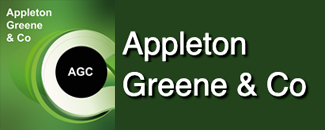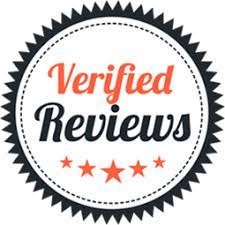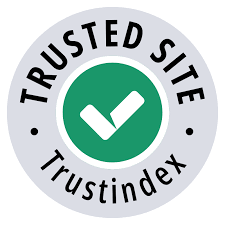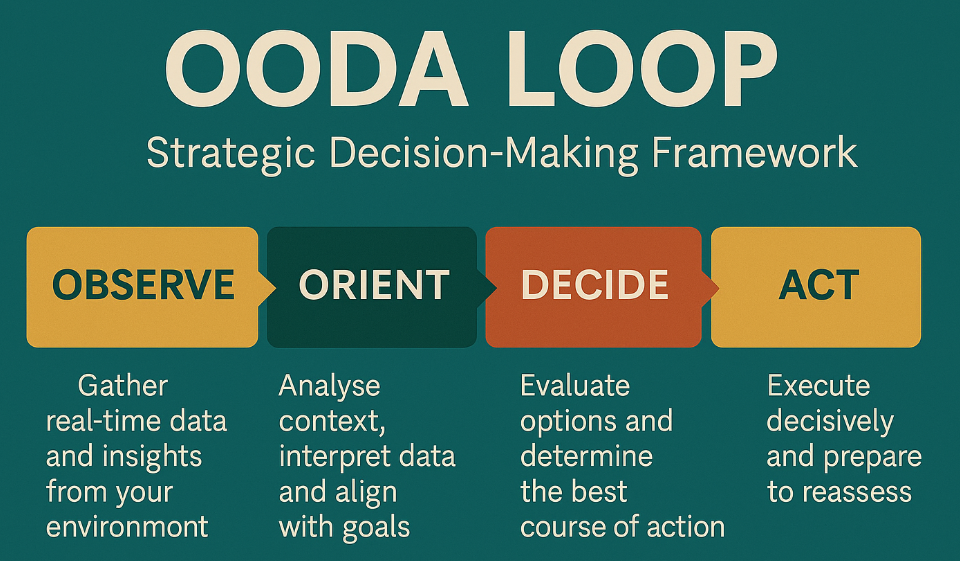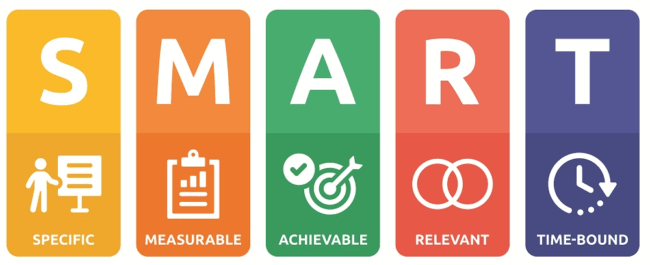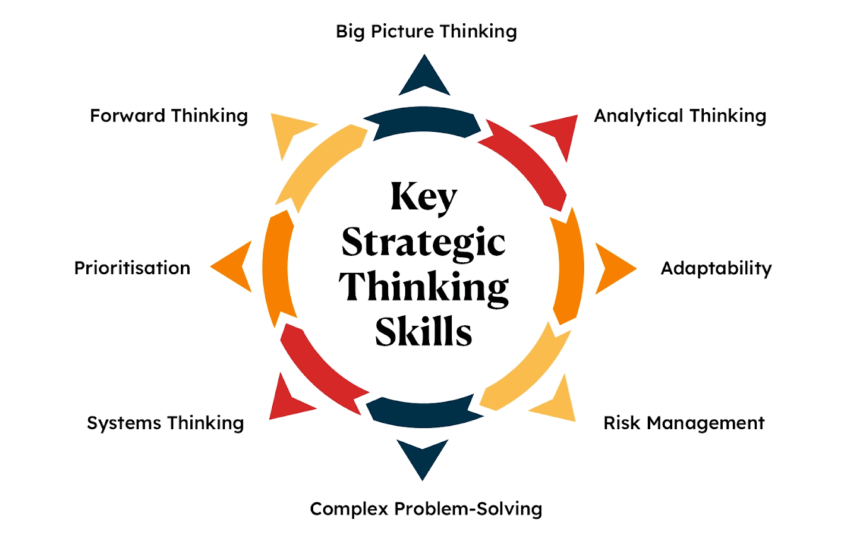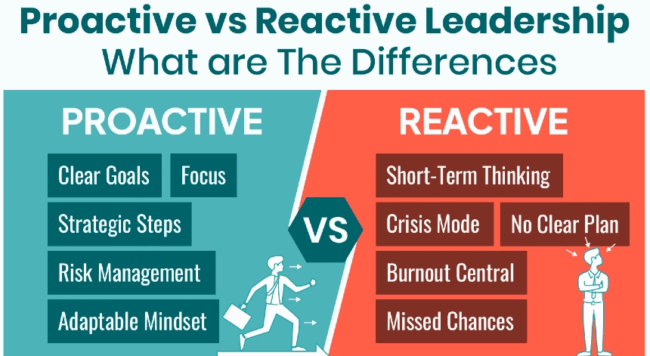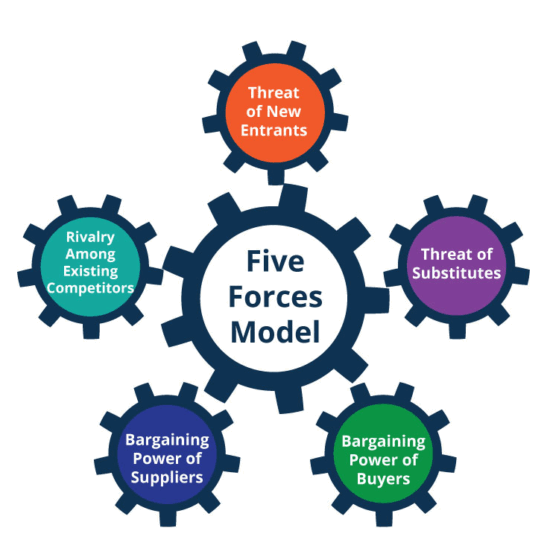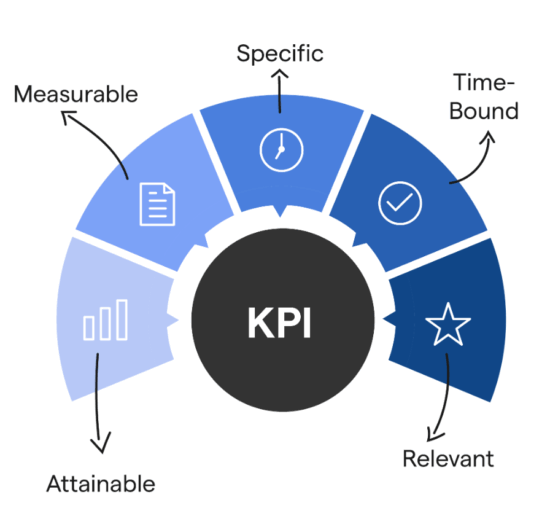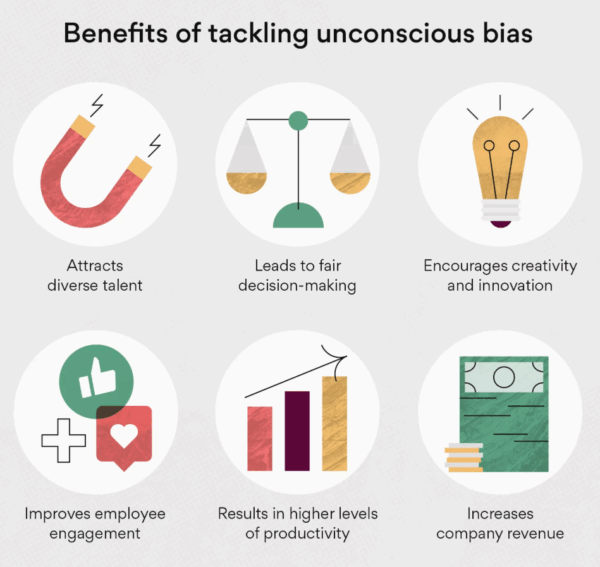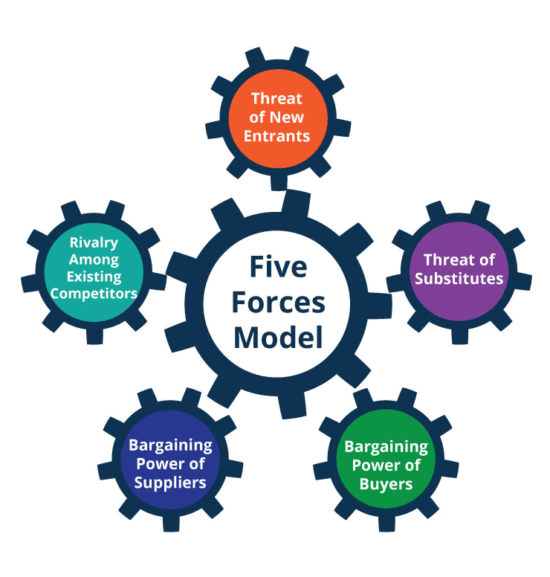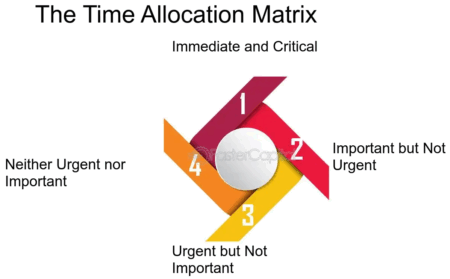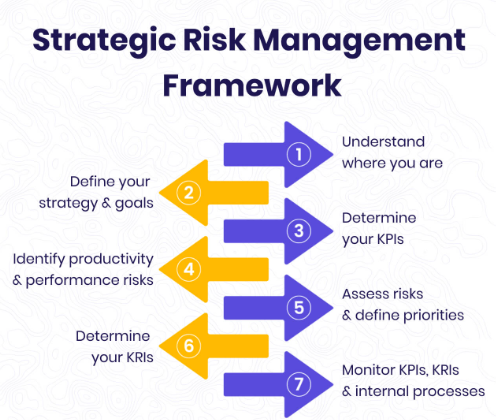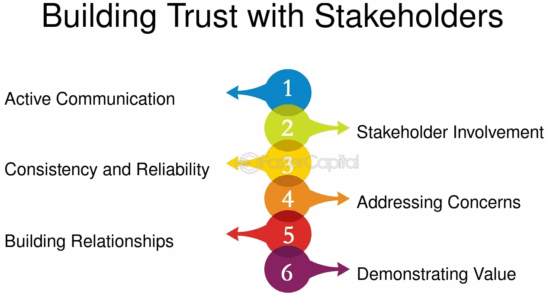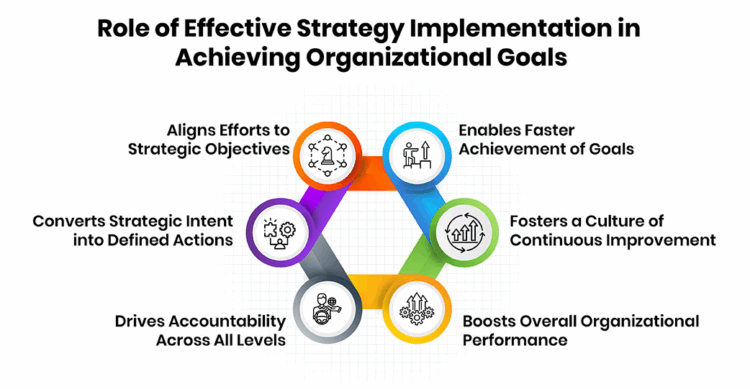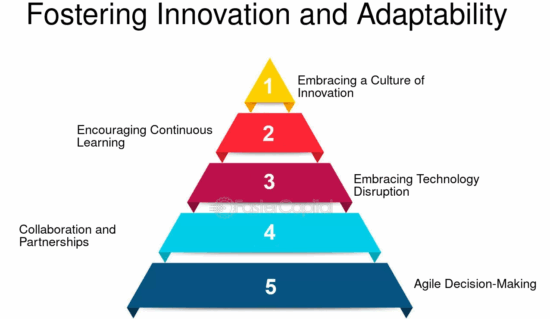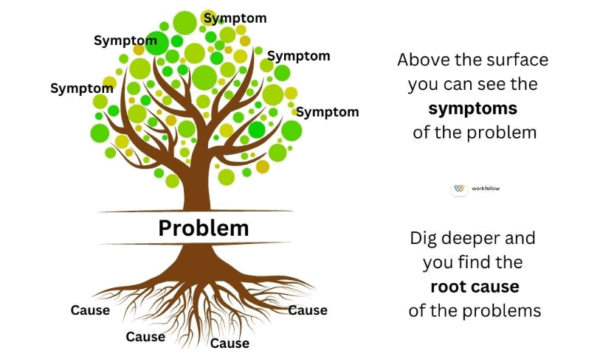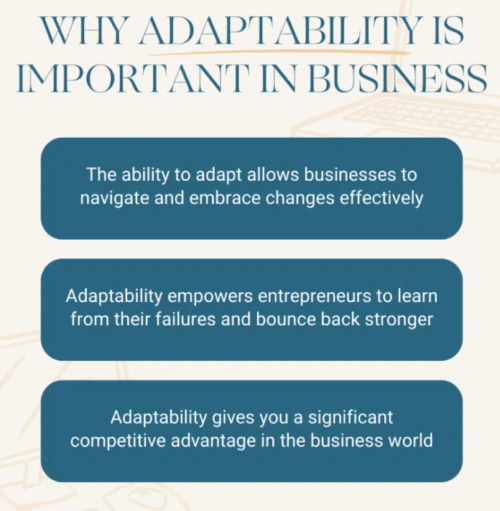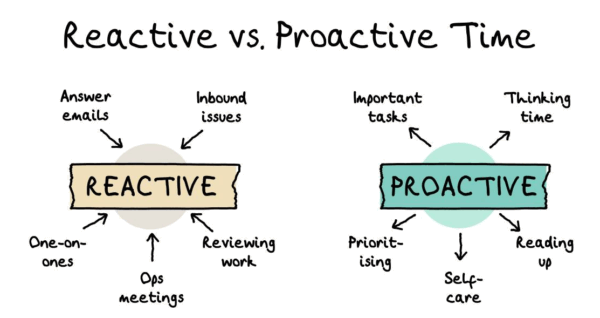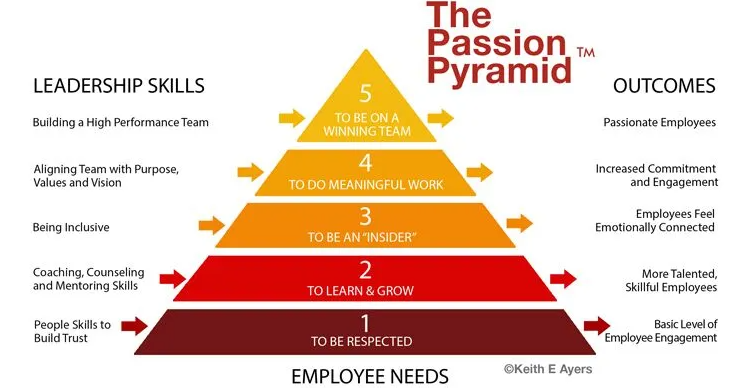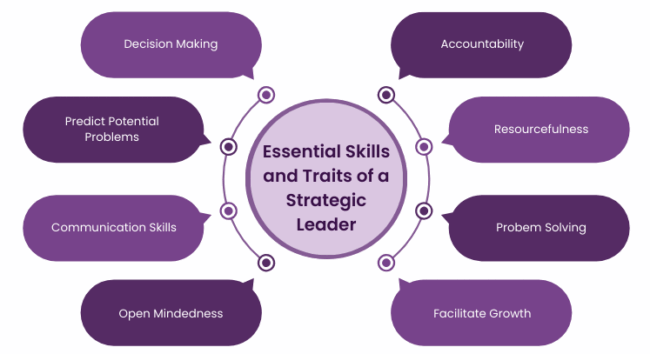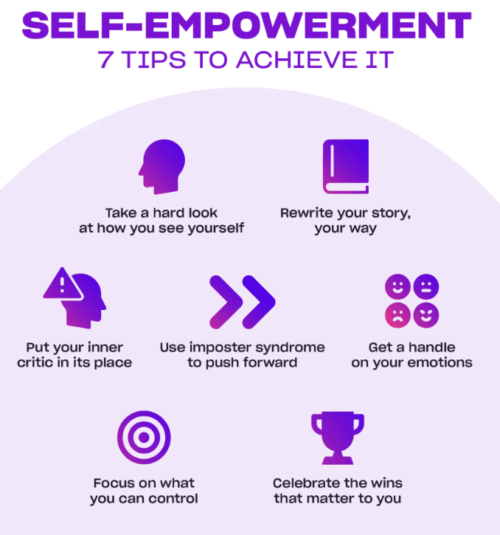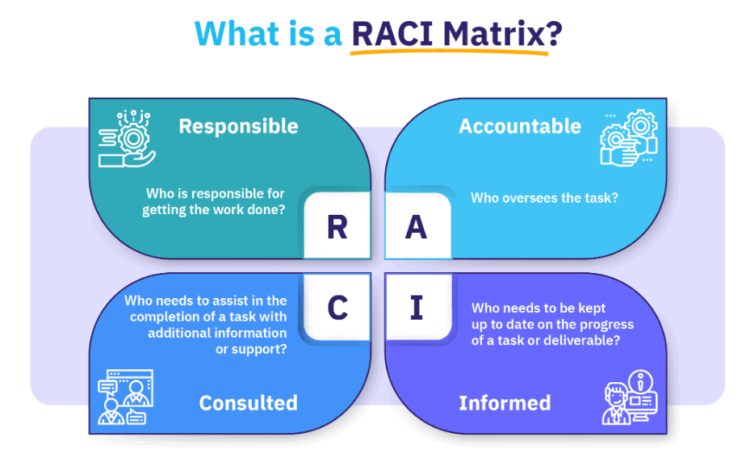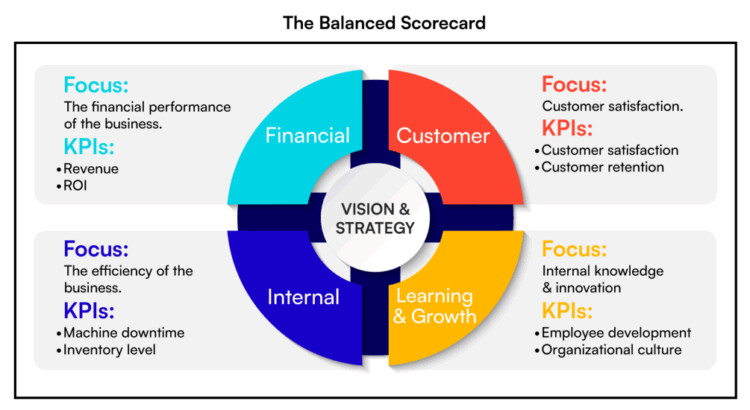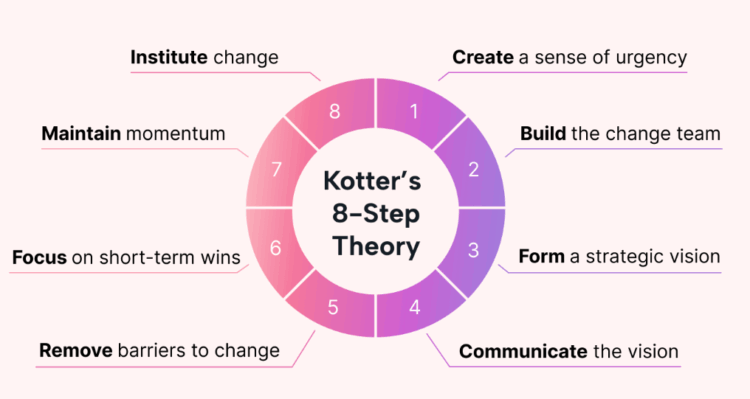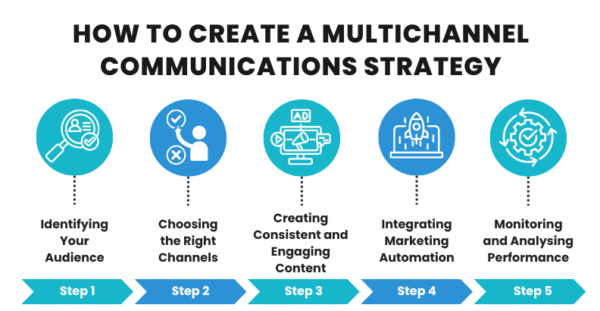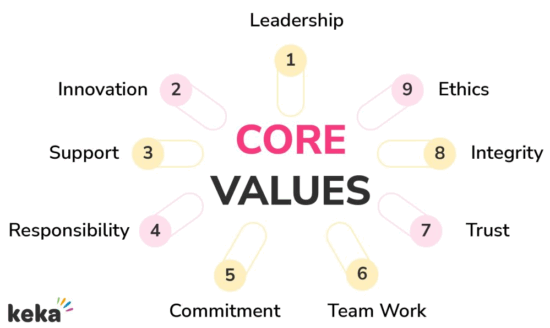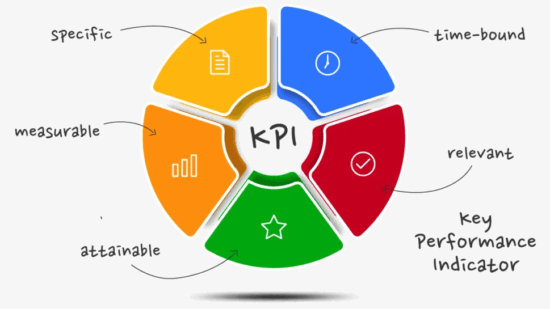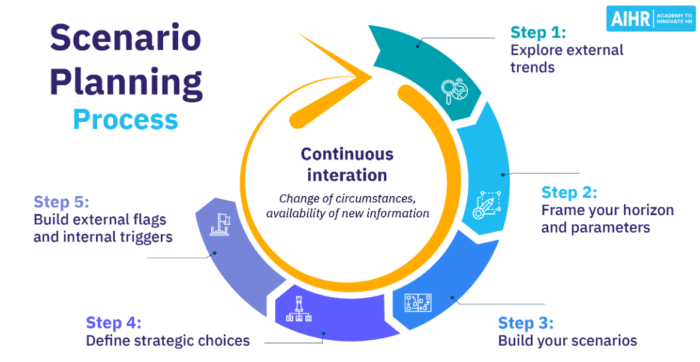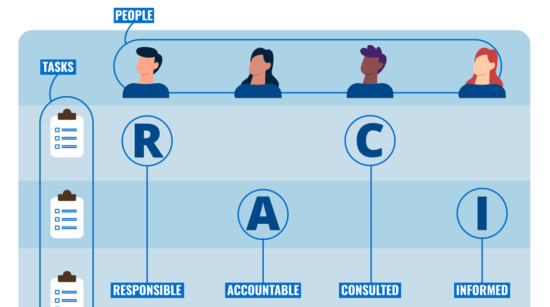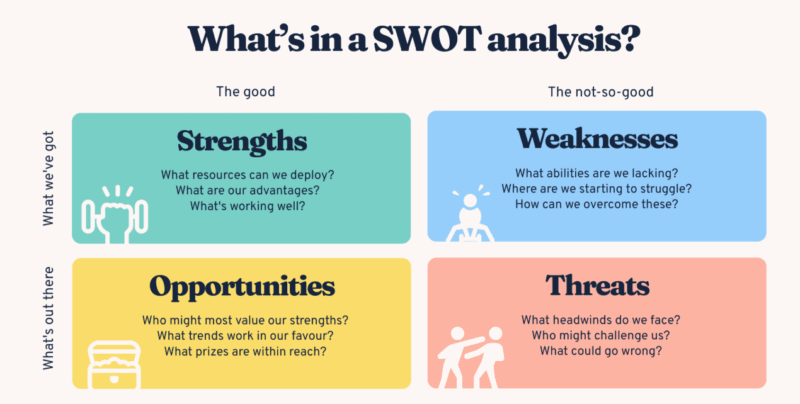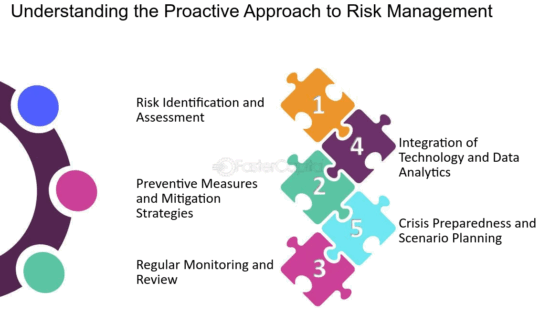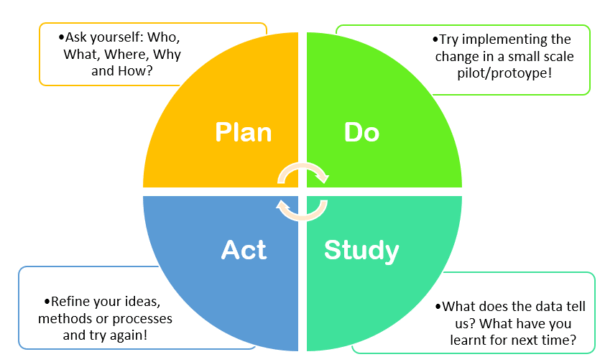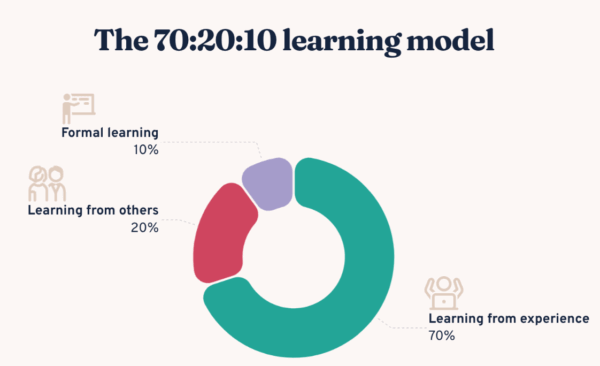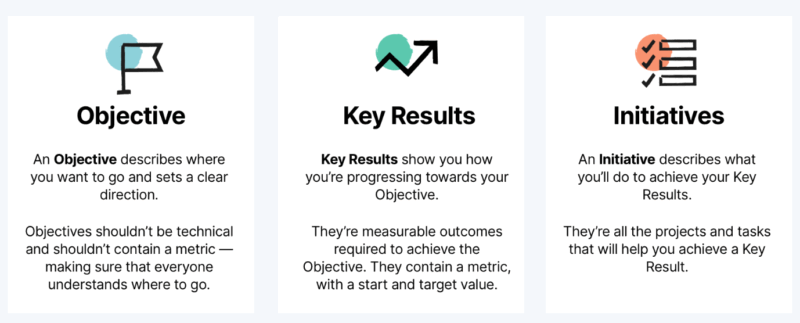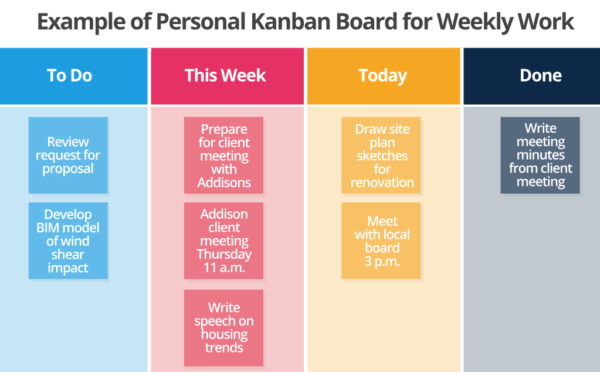Mastering Strategy – Workshop 1 (Strategy Matters)

The Appleton Greene Corporate Training Program (CTP) for Mastering Strategy is provided by Mr. Ward Certified Learning Provider (CLP). Program Specifications: Monthly cost USD$2,500.00; Monthly Workshops 6 hours; Monthly Support 4 hours; Program Duration 22 months; Program orders subject to ongoing availability.
If you would like to view the Client Information Hub (CIH) for this program, please Click Here
Learning Provider Profile

Chris Ward is a is a Certified Learning Provider (CLP) with Appleton Greene and a Certified Management Consultant, a professional consulting designation that is recognized in over 50 countries around the world. He has an MBA from the Rotman School of Management at the University of Toronto.
He has over 35 years of experience in consulting, coaching and line management. He specializes in strategic planning and execution, brand strategy, marketing strategy, and providing general business advice to senior executives. He has extensive experience in executive line management positions in retail, manufacturing, and professional services businesses. He is passionate about working with major corporations, owner-managed companies, and membership organizations to develop strategies for staking out and owning a defensible market position, and earning an unfair share of mind, market and wallet.
He has been directly responsible for the launch of three companies one of which grew through merger and acquisition to be a major player in its segment (electronic security for homes and businesses). He also founded and presided over the rapid growth of a successful custom publishing business that numbered among its clients some of North America’s most successful organizations.
Mr. Ward’s industry experience includes professional services, membership organizations, retail, manufacturing, and education. He has commercial experience in the United States and Canada and specifically in New York, Toronto, Dallas, Los Angeles, and Chicago.
His service skills include strategic planning, workshop and meeting facilitation, market research (including key informant interviews, online surveys, focus groups), and stakeholder communications for both for- and not-for-profit organizations.
He is the author of numerous articles and white papers including The Path to Extraordinary Results. This paper introduces a proven system for laser-focusing leaders and their teams on creating the future they want their business to own… and achieving results that are beyond the ordinary. He coauthored a paper entitled Leadership’s Pivotal Role in the Success & Failure of Essential Strategic Initiatives. This paper highlights lessons in vision, engagement, adaptability and operational excellence that provide leaders with a blueprint for profoundly shaping strategic outcomes.
To enable clients and others to better understand the effectiveness of their current strategic plan and strategic planning process, Mr. Ward developed Your Strategic Number (YSN). YSN assesses the effectiveness of an organization’s existing strategy and strategic planning process by measuring performance in seven key areas. The goal is to uncover issues that could limit the organization’s ability to achieve its longer-term goals and to help decision makers focus their planning on mission-critical areas.
As Entrepreneur In Residence at the Ivey Business School at Western University, Mr. Ward has coached and mentored teams of students engaged in consulting projects with private and public sector organizations. He was a chair and member of The Executive Committee (Vistage), an international network of CEOs focused on improving their leadership abilities and achieving their professional and personal goals. Currently, he is member of the board of directors of a company that invests in uncompromised Good Delivery gold, silver and platinum bullion bars and coins.
MOST Analysis
Mission Statement
Part 1 Month 1 Strategy Matters – In this module, we’ll provide an overview of the Mastering Strategy training program and explore the ways in which strategy benefits organizations and the people who lead them. We’ll review a number of decision-making techniques used throughout the program as well as different methods of reaching consensus on key issues. Using real-life examples, we’ll demonstrate how leaders who understand strategy are better able to anticipate and deal with major business challenges, change direction as circumstances dictate, avoid knee-jerk reactions to disruption, and communicate a vision that their teams buy into and rally around. We’ll showcase several companies in which attention to strategy had a sizable impact on results, including a mid-sized manufacturing firm that transformed its market position by aligning every level of management around a well-defined strategic plan. Using a case study that illustrates the importance of being strategic and a simulation exercise in which you’ll be challenged by a variety of factors including a volatile market, you’ll discover how a firm understanding of strategy and the ability to see the big picture combine to make a significant difference to an organization’s overall success. On a personal level, you’ll see how being strategic differentiates you from others and positions you get ahead in your business and personal lives.
Objectives
01. What Mastering Strategy Is All About: departmental SWOT analysis; strategy research & development. Time Allocated: 1 Month
02. Thinking Strategically: departmental SWOT analysis; strategy research & development. Time Allocated: 1 Month
03. Benefits of a Strategic Approach: departmental SWOT analysis; strategy research & development. Time Allocated: 1 Month
04. Strategic Enablers: departmental SWOT analysis; strategy research & development. Time Allocated: 1 Month
05. The Cost of Bad Strategy: departmental SWOT analysis; strategy research & development. Time Allocated: 1 Month
06. Case Study – Strategy in Action: departmental SWOT analysis; strategy research & development. Time Allocated: 1 Month
07. Strategic Leadership in Practice: departmental SWOT analysis; strategy research & development. 1 Month
08. Core Strategic Tools Overview: departmental SWOT analysis; strategy research & development. Time Allocated: 1 Month
09. Aligning Strategy with Vision and Values: departmental SWOT analysis; strategy research & development. Time Allocated: 1 Month
10. Strategy Simulation Exercise – Market Disruption: departmental SWOT analysis; strategy research & development. Time Allocated: 1 Month
11. Getting It Done: departmental SWOT analysis; strategy research & development. Time Allocated: 1 Month
12. Your Personal Strategic Edge: departmental SWOT analysis; strategy research & development. Time Allocated: 1 Month
Strategies
01. What Mastering Strategy Is All About: Each individual department head to undertake departmental SWOT analysis; strategy research & development.
02. Thinking Strategically: Each individual department head to undertake departmental SWOT analysis; strategy research & development.
03. Benefits of a Strategic Approach: Each individual department head to undertake departmental SWOT analysis; strategy research & development.
04. Strategic Enablers: Each individual department head to undertake departmental SWOT analysis; strategy research & development.
05. The Cost of Bad Strategy: Each individual department head to undertake departmental SWOT analysis; strategy research & development.
06. Case Study – Strategy in Action: Each individual department head to undertake departmental SWOT analysis; strategy research & development.
07. Strategic Leadership in Practice: Each individual department head to undertake departmental SWOT analysis; strategy research & development.
08. Core Strategic Tools Overview: Each individual department head to undertake departmental SWOT analysis; strategy research & development.
09. Aligning Strategy with Vision and Values: Each individual department head to undertake departmental SWOT analysis; strategy research & development.
10. Strategy Simulation Exercise – Market Disruption: Each individual department head to undertake departmental SWOT analysis; strategy research & development.
11. Getting It Done: Each individual department head to undertake departmental SWOT analysis; strategy research & development.
12. Your Personal Strategic Edge: Each individual department head to undertake departmental SWOT analysis; strategy research & development.
Tasks
01. Create a task on your calendar, to be completed within the next month, to analyse What Mastering Strategy Is All About.
02. Create a task on your calendar, to be completed within the next month, to analyse Thinking Strategically.
03. Create a task on your calendar, to be completed within the next month, to analyse Benefits of a Strategic Approach.
04. Create a task on your calendar, to be completed within the next month, to analyse Strategic Enablers.
05. Create a task on your calendar, to be completed within the next month, to analyze The Cost of Bad Strategy.
06. Create a task on your calendar, to be completed within the next month, to analyse Case Study – Strategy in Action.
07. Create a task on your calendar, to be completed within the next month, to analyse Strategic Leadership in Practice.
08. Create a task on your calendar, to be completed within the next month, to analyse Core Strategic Tools Overview.
09. Create a task on your calendar, to be completed within the next month, to analyze Aligning Strategy with Vision and Values.
10. Create a task on your calendar, to be completed within the next month, to analyse Strategy Simulation Exercise – Market Disruption.
11. Create a task on your calendar, to be completed within the next month, to analyse Getting It Done.
12. Create a task on your calendar, to be completed within the next month, to analyse Your Personal Strategic Edge.
Introduction
In today’s complex and competitive environment, strategy serves as both a compass and a framework—guiding organizations through uncertainty, aligning teams behind shared objectives, and helping leaders make thoughtful, impactful decisions. The term “strategy” often conjures images of long meetings and PowerPoint decks, but in its most vital form, strategy is about clarity, direction, and action. It defines where an organization is headed, how it plans to get there, and what choices it will make along the way.
Strategy matters because it empowers organizations to move from reactionary to intentional behavior. Rather than simply responding to changes in the marketplace or internal disruptions, strategically minded organizations proactively shape their futures. They assess where they are, identify where they want to be, and determine how to bridge that gap. This clarity enables better use of resources, more confident decision-making, and greater adaptability.
Moreover, strategy is not limited to corporate headquarters or executive boardrooms. It must be understood and embraced at all levels of the organization. Managers, team leads, and individual contributors each play a role in executing strategy and understanding its significance allows them to better align their actions to broader business goals.
The Mastering Strategy program begins with this foundational principle: strategy is essential not only for achieving organizational success but also for building capable and forward-thinking leaders. This module explores the concept of strategy from the ground up, offering tools, frameworks, and real-world perspectives that demonstrate why strategic thinking is a differentiator in both professional and personal contexts.

Strategic Thinking as a Leadership Advantage
Strategic thinking is a defining trait of effective leadership. It elevates decision-making beyond immediate operational concerns and enables leaders to connect daily actions to long-term ambitions. While some leaders are skilled at managing the present—focusing on execution, performance targets, and short-term gains—those who think strategically take a broader, more dynamic view. They do not merely respond to what is happening; they actively anticipate what might happen next.
At its core, strategic thinking involves disciplined reflection and foresight. It requires leaders to step outside of day-to-day pressures and examine the bigger picture—asking questions like: What trends are emerging in our industry? What assumptions are we making about the future? What are our blind spots? By seeking answers to these types of questions, strategic leaders develop a clearer understanding of the environment in which they operate and the variables that could shape future outcomes.
This mindset influences how leaders allocate limited resources. Rather than spreading efforts thinly across many initiatives, strategic leaders prioritize areas with the greatest potential return. They are more likely to invest in innovation, develop key talent, or build infrastructure that supports long-term scalability. They think in terms of systems—understanding how one decision reverberates across departments, customer touchpoints, supply chains, and financial outcomes.
Another critical element of strategic thinking is pattern recognition. Leaders who excel in strategy are constantly scanning for signals—both internal and external. They detect weak signals before they become disruptive forces, identify opportunities that others overlook, and connect seemingly unrelated events into actionable insights. This ability to spot patterns and connect dots gives them a competitive edge, particularly in environments marked by rapid change.
When disruption does occur—whether from technology shifts, economic downturns, or competitive threats—strategic thinkers maintain composure. Their strength lies in pausing to assess the full context before choosing a path forward. They do not jump into action blindly or default to what worked in the past. Instead, they consult data, test assumptions, seek diverse perspectives, and carefully weigh the trade-offs of each option. This measured approach fosters better risk management and leads to more resilient decision-making.
Agility is also a hallmark of strategic leaders. While they commit to a direction, they remain flexible in how they pursue it. They treat strategy as a living framework rather than a rigid plan. If external conditions shift or new insights emerge, they are prepared to pivot without losing sight of the overarching goals. This blend of clarity and adaptability allows them to course-correct without undermining confidence or cohesion within the organization.
Critically, strategic thinking is not the sole domain of C-suite executives or boardrooms. It can and should be developed at every level of the organization. Managers, team leads, and frontline staff all benefit from cultivating a strategic lens. Employees who understand how their work contributes to the organization’s long-term strategy are more engaged, more innovative, and more likely to contribute meaningfully to business success. They become proactive problem-solvers rather than reactive task-performers.
Furthermore, strategic thinking builds influence and visibility. Individuals who bring forward long-term perspectives, who offer data-informed suggestions, and who demonstrate an understanding of the broader business environment are often trusted with greater responsibility. On a personal level, developing a strategic mindset can be a key differentiator—positioning individuals for leadership roles, cross-functional projects, and career advancement.
In practice, strategic thinking involves both mindset and method. It combines curiosity, analysis, creativity, and discipline. This course introduces several key frameworks designed to support the development of strategic capabilities:
• SWOT Analysis helps identify internal strengths and weaknesses alongside external opportunities and threats, providing a structured view of the organization’s strategic position.
• PESTLE Analysis examines the broader macro-environmental factors—political, economic, social, technological, legal, and environmental—that influence long-term planning.
• Scenario Planning equips leaders to explore multiple plausible futures, preparing for a range of possibilities rather than relying on a single forecast.
• Systems Thinking enables a holistic view of how different elements interact within an organization, emphasizing cause-and-effect relationships and feedback loops.
These tools are not meant to replace judgment but to sharpen it. They provide scaffolding for deeper insight and allow leaders to approach complex challenges with confidence and clarity. By applying these methods throughout the course, participants will learn to break down complexity, surface hidden variables, and consider both immediate and downstream implications of their decisions.
Ultimately, strategic thinking is what allows leaders to connect today’s actions with tomorrow’s vision. It is the difference between managing a business and shaping its future. In a world where change is constant and uncertainty is the norm, this capability is not just valuable—it is essential.

Decision-Making and Consensus Building
Effective strategy is inseparable from the ability to make sound decisions. Strategic decision-making is not simply about choosing the most obvious option or following standard procedures—it is about navigating complexity, assessing risk, balancing competing interests, and committing to a direction with confidence, even when uncertainty is high. The most consequential decisions often present no clear-cut answers. Instead, they demand judgment, foresight, and a structured approach that considers both tangible and intangible factors.
In a business landscape characterized by constant change and limited visibility, leaders are frequently required to make decisions with incomplete information. These decisions may involve trade-offs between growth and stability, innovation and cost, or long-term investments versus short-term performance. The quality of these choices can determine whether an organization adapts and thrives—or stagnates and declines.
Strategic decision-making requires both rational analysis and human insight. While data plays a critical role in informing decisions, it must be interpreted within context. Numbers alone rarely provide all the answers. Leaders must evaluate not only what the data says, but what it means—and what might be missing from the picture. The best decisions integrate logic with experience, analysis with intuition, and stakeholder input with executive vision.
This module introduces several structured decision-making models designed to help reduce ambiguity, limit cognitive biases, and improve the overall quality of strategic choices:
• Decision Trees allow leaders to map out options visually, assess possible outcomes, and calculate the expected value of each path. This helps clarify the sequence and consequences of choices, especially in multi-step decisions.
• Cost-Benefit Analysis evaluates the relative financial and non-financial gains and costs of different courses of action, making it easier to compare alternatives objectively.
• Risk-Impact Matrices provide a systematic way to categorize potential risks based on their probability and impact, helping leaders identify where to focus attention and resources.
• The OODA Loop (Observe, Orient, Decide, Act) supports rapid decision-making in dynamic environments by emphasizing continuous learning and adaptability through a recurring feedback loop.
By using these tools, leaders and teams can bring clarity to complex issues, challenge assumptions, and mitigate the influence of personal bias or groupthink. They create a shared language for decision-making and ensure that strategic choices are grounded in logic and evidence rather than gut instinct alone.
However, decision-making in an organizational context rarely happens in isolation. Major strategic decisions often involve multiple stakeholders across different departments, each with their own perspectives, incentives, and concerns. For a strategy to succeed, it must be embraced—not just endorsed—by those responsible for implementing it. This is where consensus building becomes critical.
Consensus building is the art of generating shared commitment to a decision, even when not everyone agrees on every detail. It is not about achieving unanimous agreement; rather, it is about fostering a collective willingness to support and execute a chosen course of action. When done effectively, consensus enhances buy-in, improves coordination, and reduces resistance during implementation.
Building consensus requires a specific set of leadership skills:
• Emotional intelligence to understand and manage the dynamics of interpersonal relationships, recognize resistance, and respond to the emotional undercurrents of strategic conversations.
• Clear communication to ensure that all participants understand the rationale behind each option, the criteria for evaluation, and the implications of various choices.
• Facilitation ability to create space for diverse viewpoints, resolve conflicting opinions, and guide groups toward constructive outcomes.
Leaders must also be comfortable with ambiguity. There will be times when the data points in one direction, but collective wisdom suggests another. In these cases, leaders must weigh evidence against judgment, recognizing that the best path may not always be the most immediately obvious one. In high-stakes decisions, leaders often operate in the “gray zone”—where multiple valid perspectives exist, and trade-offs are inevitable.
To support this aspect of leadership, the course introduces consensus-building frameworks that encourage inclusivity, structure, and transparency:
• The Delphi Method, which gathers and refines expert opinion through multiple rounds of anonymous input and feedback, helping to reduce the influence of dominant personalities and encourage diverse insights.
• The Nominal Group Technique, a structured process that balances individual idea generation with group evaluation, allowing quieter voices to be heard and creating a more democratic decision-making environment.
• Participatory Planning, which brings key stakeholders into the process from the beginning, fostering a sense of ownership and reducing resistance to outcomes by making everyone part of the solution.
Each of these techniques promotes collaborative decision-making while maintaining strategic discipline. They help avoid the pitfalls of either autocratic control (where decisions are made without input and fail to gain traction) or endless deliberation (where no decision ever gets made).
In today’s environment, where change is rapid, resources are limited, and accountability is high, the ability to make well-reasoned decisions and build collective support behind them is a powerful differentiator. Organizations that can consistently align their people around bold, yet thoughtful, strategic choices are better positioned to adapt, compete and lead.

Navigating Challenges Through Strategy
Every organization, regardless of size or sector, will face challenges—some internal, such as restructuring or talent shortages, and others external, like market disruptions, regulatory shifts, or economic downturns. What sets resilient organizations apart is not the absence of difficulties, but the presence of a strategic mindset that allows them to respond with purpose rather than panic.
Strategy provides a structured way to understand challenges in their full context. Rather than reacting impulsively, strategic leaders take a step back to examine the broader environment, identify root causes, and assess potential ripple effects of each decision. This kind of thinking reduces the likelihood of short-sighted actions that fix one issue but create others. It also enables organizations to stay grounded in their long-term goals, even in the face of uncertainty.
For example, during times of financial strain, some companies resort to blanket cost-cutting measures that may erode employee morale or compromise innovation. Strategic organizations, by contrast, make targeted decisions—investing in areas that will yield the greatest long-term return, such as customer retention, operational improvements, or digital transformation. In doing so, they protect their core value proposition and preserve future competitiveness.
To support this approach, the module introduces practical tools for diagnosing and addressing complex challenges. These include the Five Whys technique for identifying root causes, the McKinsey 7S model for evaluating organizational alignment, and the Theory of Constraints for finding and resolving bottlenecks. Participants will also explore risk-assessment tools and learn how to develop contingency plans that improve agility and readiness.
Ultimately, strategy acts as a buffer in uncertain times. It helps leaders pause, assess, and decide based on a clear understanding of their environment and priorities. With a flexible but focused strategic framework in place, even disruptive events can be transformed into opportunities for renewal, innovation, and growth.
Vision, Alignment, and Execution
A compelling vision is the north star of any successful strategy. It crystallises why the organisation exists, where it is headed, and how it intends to win. More than a slogan, an effective vision is concise enough to remember, vivid enough to imagine, and ambitious enough to stretch current capabilities. When leaders articulate such a vision—rooted in purpose and reinforced by data—it sparks intrinsic motivation, guides resource allocation, and anchors decision-making during turbulence.
Yet inspiration alone is insufficient; the vision must migrate from slides to shop floor. Alignment is the bridge. In practice, alignment means translating high-level aspirations into concrete, tiered objectives that every business unit, team, and individual can own. Three principles underpin effective alignment:
1. Strategic Cascading: Senior leaders first convert the vision into 3- to 5-year strategic priorities. These in turn cascade to annual objectives (e.g., OKRs or SMART goals) that departments refine into quarterly targets and weekly tasks.
2. Shared Metrics: Balanced scorecards or KPI dashboards ensure that each level tracks both leading (predictive) and lagging (outcome) indicators. Common measures reduce siloed optimisation and keep cross-functional teams rowing in the same direction.
3. Governance and Dialogue: Regular review cadences—monthly business reviews, quarterly strategy sprints, and semi-annual off-sites—create forums where leaders test assumptions, surface interdependencies, and recalibrate when external signals shift.
Even with alignment, many strategies unravel during execution. Execution is the disciplined conversion of intent into measurable results. Common pitfalls include too many priorities, unclear ownership, resource bottlenecks, and weak feedback loops. High-execution organisations counter these hazards through four levers:
• Focus & Sequencing: Ruthlessly limiting major initiatives and mapping their critical-path dependencies prevents teams from overcommitting and spreading talent too thin.
• Resource Fluidity: Budgets, talent, and technology are continually reallocated to initiatives that demonstrate traction, using stage-gate or portfolio-management techniques.
• Transparent Accountability: RACI matrices, performance contracts, and digital project boards clarify “who owns what by when,” leaving little room for ambiguity.
• Learning Rhythms: Weekly stand-ups, after-action reviews, and real-time analytics create short feedback cycles that flag risks early and celebrate quick wins, reinforcing momentum.
Leadership communication acts as connective tissue across vision, alignment, and execution. Storytelling, town-hall Q&As, and two-way digital platforms keep the vision alive, cascade context behind key decisions, and surface ground-level insights. Skilled communicators tailor their message to different stakeholder groups—translating strategy into customer value for frontline staff, risk-reward trade-offs for finance teams, and growth narratives for investors.
Vision, alignment, and execution function as a strategic triad. Vision charts the destination, alignment ensures every oar stroke propels the same boat, and execution converts collective effort into measurable progress. Mastering all three transforms strategy from an annual planning ritual into a living system that continually learns, adapts, and delivers.

Case Study: LEGO Group – The Classic Turnaround
Facing near bankruptcy in the early 2000s, LEGO was burdened by over-diversification—venturing into theme parks, video games, and unprofitable toy lines. In 2003, under new leadership from CEO Jørgen Vig Knudstorp, LEGO re-centered on its core brick-building business. The company:
• Streamlined operations by cutting SKUs, reducing workforce, and divesting non-core assets like Legoland parks
• Refocused innovation on product lines that reinforced the “system of play” philosophy, ensuring designs were both creative and commercially viable
• Rebuilt organization around disciplined processes, agility, and governance, and engaged consumers via platforms like Cuusoo
By 2005, LEGO returned to profitability, and by 2015 it had become the world’s largest toy manufacturer by revenue.
Ongoing success continues—LEGO achieved a 13 % revenue increase in H1 2024, demonstrating resilience even in inflationary contexts by expanding appeal to “kidults,” launching LEGO Icons sets, films, and digital partnerships.
Key Lessons:
• A sharp focus on core strengths restores purpose and integrity.
• Cost discipline must be paired with selective innovation.
• Consumer co creation and agile processes are powerful catalysts for sustained success.

Case Study: Strategic Vision and Agility in Crisis – Starbucks’ Reinvention
In the mid-2000s, Starbucks experienced a decline in customer traffic and brand loyalty. Rapid expansion had diluted the customer experience, and the company faced criticism for losing its original charm. Financial performance was underwhelming, and shareholder confidence was eroding.
Howard Schultz, Starbucks’ former CEO, returned to lead the company and implemented a bold strategic reinvention. His first step was to close over 7,000 stores for a day to retrain baristas on the art of coffee making—signaling a return to core values. Schultz also commissioned a strategic review, which led to a renewed focus on quality, customer connection, and digital innovation.
New initiatives included the introduction of mobile ordering, loyalty programs, and enhanced in-store experiences. Strategic partnerships were formed with music providers, payment platforms, and local communities. Importantly, the company prioritized agility—rapidly piloting new concepts and gathering real-time customer feedback.
Within three years, Starbucks saw a resurgence in brand strength, restored profitability, and regained its position as a global leader in premium coffee. The turnaround demonstrated the power of combining strategic clarity with cultural alignment and adaptability.
Executive Summary
Chapter 1: What Mastering Strategy Is All About
Strategy is often misunderstood—seen either as a set of lofty goals disconnected from day-to-day operations or as an overly complex exercise reserved for academics and consultants. In reality, effective strategy strikes a balance between clarity and depth. It requires a broad understanding of the organization’s context, a firm grasp of its priorities, and a structured path toward long-term success.
This first part of the course introduces the foundational ideas that underpin the entire Mastering Strategy program. It presents strategy as both an intellectual process and a practical tool—grounded in real-world business pressures but informed by thoughtful planning and foresight. It highlights how strategic thinking involves more than choosing between options; it is about recognizing patterns, aligning decisions with future outcomes, and maintaining focus in the face of complexity and change.
The content outlines key themes that will be explored throughout the course, including decision-making, alignment, execution, and the value of strategic adaptability. It emphasizes the importance of developing a strategy that not only reflects current market conditions and internal capabilities but also positions the organization to thrive in future scenarios.
Participants will examine what it means to think and lead strategically, with particular focus on how to translate vision into actionable goals. The section challenges oversimplified views that reduce strategy to a quick decision or a single annual planning exercise. At the same time, it cuts through the noise that can make strategy appear inaccessible or overly theoretical.
To support engagement and reflection, this part of the course includes a brief quiz designed to surface participants’ initial assumptions and awareness around strategic planning. The exercise encourages self-assessment and sets the stage for deeper learning as the course progresses.
Overall, this manual lays the groundwork for a practical, experience-driven approach to mastering strategy. It introduces core principles and recurring themes that will be developed in greater detail in the sections that follow, offering a clear and structured foundation for strategic thinking and implementation.

Chapter 2: Thinking Strategically
Strategic thinking is a distinct and essential skill that shapes how organizations navigate uncertainty and pursue long-term goals. Unlike tactical or operational thinking, which tends to focus on immediate tasks and short-term outcomes, strategic thinking takes a broader view. It considers context, anticipates future trends, and connects today’s decisions to tomorrow’s opportunities and risks.
This part of the course explores the characteristics and discipline of thinking strategically. It examines how effective strategic thinkers identify patterns, challenge assumptions, and make sense of complex, often ambiguous information. It also highlights the importance of systems thinking—understanding how various parts of the organization interact and how decisions made in one area affect outcomes in another.
The manual will distinguish strategic thinking from routine planning or reactive problem-solving. It highlights the value of long-term orientation, scenario analysis, and purposeful reflection. It will also introduce key tools and frameworks that support strategic thought, including environmental scanning, risk mapping, and goal alignment.
By understanding the mindset and methods associated with strategic thinking, organizations are better equipped to make resilient choices. Whether responding to disruption or setting a course for innovation, strategic thinkers offer insight that helps guide teams through uncertainty while staying focused on the big picture.
This section builds on the program’s introduction by emphasizing that strategy is not just a formal process—it is a way of seeing, interpreting, and responding to the world. Through this lens, strategic thinking becomes a practical leadership capability with real impact on decision-making, alignment, and long-term success.
Chapter 3: Benefits of a Strategic Approach
Adopting a strategic approach offers both immediate and lasting value to organizations and individuals alike. It creates a foundation for proactive decision-making, focused execution, and long-term resilience. When strategy becomes part of the organizational mindset—not just a once-a-year planning exercise—it begins to shape culture, guide priorities, and enhance overall performance.
This section explores the wide-ranging benefits of strategic thinking and planning. On a practical level, a well-developed strategy helps clarify direction, align resources, and coordinate cross-functional efforts. It provides a framework for setting priorities, managing risk, and measuring progress. By embedding strategy into everyday operations, teams operate with greater focus and consistency, reducing wasted effort and increasing productivity.
The intangible benefits are equally significant. A shared strategic vision fosters unity and motivation across departments and leadership levels. It helps build confidence during periods of uncertainty, offering a clear sense of purpose and direction. Individuals who operate with a strategic mindset are more likely to identify opportunities, influence others effectively, and contribute to sustainable growth.
This part of the course also explores the role of collective ownership in strategy development. Broad support for a strategic plan improves buy-in and accountability, making implementation more effective. When stakeholders feel heard and involved, they are more committed to shared outcomes and more responsive to changing circumstances.
Additionally, the content reflects on how strategy can elevate leadership. Leaders who consistently apply a strategic lens tend to communicate more clearly, adapt more effectively, and build stronger teams. These traits not only benefit organizational performance but also support individual career development and influence.
By highlighting both the tangible outcomes and the cultural value of a strategic approach, this section underscores the broader purpose of strategy: to unify, guide, and enable individuals and organizations to thrive in dynamic environments.

Chapter 4: Strategic Enablers
The success of any strategic planning effort depends not only on having a clear vision and solid objectives but also on recognizing and managing the factors that can enable—or derail—execution. These factors, often referred to as strategic enablers and disruptors, play a critical role in shaping the outcome of strategic initiatives.
This part of the course focuses on identifying both internal and external elements that influence the effectiveness of strategic plans. Strategic enablers are the systems, structures, people, and processes that support alignment, execution, and adaptability. These may include leadership commitment, cross-functional collaboration, access to accurate data, organizational culture, and the ability to learn and adjust in real time.
Equally important is the identification of potential disruptors—factors that can undermine strategic progress if not addressed early. These might include misaligned incentives, resource constraints, poor communication, rigid hierarchies, or shifting market conditions. Left unchecked, such disruptors can stall momentum, create confusion, and weaken confidence in the overall strategy.
This section explores practical methods for evaluating these enabling and limiting factors during the planning phase. Tools such as readiness assessments, risk impact matrices, and stakeholder mapping are introduced to help organizations anticipate obstacles and proactively design responses. The content also highlights how successful organizations build resilience by embedding contingency planning, feedback loops, and scenario thinking into their strategy process.
A key theme is the importance of strategic self-awareness—understanding where the organization is strong, where it is vulnerable, and how those realities affect the likelihood of strategic success. By taking a proactive stance, organizations are better equipped to reinforce enablers and neutralize disruptors before they become barriers.
Ultimately, this part of the course underscores that strategy is not created in a vacuum. It must be supported by the right conditions and continuously monitored for signs of risk. Recognizing and leveraging strategic enablers is essential for turning plans into outcomes and maintaining focus and agility throughout the execution journey.

Chapter 5: The Cost of Bad Strategy
Poorly conceived or poorly executed strategy can carry a steep price—lost market share, squandered resources, reputational damage, and ultimately, organizational decline. This part of the course examines emblematic failures where reactive decision-making and a lack of strategic foresight set the stage for costly outcomes, distilling lessons that underscore the value of disciplined strategic thinking.
Through guided analysis and structured discussion, participants will explore common patterns found in strategic failures—such as misalignment between goals and actions, resistance to change, poor risk anticipation, and breakdowns in communication and execution. The course uses these themes to highlight the importance of having a strong strategic foundation, supported by disciplined planning and leadership alignment.
Participants will be presented with real-world case material that has been selected not simply to illustrate failure, but to extract meaningful lessons about what could have been done differently. The objective is to encourage critical thinking and to promote reflection on how similar pitfalls might be avoided in other organizational contexts.
Interactive components in this part of the course will support active engagement, including facilitated group discussions, guided debriefs, and targeted reflection exercises. These activities are designed to help participants recognize early warning signs of strategic breakdowns and consider how alternative approaches could have resulted in more positive outcomes.
By the end of this section, participants will have a clearer understanding of how the absence of strategic clarity or execution discipline can lead to costly missteps. The content serves to reinforce the value of applying the frameworks and tools introduced earlier in the course and prepares participants to approach future decisions with a more critical, strategic lens.

Chapter 6: Case Study – Strategy in Action
This part of the executive summary previews a practical case analysis that illustrates how strategic alignment across all management levels can transform a mid-sized manufacturing enterprise. The forthcoming manual will trace a company’s journey from stagnant performance to renewed competitiveness, using the narrative to demonstrate how concepts introduced earlier—vision, alignment, execution, and strategic enablers—translate into day-to-day leadership behaviour and measurable results.
The analysis begins by outlining the firm’s initial conditions: fragmented priorities, siloed decision-making, and eroding market share. Against this backdrop, senior leadership articulates a unifying strategic vision centred on product innovation and operational excellence. Attention then shifts to the cascading process that converts this vision into tiered objectives. Functional leaders translate enterprise goals into department-level targets, while front-line supervisors link individual KPIs to broader outcomes. Throughout, the manual highlights governance mechanisms—balanced scorecards, cross-functional councils, and structured feedback loops—that sustain alignment and foster accountability.
Key success factors receive focused treatment. Leadership commitment emerges as the catalyst that sets clear expectations and allocates resources to strategic priorities. Transparent communication ensures that employees understand how their roles contribute to high-level objectives, reinforcing purpose and reducing resistance to change. Data-driven decision routines, such as weekly operating reviews and quarterly strategy sprints, create short feedback cycles that surface issues early and enable agile course corrections. Continuous-improvement disciplines—including lean methodologies and root-cause analysis—help embed strategic thinking into daily operations, turning incremental gains into sustainable advantage.
The forthcoming case study also examines cultural shifts. By linking rewards to strategic milestones and celebrating quick wins, the company cultivates a performance-oriented mindset that values collaboration over departmental turf. Managers sharpen strategic acumen through targeted training, while cross-training initiatives break down functional barriers and promote knowledge sharing. These behavioural changes prove instrumental in sustaining momentum once the initial transformation phase concludes.
Outcomes are evaluated through both quantitative and qualitative lenses. Metrics such as market share growth, margin expansion, order-to-delivery cycle time, and employee engagement scores demonstrate tangible improvements. Just as important are intangible gains: heightened customer trust, stronger supplier partnerships, and a culture that treats strategy as a living process rather than a static document.
By weaving these elements together, the manual will show how disciplined alignment can reposition a mid-sized manufacturer in a competitive landscape. The case provides a concrete reference point for subsequent course materials, reinforcing the central message that cohesive strategy—backed by consistent leadership behaviours and robust execution systems—can yield outsized impact even in resource-constrained settings.

Chapter 7: Strategic Leadership in Practice
Strategic leadership bridges the gap between aspirational vision and day-to-day execution. This manual examines how effective leaders craft a coherent narrative, convert that narrative into actionable priorities, and mobilise people to pursue those priorities with clarity and commitment. At the centre is the leader’s ability to balance long-range foresight with operational discipline—seeing the organisation as an interconnected system while managing immediate constraints.
The content first traces the pathway from vision to strategy. It explores the decision logic leaders apply when translating a broad ambition into direction-setting choices about markets, capabilities, and resource allocation. Emphasis is placed on clarifying “where to play” and “how to win”—decisions that guide investment, talent deployment, and partnership selection. From there, the manual investigates the mechanics of turning strategy into action: setting cascading objectives, defining lead and lag indicators, and instituting governance routines that keep strategic themes visible amid daily pressures.
Several leadership traits emerge as differentiators of high impact. Systems thinking enables leaders to anticipate second-order effects and avoid silo-optimised decisions. Courageous communication—the willingness to state unpopular truths and challenge entrenched assumptions—creates the psychological safety needed for candid debate and innovation. Adaptive learning equips leaders to pivot strategy when feedback or external shifts render initial assumptions obsolete. Empathy and influence allow leaders to tailor messages to varied stakeholder concerns, turning potential resistance into constructive engagement.
A dedicated section analyses how leaders secure buy-in for strategic decisions. Techniques include framing choices around shared values and long-term benefits, co-creating milestones with cross-functional teams, and using storytelling to connect strategic intent with personal meaning. Case vignettes highlight moments when stakeholder alignment hinged less on formal authority and more on credibility, transparency, and the demonstration of quick wins.
The manual also delves into the structural levers that reinforce strategic leadership: leadership scorecards linked to strategy, incentive schemes that reward cross-unit collaboration, and developmental pathways that build strategic capability across management tiers. By institutionalising these levers, organisations reduce dependency on a single visionary and cultivate a bench of leaders equipped to think and act strategically.
Finally, the material synthesises behavioural research and real-world examples to show how strategic leaders navigate paradoxes—pursuing efficiency and innovation, stability and change, short-term performance and long-term growth. Through this exploration, the manual illustrates that strategic leadership is less about heroic decision-making and more about orchestrating an environment where vision, alignment, and disciplined execution continuously reinforce one another.

Chapter 8: Core Strategic Tools Overview
Strategic thinking and execution are strengthened by the use of structured tools that help clarify choices, organise action, and evaluate progress. This section introduces a set of core strategic frameworks that will be used throughout the program to support decision-making, planning, alignment, and change management.
The manual begins with an overview of SWOT analysis, a foundational tool that helps organisations identify internal strengths and weaknesses alongside external opportunities and threats. It serves as a starting point for strategic assessments and is frequently used to prioritise initiatives and align teams around shared observations.
Building on this foundation, the course explores Porter’s Five Forces, which offers a structured approach to analysing industry dynamics. By examining the competitive intensity of a market—including supplier power, buyer influence, threat of new entrants, substitutes, and industry rivalry—leaders can better understand their strategic position and identify levers for differentiation or defence.
Scenario Planning is introduced as a method for navigating uncertainty. Rather than relying on a single forecast, this tool helps teams consider multiple plausible futures, encouraging flexibility and preparedness. Case examples illustrate how scenario planning can guide risk management, innovation, and investment choices, especially in volatile sectors.
The manual also covers the Balanced Scorecard, a framework for translating strategy into measurable performance across four key dimensions: financial outcomes, customer experience, internal processes, and learning and growth. This approach ensures that strategic priorities are tracked holistically, not just through short-term financial metrics.
For execution and role clarity, the RACI Matrix (Responsible, Accountable, Consulted, Informed) is presented as a practical tool for assigning roles across projects and processes. This framework helps eliminate confusion, streamline communication, and ensure accountability throughout the implementation of strategic initiatives.
Finally, the section introduces Kotter’s 8-Step Process for Leading Change, a structured approach to driving transformation within organisations. The steps—ranging from creating a sense of urgency to anchoring change in culture—highlight the importance of communication, empowerment, and early wins when embedding new strategic directions.
Simple case applications are used throughout the manual to demonstrate how these tools are applied in practice. The goal is not just to teach the mechanics of each framework, but to show how they complement one another and support an integrated approach to strategy formulation and execution.
Together, these tools form the analytical and operational foundation for the course, equipping participants with versatile methods to address a wide range of strategic challenges in real-world contexts.
Chapter 9: Aligning Strategy with Vision and Values
A well-crafted strategy is most effective when it is rooted in a clearly defined vision and guided by a strong set of core values. This section explores how these foundational elements shape strategic direction, guide decision-making, and sustain alignment across all levels of an organization.
The manual begins by examining the role of vision—a future-oriented statement that articulates what the organization aspires to become or achieve. A compelling vision provides more than inspiration; it establishes a strategic reference point for setting goals, prioritizing initiatives, and evaluating progress. When consistently communicated, a clear vision helps unify efforts and focus attention on long-term outcomes.
Complementing vision are the organization’s core values, which express the beliefs and principles that shape culture and behaviour. These values influence how strategy is developed and executed, helping to ensure that decisions reflect more than just commercial objectives. Values provide boundaries for acceptable action and serve as a touchstone for ethical leadership, stakeholder engagement, and corporate identity.
This part of the course illustrates how alignment between vision, values, and strategy creates internal cohesion. When strategy reflects the organization’s deeper purpose and principles, it becomes easier to gain buy-in from employees, partners, and other stakeholders. People understand not just what the organization is trying to achieve, but why—increasing trust, motivation, and long-term commitment.
The content also explores risks associated with misalignment. When strategy drifts from vision or contradicts stated values, confusion, disengagement, and reputational damage can result. This section highlights practical ways to ensure alignment, including leadership messaging, cultural reinforcement, and the integration of values into performance measures and decision criteria.
Case-based examples show how organizations embed values into strategic planning processes, from shaping product and service choices to guiding partnerships and talent strategies. The manual also introduces assessment tools that help identify disconnects between strategy, vision, and values, allowing organizations to make timely corrections.
Overall, this section reinforces that vision and values are not separate from strategy—they are integral to it. When aligned, they act as strategic anchors, providing clarity, consistency, and direction even amid change. By maintaining this alignment, organizations can strengthen their identity, build resilient cultures, and execute strategy with greater integrity and impact.

Chapter 10: Strategy Simulation Exercise – Market Disruption
This section introduces an applied simulation designed to bring core strategic concepts to life in a high-pressure, decision-making environment. The exercise immerses participants in a realistic market disruption scenario, where rapid change and external uncertainty challenge the effectiveness of traditional planning. The objective is to test and strengthen the ability to apply strategic thinking under dynamic conditions.
In the simulation, participants are placed in leadership roles within a fictional organization facing sudden shifts in its operating environment. These may include changes in customer behavior, competitor movements, supply chain disruptions, regulatory changes, or technological innovation. Working in teams, participants must assess the situation, identify emerging risks and opportunities, and make a series of strategic decisions in real time.
The exercise is structured around multiple decision points, each requiring careful evaluation of limited information, resource constraints, and time pressures. Teams are expected to define priorities, align choices with a long-term vision, and adjust tactics as new variables emerge. The simulation emphasizes the importance of flexibility, cross-functional collaboration, and the ability to think beyond immediate responses.
Participants will be encouraged to apply tools and frameworks introduced earlier in the course, such as SWOT analysis, scenario planning, and risk assessment techniques. The simulation environment replicates the complexity of real-world strategic challenges and provides a safe space to experiment with approaches, test assumptions, and observe outcomes.
Debrief sessions follow each simulation round, allowing teams to reflect on the impact of their decisions and the underlying thought processes that guided them. These reflections focus on key learning themes: how strategy can prevent reactive behavior, how leadership alignment influences execution, and how effective communication shapes outcomes during uncertainty.
The manual supporting this exercise outlines the structure of the simulation, the strategic tools available to participants, and guidance for group collaboration. It also includes prompts for post-simulation analysis to reinforce the link between theoretical models and practical application.
By engaging in this immersive experience, participants gain a deeper understanding of how strategy functions not just as a planning activity, but as a day-to-day leadership discipline. The exercise highlights the role of strategic thinking in navigating disruption and provides an opportunity to internalize course principles through hands-on experience.

Chapter 11: Getting It Done
A well-formulated strategy is only as effective as its execution. This section focuses on the critical transition from strategic planning to operational delivery, emphasizing the need for disciplined implementation, structured monitoring, and continuous adaptation. It highlights how execution serves as the link between strategic intent and measurable outcomes.
The content begins by outlining the characteristics of a sound execution plan. Key elements include clearly defined objectives, realistic timelines, resource allocation, and role clarity. Strategic initiatives must be broken down into actionable components, supported by operational plans that specify tasks, ownership, interdependencies, and success criteria. Without this level of detail, even the most promising strategy risks falling short due to ambiguity or misalignment.
A strong execution framework also incorporates feedback mechanisms to track progress and enable timely adjustments. This section introduces tools such as key performance indicators (KPIs), milestone tracking, and structured review cycles. These mechanisms not only measure outcomes but also surface implementation barriers, resource gaps, and shifts in external conditions that may warrant a reassessment of priorities.
The manual examines how execution often falters not because of poor strategy, but due to inconsistent follow-through, fragmented communication, or a lack of accountability. To address these challenges, the material explores governance structures such as project steering committees, progress dashboards, and performance reviews that keep strategy visible and execution on course.
Particular attention is given to the role of leadership in reinforcing execution discipline. Leaders at all levels must model commitment to strategic goals, align incentives with desired behaviours, and create a culture where progress is celebrated and course corrections are embraced. The importance of agility—adjusting execution plans in response to new data or emerging risks—is also highlighted as a core component of modern strategy delivery.
Real-world examples and practical frameworks demonstrate how organizations manage execution effectively while remaining flexible and responsive. The content also explores how cascading strategic goals across departments and roles can align teams and promote ownership, ensuring that daily activities support the broader vision.
Overall, this section underscores that delivering on strategy requires more than good intentions—it demands structure, leadership focus, and a commitment to learning and adaptation. By establishing robust execution practices, organizations can bridge the gap between strategy and results, turning plans into sustained performance.

Chapter 12: Your Personal Strategic Edge
Strategic thinking is not only an organizational competency—it is also a personal differentiator. This final section of the executive summary explores how individuals benefit from adopting a strategic mindset, both professionally and personally. It emphasizes that strategic awareness enhances decision-making, strengthens leadership presence, and contributes to long-term career growth and personal fulfillment.
The content begins by examining what it means to think strategically as an individual. This includes the ability to anticipate future challenges, identify patterns and trends, make decisions aligned with long-term goals, and remain focused amid complexity or distraction. Individuals who consistently apply these principles are often seen as forward-thinking, resourceful, and capable of navigating ambiguity with confidence.
In a business context, strategic thinkers stand out by contributing insights that go beyond immediate tasks. They are more likely to propose scalable solutions, align their work with broader organizational goals, and take initiative in ways that generate lasting value. Over time, this approach fosters greater visibility, trust, and influence—key assets for those seeking leadership roles or expanded responsibilities.
The manual also explores how strategic thinking can enhance personal development. By setting clear priorities, defining long-term objectives, and evaluating decisions through a strategic lens, individuals gain clarity and control over their growth. This can apply to a range of areas—from career planning and skill development to financial goals and life transitions.
To support practical application, this section introduces a framework for developing a personal strategic plan. Participants will be guided through reflective exercises that help them define their core values, clarify their vision, assess their current state, and set specific, measurable goals. Tools such as personal SWOT analysis and goal-mapping techniques are introduced to facilitate structured self-assessment and planning.
The content also emphasizes the importance of self-discipline, adaptability, and feedback in executing personal strategies. Just as in organizational settings, individuals benefit from reviewing progress regularly, adjusting plans as needed, and maintaining alignment between values, actions, and long-term ambitions.
In conclusion, this section reinforces the idea that strategy is not confined to boardrooms or business plans—it is a mindset and method that can shape personal trajectories. By cultivating strategic thinking and applying it to real-life decisions, individuals can gain a distinct edge in their professional journeys and achieve greater clarity and purpose in their personal lives.
Curriculum
Mastering Strategy – Workshop 1 – Strategy Matters
- What Mastering Strategy Is All About
- Thinking Strategically
- Benefits of a Strategic Approach
- Strategic Enablers
- The Cost of Bad Strategy
- Case Study – Strategy in Action
- Strategic Leadership in Practice
- Core Strategic Tools Overview
- Aligning Strategy with Vision and Values
- Strategy Simulation Exercise – Market Disruption
- Getting It Done
- Your Personal Strategic Edge
Distance Learning
Introduction
Welcome to Appleton Greene and thank you for enrolling on the Mastering Strategy corporate training program. You will be learning through our unique facilitation via distance-learning method, which will enable you to practically implement everything that you learn academically. The methods and materials used in your program have been designed and developed to ensure that you derive the maximum benefits and enjoyment possible. We hope that you find the program challenging and fun to do. However, if you have never been a distance-learner before, you may be experiencing some trepidation at the task before you. So we will get you started by giving you some basic information and guidance on how you can make the best use of the modules, how you should manage the materials and what you should be doing as you work through them. This guide is designed to point you in the right direction and help you to become an effective distance-learner. Take a few hours or so to study this guide and your guide to tutorial support for students, while making notes, before you start to study in earnest.
Study environment
You will need to locate a quiet and private place to study, preferably a room where you can easily be isolated from external disturbances or distractions. Make sure the room is well-lit and incorporates a relaxed, pleasant feel. If you can spoil yourself within your study environment, you will have much more of a chance to ensure that you are always in the right frame of mind when you do devote time to study. For example, a nice fire, the ability to play soft soothing background music, soft but effective lighting, perhaps a nice view if possible and a good size desk with a comfortable chair. Make sure that your family know when you are studying and understand your study rules. Your study environment is very important. The ideal situation, if at all possible, is to have a separate study, which can be devoted to you. If this is not possible then you will need to pay a lot more attention to developing and managing your study schedule, because it will affect other people as well as yourself. The better your study environment, the more productive you will be.
Study tools & rules
Try and make sure that your study tools are sufficient and in good working order. You will need to have access to a computer, scanner and printer, with access to the internet. You will need a very comfortable chair, which supports your lower back, and you will need a good filing system. It can be very frustrating if you are spending valuable study time trying to fix study tools that are unreliable, or unsuitable for the task. Make sure that your study tools are up to date. You will also need to consider some study rules. Some of these rules will apply to you and will be intended to help you to be more disciplined about when and how you study. This distance-learning guide will help you and after you have read it you can put some thought into what your study rules should be. You will also need to negotiate some study rules for your family, friends or anyone who lives with you. They too will need to be disciplined in order to ensure that they can support you while you study. It is important to ensure that your family and friends are an integral part of your study team. Having their support and encouragement can prove to be a crucial contribution to your successful completion of the program. Involve them in as much as you can.
Successful distance-learning
Distance-learners are freed from the necessity of attending regular classes or workshops, since they can study in their own way, at their own pace and for their own purposes. But unlike traditional internal training courses, it is the student’s responsibility, with a distance-learning program, to ensure that they manage their own study contribution. This requires strong self-discipline and self-motivation skills and there must be a clear will to succeed. Those students who are used to managing themselves, are good at managing others and who enjoy working in isolation, are more likely to be good distance-learners. It is also important to be aware of the main reasons why you are studying and of the main objectives that you are hoping to achieve as a result. You will need to remind yourself of these objectives at times when you need to motivate yourself. Never lose sight of your long-term goals and your short-term objectives. There is nobody available here to pamper you, or to look after you, or to spoon-feed you with information, so you will need to find ways to encourage and appreciate yourself while you are studying. Make sure that you chart your study progress, so that you can be sure of your achievements and re-evaluate your goals and objectives regularly.
Self-assessment
Appleton Greene training programs are in all cases post-graduate programs. Consequently, you should already have obtained a business-related degree and be an experienced learner. You should therefore already be aware of your study strengths and weaknesses. For example, which time of the day are you at your most productive? Are you a lark or an owl? What study methods do you respond to the most? Are you a consistent learner? How do you discipline yourself? How do you ensure that you enjoy yourself while studying? It is important to understand yourself as a learner and so some self-assessment early on will be necessary if you are to apply yourself correctly. Perform a SWOT analysis on yourself as a student. List your internal strengths and weaknesses as a student and your external opportunities and threats. This will help you later on when you are creating a study plan. You can then incorporate features within your study plan that can ensure that you are playing to your strengths, while compensating for your weaknesses. You can also ensure that you make the most of your opportunities, while avoiding the potential threats to your success.
Accepting responsibility as a student
Training programs invariably require a significant investment, both in terms of what they cost and in the time that you need to contribute to study and the responsibility for successful completion of training programs rests entirely with the student. This is never more apparent than when a student is learning via distance-learning. Accepting responsibility as a student is an important step towards ensuring that you can successfully complete your training program. It is easy to instantly blame other people or factors when things go wrong. But the fact of the matter is that if a failure is your failure, then you have the power to do something about it, it is entirely in your own hands. If it is always someone else’s failure, then you are powerless to do anything about it. All students study in entirely different ways, this is because we are all individuals and what is right for one student, is not necessarily right for another. In order to succeed, you will have to accept personal responsibility for finding a way to plan, implement and manage a personal study plan that works for you. If you do not succeed, you only have yourself to blame.
Planning
By far the most critical contribution to stress, is the feeling of not being in control. In the absence of planning we tend to be reactive and can stumble from pillar to post in the hope that things will turn out fine in the end. Invariably they don’t! In order to be in control, we need to have firm ideas about how and when we want to do things. We also need to consider as many possible eventualities as we can, so that we are prepared for them when they happen. Prescriptive Change, is far easier to manage and control, than Emergent Change. The same is true with distance-learning. It is much easier and much more enjoyable, if you feel that you are in control and that things are going to plan. Even when things do go wrong, you are prepared for them and can act accordingly without any unnecessary stress. It is important therefore that you do take time to plan your studies properly.
Management
Once you have developed a clear study plan, it is of equal importance to ensure that you manage the implementation of it. Most of us usually enjoy planning, but it is usually during implementation when things go wrong. Targets are not met and we do not understand why. Sometimes we do not even know if targets are being met. It is not enough for us to conclude that the study plan just failed. If it is failing, you will need to understand what you can do about it. Similarly if your study plan is succeeding, it is still important to understand why, so that you can improve upon your success. You therefore need to have guidelines for self-assessment so that you can be consistent with performance improvement throughout the program. If you manage things correctly, then your performance should constantly improve throughout the program.
Study objectives & tasks
The first place to start is developing your program objectives. These should feature your reasons for undertaking the training program in order of priority. Keep them succinct and to the point in order to avoid confusion. Do not just write the first things that come into your head because they are likely to be too similar to each other. Make a list of possible departmental headings, such as: Customer Service; E-business; Finance; Globalization; Human Resources; Technology; Legal; Management; Marketing and Production. Then brainstorm for ideas by listing as many things that you want to achieve under each heading and later re-arrange these things in order of priority. Finally, select the top item from each department heading and choose these as your program objectives. Try and restrict yourself to five because it will enable you to focus clearly. It is likely that the other things that you listed will be achieved if each of the top objectives are achieved. If this does not prove to be the case, then simply work through the process again.
Study forecast
As a guide, the Appleton Greene Mastering Strategy corporate training program should take 12-18 months to complete, depending upon your availability and current commitments. The reason why there is such a variance in time estimates is because every student is an individual, with differing productivity levels and different commitments. These differentiations are then exaggerated by the fact that this is a distance-learning program, which incorporates the practical integration of academic theory as an as a part of the training program. Consequently all of the project studies are real, which means that important decisions and compromises need to be made. You will want to get things right and will need to be patient with your expectations in order to ensure that they are. We would always recommend that you are prudent with your own task and time forecasts, but you still need to develop them and have a clear indication of what are realistic expectations in your case. With reference to your time planning: consider the time that you can realistically dedicate towards study with the program every week; calculate how long it should take you to complete the program, using the guidelines featured here; then break the program down into logical modules and allocate a suitable proportion of time to each of them, these will be your milestones; you can create a time plan by using a spreadsheet on your computer, or a personal organizer such as MS Outlook, you could also use a financial forecasting software; break your time forecasts down into manageable chunks of time, the more specific you can be, the more productive and accurate your time management will be; finally, use formulas where possible to do your time calculations for you, because this will help later on when your forecasts need to change in line with actual performance. With reference to your task planning: refer to your list of tasks that need to be undertaken in order to achieve your program objectives; with reference to your time plan, calculate when each task should be implemented; remember that you are not estimating when your objectives will be achieved, but when you will need to focus upon implementing the corresponding tasks; you also need to ensure that each task is implemented in conjunction with the associated training modules which are relevant; then break each single task down into a list of specific to do’s, say approximately ten to do’s for each task and enter these into your study plan; once again you could use MS Outlook to incorporate both your time and task planning and this could constitute your study plan; you could also use a project management software like MS Project. You should now have a clear and realistic forecast detailing when you can expect to be able to do something about undertaking the tasks to achieve your program objectives.
Performance management
It is one thing to develop your study forecast, it is quite another to monitor your progress. Ultimately it is less important whether you achieve your original study forecast and more important that you update it so that it constantly remains realistic in line with your performance. As you begin to work through the program, you will begin to have more of an idea about your own personal performance and productivity levels as a distance-learner. Once you have completed your first study module, you should re-evaluate your study forecast for both time and tasks, so that they reflect your actual performance level achieved. In order to achieve this you must first time yourself while training by using an alarm clock. Set the alarm for hourly intervals and make a note of how far you have come within that time. You can then make a note of your actual performance on your study plan and then compare your performance against your forecast. Then consider the reasons that have contributed towards your performance level, whether they are positive or negative and make a considered adjustment to your future forecasts as a result. Given time, you should start achieving your forecasts regularly.
With reference to time management: time yourself while you are studying and make a note of the actual time taken in your study plan; consider your successes with time-efficiency and the reasons for the success in each case and take this into consideration when reviewing future time planning; consider your failures with time-efficiency and the reasons for the failures in each case and take this into consideration when reviewing future time planning; re-evaluate your study forecast in relation to time planning for the remainder of your training program to ensure that you continue to be realistic about your time expectations. You need to be consistent with your time management, otherwise you will never complete your studies. This will either be because you are not contributing enough time to your studies, or you will become less efficient with the time that you do allocate to your studies. Remember, if you are not in control of your studies, they can just become yet another cause of stress for you.
With reference to your task management: time yourself while you are studying and make a note of the actual tasks that you have undertaken in your study plan; consider your successes with task-efficiency and the reasons for the success in each case; take this into consideration when reviewing future task planning; consider your failures with task-efficiency and the reasons for the failures in each case and take this into consideration when reviewing future task planning; re-evaluate your study forecast in relation to task planning for the remainder of your training program to ensure that you continue to be realistic about your task expectations. You need to be consistent with your task management, otherwise you will never know whether you are achieving your program objectives or not.
Keeping in touch
You will have access to qualified and experienced professors and tutors who are responsible for providing tutorial support for your particular training program. So don’t be shy about letting them know how you are getting on. We keep electronic records of all tutorial support emails so that professors and tutors can review previous correspondence before considering an individual response. It also means that there is a record of all communications between you and your professors and tutors and this helps to avoid any unnecessary duplication, misunderstanding, or misinterpretation. If you have a problem relating to the program, share it with them via email. It is likely that they have come across the same problem before and are usually able to make helpful suggestions and steer you in the right direction. To learn more about when and how to use tutorial support, please refer to the Tutorial Support section of this student information guide. This will help you to ensure that you are making the most of tutorial support that is available to you and will ultimately contribute towards your success and enjoyment with your training program.
Work colleagues and family
You should certainly discuss your program study progress with your colleagues, friends and your family. Appleton Greene training programs are very practical. They require you to seek information from other people, to plan, develop and implement processes with other people and to achieve feedback from other people in relation to viability and productivity. You will therefore have plenty of opportunities to test your ideas and enlist the views of others. People tend to be sympathetic towards distance-learners, so don’t bottle it all up in yourself. Get out there and share it! It is also likely that your family and colleagues are going to benefit from your labors with the program, so they are likely to be much more interested in being involved than you might think. Be bold about delegating work to those who might benefit themselves. This is a great way to achieve understanding and commitment from people who you may later rely upon for process implementation. Share your experiences with your friends and family.
Making it relevant
The key to successful learning is to make it relevant to your own individual circumstances. At all times you should be trying to make bridges between the content of the program and your own situation. Whether you achieve this through quiet reflection or through interactive discussion with your colleagues, client partners or your family, remember that it is the most important and rewarding aspect of translating your studies into real self-improvement. You should be clear about how you want the program to benefit you. This involves setting clear study objectives in relation to the content of the course in terms of understanding, concepts, completing research or reviewing activities and relating the content of the modules to your own situation. Your objectives may understandably change as you work through the program, in which case you should enter the revised objectives on your study plan so that you have a permanent reminder of what you are trying to achieve, when and why.
Distance-learning check-list
Prepare your study environment, your study tools and rules.
Undertake detailed self-assessment in terms of your ability as a learner.
Create a format for your study plan.
Consider your study objectives and tasks.
Create a study forecast.
Assess your study performance.
Re-evaluate your study forecast.
Be consistent when managing your study plan.
Use your Appleton Greene Certified Learning Provider (CLP) for tutorial support.
Make sure you keep in touch with those around you.

Tutorial Support
Programs
Appleton Greene uses standard and bespoke corporate training programs as vessels to transfer business process improvement knowledge into the heart of our clients’ organizations. Each individual program focuses upon the implementation of a specific business process, which enables clients to easily quantify their return on investment. There are hundreds of established Appleton Greene corporate training products now available to clients within customer services, e-business, finance, globalization, human resources, information technology, legal, management, marketing and production. It does not matter whether a client’s employees are located within one office, or an unlimited number of international offices, we can still bring them together to learn and implement specific business processes collectively. Our approach to global localization enables us to provide clients with a truly international service with that all important personal touch. Appleton Greene corporate training programs can be provided virtually or locally and they are all unique in that they individually focus upon a specific business function. They are implemented over a sustainable period of time and professional support is consistently provided by qualified learning providers and specialist consultants.
Support available
You will have a designated Certified Learning Provider (CLP) and an Accredited Consultant and we encourage you to communicate with them as much as possible. In all cases tutorial support is provided online because we can then keep a record of all communications to ensure that tutorial support remains consistent. You would also be forwarding your work to the tutorial support unit for evaluation and assessment. You will receive individual feedback on all of the work that you undertake on a one-to-one basis, together with specific recommendations for anything that may need to be changed in order to achieve a pass with merit or a pass with distinction and you then have as many opportunities as you may need to re-submit project studies until they meet with the required standard. Consequently the only reason that you should really fail (CLP) is if you do not do the work. It makes no difference to us whether a student takes 12 months or 18 months to complete the program, what matters is that in all cases the same quality standard will have been achieved.
Support Process
Please forward all of your future emails to the designated (CLP) Tutorial Support Unit email address that has been provided and please do not duplicate or copy your emails to other AGC email accounts as this will just cause unnecessary administration. Please note that emails are always answered as quickly as possible but you will need to allow a period of up to 20 business days for responses to general tutorial support emails during busy periods, because emails are answered strictly within the order in which they are received. You will also need to allow a period of up to 30 business days for the evaluation and assessment of project studies. This does not include weekends or public holidays. Please therefore kindly allow for this within your time planning. All communications are managed online via email because it enables tutorial service support managers to review other communications which have been received before responding and it ensures that there is a copy of all communications retained on file for future reference. All communications will be stored within your personal (CLP) study file here at Appleton Greene throughout your designated study period. If you need any assistance or clarification at any time, please do not hesitate to contact us by forwarding an email and remember that we are here to help. If you have any questions, please list and number your questions succinctly and you can then be sure of receiving specific answers to each and every query.
Time Management
It takes approximately 1 Year to complete the Mastering Strategy corporate training program, incorporating 12 x 6-hour monthly workshops. Each student will also need to contribute approximately 4 hours per week over 1 Year of their personal time. Students can study from home or work at their own pace and are responsible for managing their own study plan. There are no formal examinations and students are evaluated and assessed based upon their project study submissions, together with the quality of their internal analysis and supporting documents. They can contribute more time towards study when they have the time to do so and can contribute less time when they are busy. All students tend to be in full time employment while studying and the Mastering Strategy program is purposely designed to accommodate this, so there is plenty of flexibility in terms of time management. It makes no difference to us at Appleton Greene, whether individuals take 12-18 months to complete this program. What matters is that in all cases the same standard of quality will have been achieved with the standard and bespoke programs that have been developed.
Distance Learning Guide
The distance learning guide should be your first port of call when starting your training program. It will help you when you are planning how and when to study, how to create the right environment and how to establish the right frame of mind. If you can lay the foundations properly during the planning stage, then it will contribute to your enjoyment and productivity while training later. The guide helps to change your lifestyle in order to accommodate time for study and to cultivate good study habits. It helps you to chart your progress so that you can measure your performance and achieve your goals. It explains the tools that you will need for study and how to make them work. It also explains how to translate academic theory into practical reality. Spend some time now working through your distance learning guide and make sure that you have firm foundations in place so that you can make the most of your distance learning program. There is no requirement for you to attend training workshops or classes at Appleton Greene offices. The entire program is undertaken online, program course manuals and project studies are administered via the Appleton Greene web site and via email, so you are able to study at your own pace and in the comfort of your own home or office as long as you have a computer and access to the internet.
How To Study
The how to study guide provides students with a clear understanding of the Appleton Greene facilitation via distance learning training methods and enables students to obtain a clear overview of the training program content. It enables students to understand the step-by-step training methods used by Appleton Greene and how course manuals are integrated with project studies. It explains the research and development that is required and the need to provide evidence and references to support your statements. It also enables students to understand precisely what will be required of them in order to achieve a pass with merit and a pass with distinction for individual project studies and provides useful guidance on how to be innovative and creative when developing your Unique Program Proposition (UPP).
Tutorial Support
Tutorial support for the Appleton Greene Mastering Strategy corporate training program is provided online either through the Appleton Greene Client Support Portal (CSP), or via email. All tutorial support requests are facilitated by a designated Program Administration Manager (PAM). They are responsible for deciding which professor or tutor is the most appropriate option relating to the support required and then the tutorial support request is forwarded onto them. Once the professor or tutor has completed the tutorial support request and answered any questions that have been asked, this communication is then returned to the student via email by the designated Program Administration Manager (PAM). This enables all tutorial support, between students, professors and tutors, to be facilitated by the designated Program Administration Manager (PAM) efficiently and securely through the email account. You will therefore need to allow a period of up to 20 business days for responses to general support queries and up to 30 business days for the evaluation and assessment of project studies, because all tutorial support requests are answered strictly within the order in which they are received. This does not include weekends or public holidays. Consequently you need to put some thought into the management of your tutorial support procedure in order to ensure that your study plan is feasible and to obtain the maximum possible benefit from tutorial support during your period of study. Please retain copies of your tutorial support emails for future reference. Please ensure that ALL of your tutorial support emails are set out using the format as suggested within your guide to tutorial support. Your tutorial support emails need to be referenced clearly to the specific part of the course manual or project study which you are working on at any given time. You also need to list and number any questions that you would like to ask, up to a maximum of five questions within each tutorial support email. Remember the more specific you can be with your questions the more specific your answers will be too and this will help you to avoid any unnecessary misunderstanding, misinterpretation, or duplication. The guide to tutorial support is intended to help you to understand how and when to use support in order to ensure that you get the most out of your training program. Appleton Greene training programs are designed to enable you to do things for yourself. They provide you with a structure or a framework and we use tutorial support to facilitate students while they practically implement what they learn. In other words, we are enabling students to do things for themselves. The benefits of distance learning via facilitation are considerable and are much more sustainable in the long-term than traditional short-term knowledge sharing programs. Consequently you should learn how and when to use tutorial support so that you can maximize the benefits from your learning experience with Appleton Greene. This guide describes the purpose of each training function and how to use them and how to use tutorial support in relation to each aspect of the training program. It also provides useful tips and guidance with regard to best practice.
Tutorial Support Tips
Students are often unsure about how and when to use tutorial support with Appleton Greene. This Tip List will help you to understand more about how to achieve the most from using tutorial support. Refer to it regularly to ensure that you are continuing to use the service properly. Tutorial support is critical to the success of your training experience, but it is important to understand when and how to use it in order to maximize the benefit that you receive. It is no coincidence that those students who succeed are those that learn how to be positive, proactive and productive when using tutorial support.
Be positive and friendly with your tutorial support emails
Remember that if you forward an email to the tutorial support unit, you are dealing with real people. “Do unto others as you would expect others to do unto you”. If you are positive, complimentary and generally friendly in your emails, you will generate a similar response in return. This will be more enjoyable, productive and rewarding for you in the long-term.
Think about the impression that you want to create
Every time that you communicate, you create an impression, which can be either positive or negative, so put some thought into the impression that you want to create. Remember that copies of all tutorial support emails are stored electronically and tutors will always refer to prior correspondence before responding to any current emails. Over a period of time, a general opinion will be arrived at in relation to your character, attitude and ability. Try to manage your own frustrations, mood swings and temperament professionally, without involving the tutorial support team. Demonstrating frustration or a lack of patience is a weakness and will be interpreted as such. The good thing about communicating in writing, is that you will have the time to consider your content carefully, you can review it and proof-read it before sending your email to Appleton Greene and this should help you to communicate more professionally, consistently and to avoid any unnecessary knee-jerk reactions to individual situations as and when they may arise. Please also remember that the CLP Tutorial Support Unit will not just be responsible for evaluating and assessing the quality of your work, they will also be responsible for providing recommendations to other learning providers and to client contacts within the Appleton Greene global client network, so do be in control of your own emotions and try to create a good impression.
Remember that quality is preferred to quantity
Please remember that when you send an email to the tutorial support team, you are not using Twitter or Text Messaging. Try not to forward an email every time that you have a thought. This will not prove to be productive either for you or for the tutorial support team. Take time to prepare your communications properly, as if you were writing a professional letter to a business colleague and make a list of queries that you are likely to have and then incorporate them within one email, say once every month, so that the tutorial support team can understand more about context, application and your methodology for study. Get yourself into a consistent routine with your tutorial support requests and use the tutorial support template provided with ALL of your emails. The (CLP) Tutorial Support Unit will not spoon-feed you with information. They need to be able to evaluate and assess your tutorial support requests carefully and professionally.
Be specific about your questions in order to receive specific answers
Try not to write essays by thinking as you are writing tutorial support emails. The tutorial support unit can be unclear about what in fact you are asking, or what you are looking to achieve. Be specific about asking questions that you want answers to. Number your questions. You will then receive specific answers to each and every question. This is the main purpose of tutorial support via email.
Keep a record of your tutorial support emails
It is important that you keep a record of all tutorial support emails that are forwarded to you. You can then refer to them when necessary and it avoids any unnecessary duplication, misunderstanding, or misinterpretation.
Individual training workshops or telephone support
Tutorial Support Email Format
You should use this tutorial support format if you need to request clarification or assistance while studying with your training program. Please note that ALL of your tutorial support request emails should use the same format. You should therefore set up a standard email template, which you can then use as and when you need to. Emails that are forwarded to Appleton Greene, which do not use the following format, may be rejected and returned to you by the (CLP) Program Administration Manager. A detailed response will then be forwarded to you via email usually within 20 business days of receipt for general support queries and 30 business days for the evaluation and assessment of project studies. This does not include weekends or public holidays. Your tutorial support request, together with the corresponding TSU reply, will then be saved and stored within your electronic TSU file at Appleton Greene for future reference.
Subject line of your email
Please insert: Appleton Greene (CLP) Tutorial Support Request: (Your Full Name) (Date), within the subject line of your email.
Main body of your email
Please insert:
1. Appleton Greene Certified Learning Provider (CLP) Tutorial Support Request
2. Your Full Name
3. Date of TS request
4. Preferred email address
5. Backup email address
6. Course manual page name or number (reference)
7. Project study page name or number (reference)
Subject of enquiry
Please insert a maximum of 50 words (please be succinct)
Briefly outline the subject matter of your inquiry, or what your questions relate to.
Question 1
Maximum of 50 words (please be succinct)
Maximum of 50 words (please be succinct)
Question 3
Maximum of 50 words (please be succinct)
Question 4
Maximum of 50 words (please be succinct)
Question 5
Maximum of 50 words (please be succinct)
Please note that a maximum of 5 questions is permitted with each individual tutorial support request email.
Procedure
* List the questions that you want to ask first, then re-arrange them in order of priority. Make sure that you reference them, where necessary, to the course manuals or project studies.
* Make sure that you are specific about your questions and number them. Try to plan the content within your emails to make sure that it is relevant.
* Make sure that your tutorial support emails are set out correctly, using the Tutorial Support Email Format provided here.
* Save a copy of your email and incorporate the date sent after the subject title. Keep your tutorial support emails within the same file and in date order for easy reference.
* Allow up to 20 business days for a response to general tutorial support emails and up to 30 business days for the evaluation and assessment of project studies, because detailed individual responses will be made in all cases and tutorial support emails are answered strictly within the order in which they are received.
* Emails can and do get lost. So if you have not received a reply within the appropriate time, forward another copy or a reminder to the tutorial support unit to be sure that it has been received but do not forward reminders unless the appropriate time has elapsed.
* When you receive a reply, save it immediately featuring the date of receipt after the subject heading for easy reference. In most cases the tutorial support unit replies to your questions individually, so you will have a record of the questions that you asked as well as the answers offered. With project studies however, separate emails are usually forwarded by the tutorial support unit, so do keep a record of your own original emails as well.
* Remember to be positive and friendly in your emails. You are dealing with real people who will respond to the same things that you respond to.
* Try not to repeat questions that have already been asked in previous emails. If this happens the tutorial support unit will probably just refer you to the appropriate answers that have already been provided within previous emails.
* If you lose your tutorial support email records you can write to Appleton Greene to receive a copy of your tutorial support file, but a separate administration charge may be levied for this service.

How To Study
Your Certified Learning Provider (CLP) and Accredited Consultant can help you to plan a task list for getting started so that you can be clear about your direction and your priorities in relation to your training program. It is also a good way to introduce yourself to the tutorial support team.
Planning your study environment
Your study conditions are of great importance and will have a direct effect on how much you enjoy your training program. Consider how much space you will have, whether it is comfortable and private and whether you are likely to be disturbed. The study tools and facilities at your disposal are also important to the success of your distance-learning experience. Your tutorial support unit can help with useful tips and guidance, regardless of your starting position. It is important to get this right before you start working on your training program.
Planning your program objectives
It is important that you have a clear list of study objectives, in order of priority, before you start working on your training program. Your tutorial support unit can offer assistance here to ensure that your study objectives have been afforded due consideration and priority.
Planning how and when to study
Distance-learners are freed from the necessity of attending regular classes, since they can study in their own way, at their own pace and for their own purposes. This approach is designed to let you study efficiently away from the traditional classroom environment. It is important however, that you plan how and when to study, so that you are making the most of your natural attributes, strengths and opportunities. Your tutorial support unit can offer assistance and useful tips to ensure that you are playing to your strengths.
Planning your study tasks
You should have a clear understanding of the study tasks that you should be undertaking and the priority associated with each task. These tasks should also be integrated with your program objectives. The distance learning guide and the guide to tutorial support for students should help you here, but if you need any clarification or assistance, please contact your tutorial support unit.
Planning your time
You will need to allocate specific times during your calendar when you intend to study if you are to have a realistic chance of completing your program on time. You are responsible for planning and managing your own study time, so it is important that you are successful with this. Your tutorial support unit can help you with this if your time plan is not working.
Keeping in touch
Consistency is the key here. If you communicate too frequently in short bursts, or too infrequently with no pattern, then your management ability with your studies will be questioned, both by you and by your tutorial support unit. It is obvious when a student is in control and when one is not and this will depend how able you are at sticking with your study plan. Inconsistency invariably leads to in-completion.
Charting your progress
Your tutorial support team can help you to chart your own study progress. Refer to your distance learning guide for further details.
Making it work
To succeed, all that you will need to do is apply yourself to undertaking your training program and interpreting it correctly. Success or failure lies in your hands and your hands alone, so be sure that you have a strategy for making it work. Your Certified Learning Provider (CLP) and Accredited Consultant can guide you through the process of program planning, development and implementation.
Reading methods
Interpretation is often unique to the individual but it can be improved and even quantified by implementing consistent interpretation methods. Interpretation can be affected by outside interference such as family members, TV, or the Internet, or simply by other thoughts which are demanding priority in our minds. One thing that can improve our productivity is using recognized reading methods. This helps us to focus and to be more structured when reading information for reasons of importance, rather than relaxation.
Speed reading
When reading through course manuals for the first time, subconsciously set your reading speed to be just fast enough that you cannot dwell on individual words or tables. With practice, you should be able to read an A4 sheet of paper in one minute. You will not achieve much in the way of a detailed understanding, but your brain will retain a useful overview. This overview will be important later on and will enable you to keep individual issues in perspective with a more generic picture because speed reading appeals to the memory part of the brain. Do not worry about what you do or do not remember at this stage.
Content reading
Once you have speed read everything, you can then start work in earnest. You now need to read a particular section of your course manual thoroughly, by making detailed notes while you read. This process is called Content Reading and it will help to consolidate your understanding and interpretation of the information that has been provided.
Making structured notes on the course manuals
When you are content reading, you should be making detailed notes, which are both structured and informative. Make these notes in a MS Word document on your computer, because you can then amend and update these as and when you deem it to be necessary. List your notes under three headings: 1. Interpretation – 2. Questions – 3. Tasks. The purpose of the 1st section is to clarify your interpretation by writing it down. The purpose of the 2nd section is to list any questions that the issue raises for you. The purpose of the 3rd section is to list any tasks that you should undertake as a result. Anyone who has graduated with a business-related degree should already be familiar with this process.
Organizing structured notes separately
You should then transfer your notes to a separate study notebook, preferably one that enables easy referencing, such as a MS Word Document, a MS Excel Spreadsheet, a MS Access Database, or a personal organizer on your cell phone. Transferring your notes allows you to have the opportunity of cross-checking and verifying them, which assists considerably with understanding and interpretation. You will also find that the better you are at doing this, the more chance you will have of ensuring that you achieve your study objectives.
Question your understanding
Do challenge your understanding. Explain things to yourself in your own words by writing things down.
Clarifying your understanding
If you are at all unsure, forward an email to your tutorial support unit and they will help to clarify your understanding.
Question your interpretation
Do challenge your interpretation. Qualify your interpretation by writing it down.
Clarifying your interpretation
If you are at all unsure, forward an email to your tutorial support unit and they will help to clarify your interpretation.
Qualification Requirements
The student will need to successfully complete the project study and all of the exercises relating to the Mastering Strategy corporate training program, achieving a pass with merit or distinction in each case, in order to qualify as an Accredited Mastering Strategy Specialist (APTS). All monthly workshops need to be tried and tested within your company. These project studies can be completed in your own time and at your own pace and in the comfort of your own home or office. There are no formal examinations, assessment is based upon the successful completion of the project studies. They are called project studies because, unlike case studies, these projects are not theoretical, they incorporate real program processes that need to be properly researched and developed. The project studies assist us in measuring your understanding and interpretation of the training program and enable us to assess qualification merits. All of the project studies are based entirely upon the content within the training program and they enable you to integrate what you have learnt into your corporate training practice.
Mastering Strategy – Grading Contribution
Project Study – Grading Contribution
Customer Service – 10%
E-business – 05%
Finance – 10%
Globalization – 10%
Human Resources – 10%
Information Technology – 10%
Legal – 05%
Management – 10%
Marketing – 10%
Production – 10%
Education – 05%
Logistics – 05%
TOTAL GRADING – 100%
Qualification grades
A mark of 90% = Pass with Distinction.
A mark of 75% = Pass with Merit.
A mark of less than 75% = Fail.
If you fail to achieve a mark of 75% with a project study, you will receive detailed feedback from the Certified Learning Provider (CLP) and/or Accredited Consultant, together with a list of tasks which you will need to complete, in order to ensure that your project study meets with the minimum quality standard that is required by Appleton Greene. You can then re-submit your project study for further evaluation and assessment. Indeed you can re-submit as many drafts of your project studies as you need to, until such a time as they eventually meet with the required standard by Appleton Greene, so you need not worry about this, it is all part of the learning process.
When marking project studies, Appleton Greene is looking for sufficient evidence of the following:
Pass with merit
A satisfactory level of program understanding
A satisfactory level of program interpretation
A satisfactory level of project study content presentation
A satisfactory level of Unique Program Proposition (UPP) quality
A satisfactory level of the practical integration of academic theory
Pass with distinction
An exceptional level of program understanding
An exceptional level of program interpretation
An exceptional level of project study content presentation
An exceptional level of Unique Program Proposition (UPP) quality
An exceptional level of the practical integration of academic theory
Preliminary Analysis
Online Article
How to Move from Strategy to Execution
By Tomas Chamorro-Premuzic and Darko Lovric
Strategy in Greek (strategia) means the “art of the general,” and, since ancient times, implied the ability to achieve a complex battle goal. In the modern business world, common “battles” may include executing a digital transformation strategy, winning the war for talent, or disrupting yourself before others do so. Whichever it might be, the only valid strategy is one that can be executed. As Thomas Edison famously noted, “vision without implementation is just hallucination”.
While it is difficult to separate faulty ambition from faulty execution, we know that most companies are not great at the latter, with one study noting that employees at three out of every five companies rate their organization as weak on execution. Many leaders think their strategy is “right” but lament that implementation is the problem. We have yet to meet a single leader who reports that their strategy is wrong but they are excellent at execution. Likewise, when you dig into the potential barriers to implementation, there is a general lack of understanding of the various factors at play, resulting in the inevitable managerial justifications — “poor leadership,” “inadequate talent,” “lack of process excellence,” or the still popular “culture eats strategy for breakfast.”
As organization designers, we are familiar with the desire of many executives to tackle execution challenges head-on, and suggest three key steps to building the right execution system:
1) Achieving Strategic Clarity:
The first challenge is to have the strategy that both can and should be executed. What counts as good strategy in a certain environment is hard to determine and is dependent on a vast number of factors, including both the industry and the competitive landscape. While the adequacy of your strategy is beyond the scope of this article, a strategy that can be executed well will match your aspirations and your capabilities. Therefore, two key questions to ask are:
Is your strategy set at the right level of ambition?
We can argue that there are two major errors related to strategy ambition: a type 1 error, basically inaccurate optimism, is an unrealistic or overly ambitious strategy, which provokes a question “How can this possibly work?” and a type 2 error, irrational pessimism, is an unambitious or overly pedestrian strategy that provokes a “meh” reaction. Type 1 errors are currently more popular in the world of unicorns and activist hedge funds, but that may be just a matter of current fashion and risk appetite, not to mention the fact that such grandiose aspirations are more likely to be rewarded with big investment. Both errors are to be avoided.
Do you know what capabilities are essential for your strategy?
Strategic clarity requires a further step — understanding what it will take to execute the strategy. The first step is to clearly identify the essential organizational capabilities that the new strategy will require — one needs to build capabilities that others can’t easily emulate. The second step is to know if these capabilities are something you can be expected to build. Established companies will be more conservative here than the entrepreneurs (there’s a reason Prof. Howard Stevenson defined entrepreneurship as “the pursuit of opportunity beyond resources controlled”). One way to achieve this clarity is through a pre-mortem exercise, which allows executives to identify the soft underbelly of their strategy, and therefore their key execution risks.
2) Achieving Organizational Clarity:
Once you select the right level of ambition and understand the key capabilities required to achieve it, you can orient your organization towards the key challenges for executing it. An operating model can provide you with a high-level model of how pursuit of your strategy will be delegated to the executive team. Three questions are helpful in building your operating model:
Have you specified which unit owns which part of your strategy?
While operational choices are specific to each strategy, we can cluster the key choices facing each organization around two axes that together create a high level set of organizational units:
• What is the key subset of strategic goals, based on your ambition, that your organization needs to achieve? How can they best be grouped? Often, complex organizations will consist of a number of different business units, grouped by geography, product type or customer type — how can you make this logic work for your strategy?
• What strategic capabilities do you need that cut across these groups? How will these shared resources be grouped and managed?
When done correctly, all of the key strategic goals and capabilities will have clear owners, reaching the “mutually exclusive, collectively exhaustive” level of clarity.
Have you built the right interactions between these key units?
Once key organizational choices are made, key interdependencies need to be recognized and actively managed. Different business sub-goals will create different trade-offs that will need to be managed. Clear governance of how scarce resources will be divided and how shared support and capabilities will be allocated are crucial in order to align the whole organization.
There is great importance in having these trade-offs proactively and explicitly managed — the whole art of the strategy will be to balance different subgoals well to achieve a faraway goal.
Have you assigned the right talent to the right roles?
Your executive team will drive your operating model — your key leaders own the key sub-goals of your strategy, and they have to be up to the task.
The first task is to build the right roles. Roles are just big groupings of goals, decision rights, and incentives. The second task is to map the executive talent onto the key roles. It is better to build the operating model you need, and then check whether your current talent fits your needs. You can likely make a few risky bets, and manage with a few gaps, but if the gap is too big, you either need new talent or a new strategy.
3) Building A Management System:
Once the strategy and operating model are set, they have to be implemented in countless day to day decisions. For that, one needs a management system. In this process, the key custodians of the execution become the managers — hierarchy being one key tool for an execution of complex strategy across a large number of individuals. Hierarchy is not terribly fashionable these days, partly because stories of top-down strategies gone wrong and leaders behaving badly have became well-known, leading to diminished trust in institutions of all types.
We believe that new approaches to management (e.g. agile, focused on customer feedback, with empowered employees) are an understandable reaction to a top-down command-and-control style of management. The logical expression of such an old-fashioned system is bureaucracy, which can best be described as proud obsession with form over function and process over effectiveness. In this respect, British historian Robert Conquest’s Third Law of Politics is still correct: “The simplest way to explain the behavior of any bureaucratic organization is to assume that it is controlled by a cabal of its enemies.”
However, we also believe that the idea of the demise of hierarchy and management goes too far — any complex strategy will need organization and structure to achieve collective coordination. The concepts of self-organizing communities and markets, and the resulting collective intelligence they create, are the right models for many of the outcomes we care about in the world, but they’re just not good for executing complex strategies. In other words, as a general you don’t get to a Normandy landing with a bottom-up process.
Our approach combines management hierarchy with two key conditions that allow for successful adaptation of strategy to the local conditions and avoidance of bureaucracy:
How have you empowered your staff?
Your strategy and operating model are meant to provide sufficient clarity throughout the organization on what is expected from each employee and how they can be supported to achieve what they need. Beyond that, employees will require significant latitude to adapt these goals and the approach needed to adjust to the local specifics. Good management systems explicitly ensure that there is sufficient accountability and flexibility in their design to avoid the “bureaucracy trap” and enable sufficient levels of empowerment. One example is Ritz-Carlton’s famous $2,000 rule, which specifies that employees can spend up to that amount to make a client happy without asking for managerial approval.
How have you built self-corrective feedback into your system?
The importance of local context and the value of collective intelligence, customer feedback, and employee feedback imply the need to build a feedback loop that allows executives to quickly understand and react to local developments. Simply put, executives should understand what is working well and what is not, in the fastest and clearest way imaginable, and be in a position to quickly share best practices. Take the example of Ford, where a new CEO faced a culture where issues were typically not reported at the executive table, and were certainly not explored openly and addressed in depth. By instituting a business review process, the leadership team was able to focus collectively on aspects of the strategy that were not working and address them quickly and effectively, thereby creating a key link towards successful execution.
If you would like to read this article, please visit:
https://hbr.org/2022/06/how-to-move-from-strategy-to-execution?utm

Online Article
Strategic Alignment: Importance, Benefits, & How to Implement It
By Deanna Ziemba
Achieving your organization’s goals starts with a clear strategy, but defining it is only part of the equation. Even with a well-developed plan, the challenge lies in ensuring every team member understands and contributes to that strategy.
Without alignment, day-to-day efforts risk veering off course, leaving the big-picture vision out of reach. Strategic alignment bridges this gap by connecting your organization’s overarching strategy with its ground-level execution. Read on to discover how to implement a strategic plan effectively and ensure every effort supports your organizational goals.
What Is Strategic Alignment?
Strategic alignment is a management framework that ensures all aspects of an organization work together to achieve shared business goals. It involves aligning departments, teams, and employees with the organization’s mission, vision, and strategic initiatives, creating a unified direction where all efforts contribute to common priorities.
Often, strategic alignment is discussed in the context of strategic planning. It can be seen as the desired outcome of a well-executed strategic plan, where high-level goals are successfully translated into coordinated actions across all levels of the organization. Being in alignment means that everyone—from senior leadership to interns—has a shared definition of success and understands how their individual roles contribute to achieving organizational objectives.
Strategic alignment enhances decision-making by linking daily actions to overarching goals, streamlines resource allocation, and strengthens accountability. It also fosters collaboration, providing a clear framework for how teams and individuals contribute to long-term success. By embedding alignment into the strategic planning process, organizations ensure their strategies are actionable, cohesive, and capable of delivering meaningful results.
Importance of Strategic Alignment
Strategic alignment ensures that all aspects of an organization—its people, processes, resources, and goals—work in harmony toward a common vision. Without alignment, efforts become fragmented, resources are wasted, and achieving long-term objectives becomes increasingly difficult.
Here’s why achieving strategic alignment is critical to organizational success:
Drives Focus and Efficiency:
When teams and departments are aligned with a clear strategy, they understand their priorities and avoid working at cross-purposes. This minimizes duplication of efforts and ensures resources are allocated effectively.
Aligned teams are more productive because they know what to focus on and how their work fits into the larger organizational picture. By eliminating confusion and providing a shared direction, alignment allows employees to spend their time and energy on what truly matters.
Enhances Decision-Making:
Alignment provides a framework for decision-making by linking daily actions to strategic objectives. Leaders and employees can evaluate choices based on their alignment with broader organizational goals, leading to more consistent and strategic outcomes.
This clarity reduces the risk of missteps, as decisions are guided by a clear understanding of priorities. It also empowers employees at all levels to make choices confidently, knowing their actions contribute to organizational success.
Boosts Employee Engagement:
Employees who understand how their roles contribute to the organization’s mission and vision feel more valued and motivated. Strategy alignment fosters a sense of purpose and ensures everyone sees how their work impacts overall success.
Engaged employees are not only more productive but also more likely to stay with the organization. Strategic alignment builds a culture of inclusivity and shared purpose, where everyone feels connected to the organization’s achievements.
Improves Resource Allocation:
Strategic alignment provides a strong foundation for allocating resources effectively and responding to change. By aligning goals and priorities, organizations can pivot more effectively when market dynamics, customer needs, or internal circumstances shift.
With organizational alignment, change becomes less disruptive because teams already share a common understanding of objectives. This cohesion allows organizations to make swift adjustments without losing sight of long-term goals.
Enhances Adaptability:
Strategic alignment provides a strong foundation for responding to change. By aligning goals and priorities, organizations can pivot more effectively when market dynamics, customer needs, or internal circumstances shift.
With alignment, change becomes less disruptive because teams already share a common understanding of objectives. This cohesion allows organizations to make swift adjustments without losing sight of long-term goals.
Increases Competitive Advantage:
Aligned organizations operate with greater clarity and purpose, enabling them to execute strategies more effectively than competitors. This leads to better performance, improved customer satisfaction, and stronger market positioning.
Strategic alignment allows organizations to seize opportunities faster and deliver on promises consistently. It also fosters innovation by ensuring teams are working in tandem toward shared objectives.
Strengthens Accountability and Transparency:
Strategic alignment establishes clear expectations and measurable goals at every level of the organization. This enhances accountability, as employees understand their responsibilities, and leaders can track progress through well-defined metrics.
Transparency in alignment builds trust among employees, stakeholders, and customers. It ensures that everyone knows what’s being prioritized and why, creating a culture of openness and shared commitment to success.
Strategic alignment isn’t just a best practice—it’s essential for ensuring that an organization operates as a cohesive unit, achieving both short-term goals and long-term success.
How to Achieve Strategic Alignment
Here’s how to achieve and sustain alignment effectively:
1. Refine Your Mission and Vision:
Your mission and vision are the foundation of strategic alignment. They define your organization’s purpose and long-term aspirations, guiding decisions and inspiring action. A strong mission explains why your organization exists, while a compelling vision outlines what you aim to achieve in the future.
How to Do It:
• Review Your Mission Statement: Examine your mission to ensure it reflects your organization’s current purpose and resonates with both internal teams and external stakeholders. For example, your mission might state, “To empower small businesses through innovative financial solutions.”
• Define a Clear Strategic Vision: Craft a vision that is both ambitious and achievable, outlining the long-term impact your organization seeks to make. For instance, your vision could focus on “Becoming the global leader in eco-friendly packaging solutions.” A strong vision provides inspiration and a unified sense of direction for all teams.
• Involve Key Stakeholders: Collaborate with leaders, employees, and even customers to refine your mission and vision. Their insights ensure these statements align with both internal capabilities and external expectations, fostering buy-in across the organization.
• Communicate Consistently: Integrate your mission and vision into onboarding, internal meetings, and strategic documents. Repeating these core statements keeps them top of mind and ensures alignment at every level.
Refining your mission and vision ensures that every initiative ties back to your organization’s core purpose and long-term goals, giving your teams a clear sense of direction and focus.
2. Develop a Plan to Achieve Strategic Goals:
Creating a plan is essential for turning your strategic goals into actionable outcomes. This plan serves as your roadmap, ensuring every effort is aligned with your organization’s mission and vision.
How to Do It:
• Set Goals and Objectives: Break down your vision into both short-term and long-term strategic goals. Short-term objectives should address immediate needs, such as launching a new marketing campaign, while long-term goals might involve expanding into international markets or doubling revenue within five years.
• Conduct a SWOT Analysis: Evaluate your internal strengths and weaknesses alongside external opportunities and threats. This helps you identify areas where you can excel and challenges you need to address, ensuring your goals are realistic and strategically aligned with market conditions.
• Define KPIs to Track Progress: Identify specific metrics to measure success at the individual, team, and organizational levels. Examples include increasing customer retention by 10%, reducing employee turnover, or achieving a set return on advertising spend. Regularly review these KPIs to assess progress and adapt as needed.
• Collaborate on the Plan: Involve key stakeholders across departments during the planning process to ensure buy-in and alignment. Collaboration helps create a plan that reflects the needs and insights of the entire organization, increasing the likelihood of successful execution.
• Keep It Dynamic: Treat the plan as a living document that evolves with your organization and its environment. Regularly revisit it to refine objectives, reallocate resources, or adjust strategies based on changes in priorities or market conditions.
Developing a thoughtful, well-structured plan ensures that your strategic goals are not only achievable but also deeply connected to your organization’s overall direction. This step provides clarity and a clear path forward, empowering teams to execute with focus and purpose.
If you would like to read this article in full, please visit:
https://www.spiderstrategies.com/blog/strategic-alignment-in-strategy-execution/?utm
Online Article
Strategic Thinking in Leadership [The Biggest Gap for New Leaders]
By CMOE
The future is coming fast. In this ever-changing, turbulent business environment, we must be prepared to think consciously and deliberately about where we want to go and how we can shape the future. Strategic thinking in leadership means having the capacity to anticipate, the discipline to prepare now, and the ability to position yourself to compete and win in the future.
What is Strategic Thinking in Leadership?
Strategic thinking is a long term thought process to achieve a successful team or company. This means having the capacity to anticipate, the discipline to prepare now, and the ability to position yourself to compete and win in the future.
New leaders at any level must be able to mobilize and focus resources and energy on the priorities that will ensure future business success. The problem that leaders face in becoming more strategic is that society, in general, is addicted to short-term thinking.
Routine activities seduce leaders into a very tactical state of mind. They worry about managing to-do lists, reaching short-term goals, and meeting today’s production schedule. When they see sales numbers drop, they react with a short-term, patch-up solution. They put out the urgent fires and fail to think long term. They simply overlook opportunities to see their situation from a strategic perspective. Too often, they focus on making it through the current crisis, managing today’s demands at the expense of the future.
What Is the Importance of Strategic Thinking in Leadership?
When a leader is able to consider strategic thinking, they gain an important skill. Strategic thinking helps leaders develop a clear vision and direction for the team. They are able to work through unknown situations and gain abilities to reason, learn, and make decisions that enable employees to push forward in the face of setbacks. These skills can help team members identify and capitalize on opportunities.
6 Strategies to Foster Strategic Thinking:
No matter where you might be in your leadership role, it is never too late to begin thinking and acting more strategically. CMOE has helped leaders all over the globe acquire the skills they need to become strategic thinkers. The following elements of strategic thinking can be used as standalone skills or linked together to create a robust strategic-thinking process.
1. Make Time to Plan Ahead:
When a leader is able to make time to plan ahead, they can more fully reflect on the future of their long-term goals, as well as those of their team. This means creating time to reflect on the future. Extra time doesn’t just appear out of nowhere. The routine activities that consume leaders’ time aren’t bad in and of themselves. In fact, they are essential to keeping the business running smoothly. The key is that leaders must set firm boundaries and block out time to think strategically, too.
2. Look at Business Objectives From a Different Perspective:
By changing your perspective, you can better determine the true competitive advantages of the business. This requires strategic thinking in leadership about how to optimize the investment of time, energy, and resources. A strategic dashboard can be created to identify strong strategic targets.
3. Gather Intelligence Data on an Ongoing Basis:
As a leader, it’s essential to find reliable sources to collect intelligence data from, whether that is online through blogs, reviews, or even internally, This important activity allows a leader to make sense of what’s changing in the business world. Leaders must identify reliable sources of data, be willing to explore what they learn and draw conclusions about patterns they see in the market and with competitors.
4. Analyze Opposing Forces, Anticipate Scenarios, Make a Plan, and Move Forward:
Opposing forces are those that currently stand between you and your future success. By considering how to think strategically as a leader, you are better able to assess and capitalize on enabling forces that will work to your advantage. Then, you can look ahead, anticipate scenarios, and envision how events might unfold in the future. With this information, you plan out your course of action and then take the plunge.
5. Engage in Continuous Learning:
Professional development should be ongoing even for leaders. As leaders grow in their roles, staying updated on industry developments and trends is essential. This may include engaging in continuing education or professional development courses to capitalize on skills and adapt to changing market conditions.
Continuous learning injects a big-picture perspective, allowing leaders to set up relevant strategies that will be advantageous for their team and organization in the future.
6. Invite Feedback:
Strategic thinkers are confident in their decision-making abilities. What helps with this confidence is feedback. Employing the expertise and strengths of colleagues not only helps you gain a holistic view of the matter at hand but also opens the door to collaboration. This collaborative approach encourages you to examine the topic from various lenses and make smarter decisions.
If you would like to read this article in full, please visit:
https://cmoe.com/blog/the-biggest-gap-for-new-leaders-at-any-level-is-thinking-strategically/?utm
Course Manuals 1-12
Course Manual 1: What Mastering Strategy Is All About
In today’s rapidly shifting business landscape, the term strategy is widely used but often misunderstood. It is frequently mistaken for an annual plan, a vision statement, or a financial forecast. In reality, strategy is neither a fixed document nor a vague concept. It is a dynamic, ongoing process that requires making deliberate choices about how to compete, where to allocate resources, and how to deliver lasting value over time.
Strategy should be viewed as a leadership discipline, a structured approach to decision-making, and a long-term framework for achieving sustainable success. It is not a one-time activity but a continuous practice of interpreting complexity, defining direction, and guiding purposeful action. At its core, strategy connects intention with execution, enabling organizations to remain focused amid uncertainty and change.
Understanding what it means to master strategy involves exploring its key dimensions—what it encompasses, what it demands, and why it plays a critical role in long-term organizational resilience. Strategy is both analytical and practical, combining vision with insight, and planning with follow-through. It relies on the ability to think broadly, act decisively, and adapt as conditions evolve.
This foundational perspective introduces the central themes and guiding ideas that shape effective strategic thinking and execution. It sets the stage for a deeper exploration of the principles, tools, and leadership practices that drive meaningful strategic outcomes.

The Nature of Strategy
A clear understanding of what strategy is—and what it is not—is foundational to mastering it. Despite being widely discussed in business literature, strategic terminology is often misapplied or misunderstood. In many organizations, strategy is confused with goal setting, operational planning, or even vision statements. While each of these elements plays a role in strategic development, none of them alone constitutes a strategy. Several common misconceptions are examined to clarify the fundamental nature of effective strategy.
One prevailing misconception is that strategy must be either incredibly simple or overwhelmingly complex. Both extremes are problematic. Oversimplified strategies typically manifest as broad statements of intent—such as “become the market leader” or “deliver customer excellence”—that sound appealing but lack substance. Without specificity or a plan of action, these statements offer little practical guidance and often fail to influence actual decision-making.
Conversely, overly complex strategies—characterized by excessive documentation, convoluted language, and a maze of disconnected initiatives—can create confusion rather than clarity. When strategy becomes so technical or abstract that it is unintelligible to those expected to execute it, engagement drops and implementation suffers. Excessive complexity also slows responsiveness, leading to indecision and inertia in fast-changing environments.
Successful strategy lies between these extremes. It must be structured enough to provide direction and alignment, but flexible enough to allow adaptation. It should be grounded in evidence and analysis, yet expressed in terms that are understandable, relatable, and actionable.
At its core, strategy is about making choices under uncertainty. These are often difficult, long-term decisions that involve ambiguity, risk, and trade-offs. Strategy defines how an organization allocates limited resources across competing priorities—what products to invest in, which markets to enter or exit, how to position against competitors, and how to build capabilities that will deliver value over time. It requires organizations to be selective, making clear decisions about what they will pursue and, equally importantly, what they will not.
Strategic choices differ from tactical or operational decisions. While tactics address how to execute specific activities and operations focus on optimizing performance in the short term, strategy is concerned with positioning the organization for sustained advantage. It requires leaders to look beyond the immediate horizon, anticipate changes in the environment, and plan how to navigate uncertainty in a way that builds long-term value.
Another vital element of strategy is sequencing. A strategic plan must not only identify what needs to be done but also when and in what order. Certain initiatives must precede others to build the foundation necessary for later success. For example, before entering new markets, a company may need to invest in talent acquisition or supply chain capabilities. Sequencing ensures that strategy unfolds in a coherent, deliberate manner, preventing fragmentation and misalignment across initiatives.
Importantly, strategy is not a linear process. It cannot be developed once and left unchanged. Instead, it must be viewed as iterative, dynamic, and adaptive. Effective strategy requires regular evaluation and ongoing adjustment in response to evolving internal and external conditions. Customer preferences shift, competitors adapt, new technologies emerge, and regulatory landscapes change. In such an environment, a fixed strategy quickly becomes outdated and ineffective.
6 Disciplines of Strategic Thinking:
Strategic thinking is not simply a high-level concept—it is a mental discipline that can be practiced, strengthened, and applied throughout the organization. According to leadership expert Michal Watkins, six interrelated disciplines define the way effective strategic thinkers observe, analyze, and act within complex environments. These disciplines go beyond planning; they shape how individuals recognize patterns, assess systems, anticipate consequences, and align people toward common goals.
Strategic thinking begins with the capacity to make sense of ambiguity:
Pattern Recognition: The ability to identify meaningful signals amid complexity. Strategic thinkers see what matters most in a dynamic environment and filter out distractions. They help focus organizational attention on critical issues, trends, or shifts that require response.
Systems Analysis: This discipline involves building mental models that clarify how various elements interact. Strategic thinkers understand feedback loops, interdependencies, and the downstream effects of decisions. This systems-level perspective helps in anticipating consequences and aligning cross-functional efforts.
Mental Agility: Agility in strategic thinking comes in two forms: the ability to shift between high-level and granular perspectives (sometimes called “cloud-to-ground” thinking) and the skill of anticipating moves and countermoves like a chess master. This allows leaders to adapt their viewpoint and strategy based on evolving dynamics.
Together, these first three disciplines equip leaders to detect, prioritize, and make sense of emerging risks and opportunities.
The remaining three disciplines enable leaders to mobilize action and alignment across the organization:
Structured Problem-Solving: This capability involves guiding teams through complex challenges with clarity and structure. It includes defining problems effectively, breaking them into manageable parts, and facilitating alignment on a course of action.
Visioning: Strategic thinkers are able to envision compelling, realistic futures and then reverse-engineer the path to get there. Visioning simplifies complexity into a clear narrative that galvanizes commitment, aligns stakeholders, and drives long-term momentum.
Political Savvy: Strategy does not exist in a vacuum. Political savvy is the ability to read stakeholder dynamics, build alliances, and navigate organizational politics to gain support and overcome resistance. It ensures that strategy is not only sound but also actionable.
How to Use This Model:
The six disciplines can serve as a strategic thinking framework for individuals and teams alike. Whether making high-stakes decisions, shaping long-term plans, or responding to disruption, applying these disciplines supports clarity, coherence, and confidence. As organizations embed these mental models, they build the internal capacity to respond strategically at every level.

Strategic Thinking as a Foundational Skill
Strategic thinking is a core capability that underpins all meaningful strategy development and execution. More than a technical process or a set of analytical tools, it is a way of viewing the world—seeing beyond the immediate, asking deeper questions, and interpreting complex information through the lens of long-term impact. It forms the backbone of strategic success, enabling organizations to chart direction with confidence and resilience, especially in environments marked by uncertainty and constant change.
At its essence, strategic thinking is the capacity to observe broad patterns, anticipate potential consequences, consider alternative scenarios, and uncover relationships that are not immediately obvious. It involves moving past surface-level observations to identify how individual elements connect to larger systems, how short-term decisions shape long-term outcomes, and how today’s actions either align with or drift from an intended future state.
Unlike tactical thinking, which focuses on specific tasks and operational efficiencies, strategic thinking is both reflective and forward-looking. It considers not just what is happening, but why it is happening, where it is heading, and what options exist in light of broader organizational goals. Strategic thinkers are constantly scanning for signals—early indicators of change that may disrupt current trajectories or open new avenues for growth. They ask questions such as:
• “What trends are emerging across our market, and what do they mean for our long-term relevance?”
• “How might our competitors respond to this shift, and how should we position ourselves in return?”
• “Are we investing in the capabilities today that will be necessary tomorrow?”
This ability to think systemically and connect the dots between unrelated or indirect variables becomes especially critical in a world defined by volatility, ambiguity, complexity, and uncertainty (VUCA). As information accelerates and disruptions multiply, reactive thinking is no longer sufficient. Organizations must cultivate a more anticipatory mindset—one that focuses on shaping the future rather than merely surviving it.
Strategic thinking requires a strong grasp of both internal and external dynamics. Internally, it involves recognizing organizational strengths, weaknesses, cultural norms, and capabilities. Externally, it entails understanding regulatory trends, technological advancements, customer expectations, competitive forces, and macroeconomic factors. Effective strategic thinkers learn to view the business environment not as static, but as a living system that requires continuous interpretation and responsiveness.
Several key tools and frameworks can support the development of strategic thinking. Among these are:
• Systems Thinking: A holistic approach that emphasizes how parts of an organization or system interact and influence each other. It moves beyond linear cause-and-effect models and helps uncover unintended consequences or leverage points within complex environments.
• Scenario Analysis: A method used to explore multiple plausible futures. By imagining different environmental conditions—economic downturns, policy shifts, technological breakthroughs—leaders can prepare flexible strategies that hold up under a range of circumstances, rather than relying on a single prediction.
• Structured Decision-Making Models: Tools that help organize thinking, evaluate options, and reduce cognitive bias. This includes decision matrices, risk assessments, and frameworks such as SWOT (Strengths, Weaknesses, Opportunities, Threats), PESTLE (Political, Economic, Social, Technological, Legal, Environmental), and cost-benefit analysis.
These approaches do not replace strategic intuition, but they enhance it—ensuring that decisions are informed by a balanced mix of evidence, foresight, and structured reflection. Importantly, strategic thinking also includes the capacity to challenge assumptions. Many strategic missteps occur not because of poor intentions but because foundational beliefs were never tested or re-evaluated.
A crucial insight explored throughout the course is that strategic thinking is not the exclusive domain of senior executives. While top leadership is responsible for defining overarching direction, organizations benefit enormously when strategic thinking is distributed across all levels. Middle managers, project leaders, and frontline staff each make decisions that impact long-term outcomes. When these individuals understand the strategic context in which they operate, they are more likely to make informed, aligned, and proactive choices.
Embedding strategic thinking across the organization promotes alignment, agility, and innovation. It encourages individuals to look beyond their immediate responsibilities and understand how their work contributes to the broader mission. It also strengthens cross-functional collaboration by building a shared language and framework for navigating complexity and resolving trade-offs.
In high-performing organizations, strategic thinking becomes part of the culture. It shapes how teams approach planning, problem-solving, and performance measurement. It influences how leaders allocate time—spending more of it on what is important rather than merely what is urgent. It also creates an environment in which long-term growth is prioritized over short-term fixes, and in which learning, experimentation, and course correction are encouraged.
This foundational skill will be developed and reinforced throughout the Mastering Strategy course. Through application of tools, exploration of real-life examples, and structured reflection, the course enables a shift from reactive decision-making to strategic foresight. Strategic thinking, when consistently applied, becomes a capability that strengthens every other aspect of organizational strategy—from planning and alignment to execution and adaptation.

Strategic Planning
Strategic planning is the essential mechanism that connects an organization’s vision with tangible action. It translates high-level aspirations into focused priorities, coordinated initiatives, and measurable outcomes. Without strategic planning, even the most compelling vision risks becoming a vague intention rather than a guiding force. However, contrary to traditional approaches that emphasize fixed long-term plans, modern strategic planning demands structure that is intentional but adaptable, rigorous but responsive.
Effective strategic planning is not defined by the length of the document it produces, but by the clarity, coherence, and alignment it achieves. Many organizations fall into the trap of creating exhaustive strategic plans filled with detailed timelines, exhaustive metrics, and lofty goals—only to find that the plan becomes obsolete within months. In today’s dynamic environment, planning must be approached not as a static output, but as a living process that guides consistent strategic behavior while allowing room for reflection, correction, and evolution.
At its core, strategic planning provides a framework for making choices, allocating resources, and setting direction. It helps ensure that daily activities and long-term ambitions are aligned and that decisions made across departments and teams contribute to a shared destination. The planning process itself brings structure to this journey by providing a common sequence of steps through which organizations can clarify intent, assess readiness, and mobilize action.
A typical strategic planning process includes the following components:
Environmental Scanning:
This phase involves the systematic collection and interpretation of external data to identify emerging trends, shifts, and disruptions. It looks outward to assess market conditions, technological advancements, regulatory movements, economic fluctuations, and changing customer behaviors. Tools such as PESTLE analysis (Political, Economic, Social, Technological, Legal, Environmental) and competitor benchmarking are commonly used. The goal is to understand the external context and anticipate how evolving factors could affect strategic options.
Internal Assessment:
Strategic planning also requires a clear understanding of an organization’s internal environment. This involves assessing current capabilities, operational performance, workforce competencies, organizational culture, leadership dynamics, and available resources. Frameworks such as SWOT (Strengths, Weaknesses, Opportunities, Threats) or McKinsey’s 7S Model can help identify gaps between where the organization is and where it wants to be. Internal alignment is crucial—strategic plans are only as viable as the organization’s ability to implement them.
Goal Setting:
With a solid understanding of both external and internal realities, the next step is to define clear, measurable, and time-bound strategic objectives. These goals should be linked directly to the organization’s overarching vision and broken down into manageable outcomes that guide departments and teams. Strategic goals are not vague aspirations—they are specific targets that can be tracked, evaluated, and refined. The use of OKRs (Objectives and Key Results) or SMART goals (Specific, Measurable, Achievable, Relevant, Time-bound) helps to ground these goals in operational reality.
Strategic Initiatives:
Strategic goals are achieved through coordinated action. Initiatives represent the critical programs, projects, or change efforts that drive progress. Each initiative should have a clear owner, defined deliverables, and a roadmap for execution. These are the levers by which strategy is enacted across functions. When chosen carefully, strategic initiatives concentrate effort and investment on what matters most, enabling organizations to build momentum and avoid spreading resources too thinly.
Resource Alignment:
For a strategic plan to be effective, it must be supported by the right allocation of resources. This includes financial investment, human talent, technological infrastructure, and managerial attention. Resource alignment is often where strategy fails—not because the vision or goals are flawed, but because the means to achieve them are missing or misallocated. Strategic planning must ensure that the most critical initiatives are prioritized and sufficiently supported. This may involve reallocation, reprioritization, or phasing of investments.
Review and Adaptation:
Perhaps the most crucial element of modern strategic planning is the integration of continuous feedback loops. Strategy is not a set-it-and-forget-it process. Instead, it requires regular progress reviews, performance monitoring, and responsiveness to new developments. Planning cycles should include defined checkpoints—quarterly or biannual strategy reviews, for example—where assumptions are re-evaluated, metrics are reviewed, and updates are made. Organizations should view strategy as a hypothesis, subject to testing, refinement, and adjustment.
Taken together, these components form a strategic planning structure that is coherent without being rigid. The plan provides direction and alignment, but it does not lock the organization into inflexible paths. Strategic plans must be robust enough to offer guidance but agile enough to adapt as new information arises.
Structured flexibility is a critical concept in strategic practice—the ability to remain anchored to a clear sense of purpose while adjusting tactics in response to changing conditions. This adaptability is especially vital in unpredictable environments. When disruption occurs—whether through economic shocks, competitive innovations, geopolitical events, or internal crises—organizations with flexible and responsive strategic plans are better positioned to respond constructively rather than reactively.
Structured flexibility also ensures that strategy implementation is not derailed by rigid adherence to outdated assumptions. In many cases, sticking too closely to an initial plan can lead to opportunity loss or strategic drift. By incorporating review cycles and fostering a culture of learning, organizations remain strategically focused but tactically nimble.
Moreover, effective strategic planning must encourage cross-functional engagement. Plans that are developed in silos are more likely to suffer from blind spots and resistance during execution. Collaborative planning processes, involving multiple perspectives from across the organization, improve the quality of the strategy and increase ownership at all levels. Cross-functional input is particularly valuable when identifying trade-offs, sequencing initiatives, or surfacing interdependencies that could affect success.
Communication also plays a pivotal role in translating the strategic plan into action. The outcomes of the planning process must be clearly articulated, consistently reinforced, and visibly linked to day-to-day activities. This includes not just communicating the “what” of the strategy but also the “why” and “how.” Strategic planning loses its impact when employees fail to understand its relevance or feel disconnected from its goals.
Planning is not a substitute for strategic leadership. Even the best-designed plan will falter without leaders who actively champion the strategy, make timely decisions, resolve conflicts, and model commitment. While strategic planning provides the map, it is leadership that navigates the terrain, overcomes obstacles, and drives the organization forward.
Strategic planning should be seen not as a static task but as an evolving discipline. It provides the structure needed to focus resources, guide decision-making, and mobilize the organization toward a shared purpose. But its power lies in its ability to remain relevant—by staying anchored in core objectives while accommodating change through reflection, dialogue, and adaptation.

The Role of Leadership in Strategy
Leadership holds a pivotal role in shaping the direction, implementation, and eventual success of any strategic effort. While processes and tools provide structure, it is leadership that gives strategy its energy, coherence, and momentum. Effective strategic leadership is not confined to setting high-level goals—it encompasses the ability to cultivate a shared vision, engage others meaningfully, and ensure disciplined execution across all levels of the organization.
Strategic leadership begins with vision setting. Leaders must be able to articulate a compelling and credible view of the future—one that provides clarity about where the organization is heading and why that direction matters. A strong vision acts as a unifying force, aligning efforts and inspiring commitment. It must resonate with both internal and external stakeholders and be realistic enough to guide action while ambitious enough to spark innovation.
Beyond vision, leaders play a key role in engaging stakeholders. This includes not only employees across departments but also board members, customers, partners, and regulators. Strategic success depends on buy-in from those who contribute to or are affected by the strategy. Engagement is more than communication—it involves listening, negotiating, building trust, and encouraging collaboration. When stakeholders feel heard and involved, they are more likely to support and champion the strategic direction.
One of the most critical dimensions of strategic leadership is decision discipline. In dynamic and often ambiguous environments, leaders are bombarded with competing demands, new ideas, and unexpected challenges. The ability to focus on what matters most—without getting distracted by low-impact opportunities or short-term fixes—is essential. Strategic leaders are distinguished by their capacity to say “no” to initiatives that do not align with long-term priorities, even when those initiatives seem attractive in the moment. They maintain coherence by consistently steering the organization in its intended direction, even when that requires making unpopular or difficult choices.
To ensure that strategic plans translate into meaningful results, leaders must also create clear accountability structures. This involves assigning responsibilities, defining performance indicators, setting milestones, and tracking progress systematically. Without mechanisms for accountability, strategy remains aspirational. Effective leaders establish transparency around who is responsible for what, how success will be measured, and when key outcomes are expected. They also foster a performance culture that recognizes achievements, addresses obstacles, and adjusts plans based on real-time data.
Communication is another vital leadership function in strategy. Strategic messages must be repeated, reinforced, and embedded into the organization’s rhythms. Too often, strategy is introduced through a single announcement or planning session, only to fade into the background of daily operations. Leaders must actively communicate the strategic direction, not only through formal presentations but also through everyday conversations, meetings, and decisions. This ongoing reinforcement helps keep strategy top of mind and ensures that it becomes part of the organizational language and behavior.
Strategic leadership is not limited to a specific level of hierarchy. While top executives play a crucial role in setting direction and allocating resources, strategy execution depends on a broader distribution of leadership throughout the organization. Managers at all levels must be equipped and empowered to lead strategically within their areas of influence. This distributed approach to leadership ensures that strategy is not confined to the boardroom but is brought to life through daily decisions and actions across the enterprise.
Organizations that embrace distributed leadership create a culture in which everyone understands how their work contributes to the broader strategic vision. Employees are encouraged to think strategically within their roles, identify opportunities for improvement, and speak up when actions or decisions stray from strategic priorities. This alignment enhances collaboration, fosters innovation, and strengthens adaptability in the face of disruption.
Strategic leadership also requires emotional intelligence and self-awareness. Leaders must be able to manage their own reactions under pressure, navigate complex interpersonal dynamics, and build resilient teams. They need the humility to admit when a course correction is necessary, the confidence to champion bold ideas, and the foresight to anticipate the long-term implications of today’s decisions.
Additionally, successful strategic leaders invest in developing others. They mentor and coach emerging leaders, build strategic capabilities across teams, and create systems that support continuous learning. This investment ensures that the organization has the leadership depth required to sustain strategy through generational transitions, market shifts, and organizational growth.
Leadership is the engine that drives strategy forward. It aligns vision with execution, ensures focus amid complexity, and fosters a sense of shared purpose across the organization. Without effective leadership, even the most well-conceived strategy risks being misunderstood, resisted, or poorly implemented. Strategic leaders provide the clarity, discipline, and inspiration required to turn ideas into impact and ambition into achievement.

Common Challenges in Strategic Development
While the concept of strategy is broadly embraced in both corporate and nonprofit sectors, its successful development and execution often remain elusive. Many organizations devote considerable time and resources to strategy workshops, planning sessions, and vision statements—only to find that their intended direction falters in practice. This disconnect arises not from a lack of intent but from the presence of several recurring challenges that undermine clarity, focus, and execution.
One of the most pervasive issues is a lack of clarity. Strategic plans are often filled with high-level aspirations that lack precision or coherence. Goals such as “improve customer satisfaction,” “lead the market,” or “drive innovation” sound compelling but fail to offer actionable direction unless supported by clear metrics and priorities. When strategic intent is ambiguous, teams struggle to make decisions that support it, and progress becomes difficult to measure. In some cases, multiple priorities compete for attention, resulting in organizational fragmentation and misallocated effort.
Another major challenge is a short-term focus. Pressures from markets, shareholders, or day-to-day operations can push organizations toward reactive decision-making. This short-termism diverts energy from building long-term capabilities or pursuing transformative goals. When leaders prioritize immediate performance metrics—such as quarterly earnings or cost-cutting—over strategic investments in talent, technology, or innovation, they compromise the organization’s ability to adapt and thrive over time. This reactive mindset also discourages risk-taking, learning, and long-term thinking—key ingredients for strategic success.
Overcomplexity is a further barrier to effective strategy. In an effort to be thorough, some organizations overload their strategic plans with too many frameworks, acronyms, and theoretical models. Rather than providing clarity, these layers of abstraction can confuse stakeholders and diminish buy-in. Strategic language that is inaccessible or overly technical alienates those responsible for implementation and reduces overall engagement. A complex strategy may look sophisticated on paper but fail to translate into coordinated action if it lacks simplicity and relevance.
A related issue is poor alignment. When strategy is not communicated consistently across the organization, teams interpret priorities differently and pursue conflicting objectives. This often stems from siloed thinking—where departments operate independently rather than as part of an integrated system. Misalignment leads to duplication of efforts, missed opportunities, and tension between functions. Without a shared understanding of strategic goals, employees may struggle to connect their day-to-day work with the broader vision, weakening accountability and ownership.
Finally, even well-designed strategies can falter due to weak execution. This challenge typically emerges when plans are not translated into clear initiatives, timelines, and responsibilities. Execution requires sustained effort, attention to detail, and regular monitoring—but these elements are often neglected once the initial excitement of planning subsides. Without mechanisms for tracking progress, adjusting course, and holding teams accountable, strategy stalls. Gaps between planning and implementation can also arise when resource allocation does not match strategic intent, or when competing initiatives stretch capacity too thin.
Despite these challenges, they are not insurmountable. Many of the barriers to effective strategy are systemic and recurring—meaning they can be anticipated, diagnosed, and addressed with appropriate tools and discipline. Organizations that succeed in strategic development recognize that these challenges are not signs of failure, but natural tensions that must be managed.
Addressing lack of clarity begins with clearly defining outcomes, articulating measurable objectives, and prioritizing initiatives. A strong strategic plan distills the essential choices and avoids overwhelming stakeholders with competing demands. It provides a narrative that connects vision to action and empowers individuals to make aligned decisions.
To combat short-term focus, successful organizations strike a balance between immediate performance and long-term value creation. They build flexibility into their strategies, allowing space for short-term pivots without losing sight of their core direction. They also invest in building adaptive capacity—through leadership development, innovation pipelines, and data systems that enable ongoing learning.
Simplifying complexity requires clear communication and user-friendly frameworks. Strategy should be explained in ways that are accessible and actionable at all levels of the organization. Frameworks such as the Balanced Scorecard or OKRs are most effective when they are demystified and linked directly to real-world actions and outcomes.
Solving issues of alignment involves more than simply cascading goals downward. It requires cross-functional collaboration, transparency, and frequent dialogue. Strategy becomes embedded when it is part of everyday language and practice, not confined to annual meetings or executive summaries. Leaders at all levels play a role in reinforcing alignment by modeling strategic behavior and ensuring consistency across decisions, messaging, and incentives.
Improving execution relies on structured follow-through. This includes establishing clear governance mechanisms, assigning initiative owners, tracking milestones, and creating feedback loops that inform continuous improvement. When strategy is actively managed, reviewed, and refined, it becomes a dynamic process rather than a static plan. Execution is most successful when it is treated as an ongoing cycle rather than a one-time phase.
Ultimately, understanding and addressing these common challenges strengthens an organization’s ability to turn strategic intent into measurable results. Strategy is not a one-time effort or a document to be filed away; it is a continuous discipline that requires attention, agility, and engagement across all levels of an organization. By recognizing the typical pitfalls and equipping leaders and teams to respond proactively, organizations can embed strategy as a living, adaptive practice—one that evolves with change and guides sustained success.

Case Study: Adobe’s Strategic Transformation
Adobe’s transition from selling boxed software to a cloud-based subscription model is a widely recognized example of effective strategic transformation. In the early 2010s, Adobe faced a shifting landscape. Customers were moving toward digital delivery, and the rise of cloud computing changed how software was consumed. Adobe’s leadership recognized that the traditional licensing model was becoming unsustainable.
The company made a bold decision to move away from one-time software purchases toward a recurring revenue model with Adobe Creative Cloud. This required a fundamental shift not only in pricing but also in product development, customer support, marketing, and financial forecasting.
Initial investor reactions were mixed, with concerns about declining short-term revenue. However, Adobe remained committed to its long-term strategy. Leadership communicated the vision clearly and invested in building the necessary infrastructure to support cloud delivery. Performance metrics were adjusted to reflect new realities, and teams were restructured to support continuous product updates and customer engagement.
Over time, the results validated the strategy. Adobe’s recurring revenue increased significantly, customer satisfaction improved, and the company gained a stronger position in the creative and digital marketing sectors. This transformation demonstrated the power of strategic foresight, leadership alignment, and disciplined execution.
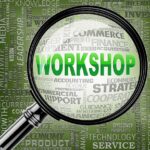
Exercise 1.1: Strategic Planning and Execution Quiz Activity

Course Manual 2: Thinking Strategically
Strategic thinking is the disciplined and deliberate process of assessing decisions, risks, and opportunities through a long-range, systemic lens. It moves beyond the immediate demands of the moment, instead emphasizing a forward-looking orientation that examines underlying patterns, long-term trends, and broader interdependencies. This form of thinking prioritizes understanding over urgency—encouraging analysis that considers both what is visible now and what may emerge in the future.
Unlike reactive or transactional mindsets, strategic thinking operates on the premise that short-term gains are insufficient if they compromise long-term direction. It deliberately resists the pull of day-to-day firefighting and instead focuses on identifying foundational choices that will influence an organization’s ability to compete, grow, and evolve over time. This approach includes assessing not only what is happening inside the business but also how external forces—technological shifts, market movements, societal expectations, and geopolitical changes—may interact and influence future viability.
At its core, strategic thinking involves questioning assumptions, challenging conventional wisdom, and connecting seemingly disparate information to build a coherent narrative about what may lie ahead. It is the mental architecture that supports adaptive planning, informed prioritization, and thoughtful risk-taking. The ability to interpret weak signals, detect early inflection points, and recognize the long-term implications of short-term events is central to this mode of thinking.
Strategic thinking also incorporates an intentional blend of foresight and analysis. Foresight enables anticipation of future scenarios and emerging disruptions, while analysis provides structure to evaluate trade-offs and impacts. This balance helps organizations avoid impulsive or myopic responses in the face of uncertainty, instead enabling them to engage proactively with challenges and opportunities as they arise.
By integrating these elements, strategic thinking positions organizations to shape outcomes, not merely absorb or react to them. It provides a foundation for building resilient, future-ready enterprises that can navigate ambiguity with purpose. Rather than treating complexity as a barrier, it views it as a strategic landscape—one that, when understood and engaged with thoughtfully, can reveal opportunities for transformation, innovation, and sustained value creation.

Strategic vs. Tactical vs. Operational Thinking
A well-functioning organization depends on the interplay of strategic, tactical, and operational thinking. Each form of thinking serves a distinct role in organizational decision-making, and success lies in ensuring that these three levels are aligned, mutually reinforcing, and appropriately balanced over time.
Strategic thinking operates at the highest level. It defines the overarching direction, guiding principles, and long-term goals that shape the future of the organization. Strategic thinking asks big-picture questions: What markets should we compete in? What value do we offer, and to whom? How will we position ourselves to sustain advantage over the next five or ten years? This level of thinking is concerned with directionality and purpose—it is about making bold, sometimes difficult choices in the face of uncertainty, based on a vision of future possibilities.
Tactical thinking translates this broad strategic vision into focused initiatives. While strategy defines the “what” and the “why,” tactical thinking defines the “how.” Tactical decisions are medium-term and often departmental or cross-functional in scope. They involve the planning and management of specific projects or programs that advance strategic priorities. Tactical thinkers ask questions like: What campaigns or pilots should we run to support our market entry? How should we structure our teams to deliver on a new product roadmap? What partnerships or process changes will enable scalability?
Operational thinking, in contrast, lives in the execution layer. It is concerned with the consistent and efficient delivery of products, services, and internal processes. Operational thinking asks: How can we improve performance on the shop floor? How do we reduce errors in our billing process? How do we ensure timely delivery of customer support? This level is about repetition, control, and continuous improvement within the existing system.
Despite their differences, these three forms of thinking are deeply interdependent. Strategic goals set the direction, tactical plans bridge the gap, and operational execution brings them to life. Misalignment among the three leads to disjointed execution, wasted resources, and employee confusion. For instance, a sound strategy may fail without strong tactical planning, or tactical plans may be executed flawlessly yet fail to support strategic aims if the thinking behind them is not cohesive.
Here’s a simplified comparison to clarify the distinctions:
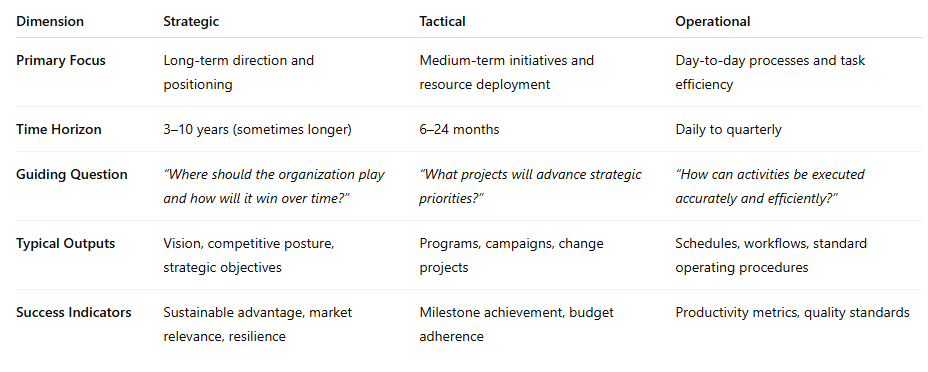
Understanding these distinctions is more than a theoretical exercise. Organizations often struggle when these thinking levels are either confused or disproportionately emphasized. A team too focused on operational efficiency may lose sight of broader trends and strategic threats. Conversely, a team lost in long-term strategy discussions without tactical clarity may fail to gain traction on real-world objectives. Balance is key.
Additionally, the ability to switch between these levels—what is sometimes called cognitive range—is a critical skill for modern leaders. Strategic thinkers need to appreciate operational constraints, and operational leaders benefit from understanding how their work supports longer-term strategic goals. This kind of vertical alignment ensures consistency of purpose, coherence in action, and greater organizational agility.
Strategic, tactical, and operational thinking should not be viewed as a hierarchy of importance, but as an ecosystem of perspectives, each contributing to the health and performance of the whole.

Core Characteristics of Strategic Thinkers
Strategic thinking is not just a skillset—it reflects a particular mindset and approach to understanding complex environments, making choices, and guiding organizational direction. Those who excel in strategic thinking often demonstrate a specific set of characteristics that enable them to move beyond surface-level observations and engage deeply with ambiguity, change, and interdependence. These characteristics are not confined to senior leadership roles; they can be developed and applied across all levels of an organization to enhance decision-making, align actions with long-term goals, and build adaptive capability.
Systems Perspective:
A systems perspective involves the ability to see how different elements within an organization or market interact and influence each other. Strategic thinkers do not look at functions, departments, or markets in isolation. Instead, they seek to understand how changes in one area can ripple across the entire system. For example, a pricing decision may impact not only revenues but also brand perception, supply chain dynamics, and customer loyalty. Recognizing these interdependencies helps avoid silo-optimized decisions that create unintended consequences elsewhere. It also enables more holistic problem-solving, as decisions are informed by a broader understanding of organizational and market ecosystems.
Pattern Recognition:
Strategic thinkers are skilled at identifying early signals and connecting them into meaningful insights. This ability to detect patterns—whether in customer feedback, emerging technologies, competitive behavior, or regulatory trends—allows organizations to anticipate change rather than simply react to it. While data plays a role, pattern recognition also involves intuition informed by experience and critical thinking. Spotting patterns early can provide a first-mover advantage, allowing the organization to respond with innovation or strategic repositioning before trends fully materialize or competitors adapt.
Hypothesis-Driven Inquiry:
Rather than relying solely on gut instinct or untested assumptions, strategic thinkers approach decisions with a mindset of inquiry. They formulate hypotheses—statements that can be tested—and then seek evidence to validate or refine those ideas. This method reduces the risk of strategic missteps by promoting structured experimentation and learning. For example, before launching a new service line, a strategic thinker might test the concept in a pilot market, monitor the results, and adjust accordingly. This iterative approach supports more robust, resilient decision-making by allowing small-scale failures to inform large-scale success.
Long-Range Orientation:
One of the distinguishing features of strategic thinking is the ability to look beyond the immediate horizon. Strategic thinkers are future-oriented. They recognize that today’s decisions must not only solve current problems but also build the capabilities required for tomorrow’s challenges. This orientation involves weighing short-term benefits against long-term trade-offs, and making intentional choices to support sustainable growth. It also includes scenario-based thinking—exploring different future possibilities and positioning the organization to thrive across multiple potential outcomes.
Bias Awareness:
All decision-makers are vulnerable to cognitive biases—mental shortcuts that can distort reasoning and judgment. Strategic thinkers, however, are aware of these biases and actively work to mitigate their influence. Whether it’s confirmation bias (seeking information that supports existing beliefs), anchoring (relying too heavily on initial data), or groupthink (favoring consensus over critical analysis), these distortions can derail sound strategy. Strategic thinkers use structured analysis, diverse perspectives, and data triangulation to challenge assumptions and arrive at more objective conclusions.
Unconscious bias—also known as implicit bias—is the automatic and unintentional association of stereotypes, attitudes, or assumptions with certain groups or individuals. These biases are shaped by our upbringing, culture, and lived experiences and can subtly influence how we perceive others, make decisions, and interact in the workplace.
While often invisible to those who hold them, these biases can affect hiring, promotion, collaboration, and performance evaluation—undermining fairness and limiting organizational potential. Addressing unconscious bias sets the stage for more equitable decision-making, fosters diverse and high-performing teams, enhances innovation through varied perspectives, and contributes to improved employee engagement and retention. Tackling these hidden assumptions is essential for building an inclusive culture where individuals feel seen, valued, and empowered.
Courageous Choice-Making:
Strategy involves trade-offs. Every choice to pursue one direction means rejecting another. Strategic thinkers are willing to make tough calls and say “no” to opportunities that are appealing but misaligned with the organization’s long-term goals. This takes courage, particularly when such choices involve short-term losses, stakeholder resistance, or high levels of uncertainty. However, maintaining strategic coherence—ensuring that all major decisions support a unified direction—is essential for sustained performance. Courageous decision-making also builds credibility, as it demonstrates clarity of purpose and a commitment to disciplined execution.
Adaptive Learning:
In an unpredictable environment, even the best-laid strategies can face disruption. Strategic thinkers treat surprises and failures not as setbacks but as learning opportunities. They adopt an adaptive mindset, using feedback to recalibrate direction without losing sight of overall purpose. This learning orientation allows for strategic flexibility—adjusting tactics, reallocating resources, or reinterpreting data—while remaining committed to long-term objectives. It also fosters resilience, as individuals and organizations become better equipped to evolve in response to changing conditions.
Together, these characteristics form the cognitive and behavioral foundation of strategic thinking. While some individuals may naturally gravitate toward this mindset, it can also be cultivated through training, mentorship, and deliberate practice. Organizations that prioritize the development of these capabilities across their teams are better positioned to navigate complexity, seize opportunities, and build lasting competitive advantage.

Frameworks and Analytical Lenses
Strategic thinking is supported by structured tools that help clarify ambiguity, frame decisions, and uncover insight. These frameworks and lenses do not replace judgment; rather, they provide a foundation for consistent analysis, reduce bias, and facilitate productive conversations among stakeholders. By applying the right framework at the right time, decision-makers can explore complex issues more effectively and align action with long-term goals.
Each tool serves a distinct purpose. Some are designed to assess external environments, others focus on internal capabilities, and some are used to model future scenarios or map decision pathways. Importantly, these tools are most effective when used not as rigid checklists but as flexible thinking aids—frameworks that guide inquiry, provoke reflection, and prompt critical questions.
The table below outlines several widely used strategic frameworks, categorized by their primary application:

SWOT Analysis:
SWOT (Strengths, Weaknesses, Opportunities, Threats) is one of the most widely used foundational tools for strategic assessment. It encourages holistic thinking by integrating both internal and external perspectives. Strengths and weaknesses focus on internal attributes—such as talent, culture, resources, and systems—while opportunities and threats emphasize the external environment, including competition, regulation, and market shifts. The value of SWOT lies in its simplicity and versatility. When applied thoughtfully, it reveals alignment gaps and uncovers strategic areas of focus.
PESTLE Analysis:
PESTLE (Political, Economic, Social, Technological, Legal, Environmental) offers a macro-level lens for scanning the external environment. It helps identify trends and forces that may impact the organization’s trajectory, many of which lie beyond its control but must still be anticipated. For example, shifts in labor laws (Legal), climate regulations (Environmental), or consumer behavior (Social) can create both risks and opportunities. PESTLE ensures that strategic planning considers the broader context in which the organization operates.
Porter’s Five Forces:
Michael Porter’s Five Forces framework focuses on industry dynamics, providing a structure for analyzing the level of competitive pressure and attractiveness of a given market. It considers five key forces: the threat of new entrants, the bargaining power of suppliers, the bargaining power of buyers, the threat of substitute products or services, and the intensity of competitive rivalry. Understanding these forces helps organizations position themselves strategically, either by differentiating their offerings or reshaping the basis of competition.
Scenario Planning:
Scenario planning equips organizations to navigate uncertainty by preparing for a range of possible futures. Rather than trying to predict a single outcome, scenario planning develops multiple narratives based on varying assumptions about key variables—such as regulatory change, technological disruption, or geopolitical instability. These scenarios are then used to test strategies, assess risk exposure, and identify early warning signals. This approach builds strategic flexibility, allowing organizations to shift course as new realities unfold.
Value Chain Analysis:
Value chain analysis breaks down an organization’s operations into primary and support activities to identify where value is created and where inefficiencies may exist. By examining each link—from inbound logistics and operations to marketing and customer service—leaders can pinpoint areas for improvement, investment, or differentiation. This framework is particularly useful when evaluating cost structures, core competencies, or partnership opportunities.
Balanced Scorecard:
Developed by Kaplan and Norton, the Balanced Scorecard helps translate strategic objectives into measurable performance indicators. It considers four perspectives: financial, customer, internal processes, and learning & growth. This multidimensional view encourages balance—ensuring that financial targets do not come at the expense of customer satisfaction, innovation, or operational excellence. The Balanced Scorecard also fosters alignment by linking goals across departments to overall strategy.
Systems Thinking:
Systems thinking is a conceptual framework that emphasizes the interconnectedness of elements within an organization or market. Rather than treating issues in isolation, it reveals how components interact over time through feedback loops and delayed effects. This lens is especially helpful for understanding complex problems, avoiding unintended consequences, and identifying leverage points where small changes can produce significant impact.
RACI Matrix:
The RACI Matrix (Responsible, Accountable, Consulted, Informed) is not a strategic tool per se but plays a crucial role in the execution of strategic initiatives. It clarifies roles and decision authority across teams and functions, reducing confusion and overlap. This structure supports cross-functional collaboration, ensuring that initiatives progress smoothly and that ownership is clear.
When used consistently and integrated into planning processes, these tools enhance both the quality of strategic decisions and the speed of execution. They help align diverse perspectives, surface blind spots, and structure the path from insight to action. Ultimately, the value of any framework lies not in its complexity, but in its ability to sharpen focus, guide discussion, and improve outcomes. Selecting the right tool for the right context—and using it with discipline—can significantly elevate the effectiveness of strategic thinking and planning.
Strategic Thinking in Decision-Making
Strategic decisions differ fundamentally from day-to-day operational choices. They commit substantial resources, influence long-term positioning, and often carry consequences that are difficult—if not impossible—to unwind. Because these decisions are made under conditions of uncertainty and complexity, applying a strategic lens is essential for balancing risk, opportunity, and organizational intent.
Five disciplined practices support this approach:
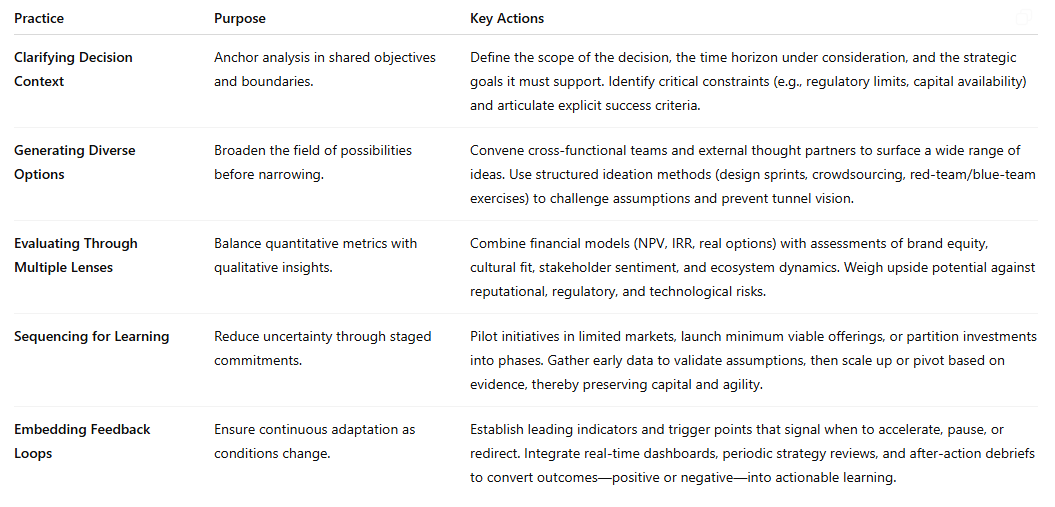
Collectively, these practices transform major decisions from one-off events into dynamic processes. Clarifying context fosters alignment; generating diverse options widens the solution space; multi-lens evaluation balances rigor and nuance; sequencing converts uncertainty into knowledge; and feedback loops ensure the organization remains responsive as realities evolve. By integrating these disciplines, strategic thinkers enhance decision quality, protect against downside risk, and position their organizations to capture emerging opportunities.

Cultivating an Organization-Wide Strategic Mindset
Strategic thinking becomes a true organizational strength when it extends beyond the executive suite and becomes embedded in the culture, processes, and day-to-day behavior across all levels. In dynamic, fast-moving environments, centralized decision-making is often too slow or too disconnected from frontline realities. For an organization to remain agile and forward-looking, strategic awareness must be cultivated broadly—across functions, roles, and hierarchies.
This broad cultivation requires intentional practices that encourage long-term thinking, enhance analytical capability, and empower employees to see the bigger picture behind their everyday responsibilities.
Below are six foundational practices that support the development of an organization-wide strategic mindset:
Shared Language:
A common barrier to organization-wide strategy execution is the absence of a shared vocabulary. Terms like “strategy,” “priority,” or “value creation” may mean different things to different people. Establishing a shared language ensures that strategic conversations are coherent, focused, and actionable. This involves developing concise, consistent definitions for key strategic terms, specific to the organization’s context. For instance, when all employees understand what is meant by “strategic initiative” or “long-term growth lever,” they are more likely to align their decisions and contributions with enterprise-wide goals.
Decision Rights Alignment:
Strategic insights are not confined to the top of the organization. In fact, frontline teams often have the earliest visibility into emerging shifts in customer behavior, product performance, or market dynamics. To harness this insight, organizations must align decision rights—ensuring that those with timely, relevant information are also empowered to act. This means devolving certain decision-making authority to operational teams while maintaining strategic guardrails. It also involves clarifying which decisions require escalation and which can be addressed locally, thus accelerating response times and reinforcing ownership.
Learning Forums:
Strategic thinking grows stronger when reflection and iteration are routine. Creating structured spaces for learning—such as periodic strategy sprints, cross-functional innovation labs, or after-action reviews—encourages employees to pause, assess, and recalibrate. These forums enable the organization to capture lessons from success and failure alike, feed insights back into planning cycles, and reinforce the idea that strategy is an evolving process. By regularly engaging in strategic dialogue, teams develop fluency in thinking beyond immediate tasks and start to connect their work to broader strategic themes.
Incentive Symmetry:
The behaviors that organizations reward often determine the mindsets that take root. If short-term results are the only metrics incentivized, strategic behavior—such as investing in long-term capability or experimenting with new approaches—may be devalued. Aligning incentives with long-term value creation ensures that employees are motivated not only to hit quarterly targets but also to contribute to enduring success. This might involve incorporating strategic KPIs into performance reviews, recognizing collaboration across silos, or rewarding innovation even when it carries a calculated risk of failure.
Talent Rotation:
Exposure to multiple functions, markets, and business challenges is a powerful driver of strategic thinking. Rotating high-potential talent across roles allows individuals to gain a holistic view of the organization, understand interdependencies, and appreciate diverse perspectives. Whether through formal secondments, cross-training, or project-based assignments, such experiences develop leaders who are better equipped to see the full system, balance competing priorities, and connect strategic dots. Over time, these individuals form a cadre of enterprise thinkers capable of influencing strategy across functions.
Scenario Drills:
Just as athletes use simulation to build reflexes, organizations can use scenario-based exercises to build strategic reflexes under pressure. Tabletop drills or simulation workshops expose teams to hypothetical disruptions—such as supply chain breakdowns, new market entrants, or regulatory changes—and challenge them to respond using strategic tools. These activities sharpen analytical thinking, improve crisis readiness, and reinforce the principle that effective strategy is both anticipatory and adaptive. Scenario drills also cultivate confidence in navigating ambiguity, a hallmark of strategic competence.
Embedding strategic thinking throughout the organization does not require everyone to become a strategist in title, but it does require everyone to understand strategic context, ask the right questions, and take aligned action. By fostering a culture that values foresight, learning, and collaboration, organizations can distribute strategic capability across teams—turning strategy from a top-down process into a collective way of working.

Building Strategic Thinking Capabilities
Strategic thinking is not solely an innate talent possessed by a select few; it is a capability that can be intentionally developed, nurtured, and scaled across an organization. While some individuals may naturally gravitate toward long-term thinking or systemic analysis, most can significantly improve their strategic acumen when given the right conditions, tools, and opportunities.
Creating an environment that supports the development of strategic thinking requires a multi-faceted approach. It is not enough to encourage people to “think more strategically”; organizations must invest in formal learning, experiential exposure, and cultural practices that reinforce the behaviors and mindsets associated with effective strategy.
Several key enablers of this capability development include:
Training & Toolkits:
Structured training programs serve as a foundation for building strategic literacy. Workshops and seminars on systems thinking, scenario design, and decision analysis provide individuals with the conceptual grounding necessary to understand complex dynamics and anticipate future developments. Toolkits that include templates, worksheets, case examples, and facilitation guides help translate theory into practice. These resources empower teams to apply structured approaches to real-world challenges, increasing consistency and confidence in strategic conversations.
In addition to general training, tailored programs for different roles and levels ensure that content remains relevant. For example, senior leaders may focus on portfolio strategy and risk management, while mid-level managers explore decision frameworks and value chain optimization. Frontline supervisors might benefit from simplified models that connect their responsibilities to the broader strategic context.
Mentoring Networks:
Learning through experience is accelerated when supported by thoughtful mentorship. By pairing emerging leaders with experienced strategists or senior executives, organizations create opportunities for guided reflection, contextual learning, and knowledge transfer. These relationships help rising talent understand how seasoned leaders navigate ambiguity, weigh trade-offs, and align actions with long-term priorities.
Mentorship also fosters trust and psychological safety, allowing mentees to ask challenging questions and experiment with strategic thinking in a supportive environment. Over time, this practice strengthens the pipeline of future leaders who are not only operationally competent but also strategically minded.
Data Fluency:
In the age of digital transformation, strategic thinking increasingly depends on data fluency—the ability to access, interpret, and act on information quickly. Dashboards, analytics platforms, and business intelligence tools enable teams to test hypotheses, model scenarios, and monitor performance in real time. When individuals are equipped with both the tools and the literacy to use them effectively, strategic decisions become more grounded, responsive, and data-informed.
Encouraging data fluency also democratizes insight. When employees at all levels can see the same trends, patterns, and indicators, they are better positioned to contribute meaningfully to strategic dialogue. This transparency fosters alignment and agility across the organization.
Strategic Projects:
One of the most powerful ways to build strategic capability is through immersion in high-impact, cross-functional projects. Assigning teams to explore new markets, pilot innovative technologies, or develop go-to-market strategies creates a living laboratory for strategic thinking. These projects force individuals to confront real ambiguity, navigate competing priorities, and reconcile short-term pressures with long-term vision.
Such initiatives also promote collaboration across departments and expose participants to diverse perspectives. This cross-pollination of ideas often leads to creative breakthroughs and strengthens the collective ability to analyze problems systemically. Strategic projects should be structured with clear goals, milestones, and reflection points to ensure learning is captured and transferred beyond the immediate team.
Time Allocation:
In many organizations, operational urgency leaves little space for deeper thinking. However, strategic insight rarely emerges in moments of constant reactivity. Creating “thinking time”—deliberate periods set aside for reflection, research, and planning—is essential for cultivating strategic depth.
Organizations can support this by encouraging leaders to schedule quiet hours, set aside days for long-term planning, or participate in periodic retreats. While this may seem counterintuitive in fast-paced environments, the long-term payoff is substantial. Dedicated time for strategic reflection allows individuals and teams to move beyond surface-level responses and engage in more thoughtful, future-oriented dialogue.
Building strategic thinking capabilities is not a one-off initiative; it is a continuous investment in human capital. By combining formal learning, experiential challenges, mentorship, data access, and protected time for reflection, organizations create the conditions under which strategic thinking can flourish—not only at the top, but throughout the enterprise. When these practices are embedded into daily operations, strategic thinking becomes not just a skill, but a shared discipline that informs every decision and initiative.
Using the Time Allocation Matrix:
The Time Allocation Matrix—also known as the Eisenhower Matrix—is a widely used productivity tool designed to help individuals and teams prioritize tasks based on their urgency and importance. By categorizing activities into four distinct quadrants, it provides a clear visual structure for time management and supports better strategic focus.
• Quadrant 1: Urgent and Important This quadrant represents tasks that are both time-sensitive and critical to success. These activities often involve crisis management, looming deadlines, or immediate problems that require attention. While they cannot be ignored, operating predominantly in this quadrant can lead to burnout and reactive behavior.
• Quadrant 2: Important but Not Urgent Tasks in this quadrant are crucial for long-term success but don’t require immediate action. Examples include planning, relationship-building, strategic development, and self-improvement. Investing time here is essential for sustainable growth, innovation, and proactive leadership.
• Quadrant 3: Urgent but Not Important These tasks demand attention due to their immediacy but do not significantly impact strategic outcomes. Often, they include interruptions, routine reports, or minor issues that can be delegated or streamlined.
• Quadrant 4: Neither Urgent nor Important Activities in this quadrant offer little value and typically serve as distractions. These may include excessive social media browsing, trivial busywork, or tasks that consume time without contributing to meaningful outcomes. Minimizing time spent here is key to improving productivity and focus.
By applying the Time Allocation Matrix regularly, individuals and teams can evaluate how their time is being spent, identify areas of misalignment, and shift focus toward more strategic, value-creating activities—especially those in Quadrant 2. This conscious prioritization supports better decision-making, reduces stress, and aligns daily effort with long-term goals.

Case Study: Netflix’s Reinvention from DVDs to Streaming
In the early 2000s, Netflix operated a mail-order DVD rental model, competing with brick-and-mortar chains and nascent online services. Leadership identified an emerging pattern: broadband penetration was rising, compression technology was improving, and consumer appetite for on-demand content was growing. Rather than viewing these signals as distant threats, Netflix treated them as catalysts for transformation.
Strategic Choices:
• Vision Expansion – Redefined the mission from DVD distribution to “best global entertainment distribution.”
• Technology Investment – Developed proprietary streaming infrastructure and data algorithms for personalized recommendations.
• Content Licensing & Originals – Secured streaming rights and, later, produced original content to differentiate the library.
• Global Scaling – Entered international markets rapidly, tailoring content mixes to regional tastes.
Outcome:
The shift required significant capital outlay and disruption of the profitable DVD business line. Yet by 2015, streaming revenues eclipsed DVD income; by 2020, Netflix had over 200 million subscribers worldwide. Strategic thinking—framing broadband as an enabler rather than a threat, sequencing investments, and balancing risk with learning—enabled Netflix to lead the streaming era and redefine entertainment consumption.

Exercise 1.2: Strategic Lens

Course Manual 3: Benefits of a Strategic Approach
Organizations that demonstrate long-term success, resilience through disruption, and sustained market leadership typically share a common trait: they embed strategic thinking into the very fabric of their operations. This integration extends well beyond periodic planning exercises or high-level vision statements. Instead, it becomes part of how decisions are made, how problems are approached, and how leadership is exercised at all levels of the organization. Strategy, when treated as a core discipline rather than a project, influences behaviors, reshapes priorities, and creates conditions for lasting advantage.
Rather than limiting strategic work to annual retreats or boardroom discussions, high-performing organizations foster a culture where strategic awareness is cultivated continuously. This means that individuals across departments—from marketing to operations, finance to human resources—are encouraged to understand the broader context of their actions. When every team member understands the direction the organization is heading and how their role contributes to that trajectory, the entire enterprise becomes more agile, focused, and purpose-driven.
At the heart of this advantage is a mindset shift. Strategic thinking demands clarity of purpose, thoughtful alignment of resources, and disciplined decision-making. It encourages individuals and teams to weigh trade-offs, anticipate future developments, and stay aligned with overarching goals, even in the face of short-term pressures. In this way, strategy becomes a stabilizing force in a volatile environment, offering a reliable framework for action when uncertainty is high.
The benefits of embedding a strategic approach are both measurable and experiential. On the tangible side, organizations often see improved financial performance, enhanced market share, and better resource utilization. Decision-making becomes more efficient and less reactive, while investments are more likely to generate long-term returns. On the intangible side, strategy cultivates trust, reputation, and cohesion. It reinforces a sense of shared direction, empowers employees with a clearer sense of purpose, and builds stakeholder confidence in the organization’s capacity to deliver value over time.
Crucially, these benefits are not automatic. They emerge when strategic planning is not treated as a static document but as a dynamic, living practice. A strategic plan that attracts broad support, is actively communicated, and is continuously refined based on internal and external feedback becomes a powerful tool for transformation. Such a plan does more than outline goals—it galvanizes action, aligns teams, and inspires progress. Over time, it becomes a central pillar of the organization’s identity and a key driver of sustainable growth.
Tangible Benefits of a Strategic Approach
A strategic mindset, when embedded into the core functions of an organization, leads to measurable improvements in performance, efficiency, and resilience. These tangible benefits, supported by research and observed in practice, contribute directly to an organization’s ability to meet its objectives, compete effectively, and deliver value over time.
Below are key areas where these benefits manifest.
Performance Clarity and Goal Alignment:
At the heart of strategic execution lies clarity. A well-articulated strategy provides a shared understanding of where the organization is headed and how success is defined. This clarity begins with setting specific, measurable objectives that are directly tied to the organization’s mission and long-term vision. These objectives cascade throughout the organization, guiding teams and individuals in their day-to-day efforts and ensuring alignment between personal performance and corporate ambition.
When employees understand the strategic rationale behind their responsibilities, they are more motivated and focused. Ambiguity is reduced, and competing priorities are resolved through reference to overarching goals. In this way, a strategic approach minimizes operational friction and encourages a culture of accountability. Teams work in unison toward common objectives rather than pursuing isolated or conflicting goals, which enhances both productivity and morale.
Enhanced Operational Efficiency:
Strategic thinking introduces structure into decision-making processes, making organizations more efficient in how they utilize time, talent, and capital. By clearly defining which projects and initiatives warrant investment, leaders can direct resources to areas that align with long-term priorities rather than dispersing efforts across low-impact activities. This efficiency is not just about cutting costs—it is about optimizing processes, reducing duplication, and eliminating activities that do not add strategic value.
In practical terms, strategy influences how functions are organized, how workflows are designed, and how performance is measured. It informs decisions about whether to build or outsource capabilities, whether to adopt new technologies, or whether to enter or exit particular markets. When resources are deployed according to a strategic framework, organizations not only operate more efficiently but also become more agile in responding to change.
Competitive Differentiation:
One of the most significant outcomes of strategic planning is the ability to carve out a clear and sustainable position in the market. Without a defined strategy, organizations tend to drift, reacting to external pressures without a clear sense of direction. A strategic approach, by contrast, enables organizations to articulate a distinct value proposition and consistently deliver on it. This differentiation creates customer loyalty, strengthens brand identity, and shields the organization from commoditization.
Strategic positioning is based on a deep understanding of the organization’s core competencies and a deliberate choice about where to compete and how. Whether through superior customer experience, technological innovation, cost leadership, or niche specialization, strategy gives companies the confidence to focus their efforts and reject distractions. It also helps them anticipate and shape competitive dynamics, rather than merely responding to them.
Improved Risk Management:
Risk is inherent in every decision, but a strategic approach allows organizations to address uncertainty proactively rather than reactively. Through structured environmental scanning, scenario analysis, and trend monitoring, strategic organizations are better prepared to detect emerging threats and opportunities. This foresight improves the quality of decision-making and allows for the development of contingency plans that preserve operational continuity in times of disruption.
Strategic risk management is not about avoiding risk altogether; it is about understanding the potential upside and downside of various options and choosing those that align with the organization’s tolerance for uncertainty and long-term ambitions. This disciplined approach builds resilience, enabling the organization to withstand economic downturns, regulatory changes, supply chain disruptions, or reputational crises with greater confidence and agility.
Strategic Risk Management Framework
Effective risk management is not about eliminating uncertainty—it’s about equipping the organization with a structured framework to identify, assess, and respond to risks that may hinder strategic goals.
The following seven-step model outlines a clear and proactive approach to managing strategic risks:
1. Define your strategy and goals: Establish clear organizational objectives to create a strategic foundation.
2. Identify risks affecting your strategy and goals: Determine potential internal and external risks that could disrupt strategic outcomes.
3. Assess and prioritize risks: Evaluate risks based on likelihood and impact, ranking them in order of strategic significance.
4. Develop a plan for mitigating risks: Create targeted mitigation strategies tailored to the nature and priority of each risk.
5. Establish and track risk indicators: Define leading and lagging indicators (such as KRIs) to monitor exposure and early warning signals.
6. Monitor the effectiveness of mitigation plans: Regularly evaluate whether mitigation efforts are producing desired outcomes and maintaining resilience.
7. Refine the risk management process: Use insights and feedback loops to continuously improve the framework and adapt to emerging threats.
This structured approach ensures that risk management is integrated into the strategic planning cycle rather than being treated as a reactive afterthought. It supports organizational agility, resilience, and long-term value creation.
Higher Profitability and Growth Potential:
Perhaps the most direct benefit of a strategic approach is improved financial performance. Organizations that align resources with strategic priorities, focus on value creation, and invest in future capabilities often see superior returns. These returns are not limited to short-term profits—they include long-term sustainability and scalable growth.
Strategic planning fosters deliberate investment in innovation, employee development, customer engagement, and process improvement. These investments build the foundation for sustained growth, even in competitive or volatile markets. Moreover, when decision-making is guided by a clear strategic vision, the organization avoids wasteful expenditures, misaligned acquisitions, or reactive cost-cutting measures that can undermine long-term health.
Over time, the compounding effect of these choices becomes evident in stronger balance sheets, greater market share, and increased shareholder value. Financial success becomes not just a function of operational efficiency but of strategic coherence and foresight.

Intangible Benefits of a Strategic Approach
Beyond financial metrics and operational results, a strategic approach delivers a range of intangible benefits that are critical to long-term viability, cultural strength, and stakeholder confidence. While these outcomes are less easily quantified, their influence on organizational health and performance is profound. They shape the internal environment, reinforce external perception, and sustain the organization’s capacity to grow and evolve over time.
Leadership Confidence and Cohesion:
One of the most significant intangible benefits of a coherent strategy is the confidence it instills in leadership. When senior teams are aligned around a shared vision and a clearly articulated plan, decision-making becomes more unified and deliberate. Leaders are better equipped to handle ambiguity, manage complexity, and respond to unforeseen challenges with calm and clarity. Instead of acting in silos or relying on instinct alone, leaders use the strategic framework as a reference point, reinforcing consistency in choices and communications.
Cohesion at the top also filters down through the organization. A united leadership team sends strong, consistent messages to employees, reducing confusion and reinforcing the importance of strategic priorities. During periods of volatility or transformation, this alignment becomes a critical asset, enabling faster, more coordinated responses and preserving momentum when it might otherwise falter.
Cultural Resilience and Purpose:
Strategy plays a central role in shaping organizational culture. When purpose and long-term direction are clearly communicated and understood, employees begin to internalize these principles in how they work, collaborate, and make decisions. Culture shifts from being reactive and fragmented to proactive and unified. Employees understand not just what to do, but why it matters.
Organizations with strategic clarity often experience greater resilience. Teams are more adaptable because they understand the principles guiding change and the end goals being pursued. They are better able to absorb setbacks and pivot when necessary because their sense of identity and purpose remains intact. This kind of cultural alignment supports innovation, reduces resistance to change, and enhances the capacity to execute complex initiatives.
A strong culture rooted in strategy also reduces reliance on constant supervision or intervention. When people are clear on the strategic direction, they are more likely to self-manage, take initiative, and contribute ideas aligned with the bigger picture.
Stakeholder Trust and Reputation:
Trust is a key currency in any business relationship. Customers, partners, investors, and regulators look for signs of discipline, foresight, and consistency when evaluating organizations. A well-executed strategy, combined with transparent communication and consistent performance, sends a powerful signal that the organization is in control of its direction and committed to long-term value creation.
Strategic organizations are more likely to be perceived as stable, credible, and trustworthy. This perception enhances the organization’s reputation and strengthens its position in negotiations, partnerships, and investor relations. It also provides a competitive edge in talent acquisition, as prospective employees often seek to work for institutions known for strong leadership and clear purpose.
Trust is a cornerstone of strategic success, especially when multiple stakeholders—internal and external—are involved in the execution of long-term plans. To build and sustain stakeholder trust, organizations must adopt a structured, principled approach that goes beyond basic communication. The following six principles offer a cohesive framework:
1. Communicate transparently & consistently: Establish regular communication that is honest, clear, and reliable. Transparency builds credibility and demonstrates respect for stakeholders’ right to be informed.
2. Listen actively & involve stakeholders: Create spaces for dialogue where stakeholder perspectives are genuinely heard and incorporated. Engagement improves buy-in and ensures decisions are grounded in shared understanding.
3. Set & meet realistic expectations: Avoid overpromising and underdelivering. Instead, be clear about what is achievable and follow through on commitments to reinforce confidence.
4. Be accountable & correct mistakes: Acknowledge when things go wrong and take corrective action swiftly. Demonstrating accountability strengthens trust and prevents reputational damage.
5. Operate ethically & with integrity: Uphold ethical standards in all dealings. Integrity builds long-term trust and protects the organization from compliance and reputational risks.
6. Engage early in the planning process: Involving stakeholders from the outset—rather than after decisions are made—fosters inclusion and alignment. Early engagement also helps surface concerns before they become obstacles.
Together, these practices foster an environment of mutual respect, reliability, and cooperation—key conditions for long-term stakeholder alignment and strategic execution.
Stakeholders are more forgiving of short-term setbacks when they have confidence in the organization’s long-term strategy. Transparency about direction and progress helps maintain goodwill, even in challenging times. Over the long term, this trust becomes a durable asset that supports sustained growth and resilience.
Employee Engagement and Retention:
A strategic approach does more than direct external positioning—it deeply influences internal morale and motivation. When employees are engaged in strategy creation or clearly see how their work contributes to larger organizational goals, their sense of ownership and purpose increases. They are more likely to take initiative, collaborate across boundaries, and remain committed through periods of change.
This sense of connection is especially important in knowledge-driven or mission-oriented organizations, where people seek meaning and impact in their work. Strategic clarity provides that anchor. It helps individuals understand how daily tasks align with long-term outcomes, reducing burnout and improving job satisfaction.
In environments where strategic thinking is encouraged at all levels, talent development also accelerates. High-potential employees gain exposure to the broader business context, build cross-functional insight, and are better prepared for leadership roles. When people feel invested in and trusted to contribute to strategic priorities, retention improves and institutional knowledge is preserved.
In summary, the intangible benefits of strategic thinking—though not easily tracked on a spreadsheet—play a foundational role in shaping high-performing organizations. They create the psychological safety, shared purpose, and mutual trust that enable sustained performance under both stable and turbulent conditions.

Strategy as a Daily Mindset
Treating strategy as a living mindset—rather than a static, annualized process—transforms the way organizations function. It shifts strategy from being a top-down initiative into a cultural norm embedded across functions and roles. When strategy becomes a lens applied consistently across decisions, resource allocation, and operations, organizations gain not only alignment but also agility. This approach makes strategy less about compliance with planning documents and more about how people think, prioritize, and engage with their work on a daily basis.
Strategic mindset is not reserved for senior executives or planning retreats. It exists in the cumulative choices made across the enterprise, in how employees at all levels perceive trade-offs, connect their roles to broader objectives, and assess new information. Organizations that embrace this mindset foster greater coherence, innovation, and resilience—qualities essential in complex, fast-changing environments.
From Firefighting to Future-Shaping:
In many organizations, attention is dominated by urgent demands—operational issues, customer complaints, budget overruns. These reactive environments often trap teams in perpetual firefighting mode, responding to one crisis after another without stepping back to assess broader patterns or anticipate change. A strategic mindset breaks this cycle by encouraging a shift from reactive problem-solving to proactive future-shaping.
By embedding strategy into everyday routines, teams begin to assess not only what is happening now, but what could happen next. They ask deeper questions about root causes, long-term impacts, and upstream solutions. This future orientation enables the organization to move from being disrupted to becoming a driver of disruption—spotting early signals, reallocating resources, and seizing emerging opportunities before they become obvious to competitors.
Strategic thinking also improves prioritization. It helps individuals and departments distinguish between what is urgent and what is important. As a result, time and effort are directed toward initiatives that build lasting value, rather than short-term fixes that often mask deeper issues.
Integrating Strategy with Operations:
The integration of strategic thinking into operational decision-making enhances both effectiveness and adaptability. Operational teams, typically focused on process efficiency and output consistency, gain significant value when they are encouraged to think beyond their immediate scope. This integration ensures that short-term actions support long-term direction and that improvements are aligned with broader organizational goals.
For example, a logistics department evaluating a new distribution system might not only consider cost and efficiency, but also how the system supports strategic priorities such as customer experience, sustainability, or scalability into new markets. Marketing teams might design campaigns not only to boost quarterly revenue, but to reinforce brand positioning in alignment with future growth strategies. Finance might evaluate not just return on investment, but also strategic risk exposure and optionality.
This broadened perspective encourages cross-functional dialogue and collaboration. Silos become more permeable as teams realize the interdependence of their roles and the importance of shared strategic context. Over time, this leads to more holistic decisions, faster learning cycles, and stronger execution.
When strategy is integrated into operations, the strategy itself becomes more grounded in reality. Feedback from those closest to customers, processes, and problems informs strategic refinement, making plans more practical, relevant, and achievable.
Developing Strategic Leaders Across Functions:
Organizations that embed strategy as a mindset recognize that leadership is not confined to hierarchy. Strategic leadership can and should be cultivated across functions, levels, and roles. When people in diverse positions think strategically, they contribute more meaningfully to the organization’s direction and become more capable of navigating ambiguity, conflict, and complexity.
Developing strategic thinkers throughout the organization begins with building awareness of the broader system—how different parts of the organization interact, how external forces influence operations, and how day-to-day decisions contribute to long-term outcomes. It also involves teaching individuals to ask bigger questions, challenge assumptions, and articulate how their work links to strategic objectives.
Over time, these individuals become internal change agents. They are more likely to initiate improvements, take ownership of outcomes, and model behavior that influences their peers. This distributed leadership model reduces overreliance on senior executives and makes the organization more agile and resilient.
Cross-functional exposure, mentorship, scenario exercises, and structured reflection all support the development of these capabilities. In environments where strategic thinking is valued and rewarded, employees are more engaged, ambitious, and invested in outcomes. They also become better prepared to step into future leadership roles, ensuring continuity and adaptability over time.
Embedding strategy as a daily mindset empowers everyone—from front-line employees to senior leaders—to act with purpose, think holistically, and make choices that support sustainable success.

The Role of Broad-Based Support
Strategy, no matter how well conceived, will falter if it fails to gain traction within the organization. Successful execution depends not just on intellectual soundness but on collective commitment. Broad-based support transforms strategic plans from static documents into living frameworks that guide everyday behavior, decision-making, and culture. Without this support, even the most promising strategies risk becoming isolated efforts—misunderstood, underutilized, or resisted outright.
Genuine organizational alignment arises when individuals at all levels understand the strategy, feel a sense of ownership in its success, and believe their contributions matter. This engagement ensures that implementation is not left to chance or confined to a handful of leaders, but becomes a distributed, organization-wide responsibility.
Building Internal Buy-In:
Generating internal buy-in begins with meaningful involvement. When employees contribute to the strategy formation process, they are more likely to understand and support the resulting direction. Involving diverse perspectives ensures that strategic plans are grounded in operational realities, increasing the likelihood of successful execution. Engaging individuals across functions, roles, and levels exposes blind spots, uncovers interdependencies, and invites innovative ideas that might otherwise be overlooked.
Participatory mechanisms such as facilitated workshops, focus groups, or cross-functional strategy task forces offer structured ways to gather input and surface challenges. Town halls and feedback forums provide transparent platforms for raising concerns and clarifying intent. These participatory efforts serve a dual purpose: they improve the quality of the strategy itself and strengthen emotional commitment to its outcomes.
Buy-in is not a one-time achievement; it is sustained through ongoing involvement. Leaders who regularly update teams on strategic progress, seek feedback on implementation, and adjust plans in response to frontline insight foster a culture of trust and collaboration. This ongoing dialogue ensures that strategy remains relevant and supported as conditions evolve.
Communicating the Why:
Strategic communication is not simply about broadcasting decisions—it is about shaping understanding and motivation. Leaders must go beyond outlining the “what” of the strategy to clarify the “why.” Explaining the rationale behind strategic choices builds transparency, aligns intent, and appeals to both logical and emotional drivers.
Linking strategic goals to organizational purpose, values, or shared history fosters deeper connection. When individuals can see how the strategy supports something they care about—customer impact, societal contribution, team pride—they are more likely to embrace it. This emotional connection elevates engagement from passive compliance to active commitment.
Effective communication is also iterative and multi-layered. Strategy should be communicated consistently across different platforms—presentations, newsletters, team meetings—using accessible language and compelling narratives. Leaders at every level play a role in reinforcing messages, adapting them to local contexts, and ensuring consistency of understanding across the organization.
Effective strategy implementation transforms ambitious plans into real-world impact. While formulating strategy defines what an organization hopes to achieve, implementation ensures those goals are pursued with discipline, clarity, and cohesion. The visual framework below outlines six key roles that effective implementation plays in driving organizational success, updated to reflect a more intuitive flow:
1. Aligns Efforts and Strategic Goals: Implementation brings clarity by translating broad strategic goals into aligned efforts across departments and roles. This alignment reduces fragmentation and ensures that day-to-day activities support long-term priorities.
2. Turns Strategic Intent into Tangible Results: A strong implementation approach converts vision into measurable outcomes. It provides the processes, structures, and actions needed to make strategy concrete, moving from theory to execution.
3. Increases Motivation & Engagement: When employees see how their work connects to broader goals, they feel more motivated and invested. Implementation bridges the gap between leadership direction and team ownership, fostering enthusiasm and purpose.
4. Fosters a Culture of Continuous Improvement: Strategy implementation isn’t static—it evolves. Organizations that implement effectively embed feedback loops, learning systems, and adaptability into their culture, creating conditions for sustained improvement.
5. Ensures Clear Accountability Across All Levels:
Implementation defines responsibilities, timelines, and outcomes. This clarity fosters accountability at every level of the organization, helping individuals and teams remain focused and performance-driven.
6. Enables Swift Response to External & Internal Challenges: Well-implemented strategy increases organizational agility. By setting clear priorities and maintaining flexibility, organizations can pivot quickly in response to emerging opportunities or risks—without losing strategic coherence.
Together, these elements ensure that strategy is not just a document, but a living, dynamic force guiding the organization toward its goals.
Reinforcing Through Systems and Incentives:
Once strategic direction is established and communicated, it must be embedded into the systems that shape behavior. Strategy must become a lived experience—reinforced through performance management, resource allocation, decision rights, and recognition structures.
Performance metrics aligned with strategic priorities help ensure that individuals and teams are working toward shared goals. Objective-setting processes should draw a clear line between day-to-day tasks and long-term outcomes, creating coherence between individual contributions and enterprise-wide ambitions. Regular reviews, scorecards, and dashboards offer mechanisms for tracking progress and adjusting course.
Incentive structures play a critical role in sustaining alignment. When rewards—financial, developmental, or reputational—are tied to strategic impact rather than narrow task completion, individuals are more likely to act in ways that support the bigger picture. This applies not only to formal compensation systems but also to informal recognition. Celebrating teams that demonstrate strategic thinking, cross-functional collaboration, or long-term value creation reinforces desired behaviors and signals organizational priorities.
Resource allocation is another critical lever. Budgeting and investment decisions should reflect strategic commitments, ensuring that priority initiatives are adequately supported while low-value activities are phased out. This disciplined allocation process sends a clear message about what matters most and prevents drift away from strategic intent.
Finally, governance mechanisms—such as strategic steering committees or executive sponsors—help maintain focus and accountability. These structures ensure that strategic issues remain visible and that progress is monitored with the same rigor as financial or operational performance.
Broad-based support transforms strategy from aspiration into action. It builds a shared sense of ownership, aligns behavior with long-term goals, and establishes the cultural and structural foundation for sustained success. Through inclusive planning, transparent communication, and system-level reinforcement, organizations can ensure that strategy is not only developed—it is lived.

Sustaining Strategic Momentum
Achieving the benefits of a strategic approach is only part of the journey. The greater challenge lies in maintaining strategic momentum—keeping strategy alive, relevant, and embedded in the daily rhythm of the organization. Strategic momentum is not self-sustaining; it requires deliberate effort, continuous learning, and system-level reinforcement. Without these mechanisms, initial gains can quickly dissipate, and strategy may become disconnected from the fast-moving realities it was designed to address.
Strategic momentum involves maintaining focus while remaining flexible. It requires the ability to measure progress in meaningful ways, learn from both success and failure, and evolve in response to changing internal and external landscapes. By building strategy into the fabric of organizational thinking and learning, enterprises can ensure that it does not fade after launch but matures into a core operating discipline.
Measuring What Matters:
Sustaining a strategic approach begins with measuring what truly matters. Many organizations default to familiar financial metrics such as revenue, profitability, or cost reduction. While these indicators are important, they often reflect past performance rather than future readiness. A strategy that relies solely on lagging indicators provides limited guidance for proactive decision-making.
Strategically oriented organizations complement traditional financial data with a broader set of leading indicators that signal progress toward long-term goals. These might include customer satisfaction scores, innovation pipeline strength, brand equity, employee engagement levels, or market responsiveness. By selecting indicators that align with strategic priorities—such as customer-centricity, agility, or sustainability—leaders gain earlier insight into emerging opportunities and risks.
Measurement systems should be tightly linked to the strategic objectives outlined in the organization’s plan. This alignment ensures that what is being tracked is also what drives long-term value. Balanced scorecards, strategy maps, and dashboards can help visualize progress across multiple dimensions, allowing for clearer communication, better accountability, and more informed decision-making.
Additionally, data should be reviewed not just for reporting but for insight. Patterns, anomalies, and deviations from expectations should prompt analysis and discussion, enabling timely adjustments and more refined planning. Organizations that treat measurement as a strategic tool—rather than a compliance activity—are better positioned to sustain focus and course-correct when needed.
Learning and Adapting:
No strategy remains static in a dynamic environment. Market conditions shift, competitors innovate, regulatory environments evolve, and internal capacities change. Sustaining strategic momentum requires organizations to regularly revisit their assumptions, evaluate performance, and remain open to adaptation.
Strategic adaptability is supported by formal review cycles. These can take the form of quarterly strategy reviews, annual offsite retreats, or periodic check-ins tied to key milestones. The purpose is not just to monitor progress, but to reassess relevance. Are the assumptions that guided the original strategy still valid? Have new risks emerged? Are there new opportunities that were not previously considered?
A learning-oriented approach to strategy allows organizations to pivot with purpose rather than abandon direction in reaction to change. Feedback loops—built into initiatives from the outset—allow real-time insights to be fed back into the planning process. For example, a pilot program designed to test a new market entry strategy can generate learnings that inform broader rollouts or signal the need for adjustment before full-scale investment.
Scenario planning and strategic foresight exercises also play a critical role in cultivating adaptive capacity. By preparing for multiple possible futures, organizations become more agile and less vulnerable to surprise. They develop options, establish contingency plans, and foster the mindset needed to thrive in uncertain conditions.
Strategic thinking is not a single skill, but a collection of cognitive capabilities that help leaders navigate uncertainty, connect short-term actions to long-term goals, and make complex decisions that drive sustainable success. The image illustrates eight key competencies essential to effective strategic thinking. While some are widely recognized—others may benefit from additional clarity or enhancement.
1. Big Picture Thinking: This is the ability to step back and view challenges and opportunities from a broad, long-term perspective. It helps leaders link daily decisions to wider organizational goals.
2. Analytical Thinking: Involves breaking down complex problems into components and using data-driven reasoning to evaluate potential options and outcomes.
3. Systems Thinking: Helps identify interdependencies across departments, processes, or stakeholders. It ensures strategic decisions consider downstream effects and feedback loops.
4. Forward Thinking: Encompasses future-oriented vision and the anticipation of emerging trends, allowing organizations to proactively adapt rather than react.
To better support the strategic mindset, the following four additional skills have been considered as enhancements to the model:
5. Critical Thinking: The ability to evaluate assumptions, challenge existing beliefs, and weigh evidence objectively to form sound judgments.
6. Innovative Thinking: Encourages creative exploration of new ideas, unconventional solutions, and breakthrough strategies for complex problems.
7. Collaborative Thinking: Recognizes that strategy is rarely formed in isolation. This skill emphasizes co-creation, active listening, and drawing on diverse perspectives.
8. Resilient Thinking: Focuses on mental agility and perseverance, allowing leaders to remain composed and adaptive in the face of disruption, failure, or ambiguity.
Together, these eight skills provide a rounded foundation for strategic leadership, enabling individuals and teams to move beyond operational concerns and embrace long-term, impactful decision-making.
Embedding Strategic Learning:
The most resilient organizations are those that treat strategy as a continuous learning process. Rather than viewing strategic planning as a one-time event or compliance requirement, they recognize it as an opportunity for reflection, experimentation, and growth. Strategic learning enables organizations to build institutional memory, improve future decision-making, and deepen collective capability.
This learning process begins by creating space for critical reflection. After major initiatives, product launches, or change efforts, teams should conduct after-action reviews to analyze what worked, what didn’t, and why. These sessions should be open, candid, and non-punitive—focusing on learning rather than blame. Capturing insights in structured formats helps institutionalize lessons and prevents the repetition of past mistakes.
In addition to formal reviews, documenting strategic decisions and the rationale behind them supports transparency and consistency over time. When decisions are clearly recorded, future leaders can trace logic, understand trade-offs, and make better-informed choices. This practice also encourages greater discipline in decision-making, as leaders know their thinking will be visible and subject to later review.
Cross-functional learning forums can further embed strategic thinking. These may include communities of practice, peer learning groups, or leadership roundtables where strategic insights are exchanged and refined. The goal is to create an environment where learning from strategy becomes routine and collaborative rather than isolated and top-down.
Over time, these practices contribute to the development of what some refer to as a “strategic culture”—an environment where foresight, reflection, and disciplined choice-making are part of the organizational identity. In such environments, strategy is not a project; it is a mindset and a method for navigating complexity.

Case Study: IBM’s Strategic Reinvention
IBM, one of the world’s oldest and most recognized technology companies, offers a compelling example of how strategic thinking and disciplined execution can lead to reinvention and long-term resilience. In the early 1990s, IBM was experiencing declining revenues and a shrinking market share due to rapid shifts in technology and competition from more agile firms.
Rather than doubling down on legacy products or responding reactively, IBM’s leadership undertook a strategic transformation. They shifted from being a hardware-centric business to a service-driven organization focused on consulting, software, and cloud computing. This required rethinking business models, retraining talent, and aligning the entire organization around new value propositions.
By embedding a strategic mindset throughout the company and encouraging long-term thinking at every level, IBM was able to reposition itself in the marketplace. This transformation helped the company survive industry disruption and remain relevant in the face of rapid digital evolution.
IBM’s case illustrates several key principles: the value of a strategy supported across the organization, the importance of aligning capabilities with strategic goals, and the long-term benefits of thinking proactively rather than reactively.

Exercise 1.3: Spotting Strategic Benefits

Course Manual 4: Strategic Enablers
Strategic success is rarely the result of vision alone. Instead, it depends on a combination of capabilities, capacities, and systems—commonly referred to as strategic enablers—that support the movement from ideas to execution. These enablers form the practical infrastructure through which organizations align resources, drive momentum, and sustain progress. Without them, even the most compelling strategies risk remaining theoretical or unraveling during implementation.
Strategic enablers serve as the connective tissue that binds goals to action. They create the operational clarity, cultural alignment, and leadership support required to maintain consistency and direction in the face of complexity. When functioning effectively, these elements reduce barriers to execution, encourage collaboration, and enhance resilience. They ensure that all components of the organization are not only working in tandem but are also capable of responding effectively to emerging risks and opportunities.
Critical enablers vary by organization and operating environment but typically include aligned leadership, an adaptive culture, access to key resources, responsive governance frameworks, transparent communication, and the ability to pivot in changing circumstances. These factors operate both independently and interdependently. For example, clear communication enhances cultural alignment, while adaptive governance supports agility in decision-making.
Organizations that routinely review and strengthen their strategic enablers are more likely to maintain strategic coherence and achieve sustainable performance. Identifying potential constraints or friction points early allows proactive intervention before they become major blockers. This analysis includes evaluating gaps between strategy and capacity, cultural resistance, technological shortcomings, or mismatches in structure and accountability.
Equally important is the ability to foster a strategic culture that supports experimentation, shared ownership, and learning. When employees understand their role in delivering strategic outcomes—and are equipped with the systems, resources, and leadership to act—they become active participants in execution, not just passive recipients of direction.
A well-integrated approach to enabling strategy requires ongoing attention and intentional design. It is not a one-time checklist but a continual practice of aligning internal conditions with external realities and emerging priorities. Through deliberate management of strategic enablers, organizations create an environment where execution becomes not only possible but predictable and scalable.

Defining Strategic Enablers
Strategic enablers are capabilities, capacities, or resources that organizations must develop or possess to effectively implement their strategic plans. Unlike strategic goals—which specify what an organization wants to achieve—strategic enablers are the foundational elements that make achievement possible. They act as supporting structures, helping an organization overcome obstacles and execute strategies more effectively. These enablers may be structural, operational, or behavioral in nature, and they represent the difference between a strategy that remains aspirational and one that becomes operationalized. These enablers form the ecosystem within which strategy unfolds, helping to ensure that long-term objectives are supported by the everyday practices, capabilities, and commitments of the organization.
While strategic planning sets the direction and priorities, enablers are the conditions that allow for disciplined movement along that path. They span both the tangible and the intangible. Tangible enablers include financial capital, human talent, technical infrastructure, and physical resources—elements that are easier to quantify and allocate. Intangible enablers include shared values, leadership credibility, trust among stakeholders, and the organization’s appetite for learning and change.
Effective strategy implementation hinges on the synergy of key categories of strategic enablers:
• Leadership Cohesion: Unified vision and direction from senior leaders. When top leadership presents a consistent message and operates with shared intent, it eliminates confusion and builds confidence throughout the organization.
• Resource Alignment: Allocation of budget, personnel, and tools in accordance with the strategic priorities. This ensures that operational decisions reinforce strategic aims rather than distract from them.
• Cultural Readiness: Organizational norms and values that foster innovation, accountability, collaboration, and adaptability. A supportive culture can act as an accelerant for change and resilience.
• Governance Structures: Clearly defined roles, responsibilities, and oversight processes that guide decision-making and ensure accountability. Strong governance mitigates risk and streamlines execution.
• Information Flow: Efficient, transparent, and timely communication across departments and levels. Open information channels allow for early identification of issues and enable more informed strategic adjustments.
• Agility and Responsiveness: The institutional capacity to detect emerging changes in the environment and pivot when necessary. Flexibility, combined with discipline, enables organizations to adapt without losing strategic coherence.
These enablers do not operate in isolation. They are interconnected and mutually reinforcing. For example, even a highly adaptive culture will struggle to implement strategy if resources are misaligned, or governance structures are overly bureaucratic. Likewise, clear communication loses impact if leadership sends mixed signals. The strength and balance of enablers determine the organization’s overall strategic capability.
Recognizing and actively managing these strategic enablers allows organizations to turn aspirational goals into measurable outcomes. It empowers leaders to shift from strategy formulation to strategic execution with confidence, backed by the systems and supports necessary to sustain forward momentum.
Fostering Innovation and Adaptability: A Five-Level Pyramid Approach
Innovation and adaptability are essential capabilities for navigating complex, fast-changing environments. They cannot be imposed—they must be built layer by layer through systems, mindsets, and practices that reinforce exploration, responsiveness, and bold thinking. The five-level pyramid below illustrates a structured approach to fostering these capabilities. Each level represents an essential building block that supports the next, allowing organizations to progress from foundational readiness to breakthrough innovation and adaptive leadership.
Level 5: Agile Decision-Making – Empowering Mindset (Foundation)
At the base of the pyramid is the empowering mindset—the internal conditions that enable agility, curiosity, and openness to change. This involves fostering psychological safety, promoting a growth mindset, and reframing failure as a learning opportunity. It creates a foundation where individuals feel encouraged to speak up, experiment, and challenge assumptions. Organizations must embed values that support flexibility, curiosity, and emotional resilience. Without this mindset, innovation cannot gain traction.
Application: Leadership training programs should begin here—building psychological safety and change readiness as foundational competencies.
Level 4: Collaboration and Partnerships – Collaboration & Diversity
This level reflects the importance of cross-functional teamwork, diverse perspectives, and collaborative structures. Innovation flourishes in environments where people with different skills, experiences, and viewpoints come together to co-create solutions. Structures such as flexible team roles, rotating leadership, decentralized decision-making, and external partnerships enhance responsiveness and widen the innovation lens.
Application: Team organization should promote fluid roles and leverage both cognitive and demographic diversity for creative problem-solving.
Level 3: Embracing Technology Disruption – Continuous Learning & Feedback
True adaptability depends on a commitment to continuous learning and feedback. This includes real-time retrospectives, open feedback channels, and adaptive planning processes that promote learning from both success and failure. It also involves double-loop learning—the capacity to question underlying assumptions and adjust mental models. Technology disruption only becomes a strategic advantage when organizations have the capability to absorb and learn from rapid change.
Application: Embed learning cycles into regular reviews, promote reflection, and develop habits of real-time feedback across all levels.
Level 2: Encouraging Continuous Learning – Innovation Processes & Tools
With learning embedded, the organization is ready to formalize structured innovation practices. This level includes tools and frameworks like design thinking, platform innovation, agile prototyping, and incremental improvement methodologies. These processes transform ideas into scalable solutions and make innovation repeatable rather than ad hoc.
Application: Create innovation labs, incubators, or cross-functional hackathons where these tools can be tested and scaled.
Level 1: Embracing a Culture of Innovation – Breakthroughs & Adaptive Leadership
At the apex of the pyramid is the capacity for breakthrough innovation and adaptive leadership. This level supports individuals and teams in achieving disruptive change, navigating uncertainty, and forging new paths. It requires entrepreneurial thinking, bold experimentation, and the leadership maturity to guide organizations through ambiguity with vision and confidence.
Application: C-suite and senior leaders should focus on modeling adaptive leadership, mentoring entrepreneurial behaviors, and setting direction amid disruption.
How the Levels Work Together:
This five-level model is both sequential and synergistic:
• Levels 1 and 2 build the cultural and structural foundation—psychological safety, mindset, and collaborative diversity—that allows experimentation to thrive.
• Level 3 establishes learning systems that help organizations pivot, evolve, and continuously adapt.
• Level 4 introduces formalized innovation tools that make creative processes structured and repeatable.
• Level 5 enables bold leadership and breakthrough innovation by leveraging everything built below.
Together, these levels form a roadmap for embedding innovation and adaptability into the DNA of the organization. They provide a practical framework that can be applied across multiple domains:
• Leadership development (Level 5 and Level 1)
• Team design and organization (Level 2)
• Performance management and feedback loops (Level 3)
• Innovation programs, labs, and tools (Level 4)
• Strategic vision and organizational transformation (Level 5)
By systematically reinforcing each level, organizations can ensure that innovation is not a one-off effort but a scalable, sustainable capability that drives long-term success.

Identifying Strategic Constraints and Disruptors
While strategic plans may be well-crafted, their success often depends on recognizing and addressing the forces—both internal and external—that can impede execution. Strategic constraints and disruptors are the hidden or emerging barriers that create misalignment, slow momentum, or undermine confidence in the strategy. These disruptors often expose gaps in an organization’s strategic enablers—such as limited capacity, unclear governance, or misaligned resources—which must be addressed to restore coherence and execution strength. Identifying these factors early allows organizations to act pre-emptively, make necessary adjustments, and build resilience into the execution process.
Internal Disruptors:
Many of the most challenging barriers to strategy lie within the organization itself. These internal disruptors can be subtle yet powerful, creating friction between intention and action:
• Misaligned Incentives: When reward systems prioritize short-term gains or departmental performance over strategic outcomes, individuals and teams may pursue actions that conflict with broader goals. Performance metrics must reinforce—not contradict—strategic intent.
• Leadership Silos: Disconnected or competing agendas among senior leaders create confusion and dilute strategic focus. Without cohesive leadership, teams receive mixed signals and inconsistent direction, weakening execution across functions.
• Resource Bottlenecks: Shortages in critical areas—such as talent, funding, or infrastructure—can derail strategic initiatives. Even the best strategies falter when they lack the capacity to be implemented at scale.
• Cultural Resistance: Deep-seated mindsets and behaviors can act as brakes on transformation. Resistance to change may manifest as skepticism, passive noncompliance, or low engagement with new initiatives.
• Inadequate Governance: Vague responsibilities, slow decision-making processes, or weak accountability structures create uncertainty and inaction. Governance mechanisms must support timely and aligned decision-making to maintain momentum.
External Disruptors:
In parallel, external forces often shift in ways that challenge the assumptions upon which strategies are built. These disruptors can be sudden or gradual but require strategic foresight and adaptability:
• Market Shifts: Changes in customer expectations, pricing models, or competitive dynamics can quickly render existing strategies obsolete. Failing to respond may result in loss of relevance or market share.
• Technological Change: New tools, platforms, or innovations can displace traditional models or offer novel ways to solve customer problems. Organizations that cling to legacy systems risk falling behind.
• Regulatory Developments: Evolving legal requirements or compliance obligations may force strategy revisions, especially in highly regulated industries. Delayed adaptation can expose organizations to fines, reputational risk, or operational disruption.
• Economic Volatility: Fluctuations in inflation, interest rates, or global economic conditions introduce uncertainty that impacts budgeting, investment, and resource allocation.
Tools for Diagnosis:
Diagnosing constraints and disruptors requires more than intuition. Structured analysis supports objective insight. Common approaches include:
• Stakeholder Mapping: Identifies who holds influence, who may resist, and where support is needed to ensure traction. It also uncovers potential champions and blockers.
• SWOT Analysis: Assesses internal strengths and weaknesses alongside external opportunities and threats. This reveals areas of vulnerability and informs contingency planning.
• Root Cause Analysis: Goes beyond symptoms to uncover underlying issues that compromise execution. Whether cultural, structural, or systemic, addressing root causes yields more sustainable solutions.
Addressing strategic constraints is not a one-time task. Organizations must institutionalize regular reviews of strategic assumptions, resource capacity, stakeholder sentiment, and external dynamics. By surfacing disruptors early and addressing them directly, leaders can minimize risk, maintain momentum, and safeguard the integrity of their strategy over time.

Strengthening Key Strategic Enablers
Identifying strategic enablers is only the beginning; organizations must take deliberate, ongoing action to strengthen them. Enablers are not static—they require continuous reinforcement and refinement in response to both internal shifts and external pressures. Strengthening these levers increases the likelihood that strategic objectives will be translated into measurable outcomes. This process should be embedded within the broader cycle of strategic management, ensuring that enablers evolve in alignment with priorities, resources, and capabilities.
The work of reinforcing enablers must be deliberate and systemic, touching on leadership behavior, financial planning, cultural dynamics, operational structure, and technological infrastructure.
The following areas are essential pillars in this process:
Leadership Alignment:
Unified leadership is one of the most important foundations for strategic success. When executives and senior managers present a consistent message, reinforce the same priorities, and act with coordinated intent, it builds clarity, confidence, and momentum across the organization. Leadership alignment goes beyond agreement on paper—it must be visible in day-to-day behavior, strategic communications, and decision-making patterns.
Maintaining alignment requires regular touchpoints among leaders, including structured strategic reviews, cross-functional forums, and shared dashboards that report on progress and signal where recalibration is needed. Leadership retreats and off-site strategy sessions can provide the space for reflection, alignment, and recommitment to long-term goals. Consistency at the top sends a powerful signal to employees, reinforcing trust and reducing ambiguity.
Resource Planning and Allocation:
Strategic ambitions must be backed by appropriate investment. Without resource alignment, strategies remain aspirational. Financial, human, and technological resources should be allocated in a way that supports core strategic priorities, rather than legacy practices or departmental preferences. This may require a shift from historical budgeting models to more flexible, priority-based allocation methods.
Strategic resource planning involves not only deciding where to invest but also where to divest or reduce spending. Trade-offs are inevitable, and the willingness to reallocate away from non-strategic areas is a hallmark of disciplined strategic execution. Scenario planning and cost-benefit analysis can aid in determining the highest-leverage areas for investment, ensuring that capital and talent are focused on initiatives that support long-term value creation.
Cultural Enablement:
Culture shapes how people behave, collaborate, and respond to change. A strategically enabled culture promotes learning, accountability, and innovation. It encourages individuals to take initiative, contribute ideas, and align their work with long-term organizational goals. However, culture cannot be left to chance—it must be shaped intentionally.
Building a culture that supports strategy begins with leadership modeling the values and behaviors they wish to see across the organization. When leaders demonstrate adaptability, long-term thinking, and openness to feedback, those traits are more likely to cascade through the organization. Investing in professional development programs, leadership pipelines, and cross-functional initiatives can reinforce desired cultural attributes. Recognition systems, storytelling, and internal communications also serve as vehicles for embedding strategic values into the organizational DNA.
Clear Governance and Accountability:
Strong governance mechanisms translate strategy into manageable structures and processes. Without clarity around who owns what, strategy implementation becomes fragmented, and momentum can stall. Clearly defined roles, decision-making rights, and reporting structures ensure that strategic priorities are not diluted or delayed by ambiguity.
Effective governance includes routine performance tracking, escalation procedures for risk or delay, and forums for cross-functional coordination. Boards and senior leadership teams must also be aligned on oversight responsibilities, ensuring accountability while enabling agility. Transparency in governance builds credibility, and clearly delineated accountability empowers teams to act decisively within their scope.
Creating a governance structure that supports rather than constrains strategy requires careful design. The right balance must be struck between control and flexibility—too much oversight can stifle innovation, while too little can lead to inconsistency and drift.
Data-Driven Decision-Making:
Information is a strategic asset. Organizations that harness data effectively can anticipate change, assess risk, and make more confident decisions. Data-driven decision-making enhances the objectivity, speed, and quality of strategic choices. It enables leaders to move beyond intuition and tradition toward evidence-based planning and adaptation.
To enable this capability, organizations need integrated systems that provide timely, relevant, and actionable insights. Dashboards that track key performance indicators (KPIs), predictive analytics tools, and real-time reporting mechanisms all support a more responsive and informed strategy process. Just as important is building the organizational culture and skill sets necessary to interpret and use data effectively. Training in data literacy, scenario modeling, and interpretation techniques helps teams translate numbers into strategic insight.
Data must also be democratized—accessible across functions and levels—to support distributed decision-making and reinforce alignment. Transparency in data strengthens trust and allows teams to course-correct before issues escalate. It also creates a feedback loop between planning and execution, ensuring that assumptions are validated and revised as needed.

Embedding Enablers into the Strategic Cycle
Strategic enablers—those essential capabilities, resources, and support structures—must not be treated as peripheral elements to be addressed after plans are developed. Instead, they should be embedded deliberately into every phase of the strategic cycle, ensuring that they inform decisions, facilitate implementation, and adapt alongside the evolving needs of the organization. Embedding these enablers turns them from abstract ideals into operational realities—integrated deeply enough into daily processes that they function regardless of personnel changes or leadership transitions.
A comprehensive strategic cycle typically includes four major phases: planning, execution, monitoring, and adaptation. Each phase is both informed and supported by well-established enablers:
Planning:
During the strategic planning phase, enablers play a critical role in assessing feasibility and determining the organization’s true capacity to deliver on its ambitions. Strategic plans built without reference to available resources, cultural readiness, leadership alignment, or governance capabilities are unlikely to succeed. By evaluating the strength of current enablers at this stage, organizations can identify the infrastructure and capabilities required for successful implementation. This evaluation can also highlight key constraints that may limit the scope or speed of execution, prompting realistic goal-setting and more informed prioritization.
Incorporating enablers into planning also means aligning resource allocation with strategic intent. For example, financial planning should explicitly link investment decisions to strategic priorities, and workforce planning should identify the skills and capacity needed to support execution. Identifying gaps in enablers during this stage creates opportunities for proactive strengthening before plans move into action.
Execution:
Enablers become especially critical during the execution phase, where the strategic vision is translated into specific initiatives and actions. Clear governance structures, cross-functional coordination mechanisms, open communication channels, and a strategically supportive culture all influence the pace and quality of execution.
Embedding enablers at this stage means ensuring that the infrastructure exists to support daily decision-making and resource mobilization. Tools such as project management frameworks, escalation protocols, and real-time dashboards should be designed with strategic goals in mind. Role clarity, timely information sharing, and leadership engagement are essential to maintaining momentum and ensuring that execution efforts remain aligned with the broader strategic direction.
Moreover, accountability must be clearly defined and supported through performance metrics that reflect strategic outcomes—not just operational tasks. When execution is guided by embedded enablers, it reduces reliance on reactive management and increases consistency and efficiency across teams.
Monitoring:
Monitoring progress requires enablers that support performance tracking, measurement, and feedback. This includes not only systems for collecting and analyzing data, but also routines and behaviors that encourage honest evaluation and course correction. Organizations that embed enablers into the monitoring process are more likely to recognize when results deviate from expectations and to act constructively.
Effective monitoring depends on transparency, trust, and a shared commitment to learning. Enablers such as open communication, data accessibility, and cross-functional collaboration allow organizations to assess not just whether goals are being met, but why certain outcomes are occurring. This leads to more meaningful insights and facilitates iterative improvement.
Embedding enablers here also means integrating them into performance management processes. Reviews should evaluate not only outcomes, but also the strength and use of enablers—such as whether resource allocation remains aligned, governance structures are functioning effectively, or communication remains timely and relevant.
Adaptation:
The ability to adapt strategically is what separates resilient organizations from those that falter under pressure. Strategic enablers such as cultural flexibility, scenario planning capability, and leadership openness to feedback are vital to navigating change without losing coherence.
Embedding enablers in this phase ensures that the organization is not only capable of making mid-course corrections but is also structured to do so systematically. For example, decision-making processes should be designed to accommodate new information without excessive delay or resistance. Strategic reviews should not be limited to annual events but should include interim assessments that allow for realignment in response to market signals, internal shifts, or external disruptions.
Adaptation also requires institutional memory—systems for capturing lessons, codifying knowledge, and applying insights to future planning. Embedding learning mechanisms as a formal part of the strategic cycle increases the organization’s capacity for continuous improvement.
Why Adaptability Is Important in Business
Adaptability is more than a soft skill—it is a strategic capability that enables organizations to respond effectively to dynamic conditions, disruptions, and emerging opportunities. In a fast-paced and unpredictable environment, the ability to adjust course quickly can determine whether a business survives, thrives, or falls behind. The following points illustrate the critical role adaptability plays in organizational success:
• The ability to adapt allows businesses to navigate and embrace changes effectively, reducing inertia and accelerating decision-making in uncertain conditions.
• Adaptability empowers entrepreneurs to learn from their failures and bounce back stronger, fostering a resilient mindset that turns challenges into opportunities for growth.
• Adaptability provides businesses with a significant competitive advantage, enabling them to remain relevant and outperform less agile competitors.
• A culture of adaptability encourages innovation and openness to new ideas, breaking down rigid structures and creating space for creative problem-solving and experimentation.
• Adaptability aligns teams and resources with common goals, improving focus, minimizing duplicated efforts, and increasing strategic cohesion across departments.
• Adaptability allows organizations to more quickly capitalize on emerging trends and technologies, turning foresight into early adoption and market leadership.
• Being adaptable helps organizations manage risks stemming from disruptions, such as market volatility, technological shifts, or regulatory changes—providing stability in the face of the unknown.
Together, these attributes make adaptability a foundational strength in a world where transformation is constant. Cultivating it at every level of the organization—individual, team, and enterprise—ensures sustained performance and strategic relevance.
Institutionalizing Enablers:
For strategic enablers to have lasting impact, they must be institutionalized—not reliant on individual champions or short-term initiatives. This involves integrating enablers into the very fabric of how the organization operates. Standard operating procedures, onboarding materials, budgeting processes, and performance evaluation systems should all reflect and reinforce strategic priorities.
This kind of institutionalization transforms enablers from one-time initiatives into enduring capabilities. For example, onboarding programs that introduce new employees to the organization’s strategic vision, core values, and governance expectations build alignment from day one. Budgeting protocols that prioritize strategic objectives over historical inertia ensure that funding supports forward-looking initiatives. Performance reviews that evaluate employees on strategic contribution, not just task completion, reinforce a culture of accountability and strategic engagement.
Ultimately, embedding enablers across the full strategic cycle ensures that they are not forgotten when pressures mount or leadership changes. Instead, they become default operating mechanisms that support consistency, coherence, and agility in both stable and turbulent environments.

Case Study: Microsoft and Cultural Enablement
In the mid-2010s, Microsoft underwent a strategic transformation under CEO Satya Nadella. The company’s previous culture had become siloed, risk-averse, and internally competitive—undermining its ability to innovate and collaborate across functions. Nadella recognized that without cultural change, the company’s strategy to become a leader in cloud computing and AI would fail.
Microsoft identified cultural enablement as a core strategic enabler. Leaders promoted a growth mindset, emphasized empathy in leadership, and encouraged cross-functional collaboration. Training programs were redesigned, employee recognition systems were restructured, and communication norms were refreshed to promote openness and experimentation.
The result was a dramatic shift in the company’s innovation trajectory. Microsoft reemerged as a leader in cloud services, revitalized its product development, and rebuilt its reputation as a forward-looking, agile enterprise. The case illustrates how strategic enablers—when properly identified and nurtured—can transform not just strategy, but the organization itself.

Exercise 1.4: Strategic Enabler Mapping Workshop

Course Manual 5: The Cost of Bad Strategy
Strategic failure is seldom the result of a single catastrophic event. More often, it unfolds gradually—masked by periods of stability, short-term success, or organizational complacency. Warning signs typically appear long before visible decline, yet they may be ignored, rationalized, or misinterpreted until the consequences become undeniable. Rather than an abrupt collapse, most strategic failures resemble a slow erosion, marked by incremental losses in competitiveness, stakeholder trust, and internal coherence.
At its core, strategic failure reflects a disconnect between long-term vision and the evolving realities of the market, technology, and customer expectations. Organizations that fall victim to bad strategy often share similar traits: a fixation on historical success, an inward focus that excludes external feedback, and leadership cultures that resist adaptation. These characteristics lead to a pattern of reactive decision-making, where efforts are spent managing symptoms rather than confronting root causes.
In many cases, poor strategy results not from lack of intelligence or resources, but from flawed assumptions, inconsistent execution, and failure to align strategic goals with operational capabilities. Misguided priorities, delayed responses to emerging trends, and breakdowns in communication across departments can all contribute to the slow unraveling of an otherwise promising organization. Even industry leaders are vulnerable when they stop learning, stop listening, or refuse to rethink outdated models.
Understanding the anatomy of strategic failure is critical not only for avoiding the same pitfalls but for strengthening future resilience. Analyzing past breakdowns allows for the extraction of patterns and root causes, providing a lens through which better choices can be made. These insights serve as a strategic mirror—highlighting where leadership, culture, and planning must evolve to support adaptive, forward-thinking strategies.
This part of the course explores these issues in depth, beginning with a review of common characteristics found in failed strategies and progressing to real-world case studies. Each example offers a different vantage point on how well-resourced, high-profile organizations can falter when strategic discipline is absent. Through careful examination of these failures, valuable lessons emerge—not only in what to avoid, but in how to build strategy that is reflective, agile, and responsive to the demands of an ever-changing environment.

Characteristics of Bad Strategy
Strategic failure does not emerge without warning. It is often preceded by identifiable patterns that, if recognized early, can provide opportunities for intervention and course correction. These characteristics are not confined to any one industry or organization type—they are common across sectors and leadership levels. Understanding these warning signs is essential for diagnosing strategic weaknesses before they become irreversible.
Lack of Clear Objectives: When strategy lacks specificity, it becomes difficult to convert intention into coordinated action. Ambitious visions without measurable goals leave teams unsure of where to focus their energy, what success looks like, or how progress will be tracked. The result is fragmented execution, with departments and individuals making uncoordinated decisions that may run counter to one another. Without a clear sense of priority, strategic plans become rhetorical statements rather than operational roadmaps.
Overconfidence in Legacy Models: Organizations with a history of success often develop a false sense of security, believing that past models will remain effective despite changing external conditions. This overconfidence can lead to resistance to innovation, underestimation of new competitors, and reluctance to challenge familiar processes. When leaders rely too heavily on what once worked, they risk missing disruptive shifts that require fresh thinking. The failure to evolve becomes more dangerous than any individual external threat.
Failure to Prioritize: A common pitfall of ineffective strategy is the attempt to do too much at once. Spreading resources thin across too many initiatives causes organizations to lose focus. Strategic plans become overloaded with goals, and execution efforts become disjointed. Teams are left juggling competing demands, making it difficult to deliver impact in any one area. Without clear trade-offs, organizations fail to distinguish between core initiatives and peripheral efforts.
Poor Communication: Even well-constructed strategies can fail if they are not clearly and consistently communicated. When strategic messages are vague, overly complex, or inconsistently delivered, employees develop their own interpretations—or none at all. This misalignment results in divergent activities, conflicting priorities, and reduced morale. Effective communication ensures that everyone in the organization understands not only what the strategy is but why it matters and how it connects to their role.
Detachment from Market Realities: Strategies that are formed in isolation from the market context quickly become obsolete. Ignoring customer feedback, competitor behavior, regulatory changes, or emerging technologies weakens the relevance of the strategy and hinders its execution. This detachment leads to decisions based on outdated assumptions, resulting in missed opportunities and flawed initiatives. A grounded strategy requires ongoing external scanning, validation, and adaptation.
These characteristics are not mutually exclusive. They often appear in clusters, compounding one another and accelerating decline. For example, poor communication can magnify a lack of prioritization, while overconfidence in legacy models can lead to detachment from market realities. Recognizing and addressing these early indicators can help organizations recalibrate before missteps become full-scale strategic failures.

Root Causes of Strategic Failure
While the characteristics of bad strategy are often visible—confused priorities, declining performance, or poor morale—the underlying causes tend to be systemic and deeply embedded within organizational structures and mindsets. These root causes contribute to the erosion of strategic coherence and the eventual breakdown of execution. Understanding them allows leaders to proactively address the foundational issues that undermine even the most promising plans.
Siloed Thinking: Strategic alignment requires input and integration across business units, functions, and geographies. However, many organizations operate with rigid silos—where departments pursue their own goals in isolation from broader objectives. Siloed thinking limits knowledge sharing, restricts coordination, and fosters duplicative or conflicting efforts. Without a shared view of the whole system, organizations struggle to deliver strategies that depend on cross-functional collaboration or unified execution.
Misaligned Incentives: When incentive structures emphasize quarterly earnings, cost containment, or individual KPIs without linking them to long-term strategic outcomes, behaviors become misaligned. Employees and leaders focus on what gets measured and rewarded, even if those metrics do not advance strategic goals. This short-termism diverts energy from innovation, long-range planning, and capability-building—elements essential to sustained success. The result is an organization that appears productive but is not strategically positioned.
Reactive Decision-Making: One of the most common drivers of failure is a reactive approach to decision-making. Rather than scanning the environment proactively and planning for future scenarios, some organizations wait until threats have materialized before responding. This delay narrows the range of viable responses, increases exposure to risk, and forces leaders into defensive, short-term actions. Over time, this behavior erodes strategic optionality, leaving the organization vulnerable to shocks that could have been anticipated and mitigated with foresight.
Leadership Gaps: A lack of clarity, cohesion, or courage at the leadership level often proves fatal to strategy. Leadership teams that fail to articulate a unified direction—or that avoid making difficult trade-offs—send mixed signals to the rest of the organization. Without strong strategic leadership, execution becomes fragmented and progress stalls. In some cases, leaders may resist change out of fear, ego, or comfort with the status quo, thereby delaying critical shifts until it is too late to recover.
Inadequate Risk Awareness: Many strategic failures stem from a failure to anticipate or prepare for key risks. These risks may involve emerging competitors, shifts in consumer behavior, technological disruption, geopolitical developments, or regulatory changes. Organizations that do not invest in structured risk assessment—or that ignore dissenting views and early warning signs—often walk blindly into avoidable crises. Risk awareness must be woven into the planning process, not treated as a compliance obligation or afterthought.
These root causes are often interconnected and mutually reinforcing. For example, siloed thinking can obscure emerging risks, while leadership gaps can lead to reactive decision-making. Addressing them requires more than surface-level fixes—it calls for structural realignment, cultural transformation, and deliberate investment in long-term capability.
By uncovering and confronting these root causes, organizations can create the conditions necessary for strategic resilience. This not only improves the odds of success for current plans but builds the agility to adapt in the face of future disruptions.

Case Study: Kodak – A Case of Strategic Inertia
Founded in 1880 by George Eastman, Kodak built its brand on affordable roll film and the slogan “You press the button, we do the rest,” eventually dominating consumer photography for most of the 20th century. By the early 1990s the company still held roughly 70 percent of global film sales and maintained gross margins above 60 percent, a revenue engine that seemed unassailable. Yet inside Kodak’s own research labs, a 24-year-old engineer named Steven Sasson had already prototyped the world’s first digital camera—in 1975. The prototype stored black-and-white images on a cassette tape and displayed them on a TV screen. Sasson’s demonstration impressed senior engineers, but executives dismissed digital imaging as a curiosity that might “replace film in 20 years.”
Throughout the 1980s and 1990s Kodak continued to pour billions into chemical-film R&D, refining color accuracy, grain structure, and processing speed. Its management philosophy—“silver halide first”—reflected a deep-rooted belief that film chemistry, not electronics, was the company’s core competency. Although small digital ventures existed (e.g., Photo CD, QuickTake partnerships with Apple), they were positioned as “adjacent businesses” under tight budget controls so they would not cannibalize film profit. Meanwhile, Japanese rivals such as Sony, Canon, and Fujifilm invested aggressively in image sensors and consumer-grade digital cameras, eroding Kodak’s technological lead.
By 2000 digital camera sales were growing at 60 percent annually, while film sales plateaued. Kodak did respond—launching the EasyShare camera line, buying Ofoto (an online photo service), and attempting to invent a hybrid “film-to-digital” workflow—but each initiative was managed as a tactic to prolong film demand rather than a commitment to reinvent the business model. Internally, turf battles between the traditional film division and emerging digital units diverted resources and stalled product roadmaps. Incentive structures still rewarded film profitability, discouraging managers from shifting capacity toward lower-margin digital devices.
External signals intensified: camera phones entered the market, social media altered sharing habits, and retailers reduced shelf space for film. Yet Kodak’s capital allocation favored maintaining film plants and paying shareholder dividends. Debt levels rose, cash flow dwindled, and credit ratings slipped to junk status. In January 2012 Kodak filed for Chapter 11 protection, listing $6.8 billion in liabilities, including shuttered film facilities and under-funded pensions. Its patent portfolio fetched far less than expected, and iconic consumer brands faded from shelves.
Review:
Reactive posture: Leadership acted decisively only after digital photography had already taken mainstream hold, leaving limited room to shape the new market.
• Legacy lock-in: Confidence in historical cash flows discouraged early investment in a disruptive technology the firm itself pioneered.
• Weak feedback loops: Internal advocates for digital were sidelined; executive metrics prioritized film profitability over future relevance.
• Lessons learned:
1. Disrupt yourself before competitors do. Guarding legacy revenue can be riskier than calculated cannibalization.
2. Elevate dissenting voices. Innovation champions need pathways to influence strategic resource allocation.
3. Track lead indicators, not just trailing revenue. Unit sales and consumer behavior trends offered early warnings that were ignored.
Kodak’s strategy failed because it prioritized short-term profit preservation over long-term innovation. Despite pioneering digital photography, leadership resisted disrupting its own film-based revenue model. Cultural inertia, fear of cannibalization, and an overreliance on past success led to missed opportunities in a market it helped create. This failure to act on internal innovation and external shifts made its eventual decline both avoidable and emblematic.

Case Study: Blockbuster – Ignoring Emerging Models
Founded in 1985, Blockbuster quickly scaled into the world’s largest video-rental chain, famous for its blue-and-gold storefronts and an inventory that topped 60,000 movie titles. By 2004 the company operated more than 9,000 stores across 25 countries and generated over $6 billion in annual revenue—much of it from late-return fees that accounted for an estimated 15 percent of profits. The retail model was so dominant that leadership viewed physical presence as an unbeatable moat against competitors.
Early Warning Signs:
Yet disruption was already visible in the late 1990s. Netflix, launched in 1998, introduced a mail-order DVD subscription that eliminated late fees and offered unlimited rentals for a flat monthly price. Customer adoption was modest at first, partly because DVD players were not yet ubiquitous and broadband penetration was low. Still, Netflix’s model directly addressed pain points—availability, convenience, and punitive fees—associated with Blockbuster’s in-store experience.
In 2000, Netflix’s co-founders approached Blockbuster with a partnership proposal: Netflix would run Blockbuster’s online brand while Blockbuster would promote Netflix in stores. The offer—reportedly $50 million for a minority stake—was declined, with Blockbuster executives dismissing mail-order as a niche service. That same year, Blockbuster doubled down on its brick-and-mortar strategy, launching an in-store DVD trade-in program aimed at driving foot traffic rather than digital engagement.
Strategic Rigidity:
Blockbuster’s revenue model relied heavily on late fees and impulse purchases (snacks, game rentals) tied to store visits. Any pivot toward a subscription-based or digital model threatened to cannibalize those income streams. Leadership incentives, tied to same-store sales and short-term profitability, further discouraged experimentation that could erode near-term earnings. Meanwhile, rising lease obligations locked the company into thousands of long-term retail contracts, creating a fixed-cost burden that limited strategic flexibility.
Competitive Acceleration:
By 2005 broadband adoption in the United States passed 50 percent of households. Netflix capitalized on this shift by investing in personalized algorithms and experimenting with streaming technology years before it became mainstream. In response, Blockbuster introduced “Total Access” (2006), a hybrid mail-order program allowing DVDs to be exchanged in stores. While popular with customers, the service was expensive to scale and clashed with the chain’s late-fee economics. Facing mounting losses and shareholder pressure, Blockbuster rescinded the program’s most generous features, alienating subscribers and eroding trust.
Financial Pressures and Late Pivot:
Private-equity firm Viacom’s earlier spin-off of Blockbuster left the company with significant debt. As store traffic declined and Netflix’s subscriber base accelerated, credit ratings fell, limiting access to capital needed for a full digital pivot. Blockbuster finally launched a streaming service in 2009—nearly two years after Netflix debuted Watch Now—but its catalogue was smaller, its user interface clunky, and its brand already tarnished.
Bankruptcy and Aftermath:
In September 2010 Blockbuster filed for Chapter 11 bankruptcy protection with over $1 billion in liabilities. Dish Network acquired remaining assets in 2011, ultimately closing company-owned stores by 2014. What had been a dominant global retailer vanished within a decade of Netflix’s founding.
Review:
• Slow recognition of emerging demand: Leadership interpreted early subscription trends as peripheral rather than transformative.
• Incentive conflict: In-store revenue (especially late fees) disincentivized investment in digital alternatives that would undercut that income stream.
• Operational rigidity: Store-anchored cost structures limited agility; digital experiments remained underfunded.
• Lessons learned:
1. Interrogate disruptive business models early. Small competitors can redefine consumer expectations faster than incumbents anticipate.
2. Align incentives with future value. Retaining fees that antagonized customers weakened loyalty and brand equity.
3. Free resources for strategic experiments. Explore adjacent models even if they threaten current margins.
Blockbuster’s downfall stemmed from strategic rigidity and an unwillingness to abandon a legacy business model. Leadership ignored early disruption signals and rejected partnership opportunities that could have sparked transformation. By clinging to late fees and physical storefronts while competitors emphasized convenience and personalization, Blockbuster lost relevance. Its reactive posture and slow digital pivot left it without the customer base or capital needed for recovery.

Case Study: Nokia – Missing the Software Revolution
In the late 1990s and early 2000s, Nokia was the undisputed leader of the global mobile-phone industry, controlling more than 40 percent of handset shipments. The company’s reputation for durable hardware, strong battery life, and efficient supply-chain execution set a high bar for competitors. Its flagship Symbian operating system powered a vast array of devices, from entry-level phones to premium business models, allowing Nokia to serve multiple price segments while maintaining healthy margins.
Shifting Competitive Landscape:
By mid-2000s, industry dynamics began to change. Consumers started valuing seamless user experiences, rich app ecosystems, and touchscreen interfaces over incremental hardware upgrades. In 2007 Apple launched the iPhone, pairing a capacitive touchscreen with iOS—a tightly integrated software–hardware platform and an intuitive App Store. One year later, Google introduced Android, an open-source operating system designed to foster a wide developer community across numerous handset brands.
Strategic Missteps:
Despite early warning signs, Nokia remained focused on hardware differentiation and incremental Symbian enhancements. Internally, divisions competed for resources, and engineering culture prized device reliability over software usability. Attempts to modernize Symbian—known internally as Symbian^3—were hampered by legacy code and slow release cycles. A parallel effort to develop MeeGo (with Intel) created further fragmentation, delaying a decisive platform strategy.
Underestimating Ecosystems:
Leadership underestimated how app ecosystems would lock users into rival platforms and create network effects that strengthened competitors over time. Meanwhile, developers found Symbian’s architecture cumbersome, opting instead to build for iOS and Android. As user expectations evolved toward fluid interfaces and abundant applications, Symbian’s perceived complexity and limited app catalogue became liabilities.
Late Partnership and Decline:
In 2011, after years of market-share erosion, Nokia’s newly appointed CEO, Stephen Elop (a former Microsoft executive), announced a strategic partnership with Microsoft. Symbian and MeeGo were phased out in favor of Windows Phone—a bold move meant to regain relevance through a differentiated ecosystem. However, the transition arrived when iOS and Android were already entrenched; Windows Phone struggled to attract developers and consumers, and Nokia’s handset unit continued to lose ground. In 2014 Microsoft acquired Nokia’s devices and services division for €5.4 billion, effectively ending Nokia’s run as a leading handset manufacturer.
Review:
• Hardware-centric mindset: Leadership underestimated software ecosystems as a competitive moat.
• Fragmented software roadmap: Multiple platforms (Symbian, MeeGo, Windows Phone) diluted focus, delaying a cohesive response.
• Cultural resistance: Engineering excellence in devices overshadowed rising customer expectations for integrated services.
• Lessons learned:
1. Re-define core competencies when the basis of competition shifts. Hardware leadership did not guarantee relevance in a software-led market.
2. Commit decisively—early—to a coherent platform strategy. Half-measures consume resources without closing competitive gaps.
3. Cultivate outside-in perspective. Continuous user-experience research might have surfaced the strategic significance of apps and ecosystems sooner.
Nokia’s strategic failure arose from underestimating the importance of software ecosystems and user experience. While it led the market in hardware engineering, the company failed to adapt to a new era defined by apps, integration, and intuitive design. Fragmented platform investments, internal silos, and slow decision-making weakened its response to Apple and Android. Nokia’s inability to realign its strategy with shifting consumer expectations cost it industry leadership.

Review – Organizational Failures from Reactive Thinking
The examples above highlight recurring themes in strategic breakdowns. Despite industry differences, each organization suffered from similar underlying failures:
Overreliance on Legacy Models:
• Kodak refused to cannibalize its film business despite pioneering digital technology.
• Blockbuster stayed committed to brick-and-mortar revenue at the expense of digital transformation.
• Nokia focused on hardware when consumers were shifting to software ecosystems.
In each case, previous success became an obstacle to future innovation.
Lack of Strategic Foresight:
• Kodak saw digital photography coming but underestimated its pace.
• Blockbuster dismissed Netflix’s model as a niche offering.
• Nokia failed to predict the rise of mobile app ecosystems and UX-centered design.
Organizations misread or ignored emerging trends, delaying adaptation until options narrowed.
Reactive Versus Proactive Decision-Making:
• Rather than planning for disruption, all three firms responded after competitors had set new standards.
• Their strategies evolved reactively—too slowly and too late to preserve market position.
Absence of Feedback Loops:
• Internal dissent or warnings were either suppressed or unheeded.
• There were few mechanisms to challenge assumptions or bring fresh perspectives into the strategy process.
Short-Termism and Misaligned Incentives:
• In Kodak and Blockbuster, quarterly performance and risk aversion dominated decision-making.
• Innovation efforts were under-resourced, and change was viewed as a threat rather than a necessity.
Lessons Learned:
These failures serve as more than cautionary tales—they illustrate essential principles for sustaining strategic health:
• Continuously Monitor Trends – Weak signals today can become market disruptors tomorrow.
• Foster Cultural Agility – Encourage dissent, experimentation, and scenario testing at all levels.
• Build Strategy Around the Future, Not the Past – Strategy should reflect where the market is going, not where the company has already succeeded.
• Institutionalize Strategic Thinking – Embed reflection, learning, and foresight mechanisms in daily routines and leadership behavior.
• Prioritize Execution Discipline – Even the best plans fail without consistent, accountable implementation.

Exercise 1.5: Reflection

Course Manual 6: Case Study – Strategy in Action
Strategic concepts gain substance when they deliver observable improvements in everyday operations—particularly in environments as complex and tangible as manufacturing. While strategy is often associated with high-level vision statements or executive decisions, its true power is revealed through consistent alignment across all tiers of an organization. Strategic alignment is not just about setting direction—it’s about ensuring that every part of the organization is calibrated to act in harmony with that direction, from the boardroom to the shop floor.
The case that follows offers a compelling example of how a mid-sized industrial manufacturer achieved meaningful transformation by embedding a unified strategy into its leadership practices, operational systems, and workforce culture. In an industry known for tight margins, regulatory pressure, and constant technological evolution, this company demonstrated that strategic alignment is not a luxury reserved for global giants. Even mid-sized firms, when equipped with clarity of purpose and cohesion across departments, can drive results that are both scalable and sustainable.
Crucially, the transformation did not rely solely on new investments or organizational restructuring. Instead, it was grounded in a people-centered approach that empowered employees at all levels to understand, contribute to, and be accountable for strategic goals. Executive leadership committed to transparency and cross-functional collaboration, plant managers took ownership of translating strategy into operational terms, and frontline workers were engaged through continuous feedback and practical problem-solving.
This example underscores a key message: strategy becomes truly effective when it becomes everyone’s responsibility. Alignment across management levels turns abstract goals into collective action, strengthens organizational resilience, and generates the kind of cultural and operational traction that leads to long-term success. The insights drawn from this case study offer a real-world framework for implementing strategic change—regardless of organizational size or sector.

Case Study: Barry-Wehmiller’s Enterprise-Wide Alignment
Barry-Wehmiller began as a small bottling-equipment supplier in 1885 and, by the late 1990s, had become a $350 million, mid-sized manufacturing group spanning more than a dozen autonomous units in packaging, corrugating, and paper converting. Growth by acquisition created a fragmented portfolio: individual plants used different metrics, cultural norms, and operating procedures. Quality, on-time delivery, and margin performance swung widely from site to site, and new-product velocity had flattened.
Recognizing that incremental fixes could not unlock the next wave of performance, senior leaders defined a unifying purpose—“Building a better world through business: enhancing lives, revitalizing companies, creating value.” They launched a people-centric transformation built on four pillars:
1. Truly Human Leadership – All managers attended workshops that reframed leadership as stewardship of people. Coaching, active-listening labs, and peer-feedback forums replaced command-and-control habits.
2. One-Page Strategic Plans (OPSPs) – Every business unit translated corporate objectives into a single-page document highlighting critical numbers, annual initiatives, and behavioral commitments. OPSPs created a common language from the C-suite to the shop floor.
3. “L3 Journey” Continuous-Improvement System – A standardized lean program combined kaizen events, value-stream mapping, and daily huddles. Frontline teams owned waste-elimination targets and tracked progress on visual boards.
4. Balanced Scorecards & Integration Playbook – Uniform scorecards monitored financial, customer, process, and learning metrics. New acquisitions entered a 24-month integration roadmap covering cultural onboarding, process benchmarking, and OPSP adoption.
Between 2000 and 2020, revenue tripled to $3.3 billion and EBITDA margin more than doubled to 14 percent. On-time delivery rose from 77 percent to 97 percent, while employee-engagement survey favorability climbed from 55 percent to 88 percent. Safety incidents fell by half, and the average time for newly acquired plants to reach EBITDA breakeven dropped from 30 to 18 months.

Key Success Factors:
Unified Purpose and Language: A foundational element of Barry-Wehmiller’s success was the establishment of a shared purpose that transcended traditional financial goals. The company’s people-centered mission—“Building a better world through business”—resonated across all management levels and created an emotional connection between employees and strategic priorities. To operationalize this vision, the organization adopted the One-Page Strategic Plan (OPSP) format. This tool distilled complex strategic objectives into concise, actionable plans for every site and function. The simplicity and clarity of the OPSP helped teams see how their daily decisions contributed to broader organizational outcomes, fostering alignment without bureaucracy.
Shared Metrics and Visual Management: Consistency in measurement was another enabler of strategic alignment. By introducing standardized balanced scorecards across all business units, Barry-Wehmiller created a transparent and comparable view of performance. These scorecards included a mix of financial, operational, customer, and learning indicators, ensuring a holistic assessment of progress. Visual management practices—such as daily huddles, progress boards, and color-coded dashboards—kept performance data visible and top-of-mind. The result was a system of mutual accountability where teams could track their impact and collaborate on performance challenges in real time.
People-First Leadership Model: Transitioning from hierarchical, task-oriented supervision to a leadership style rooted in empathy and empowerment proved to be a catalytic shift. Barry-Wehmiller’s investment in Truly Human Leadership training reframed managerial roles as enablers of human potential rather than enforcers of compliance. Managers were equipped with skills in active listening, coaching, and conflict resolution—tools that helped build psychological safety and strengthen relational capital. This cultural evolution unlocked higher levels of engagement and encouraged employees to take ownership of improvement initiatives, accelerating the pace of change across the organization.
Structured Integration Roadmap: With growth driven largely by acquisitions, Barry-Wehmiller recognized the need for a scalable method of integrating new businesses. The development of a formal 24-month integration playbook allowed new sites to onboard into the corporate culture and operating system efficiently. This roadmap included cultural immersion workshops, cross-site mentorship, operational benchmarking, and rapid deployment of the OPSP and scorecard tools. The consistency of this process reduced variability in post-acquisition performance and minimized disruption, allowing newly acquired units to contribute value more quickly.
Quick, Visible Wins: Generating early momentum was critical to building belief in the new strategic direction. Barry-Wehmiller focused on securing “quick wins” that demonstrated the value of alignment. One example was a series of kaizen events targeting equipment change-over times—an area with immediate visibility and high operational impact. These events reduced downtime by up to 40%, delivering tangible results that reinforced the effectiveness of lean practices and strategic focus. These early successes served as proof points that encouraged broader participation and commitment, sustaining enthusiasm for ongoing change.
Outcomes:

Lessons Learned:
Purpose Accelerates Cohesion: One of the most striking insights from Barry-Wehmiller’s transformation was the catalytic role of shared purpose in uniting geographically and operationally diverse business units. By articulating a compelling “why” rooted in people-centric values, the company overcame the typical fragmentation found in mid-sized industrial groups. This unifying mission enabled local leaders to adopt standardized processes—such as the One-Page Strategic Plan (OPSP) and common metrics—without feeling stripped of autonomy. It fostered a culture where alignment wasn’t imposed from the top down, but embraced from within, because teams understood and believed in the higher intent.
Culture Multiplies Tools: Technical tools like lean, scorecards, and kaizen events can generate short-term improvements in any setting. However, at Barry-Wehmiller, these tools delivered enduring value only when embedded in a culture that supported trust, learning, and humility. The emphasis on Truly Human Leadership ensured that employees were not just empowered to identify waste or suggest changes—they were emotionally invested in the process. Leaders modeled vulnerability and celebrated experimentation, which encouraged teams to view failure as feedback. This psychological safety multiplied the effectiveness of every tool deployed, turning process enhancements into cultural habits.
Simplicity Drives Consistency: Strategic alignment often falters when it becomes too abstract, complex, or jargon-heavy. Barry-Wehmiller learned that simplicity is not a compromise but a strategic advantage. The OPSP served as a universal translation layer for strategy, turning aspirations into concrete actions that could be easily understood across factories, functions, and levels. Similarly, standardized metrics provided clarity without overwhelming detail. This disciplined simplicity reduced misinterpretation, shortened onboarding curves, and allowed mid-sized business units to move in sync without heavy coordination overhead. The approach made strategy execution accessible and sustainable across the enterprise.
Iterative Review Sustains Momentum: No transformation proceeds without setbacks, missteps, or unexpected friction. What distinguished Barry-Wehmiller’s strategic journey was the integration of reflection and redesign into the process itself. Quarterly strategy reviews served as structured opportunities for leadership teams to analyze what was working, surface emerging challenges, and recalibrate plans. These sessions were not punitive but constructive—designed to foster transparency and adaptability. Treating strategy as a living process rather than a fixed document enabled the organization to maintain momentum, embed continuous improvement, and stay aligned even as conditions evolved.

Review
Barry-Wehmiller’s transformation offers a powerful case study in how strategic alignment can unlock performance, resilience, and cultural cohesion within a mid-sized manufacturing environment. The success of the company’s approach lies not in sweeping structural overhauls or complex strategic models, but in the consistent reinforcement of shared values, unified practices, and a clearly articulated purpose. Rather than pursuing alignment as a compliance exercise, Barry-Wehmiller embedded it into the everyday rhythms of leadership and operations.
The organization’s decision to use a concise, repeatable framework such as the One-Page Strategic Plan helped demystify strategy for teams at all levels. By translating vision into actionable terms and linking it with transparent metrics, the company created a language of accountability and clarity that enabled decentralized units to move in harmony. The uniform scorecards and daily visual management practices further reinforced this clarity, eliminating guesswork and reducing drift between corporate goals and frontline execution.
What differentiates this case is the deliberate fusion of operational efficiency with emotional intelligence. People-first leadership practices were not merely cultural aspirations—they became mechanisms for driving discretionary effort, enabling lean adoption, and building trust. Managers transitioned from supervisory roles to development-focused mentors, nurturing a workplace where strategic objectives and human needs were treated as mutually reinforcing rather than competing priorities.
Additionally, the company’s proactive attention to integration—particularly following acquisitions—demonstrated the value of having a structured playbook for change. Rather than relying on individual intuition or ad-hoc decisions, Barry-Wehmiller institutionalized the steps needed to bring new units into strategic alignment. This minimized resistance, maintained consistency, and preserved momentum at critical inflection points.
Ultimately, the case shows that strategic alignment is not a one-time event but a continuous discipline. It is realized through a confluence of leadership behaviors, process design, and cultural reinforcement. Barry-Wehmiller’s journey illustrates that mid-sized manufacturers, even with limited resources, can orchestrate strategic transformation by focusing on coherence—ensuring that people, plans, and performance metrics all pull in the same direction. The result is not only improved business outcomes but a more resilient and engaged organizational system capable of thriving amid complexity and change.

Exercise 1.6: SWOT

Course Manual 7: Strategic Leadership in Practice
Sustained organizational success rarely occurs by accident—it is the product of intentional leadership that transforms vision into structured, executable strategy. While many leaders can articulate bold ambitions, only a select few are able to bridge the gap between what could be and what is. Strategic leadership provides that bridge, operating at the intersection of foresight, coordination, and influence. It is not confined to long-term planning sessions or executive declarations; rather, it unfolds through daily decisions, disciplined follow-through, and the ability to mobilize people across all levels of an organization.
Strategic leadership begins with a compelling vision—an image of the future that inspires belief and focus. But vision alone is insufficient. What separates high-impact leaders is their ability to break that vision down into actionable components: setting priorities, aligning resources, building systems of accountability, and embedding purpose into culture. This alignment ensures that strategy is not just a document but a lived experience across departments, functions, and teams.
In complex environments, effective leaders must also navigate ambiguity, make trade-offs, and cultivate adaptability. They serve not just as decision-makers, but as meaning-makers—communicating clearly, listening actively, and reinforcing alignment through structure and behavior. Their leadership is as much about empowering others as it is about directing action. By connecting vision with values and aligning strategic goals with operational realities, they create the conditions for both innovation and execution to flourish.
This section explores the attributes that define strategic leadership, the mechanisms through which leaders turn plans into outcomes, and the cultural conditions that enable strategy to gain traction. It also provides real-world insights through a case study that illustrates how strategic leadership reshapes organizations from within. The goal is to understand leadership not as a position, but as a practice—one that transforms aspiration into momentum, and direction into measurable, lasting impact.

Defining Strategic Leadership
Strategic leadership is not defined solely by functional expertise or the ability to inspire others through charisma. It represents a disciplined, multi-dimensional approach to guiding organizations toward long-term success. At its core, strategic leadership involves the ability to envision a compelling future, develop coherent strategies to achieve it, and translate those strategies into consistent, daily action.
The first essential dimension of strategic leadership is visioning. This involves more than setting abstract goals—it requires the ability to frame a credible, ambitious future that reflects both aspiration and possibility. Leaders operating at this level engage in environmental scanning, monitoring industry trends, customer shifts, and competitive dynamics to anticipate what lies ahead. They craft a purpose that resonates across the organization, anchoring long-term thinking in real-world signals and opportunities.
The second dimension is strategizing. Here, leaders take the broad vision and break it into structured, intentional choices. This means prioritizing initiatives, allocating resources to areas of highest strategic value, and weighing risks against potential returns. Strategic leaders must make difficult trade-offs, choosing what to pursue, what to delay, and what to stop altogether. This dimension requires analytical thinking, clarity of intent, and the ability to maintain alignment across multiple competing demands.
The third dimension is operationalizing—the transformation of strategic plans into sustained organizational behaviors and results. This is where vision meets execution. Leaders embed strategy into the organization by designing governance systems, setting up performance metrics, and investing in the capabilities needed to deliver results. It also includes enabling teams through coaching, resource provision, and accountability structures that support ongoing progress.
High-impact strategic leaders move fluidly between these three dimensions. They are constantly refining their vision in response to evolving external conditions, adjusting their strategy based on performance feedback, and ensuring that execution mechanisms remain responsive and relevant. Strategic leadership is a dynamic process—one that demands both stability of purpose and flexibility of method.
Rather than operating sequentially, these dimensions reinforce one another. Vision informs strategy, strategy guides execution, and operational outcomes, in turn, reshape vision and direction. Leaders who master this cycle are able to maintain organizational focus amid complexity, unify diverse teams behind a common purpose, and build the cultural and structural foundations necessary for sustained performance.
Essential Traits of a Strategic Leader:
Strategic leadership is rooted in key personal traits that shape how individuals guide teams, make decisions, and respond to complexity. Rather than focusing on technical skills, these attributes form the behavioural foundation that allows leaders to create vision, inspire trust, and drive meaningful progress.
1. Curiosity: Curiosity fuels exploration and innovation. Strategic leaders are constantly asking questions—“why,” “what if,” and “how else”—in a bid to learn, discover new ideas, and stay open to change. This trait helps leaders navigate uncertainty and uncover possibilities that others might overlook.
2. Visionary Thinking: A strategic leader must be able to imagine where the organization needs to go, even when the path is not immediately clear. Visionary thinking involves setting long-term direction, anticipating trends, and crafting compelling narratives that rally others around shared goals.
3. Courage: Courage is the willingness to take bold risks, challenge conventional thinking, and make decisions that may not be universally popular. It enables leaders to confront difficult truths, disrupt unproductive patterns, and move forward even when outcomes are uncertain.
4. Humility: Humble leaders invite input, admit mistakes, and remain grounded in reality. Rather than seeking personal validation, they focus on the success of the team and the mission. Humility allows strategic leaders to stay flexible, grow from experience, and build authentic connections.
5. Resilience: Resilience is the capacity to recover from setbacks and criticism while maintaining focus on long-term objectives. Strategic leaders demonstrate steadiness under pressure, adapting their approach when needed without losing momentum or confidence.
6. Integrity: Integrity builds trust through consistency, transparency, and fairness. Leaders who act with integrity uphold ethical standards and do what they say they will do. This fosters credibility and psychological safety, enabling stronger relationships and better decision-making.
7. Empathy: Empathy is the ability to understand and appreciate the perspectives, motivations, and emotions of others. Empathetic leaders are better equipped to manage conflict, support team well-being, and align diverse stakeholders around shared priorities.
Together, these traits enable strategic leaders to build influence, navigate complexity, and drive sustainable success. While some may come naturally, each can be developed through intentional reflection, feedback, and practice.

Core Traits of High-Impact Strategic Leaders
High-impact strategic leaders consistently demonstrate a distinctive blend of cognitive, interpersonal, and operational traits that enable them to lead organizations through complexity and change. These individuals do more than create plans—they shape thinking, align systems, and cultivate momentum across entire enterprises.
Several defining characteristics underpin this capacity for impact:
Systems Thinking is foundational. Strategic leaders understand that organizations operate within complex, interconnected environments. They view challenges and opportunities not as isolated issues but as part of a broader web of factors—including market dynamics, technological developments, talent pipelines, and regulatory frameworks. This ability to see interdependencies allows them to anticipate second- and third-order effects of decisions, avoiding unintended consequences and enabling smarter trade-offs across functions.
Adaptive Curiosity complements systems thinking by promoting a constant outward gaze. Leaders with this trait seek out new information, challenge their own assumptions, and actively monitor for weak signals of change—whether emerging technologies, shifting customer preferences, or competitive threats. Rather than being locked into rigid plans, they welcome the need to evolve their thinking in response to dynamic conditions, maintaining relevance in the face of disruption.
Decision Discipline ensures that insight translates into action. Effective strategic leaders are neither impulsive nor paralyzed by over-analysis. They balance data and intuition, ensuring decisions are well-informed yet timely. These leaders recognize the cost of indecision and understand when to pause, when to pivot, and when to commit. They create decision-making protocols that instill consistency and transparency while maintaining the flexibility to adapt when new information emerges.
Storytelling Ability is another powerful lever. Strategic leaders don’t just present plans—they craft compelling narratives that link the organization’s purpose to its performance goals. Through storytelling, they inspire commitment, foster understanding, and align stakeholders from across functions and geographies. A strong narrative becomes a vehicle for culture-building, helping teams see their place within a larger strategic journey.
Humility and Learning Agility are traits that differentiate leaders who sustain impact over time. These individuals create space for critique and are quick to admit missteps. They treat failures as learning opportunities, embedding after-action reviews and continuous improvement into the organization’s operating rhythm. This willingness to evolve—both personally and organizationally—strengthens trust and resilience.
An Empowerment Mindset reflects a shift from control to capability-building. Strategic leaders focus on creating the conditions for others to lead, distributing authority and cultivating leadership at every level. This involves mentoring, coaching, and enabling teams to make strategic decisions in their own domains. By embedding autonomy and ownership into the culture, these leaders unlock discretionary effort and foster innovation from the ground up.
Self-empowerment begins with self-awareness and practical strategies for personal growth. Taking a hard look at how you see yourself encourages honest reflection on limiting beliefs and patterns that may be holding you back. Rewriting your story, your way involves reframing past experiences and choosing narratives that reflect your strength and resilience. Putting your inner critic in its place means challenging negative self-talk and replacing it with constructive self-encouragement. Using imposter syndrome to push forward reframes self-doubt as a sign of growth, motivating action rather than paralysis.
Getting a handle on your emotions emphasizes emotional regulation—understanding, processing, and expressing feelings in healthy ways. Focusing on what you can control helps direct your energy toward actions and decisions within your influence, instead of being overwhelmed by what’s outside of it. Lastly, celebrating the wins that matter to you reinforces progress and builds confidence by recognizing achievements, no matter how small, that align with your personal goals.
Finally, Execution Focus grounds all of these traits in action. Vision without follow-through yields little value. High-impact leaders maintain a relentless emphasis on execution—translating strategy into daily operations through aligned metrics, robust governance, and targeted resource deployment. They use dashboards, reviews, and performance conversations not as compliance tools but as levers for learning and acceleration.
Taken together, these traits form a holistic profile of strategic leadership. They balance vision with vigilance, decisiveness with adaptability, and inspiration with accountability. Leaders who cultivate these attributes are not only equipped to guide strategic initiatives but also to embed a culture of purpose-driven performance throughout the organization.

Translating Vision into Strategy
Strategic leadership is defined not only by the ability to conceive a compelling vision but also by the discipline and tools used to turn that vision into executable strategy. Vision provides direction and aspiration, while strategy determines the path forward. High-impact leaders bridge this divide through structured formulation, prioritization, and communication techniques that create alignment from the boardroom to the front line.
Crafting a Credible Vision:
A compelling vision is the cornerstone of strategic leadership. It provides a shared understanding of the organization’s purpose and future direction. The most effective visions are not abstract slogans, but concrete, purpose-driven statements that anchor the organization and mobilize action.
• Anchor in Purpose: Strategic visions must go beyond financial targets. Anchoring in a clear sense of purpose—such as improving lives, advancing innovation, or solving pressing challenges—grounds the vision in meaning. This higher purpose becomes a source of motivation, attracting commitment from employees, customers, and partners alike.
• Signal Direction: A credible vision also provides clear signals about where the organization intends to compete and how it will differentiate itself. This clarity helps avoid dispersion of effort and aligns initiatives toward a common horizon.
• Balance Ambition and Feasibility: Vision should be ambitious enough to energize change, yet realistic enough to be attainable. When a vision stretches the organization while remaining within reach, it inspires urgency and builds credibility. Overly vague or implausible visions, by contrast, can demoralize and create strategic drift.
Strategy Formulation Techniques:
Turning vision into strategy requires rigorous thinking and practical tools. Effective leaders translate directional intent into a set of integrated choices that clarify priorities, allocate resources, and set boundaries.
• Strategic Choice Cascades: One foundational tool is the strategic choice cascade. This framework helps leaders articulate winning aspirations, define where the organization will play (in terms of customers, markets, or products), and determine how it will win through competitive differentiation. Supporting elements such as core capabilities and enabling systems round out the model, ensuring internal alignment.
• Scenario Mapping: Given today’s volatility, leaders must stress-test their visions against different future states. Scenario mapping allows teams to consider plausible disruptions—such as regulatory changes, technological breakthroughs, or market shifts—and assess how strategy might need to adapt. This process highlights blind spots and builds flexibility into long-range planning.
• Strategic Prioritization Matrices: Organizations often face more initiatives than capacity. Prioritization matrices help sort ideas by their impact and feasibility, ensuring that time and resources are directed toward efforts that drive the greatest value. These tools promote discipline, focus, and transparency in decision-making.
Together, these techniques form a strategic toolkit that bridges the gap between aspirational vision and operational reality. They equip leaders to make trade-offs, sequence efforts, and focus the organization’s energy on what matters most.
Communicating for Alignment:
Even the best strategy will falter without alignment. Strategic communication is about more than broadcasting decisions—it’s about building shared understanding, commitment, and ownership across diverse stakeholders.
• Narrative Arcs: Effective strategic leaders frame their vision and strategy as a narrative, linking the organization’s origin (where we’ve come from), its current challenges (where we are), and its future state (where we’re going). This emotional arc helps audiences connect with the strategy, making it relatable and motivating.
• Symbolic Actions: Words alone rarely convince. Leaders who take early, visible actions—such as divesting from non-core businesses or reinvesting in strategic priorities—send powerful signals that the strategy is real and that change is underway. These gestures build credibility and demonstrate commitment.
• Listening Tours: Communication is a two-way process. Leaders who engage in structured dialogues—through site visits, roundtables, or town halls—create space for feedback, uncover concerns, and refine messaging in real time. This approach fosters trust and surfaces insights that improve execution.
Ultimately, the ability to translate vision into strategy—and strategy into shared understanding—is what separates theoretical planning from transformative leadership. It is through these disciplines that organizations move from ambition to alignment and from possibility to performance.
Turning strategic intent into sustained performance requires two mutually reinforcing engines: a robust execution infrastructure that converts plans into day-to-day processes, and a culture of active engagement that fuels discretionary effort. When both are present, strategy moves beyond PowerPoint to become a living system that directs resources, clarifies ownership, and motivates teams to deliver results.

Building the Execution Infrastructure
A well-designed execution architecture provides the structural backbone for translating high-level choices into measurable outcomes. Three core mechanisms anchor this architecture:
• Goal-Cascading Systems – Objectives and Key Results (OKRs) or balanced scorecards break enterprise ambitions into specific, time-bound targets for divisions, teams, and individuals. By linking every objective to a clearly defined key result, these systems ensure focus, transparency, and alignment.
• Decision-Rights Frameworks – RACI (Responsible-Accountable-Consulted-Informed) matrices assign clear ownership for initiatives, eliminating ambiguity about who approves budgets, who executes tasks, and who needs to be consulted. Defined decision rights accelerate cycle times and reduce silo friction.
• Dynamic Portfolio Reviews – Quarterly or semi-annual portfolio meetings evaluate all strategic initiatives against impact, risk, and resource requirements. Low-yield projects are culled or redesigned, while high-leverage bets receive additional investment. This keeps capital flowing to the areas that best advance strategic goals.
Aligning Resources and Capabilities:
Execution infrastructure fails without the right resources behind it. Leaders must continually realign budgets, talent, and capabilities to support evolving priorities:
• Reallocate funding from legacy programs to strategic bets that drive growth or competitiveness.
• Map mission-critical capabilities—digital, supply chain resilience, data analytics, specialized talent—and close gaps through build-buy-partner decisions.
• Replace static annual budgets with rolling forecasts that shift capital as conditions change, preserving agility without sacrificing financial discipline.
Establishing Accountability and Feedback Loops:
Accountability systems turn plans into ongoing performance conversations:
• Define leading indicators (e.g., pipeline velocity, defect rates) alongside lagging financial results to give early insight into strategy health.
• Conduct quarterly strategy reviews focused on learning, not blame—probing root causes, sharing insights, and adjusting course.
• Embed cross-functional collaboration into performance evaluations and bonus structures to reinforce enterprise thinking over functional optimization.
Engaging and Mobilizing the Workforce:
Execution architecture delivers consistency; engagement supplies energy. High-impact organizations weave engagement levers into daily routines:
• Co-Creation Workshops invite frontline employees to shape process improvements and product ideas, embedding ownership where work actually happens.
• Strategic Storytelling Channels —from town halls to internal podcasts—repeatedly connect tasks to purpose, making strategy tangible and personal.
• Recognition Rituals celebrate behaviors that advance strategic priorities, reinforcing the cultural norms required for sustained change.
• Leadership Shadow amplifies every message: when senior leaders model tough prioritization, active listening, and calculated risk-taking, those behaviors cascade through the organization.
An engaged workforce multiplies strategic traction, transforming passive compliance into proactive contribution. Employees who see their fingerprints on the strategy—and who witness leaders living its values—invest discretionary effort, uncover innovations, and elevate execution quality.
Together, a disciplined execution infrastructure and a deeply engaged workforce form a self-reinforcing cycle: clear systems guide action; motivated people breathe life into those systems; real-time feedback sharpens both. This integrated approach ensures that strategy is not a one-off event but an enduring capability, adaptable to new challenges while anchored in shared purpose.

Enabling Distributed Leadership
Strategic leadership is not confined to the executive suite. High-impact organizations understand that sustainable success depends on cultivating leadership capability throughout the enterprise. Distributed leadership enables decision-making, innovation, and ownership to flourish at every level. This approach fosters agility, responsiveness, and cultural alignment—critical attributes in dynamic environments where complexity and change are constant.
At its core, distributed leadership shifts the organizational model from hierarchy to ecosystem. Instead of relying on top-down control, it emphasizes empowerment with structure—providing clarity, support, and shared norms that allow individuals across the business to lead within their scope of influence. Strategic leaders invest in systems and processes that cultivate this mindset and ensure its scalability.
Several key mechanisms support the development of distributed leadership:
• Talent Rotation Schemes expose emerging leaders to different business functions, geographies, and operating models. These rotations broaden perspective, develop systems-level thinking, and equip future leaders with the ability to connect strategic intent with operational realities. Exposure to diverse challenges strengthens strategic acumen and deepens empathy for other functions—two essential traits for collaborative leadership.
• Leadership Academies serve as institutional platforms for developing the mindsets and competencies required for strategic execution. Beyond technical skills, these programs emphasize systems thinking, strategic finance, organizational psychology, and the principles of change navigation. Interactive formats—such as simulations, cross-functional projects, and executive mentorship—ensure learning translates into practice.
• Guardrails over Gatekeeping is a central principle in distributed leadership cultures. Rather than centralizing all authority or requiring approvals for every decision, high-impact leaders define clear principles, values, and decision boundaries. This empowers teams to act autonomously while remaining aligned with the broader strategy. Guardrails provide a sense of direction and accountability without stifling speed or initiative.
• Peer Networks offer a lateral channel for knowledge-sharing and innovation diffusion. Cross-functional learning communities, roundtables, and internal consortiums allow leaders to exchange best practices, solve problems collectively, and test new ideas across units. These networks foster trust, flatten organizational silos, and accelerate the spread of what works.
Importantly, enabling distributed leadership does not mean relinquishing control—it means building a resilient leadership architecture capable of absorbing complexity and sustaining performance even in the absence of constant top-level direction. When individuals across the organization feel empowered to lead, they are more likely to take initiative, challenge assumptions, and drive strategic outcomes.
Strategic leaders ensure that distributed leadership is more than a concept by embedding it into systems, succession planning, and organizational routines. The result is a culture where leadership becomes a shared responsibility—and where strategy is executed not just from the top, but from every corner of the enterprise.

Case Study: Satya Nadella’s Strategic Leadership at Microsoft
By 2014 Microsoft’s growth had stalled; its Windows-centric strategy faced diminishing relevance amid mobile and cloud revolutions. Internal silos fostered rivalries (“Windows vs. Office”), and the “stack-ranking” performance system eroded collaboration.
Nadella reframed Microsoft’s mission from “a computer on every desk” to “empower every person and every organization on the planet to achieve more.” The shift expanded Microsoft’s horizon beyond devices to cloud services, AI platforms, and cross-platform collaboration tools.
Strategic Moves:
• Cloud First, Mobile First: Prioritized Azure investment; accepted that customers used iOS and Android, releasing Office 365 across rival platforms.
• Open-Source Embrace: Acquired GitHub and open-sourced .NET, transforming brand perception among developers.
• Culture Renovation: Axed stack-ranking, introduced “growth mindset” trainings, and rewarded cross-team achievements.
• M&A Discipline: Bought LinkedIn, Nuance, and Activision (pending) to strengthen enterprise data, AI, and content ecosystems.
Leadership Insights:
• Narrative Power: A human-centric mission rallied employees and customers alike.
• Bold Trade-Offs: Divested Windows Phone, reinforcing focus on scalable cloud platforms.
• Culture Leverage: Embedding a growth mindset multiplied technical moves, sustaining innovation.
• External Ecosystem Play: Partnering—even with former rivals—expanded market reach and credibility.
Lessons Learned:
1. Purpose Creates Strategic Latitude – A clear mission provides a filter for resource allocation and partnership choices.
2. Culture is a Force Multiplier – Behavioral shifts unlock the full value of technological and portfolio changes.
3. Trade-Offs Clarify Strategy – Saying “no” to legacy bets frees capital and attention for future growth arenas.
4. Distributed Leadership Sustains Change – Empowered teams iterate faster, learn sooner, and scale innovation broadly.
Microsoft’s transformation under Nadella illustrates how strategic leadership integrates vision, culture, and execution. The case demonstrates that high-impact leaders install feedback loops that convert foresight into iterative action, balance continuity with reinvention, and cultivate an environment where strategy is everyone’s everyday work. Such leadership elevates organizational agility, positioning the enterprise to capitalize on—and shape—market transitions.

Exercise 1.7: Leadership Trait Reflection

Course Manual 8: Core Strategic Tools Overview
Strategic clarity emerges not just from vision, but from the disciplined application of structured thinking. In the face of complex, uncertain, and fast-evolving environments, organizations benefit from using proven frameworks that simplify ambiguity, guide decisions, and foster shared understanding across teams. These frameworks function as both analytical instruments and communication tools—enabling teams to align perspectives, challenge assumptions, and translate insights into coherent action.
A common analytical toolkit equips decision-makers at all levels with consistent ways to diagnose challenges, uncover opportunities, and evaluate trade-offs. It also ensures that strategy is not reduced to intuition or ad hoc responses, but is anchored in repeatable processes that can be adapted to specific contexts. By creating a common language for analysis, strategic frameworks foster cohesion across functions and leadership tiers, reducing the risk of misalignment or misinterpretation.
This manual examines six widely utilized strategic tools, each representing a different lens through which to assess organizational challenges and opportunities. SWOT analysis helps frame internal strengths and weaknesses alongside external threats and opportunities. Porter’s Five Forces dissects industry dynamics and competitive pressures. Scenario planning enables leaders to prepare for multiple futures by imagining how key uncertainties might unfold. The Balanced Scorecard links strategy to measurable performance across financial and non-financial dimensions. The RACI matrix clarifies roles and decision rights, enhancing execution and accountability. Finally, Kotter’s 8-Step Change Model offers a roadmap for leading strategic transformation.
Individually, these frameworks offer structured approaches to specific tasks—whether it’s scanning the competitive landscape, aligning performance metrics, or coordinating change initiatives. When used collectively, they form a comprehensive system of analysis, planning, and execution that can be tailored to the unique needs of a business or strategic initiative. This integrated toolkit supports leaders in translating complexity into clarity, intent into action, and aspiration into results.

SWOT Analysis
SWOT analysis remains one of the most accessible and versatile strategic tools, prized for its simplicity and effectiveness. It helps organizations assess the alignment between their internal capabilities and the external environment, producing a structured overview of where competitive advantage exists—and where it may be vulnerable. By categorizing internal strengths and weaknesses alongside external opportunities and threats, SWOT provides a strategic snapshot that supports high-level planning, risk identification, and prioritization of initiatives.
Core Steps:
To apply SWOT analysis effectively, organizations typically follow a five-part process:
1. Inventory Core Strengths: This includes assets, competencies, and intangibles that differentiate the organization—such as brand reputation, proprietary technology, skilled workforce, or efficient processes.
2. Surface Internal Weaknesses: These might include structural inefficiencies, outdated systems, lack of agility, skill shortages, or cultural resistance to change. Honest self-assessment is essential to identify barriers to execution or growth.
3. Identify External Opportunities: These can take the form of emerging markets, unmet customer needs, favorable regulatory shifts, technological advancements, or strategic partnerships. Opportunity recognition requires outward-facing intelligence and environmental scanning.
4. List External Threats: Key threats often arise from disruptive competitors, shifting consumer behaviors, global instability, supply chain vulnerabilities, or technological obsolescence. These represent forces that may erode market position or margins if unaddressed.
5. Generate Strategic Insights: The most powerful step in SWOT is synthesis—matching internal strengths with external opportunities to uncover strategic moves, while designing contingency plans to mitigate weaknesses and threats. This step translates the raw analysis into actionable guidance.

Case Study Snapshot: LEGO’s 2004 Turnaround
A compelling example of effective SWOT usage is seen in LEGO’s dramatic recovery in the early 2000s. By 2003, LEGO was facing financial crisis—profits were plummeting, operations were bloated, and consumer interest was waning in the face of electronic entertainment alternatives. A strategic reassessment was urgently needed.
Through a rigorous SWOT analysis, LEGO identified its internal weaknesses, including a sprawling, overly complex product portfolio and rising operational costs. Meanwhile, the external threat posed by the growing popularity of digital gaming and interactive toys was siphoning away its traditional customer base. However, the analysis also reaffirmed LEGO’s core strengths—its global brand recognition, intergenerational appeal, and deep design talent. Paired with this was a set of external opportunities, including emerging adult fan communities, licensing deals with blockbuster entertainment franchises, and renewed demand for creativity-driven products.
The company used these insights to simplify operations, cut underperforming lines, and double down on its differentiators. By leveraging its brand and design capability, LEGO forged partnerships with franchises like Star Wars and Harry Potter, targeting both younger audiences and adult collectors. This alignment of strengths with opportunities—guided by a disciplined SWOT—anchored one of the most notable turnarounds in modern manufacturing.
Porter’s Five Forces
Porter’s Five Forces is a foundational framework for evaluating the competitive dynamics within an industry. Unlike internal tools that focus on organizational strengths or capabilities, the Five Forces model shifts the lens outward, helping businesses assess how industry structure influences long-term profitability. By analyzing five specific dimensions of competition, it reveals the levers that shape margins, sustainability, and strategic positioning.
These five forces are:
1. Rivalry Among Existing Competitors – The intensity of competition among current players determines how hard firms must fight to maintain or grow market share. Factors such as industry growth rate, fixed costs, product differentiation, and exit barriers all affect rivalry.
2. Threat of Substitutes – This measures how easily customers can switch to alternative products or services that fulfill the same need. The greater the threat, the more pressure it places on prices and innovation.
3. Threat of New Entrants – Barriers to entry—such as capital requirements, brand loyalty, patents, economies of scale, and regulatory compliance—dictate how vulnerable incumbents are to disruption by newcomers.
4. Bargaining Power of Suppliers – When suppliers are few, specialized, or concentrated, they can demand higher prices or impose unfavorable terms. This can erode profitability and strategic flexibility for buyers.
5. Bargaining Power of Buyers – Buyers gain power when they have many alternatives, low switching costs, or the ability to play suppliers against one another. High buyer power limits pricing flexibility and demands differentiated value.
Application Highlights:
Effective use of the Five Forces framework requires both qualitative judgment and quantitative analysis. For example:
• Industry rivalry can be measured using tools like the Herfindahl-Hirschman Index (HHI) to assess market concentration.
• Buyer and supplier power may be mapped by examining switching costs, concentration ratios, and dependency.
• Threats from entrants or substitutes often stem from structural shifts, such as digitization, deregulation, or global sourcing.
Importantly, the Five Forces analysis is not static. Changes in technology, policy, customer behavior, or supply chain dynamics can rapidly alter the balance of forces. Strategic decisions—such as pursuing cost leadership, investing in differentiation, or exiting unattractive segments—should be grounded in a clear understanding of these pressures.

Case Study Snapshot: U.S. Airline Industry
The U.S. airline industry offers a textbook example of how unfavorable force dynamics can suppress profitability, even for well-managed firms. The sector is characterized by:
• High Fixed Costs: Aircraft leases, maintenance, fuel contracts, and labor agreements create a cost-heavy model that demands high capacity utilization to break even.
• Low Switching Costs: For customers, choosing between airlines often boils down to price and schedule. This gives buyers significant leverage and intensifies price-based competition.
• Powerful Suppliers: The aircraft manufacturing industry (e.g., Boeing, Airbus) and fuel providers wield substantial influence, with limited alternatives available to airlines. These upstream pressures limit cost flexibility.
• High Rivalry: The presence of multiple carriers, including low-cost entrants and legacy airlines, creates a hyper-competitive environment. Route overlaps and pricing wars are common, particularly on high-traffic corridors.
• Substitutes and Entrants: While high capital costs protect against many new entrants, regional carriers and ultra-low-cost models continue to fragment the market. Rail and virtual meeting technologies (especially post-pandemic) also pose substitution threats on short-haul routes.
In response, airlines have tried to manage buyer power through loyalty programs, credit card partnerships, and tiered service offerings. Some also pursue regional dominance to minimize head-to-head competition. Despite these efforts, the underlying force dynamics have kept profitability cyclical and margins thin—illustrating how industry structure, not just firm behavior, dictates outcomes.

Scenario Planning
Scenario planning is a strategic tool designed to prepare organizations for a range of possible futures rather than relying on a single projection. Unlike forecasting, which typically extrapolates from current trends, scenario planning embraces uncertainty and helps decision-makers anticipate how radically different external conditions might influence strategic choices. It encourages agility by illuminating risks, opportunities, and option value under alternative future states. This is especially important in industries characterized by volatility, disruption, or long innovation cycles.
Scenario planning does not aim to predict the future—it prepares organizations to operate effectively across multiple, plausible outcomes. By asking “what if?” leaders become more alert to weak signals, more resilient to shocks, and better equipped to recognize inflection points before they fully materialize.
Method in Brief:
The process typically involves the following core steps:
1. Identify Critical Uncertainties: Begin by identifying two to three external variables that are both highly uncertain and likely to significantly impact strategic direction. These may include geopolitical trends, regulatory developments, commodity prices, demographic shifts, or technological breakthroughs.
2. Build Scenarios Around These Uncertainties: Using the selected uncertainties, develop a matrix—often structured as four quadrants—that reflects contrasting extremes of each variable. Each quadrant becomes a unique scenario narrative, describing the business environment, competitive dynamics, and stakeholder behaviors under that future condition. Scenarios should be internally coherent but distinct enough to challenge assumptions.
3. Stress-Test Strategic Plans: Evaluate how the current strategy performs within each scenario. Identify which elements are robust across all futures and which are vulnerable. This exercise may expose hidden risks, misaligned investments, or gaps in capability. Organizations can then generate contingency options or flexible investments that preserve adaptability.
4. Define Leading Indicators: For each scenario, outline specific signals or early warning signs that would suggest movement toward that future. These may include shifts in policy, emerging technologies, consumer sentiment, or global events. Monitoring these indicators improves strategic timing and supports more dynamic planning processes.
Benefits of Scenario Planning:
Scenario planning enhances strategic depth in several ways:
• Promotes long-term thinking beyond short-term performance metrics.
• Uncovers non-obvious risks that linear forecasting may miss.
• Builds organizational alignment by creating shared language around uncertainty.
• Supports option-based planning, where investments are staged or conditional.
The tool is especially valuable when the external environment is volatile, ambiguous, or shaped by forces outside the organization’s control.

Case Study Snapshot: Royal Dutch Shell
Royal Dutch Shell is widely recognized for pioneering and institutionalizing scenario planning as a core element of strategic decision-making. In the early 1970s, the company developed scenario models that helped it anticipate the 1973 oil crisis—a geopolitical shock that upended energy markets. While many competitors were caught unprepared, Shell had already begun evaluating strategic responses under high-price scenarios.
Over time, Shell’s scenario team formalized a process that fed directly into its capital allocation and investment strategy. By exploring futures shaped by varying oil prices, environmental regulation, and global energy demand, Shell was able to diversify into liquefied natural gas (LNG), biofuels, and renewable energy ahead of major market shifts.
More recently, Shell’s scenarios have considered the implications of climate policy, carbon taxation, and shifts in public sentiment around sustainability. These forward-looking exercises guide both commercial decisions and corporate messaging—demonstrating how scenario planning can integrate market resilience with long-term reputation and stakeholder engagement.
Shell’s success with scenario planning reflects not just the tool itself, but its disciplined application over decades. The company treats scenarios not as a one-time workshop but as a continuous, organization-wide capability. Its experience illustrates how well-crafted scenarios can protect strategic coherence in the face of long-term uncertainty.

Balanced Scorecard
The Balanced Scorecard, developed by Robert Kaplan and David Norton, was designed to address a persistent problem in strategy execution: the overemphasis on financial outcomes as the sole indicator of performance. While financial metrics are important, they tend to be lagging indicators—reflecting past performance rather than predicting future success. The Balanced Scorecard resolves this imbalance by introducing a more holistic framework that connects strategic objectives to operational realities across four interrelated perspectives:
1. Financial – How does the organization appear to shareholders?
2. Customer – How is value delivered to the target market?
3. Internal Processes – What core processes drive efficiency and quality?
4. Learning and Growth – How is the organization improving its capacity to innovate, adapt, and lead?
This multidimensional approach turns strategy into a living management system by clarifying priorities, defining measurable outcomes, and aligning activity at every level. It promotes balance between short-term financial results and long-term capability building, encouraging integrated thinking across departments and functions.
The Balanced Scorecard connects an organization’s vision and strategy to measurable objectives across four perspectives: Financial, Customer, Internal, and Learning & Growth. Each perspective outlines a core focus and supporting KPIs to monitor performance. The Learning & Growth perspective centers on building the capacity to innovate and improve, ensuring that the organization can adapt to changes and maintain a competitive edge. KPIs such as employee development and innovation rate provide tangible measures of progress, enabling leaders to track how well the organization is cultivating the skills, knowledge, and creativity needed to drive future growth. This holistic approach ensures all areas of the business contribute toward strategic objectives in a balanced and measurable way.
Implementation Steps:
Implementing a Balanced Scorecard involves several interdependent phases that require both strategic clarity and organizational coordination:
• Define Top-Level Strategic Goals: Begin with the strategic vision and distill it into specific, actionable goals. These goals should reflect both outcomes (e.g., profitability, market share) and enablers (e.g., employee training, process efficiency) to support sustainable growth.
• Select Leading and Lagging Indicators for Each Perspective: Metrics must be carefully chosen to reflect both predictive (leading) and confirmatory (lagging) signals of performance. For example, a leading indicator under Learning and Growth could be employee training hours, while a lagging financial indicator might be return on equity.
• Cascade Scorecards to Divisions and Teams: Once high-level objectives are established, they are broken down and translated into operational targets across departments and teams. This ensures that strategic alignment is not confined to the executive level but becomes embedded in day-to-day activities across the organization.
• Review and Revise Scorecards in Performance Cycles: Monthly and quarterly reviews of the Balanced Scorecard provide feedback loops that inform decision-making. They allow for the reallocation of resources, identification of bottlenecks, and recalibration of priorities in response to performance trends and environmental changes.
• Embed into Culture and Governance: Beyond measurement, the Balanced Scorecard becomes a platform for continuous dialogue between strategic ambition and tactical execution. Organizations that succeed with this model typically embed it into governance structures, linking scorecard metrics to incentive systems, budget cycles, and leadership development.
Benefits and Strategic Value:
The Balanced Scorecard strengthens organizational performance in several ways:
• Clarifies the link between long-term strategy and short-term actions.
• Encourages alignment across business units through shared goals and language.
• Facilitates evidence-based decision-making through a consistent flow of performance data.
• Supports cultural alignment by reinforcing the behaviors and outcomes that matter most.
It also reinforces accountability, as every team and department can trace their contribution to broader strategic objectives. By balancing lagging outcomes with leading capabilities, the Balanced Scorecard fosters a forward-looking, learning-oriented culture.

Case Study Snapshot: Nationwide Building Society
Nationwide, the UK’s largest building society, adopted the Balanced Scorecard framework to navigate the challenge of balancing traditional branch operations with rapidly expanding digital service channels. As customer behavior shifted toward mobile and online banking, Nationwide sought a way to preserve its long-standing focus on personal service while embracing digital transformation.
The Balanced Scorecard enabled Nationwide to align goals and metrics across both physical and digital functions. In the Customer perspective, they measured Net Promoter Score (NPS) across channels, gaining insight into customer satisfaction by touchpoint. For Internal Processes, scorecards tracked digital platform reliability, online transaction completion rates, and cross-channel integration. Under Learning and Growth, Nationwide invested in digital skills training for frontline employees, linking development to service quality. Financial targets remained but were framed within the broader context of customer loyalty and operational agility.
By cascading these objectives throughout the organization, Nationwide created a shared performance model that unified efforts. The result was a double-digit increase in NPS, improvements in digital adoption without sacrificing branch experience, and stronger cost control. The case demonstrates how the Balanced Scorecard not only measures performance—it becomes a tool for strategic integration and transformation.

RACI Matrix
Complex strategic initiatives often involve multiple teams, overlapping functions, and cross-departmental workflows. Without clearly defined ownership, execution can become delayed by indecision, duplicated efforts, or missed handoffs. The RACI matrix is a structured tool that brings clarity to team roles by mapping out who is Responsible, Accountable, Consulted, and Informed for each critical task or decision point.
Its power lies in aligning authority with responsibility, reducing ambiguity, and ensuring that the right people are engaged at the right time. When implemented well, the RACI matrix becomes a foundational enabler of coordinated action—particularly in high-stakes or multi-layered projects.
Key Concepts:
• Responsible (R): These are the individuals or roles who actually perform the task or deliver the output. Responsibility can be shared among several team members, but there must be clarity on who is executing.
• Accountable (A): This is the person ultimately answerable for the task’s success or failure. There should always be one—and only one—accountable party for each deliverable to prevent confusion or blame-shifting.
• Consulted (C): These are the stakeholders or subject matter experts whose input is sought before action is taken. Their involvement ensures well-informed decisions but must be managed to prevent process slowdowns.
• Informed (I): These individuals are kept in the loop about progress or decisions but are not actively contributing. Keeping the right people informed promotes transparency and prevents siloed activity.
Key Practices for Implementation:
1. Align RACI with Strategic Deliverables: Begin by identifying the major initiatives or deliverables in a project or workstream. These could range from launching a new product to integrating a newly acquired business unit. For each, map out the RACI roles to define ownership and involvement.
2. Appoint a Single Accountable Owner for Each Task: Confusion arises when accountability is shared or assumed. The matrix enforces discipline by assigning one accountable person per task, which drives clarity in escalation and decision-making.
3. Limit Excessive Consultation: While broad input has its value, involving too many stakeholders in the Consulted role can stall execution. The RACI model encourages leaner, more focused engagement from key contributors, avoiding analysis paralysis.
4. Differentiate Between Responsibility and Accountability: It’s critical to separate who does the work (Responsible) from who owns the outcome (Accountable). In practice, a frontline team might execute an initiative, while a project sponsor or department head remains accountable for its success.
5. Keep the RACI Matrix Visible and Updated: Publish the matrix across project documentation or dashboards so all participants know their role and others’. As the project evolves, regularly revisit and revise the matrix to reflect scope changes, personnel shifts, or governance updates.
Strategic Benefits:
• Reduces Ambiguity: Clearly defined roles prevent conflict over ownership or decision rights.
• Improves Speed of Execution: When everyone knows who does what, approvals and actions move more efficiently.
• Promotes Cross-Functional Alignment: RACI fosters coordination across silos by identifying interdependencies and touchpoints.
• Enables Scalable Governance: In larger organizations, the matrix scales well and can be replicated across business units or programs.

Case Study Snapsho: Airbus A350 Program
The development of the Airbus A350 aircraft required complex engineering collaboration across multiple countries, with various components being designed and assembled at different sites. Early in the program, delays emerged due to role ambiguity—particularly in the integration of subsystems such as avionics, fuselage wiring, and cabin components. Teams often overlapped in execution or waited on approvals, leading to inefficiencies and conflicting outputs.
In response, Airbus leadership initiated a strategic use of the RACI matrix across the program’s key workstreams. By formally mapping the RACI roles for each subsystem and deliverable, they clarified who held final design authority, who was responsible for testing, and who needed to be consulted during integration phases. This realignment resolved handoff issues and empowered local teams with appropriate decision-making autonomy.
The outcome was a 30% reduction in design change-order cycle time and improved coordination across geographically dispersed engineering teams. The RACI matrix became a cornerstone of governance and was subsequently integrated into other Airbus programs.

Kotter’s 8-Step Change Model
Transformational change within organizations—whether cultural, structural, or operational—requires more than a compelling strategy. It demands a disciplined and emotionally intelligent approach to shift behaviors, align systems, and build lasting commitment. John Kotter’s 8-Step Change Model offers a structured methodology for navigating this complexity. Widely adopted across sectors, the model outlines a sequenced yet flexible path to embedding new ways of working into an organization’s fabric.
The strength of Kotter’s framework lies in its balance of logic and momentum—combining top-down leadership with broad-based engagement. While each step builds on the last, the process is not rigid. Organizations often revisit or overlap stages as new insights emerge and conditions evolve.
The Eight Steps, Reframed for Modern Execution:
1. Create a Sense of Urgency: Change begins with dissatisfaction. Kotter emphasizes the need to make a compelling case for action—framing competitive threats, unmet customer expectations, or internal inefficiencies in ways that stir discomfort and resolve. The goal is not panic, but productive pressure.
2. Build a Guiding Coalition: No transformation is driven by a single leader. A credible, cross-functional group of champions is needed to model the change, troubleshoot resistance, and coordinate efforts. Diversity in perspective and hierarchy strengthens the coalition’s reach and influence.
3. Form a Strategic Vision and Initiatives: A clear and coherent vision anchors the change effort. It should articulate not only what will change, but why it matters, how success will be measured, and what behaviors will be expected. Supporting initiatives translate vision into manageable workstreams.
4. Enlist a Volunteer Army: Beyond the leadership core, broad employee participation is crucial. This stage calls for identifying early adopters and informal influencers—those who can spread enthusiasm, surface feedback, and demonstrate the change in action within peer groups.
5. Enable Action by Removing Barriers: Structural and psychological obstacles often derail execution. This step involves aligning policies, workflows, systems, and cultural norms to support the vision. It may require eliminating conflicting KPIs, legacy processes, or disengaged leadership layers.
6. Generate Short-Term Wins: Visible early successes—whether operational improvements or culture shifts—validate the effort and sustain momentum. Wins should be authentic, measurable, and communicated widely. They reassure skeptics, energize contributors, and set the tone for broader transformation.
7. Sustain Acceleration: Momentum fades when organizations declare victory too early. Leaders must continue refining processes, launching complementary initiatives, and scaling best practices. This phase transforms isolated improvements into institutional habits.
8. Anchor the Change in Culture: True transformation is complete only when the new behaviors become “the way we do things here.” This final step integrates change into hiring practices, performance reviews, leadership development, and storytelling—ensuring the new normal is reinforced at every level.
Execution Insights:
• Nonlinear Application: Although the model is sequenced, real-world application often requires circling back. For example, removing obstacles (Step 5) might surface new barriers that require re-engagement of the coalition (Step 2).
• Communication is Continuous: Step 4 (enlist a volunteer army) and Step 6 (generate quick wins) rely heavily on consistent and transparent communication. Leaders must over-communicate the “why” through multiple channels and formats.
• Symbolism Matters: Small symbolic acts—such as a CEO giving up a private office or a senior leader participating in frontline training—can powerfully reinforce commitment to change.
• Institutionalization Takes Time: Anchoring change (Step 8) is often the most under-resourced step. It requires deliberate shifts in recognition systems, rituals, and organizational stories that shape collective memory.

Case Study Snapshot: Cleveland Clinic
Cleveland Clinic, one of the world’s leading academic medical centers, embarked on a transformation to elevate patient experience as a strategic differentiator. The challenge was not clinical excellence—it was emotional engagement and service consistency across roles and departments.
Using Kotter’s model, leadership began by creating a sense of urgency around patient dissatisfaction data and competitive benchmarks. A guiding coalition of senior clinicians, administrative leaders, and patient advocates was formed to craft a shared vision centered on empathy, dignity, and holistic care.
To enlist broader participation, the Clinic introduced storytelling platforms where patients and staff shared moments of meaningful care. Simultaneously, it removed systemic obstacles by realigning performance metrics to reflect service quality, not just clinical throughput.
Quick wins were pursued through targeted “service excellence sprints” in high-volume departments like emergency and outpatient services. These included improvements in wait time communication, empathy training, and space redesign. Clinician onboarding was updated to include role-play scenarios and behavioral expectations aligned with the new service ethos.
As momentum grew, the Clinic sustained acceleration through peer-led coaching, regular pulse surveys, and department-level scorecards. Over time, empathy, communication, and service quality were anchored in culture through formal recognition programs and leadership development curricula.
The result: Cleveland Clinic rose into the top quartile for patient satisfaction nationwide, reinforcing its reputation not just for medical excellence, but also for compassionate care.

Integrating the Toolkit
Strategic frameworks are most powerful when deployed not in isolation, but as part of a coherent, end-to-end process. Each tool in the core strategic toolkit serves a distinct role—some clarify context, others support decision-making, and several facilitate execution and change. When used in sequence, they create a robust strategy management loop that guides organizations from diagnosis to delivery, enabling a disciplined yet adaptable approach to complex challenges.
The integrated flow outlined below combines analytical rigor with practical structure, offering a roadmap for turning strategic ambition into sustained impact:
Step 1: Diagnose Context with SWOT and Five Forces
The process begins with environmental and organizational scanning. A SWOT analysis maps internal strengths and weaknesses against external opportunities and threats, revealing strategic fit and potential leverage points. In parallel, Porter’s Five Forces offers a granular look at industry structure and competitive intensity—highlighting where profitability may be constrained or where new entrants or substitutes pose risk. Together, these tools provide a layered understanding of the terrain in which the strategy must succeed.
Step 2: Sense Future Volatility via Scenario Planning
Once the current-state landscape is understood, organizations must look ahead. Scenario planning challenges leadership to explore how today’s assumptions might not hold in the future. It introduces plausible, divergent narratives around critical uncertainties such as regulation, technology, consumer behavior, or geopolitical shifts. This future-focused lens stretches thinking beyond linear forecasts and uncovers risks and opportunities that might otherwise remain hidden. Importantly, it also informs contingency strategies and investment flexibility.
Step 3: Translate Strategy into KPIs with the Balanced Scorecard
Having defined strategic direction based on insights from analysis and foresight, attention turns to performance management. The Balanced Scorecard framework breaks down the high-level strategy into measurable objectives across four perspectives: financial, customer, internal processes, and learning & growth. This ensures that execution is balanced—addressing both short-term results and long-term capabilities. Cascading scorecards across teams ensures alignment, accountability, and visibility, turning vision into operational reality.
Step 4: Assign Ownership with RACI Matrices
Even the best strategy will falter if roles and responsibilities are unclear. The RACI matrix (Responsible, Accountable, Consulted, Informed) provides a mechanism to clarify who does what—and who makes the final call—on each strategic initiative. This tool is particularly vital in matrixed or cross-functional environments, where ambiguity can lead to duplication, conflict, or inertia. Publicizing and updating RACI charts throughout implementation prevents decision bottlenecks and enhances coordination.
Step 5: Drive Change with Kotter’s Eight Steps
Finally, embedding new strategic directions into daily behaviors and organizational culture requires structured change leadership. Kotter’s 8-Step Change Model offers a roadmap for transitioning from the status quo to a new strategic state. It ensures that vision is not only communicated but internalized, that quick wins reinforce credibility, and that new norms are anchored through systems and leadership behaviors. As initiatives unfold, this model helps navigate resistance and maintain momentum.
A Closed Strategic Loop:
When these tools are integrated into a unified flow, they form a complete cycle:
• Analyze with SWOT and Five Forces to understand where the organization stands.
• Envision future conditions using scenario planning.
• Prioritize strategic objectives using the Balanced Scorecard.
• Execute with clearly defined ownership via RACI matrices.
• Reinforce strategic change through Kotter’s eight-step model.
This closed-loop approach ensures that strategy is grounded in reality, resilient to change, and supported by execution systems that scale. It also creates feedback mechanisms—scorecard metrics, scenario signals, or employee responses to change—that inform continuous refinement. In practice, the loop becomes iterative, with each pass through the cycle improving agility, learning, and performance.

Case Study: Strategic Alignment at Mobil Oil
In the mid-1990s, Mobil Oil Corporation’s North American Marketing and Refining Division faced mounting competitive pressures, declining profitability, and growing internal fragmentation. Senior leadership recognized that traditional financial metrics were insufficient for managing the complexity of a shifting industry landscape. In response, the division adopted the Balanced Scorecard (BSC) not just as a measurement framework, but as a central tool for aligning strategy with execution across its sprawling, multidivisional structure.
At the time, Mobil’s leadership—led by Executive Vice President Brian Baker—was implementing an ambitious new strategy aimed at repositioning the company from a cost-driven operator to a value-creating, customer-focused organization. The Balanced Scorecard was selected to help operationalize this shift and ensure strategic coherence at every level.
The implementation began with the translation of Mobil’s strategic themes into objectives across the four perspectives of the Balanced Scorecard: financial, customer, internal business processes, and learning and growth. Each division was tasked with tailoring its own scorecard, but all were anchored to the same enterprise-level strategy. For example, while financial goals included return on capital and margin growth, customer objectives focused on loyalty, brand perception, and differentiated service delivery. Internal process measures emphasized supply chain reliability and innovation speed, while the learning and growth dimension addressed talent development and leadership succession.
To ensure traction, Mobil embedded the Balanced Scorecard into its management and incentive systems. Executives and mid-level managers had compensation tied directly to scorecard performance, which created a shared language for priorities and trade-offs. Strategic review meetings shifted from backward-looking financial summaries to forward-looking, data-informed discussions about customer trends, operational bottlenecks, and capability gaps.
Within two years, the company began seeing substantial results. Decision-making improved as managers aligned projects with strategic priorities rather than local optimization. Internal silos softened due to shared metrics and cross-functional dialogues. Perhaps most critically, the Balanced Scorecard fostered a cultural shift—from reactive problem-solving to proactive performance management. Mobil regained profitability and positioned itself for a strong merger with Exxon in 1999.
This case illustrates how the Balanced Scorecard can serve as both a measurement tool and a strategic enabler, transforming diffuse goals into structured execution. By integrating strategy, operations, and incentives into a single system, Mobil was able to focus organizational energy, encourage long-term thinking, and elevate strategic conversation across all levels of the business.

Exercise 1.8: Strategic Tools

Course Manual 9: Aligning Strategy with Vision and Values
Organizations that navigate multiple market cycles, disruptive technologies, and shifting social expectations share a common anchor: a compelling vision and a set of lived values. These elements operate as a strategic compass, guiding leaders and teams when data are incomplete, when short-term pressures mount, or when opportunities appear that could distract from long-term purpose. Vision articulates the future an organization aims to create—its intended legacy—while values describe the behavioral code that determines how that future is pursued. Together they become the lens through which every major choice is evaluated, the standard by which resource trade-offs are made, and the narrative that fosters collective identity.
When vision and values remain merely decorative—confined to posters or annual reports—strategy fragments. Decisions revert to silo interests, and culture drifts toward convenience rather than conviction. Conversely, when they are systematically woven into planning processes, performance metrics, talent systems, and daily rituals, they generate strategic coherence. Teams at different levels make consistent judgments because the “why” behind the organization is clear; resource allocation tilts toward initiatives that advance purpose; and culture reinforces, rather than contradicts, strategic priorities. This alignment multiplies energy, accelerates execution, and builds resilience, enabling the enterprise to absorb external shocks without losing direction.
The following sections examine the mechanics of that alignment: how vision is crafted and communicated; how core values are identified and operationalized; how both are translated into strategic filters, governance protocols, and performance measures; and how alignment is monitored, refreshed, and protected as the organization evolves.

The Strategic Role of Vision
A powerful vision is not merely a slogan—it is a strategic asset. It articulates the future the organization aims to build, shaping long-term orientation and influencing daily priorities. Unlike mission statements, which explain what an organization does and for whom, a vision statement projects what the organization aspires to become. It offers an ideal state, positioned beyond current capabilities but within the realm of possibility. When clearly defined and broadly understood, vision becomes the north star that aligns operational activity with long-term ambition.
From a strategy perspective, the vision plays three interrelated roles:
Direction Setting: Vision provides clarity of destination. It identifies the overarching goal that gives coherence to all strategic activity. In uncertain or rapidly changing environments, a clear vision helps organizations remain anchored while adapting tactics. It informs portfolio planning, risk appetite, and investment focus. Directional clarity reduces strategic drift, especially as complexity increases, by offering a benchmark against which all major decisions can be tested.
Decision Filter: A robust vision simplifies complexity by offering a lens through which competing priorities can be evaluated. When resources are constrained or opportunities emerge unexpectedly, the vision helps leaders determine what to pursue and what to defer. It ensures that short-term actions support the long-term trajectory, encouraging consistent, values-driven decision-making. This filter function also enhances strategic agility by providing a foundation for rapid, aligned judgment in dynamic environments.
Emotional Catalyst: Perhaps most critically, vision galvanizes. It appeals to the aspirations of internal and external stakeholders—employees, customers, investors, and partners—by embedding the organization in a broader story of progress and purpose. A compelling vision taps into intrinsic motivation, creating psychological ownership and discretionary effort. It helps unite geographically or functionally diverse teams around a common goal, fostering collaboration and resilience even under pressure.
For vision to serve these strategic functions, it must be well constructed. Effective vision statements are typically:
• Aspirational but Achievable – They stretch the organization without detaching from reality.
• Contextualized – They reflect an understanding of market trends, competitive positioning, and societal shifts.
• Clear and Memorable – They avoid jargon and ambiguity, allowing consistent communication and adoption.
• Flexible in Path but Firm in Purpose – While the ultimate goal remains stable, the means to get there can evolve as circumstances change.
Strategic alignment begins with shared understanding of where the organization is going. A well-anchored vision ensures that this understanding informs every subsequent choice—from strategic planning and resource allocation to talent development and stakeholder engagement. When consistently reinforced, it becomes not just a statement but a guiding force behind sustained strategic progress.

Crafting and Communicating Vision
Developing a compelling vision is both an art and a discipline. A vision must inspire, but it also must resonate with reality. It serves as a strategic compass, so its formulation requires thoughtful integration of history, insight, and ambition. Equally important is the method by which that vision is shared—communication ensures that the vision moves from abstract declaration to embedded organizational belief.
Vision Formulation Principles:
Effective vision creation begins with grounding and aspiration. The most successful visions are neither superficial marketing slogans nor abstract ideals—they are crafted with intention, informed by deep understanding, and capable of sustaining long-term commitment.
• Authenticity: A credible vision must align with the organization’s identity. This means honoring its legacy, culture, and core competencies. Vision statements disconnected from past achievements or current capabilities often ring hollow, eroding trust. Authenticity does not limit aspiration—it simply ensures that ambition builds upon a recognizable foundation. A company with a legacy of innovation, for example, may credibly articulate a vision centered on disruptive growth, while a service-oriented organization may focus on elevating client impact or community contribution.
• Stakeholder Insight: Vision gains power and relevance when informed by the voices of those it will affect. Employees, customers, suppliers, shareholders, and community partners all bring unique perspectives on the organization’s strengths, limitations, and potential. Conducting structured interviews, surveys, or collaborative workshops during the visioning process can surface latent opportunities and reveal hidden constraints. This inclusivity enhances both the relevance of the vision and the commitment to it, laying the groundwork for buy-in.
• Stretch with Feasibility: The hallmark of an effective vision is its ability to excite while remaining believable. It should push the organization beyond current boundaries but avoid overreach. Strategic feasibility comes from an understanding of external trends, internal capacity, and potential inflection points. A vision that is too cautious fails to inspire; one that is wildly unrealistic loses credibility. Striking the right balance ensures that the vision serves as both beacon and blueprint—an energizing call to action rooted in strategic context.
Communication Channels:
A vision’s strength lies not only in its formulation but also in how it is communicated. Even the most well-written vision statements will falter if left confined to annual reports or executive decks. To have lasting strategic impact, the vision must be consistently reinforced through multiple channels, touchpoints, and symbolic actions.
• Repetition Through Storytelling: People do not engage with static slogans; they connect to stories. Leaders can use narrative to explain the “why” behind the vision—linking past achievements, present challenges, and future opportunities in a coherent arc. Storytelling transforms abstract goals into relatable journeys, enhancing emotional resonance. These stories should be integrated into formal communication (strategy rollouts, team briefings) and informal dialogue (one-on-ones, coaching sessions).
• Multi-Channel Communication: Consistency across channels reinforces clarity. Executive roadshows, onboarding presentations, intranet platforms, and digital town halls all offer platforms for communicating the vision in context. Visual artifacts—posters, dashboards, desk cards—serve as constant reminders, especially when linked to behaviors and decisions. Making the vision tangible in everyday language and symbols increases the likelihood of absorption and alignment.
• Symbolic Actions: Words alone are not enough. Leadership must embody the vision through visible behaviors. For example, if a vision emphasizes frontline empowerment, executives spending time on the shop floor or in call centers sends a stronger message than any speech. Resource decisions, hiring choices, and organizational rituals should all reflect the vision. These symbolic acts signal authenticity and generate trust, proving that the organization is committed to living its stated direction.
Ultimately, a vision becomes operational when it permeates the culture, shapes priorities, and guides action. Crafting and communicating it effectively ensures that strategic alignment is not an abstract concept, but a living force that influences behavior at every level of the enterprise.

Defining Core Values
Core values form the ethical backbone of an organization. While strategies evolve in response to market shifts, technologies, or regulatory changes, core values remain stable—anchoring behavior and guiding decision-making across time and context. These values are more than aspirational ideals; they articulate the fundamental beliefs that shape how an organization operates, interacts, and evolves. When embedded effectively, they create consistency, inspire trust, and safeguard cultural cohesion—even during periods of strategic change or uncertainty.
The Distinction Between Values and Principles:
Unlike operating principles, which may be adjusted to suit new strategies or operational contexts, core values are enduring. They are not contingent on short-term business cycles or competitive positioning. Instead, they reflect the essence of the organization’s identity—who it is and what it stands for. This distinction is critical: principles may guide methods; values guide intent and integrity.
Characteristics of Effective Core Values:
For values to meaningfully shape culture and strategy, they must be rigorously defined and consistently demonstrated. Three characteristics underpin the effectiveness of well-structured core values:
• Clarity: Core values must be simple, specific, and memorable. Vague expressions like “excellence” or “integrity” lack actionable meaning unless clearly defined. Effective values use concise language that resonates across geographies and departments, brief enough to be recalled easily and clear enough to avoid misinterpretation. For example, “innovation” as a stand-alone word is open to wide interpretation. Defining it gives it depth and direction—such as the ability to creatively introduce new ideas, methods, or products that enhance value, solve problems, or improve processes. It involves thinking beyond traditional approaches and embracing continuous improvement and experimentation. Further definition can be achieved through associated behaviours, such as proactively challenging the status quo, embracing curiosity by asking bold questions, pushing beyond “just good enough,” staying up to date with emerging technologies, and treating failure as an opportunity to grow.
• Relevance: Values must align with the organization’s purpose, operating environment, and stakeholder expectations. They should reflect what the company stands for in the eyes of customers, employees, regulators, and investors. For instance, in a health-focused consumer brand, values such as “put patient safety first” or “science with conscience” signal alignment with both industry context and brand promise. Relevance ensures that values aren’t theoretical—they are woven into the fabric of daily operations.
• Testability: Values must serve as a standard by which behaviours and decisions can be evaluated. Testability creates accountability. Leaders and teams should be able to ask: “Did this action uphold our values?” or “Does this decision reflect what we say we believe?” Testable values translate into observable behaviours—ensuring that they are more than symbolic and become criteria for hiring, promotion, and performance management. Organizations often institutionalize this testability through value-based assessments and recognition programs.
Values as Strategic Guardrails:
Core values play a vital role in reinforcing strategic alignment. They act as moral and operational guardrails, especially in ambiguous or high-pressure situations where the correct course of action may not be obvious. For example, during a product recall or a reputational crisis, values such as “do the right thing for the customer” or “own our mistakes” can override short-term cost concerns and guide ethically sound decision-making. This reliability helps to maintain stakeholder trust even when outcomes are imperfect.
Moreover, values prevent strategic drift—the gradual misalignment of decisions with purpose. As organizations expand, diversify, or face new market pressures, the temptation to compromise foundational beliefs in pursuit of growth can arise. Core values serve as a constant reference point, ensuring that strategic choices stay true to the organization’s identity and long-term vision.
Embedding Values into Daily Practice:
For values to influence culture, they must be embedded into systems and behaviors. This includes incorporating them into:
• Recruitment and onboarding: Hiring for cultural fit ensures alignment from the outset.
• Leadership development: Training programs should model and reward value-driven behavior.
• Performance reviews: Assessing employees not only on outcomes but on how those outcomes were achieved reinforces value alignment.
• Recognition programs: Celebrating individuals who embody the values reinforces their importance and normalizes desired behaviors.
In practice, organizations that operationalize core values find they become a source of competitive advantage—shaping reputation, enhancing resilience, and creating unity across diverse teams. When clearly defined, relevant, and consistently applied, values do not constrain strategy—they empower it with clarity, coherence, and credibility.

Translating Vision and Values into Strategic Choices
Vision and values provide essential direction, but they achieve their full potential only when translated into practical, repeatable mechanisms for decision-making. Strategic alignment is not a passive outcome; it is the result of deliberately embedding abstract ideals into planning processes, resource allocation, and initiative evaluation. This translation process creates a bridge between organizational purpose and everyday action—ensuring that the company’s aspirations shape not only what it says, but what it does.
High-performing organizations build this bridge through a set of interconnected tools and governance systems that make alignment visible, measurable, and sustainable. These tools act as filters, lenses, and guideposts—transforming vision and values from philosophical statements into criteria that inform strategic choice.
Strategic Filters:
Strategic filters are predefined criteria grounded in the organization’s vision and values. These filters are used to evaluate potential initiatives, partnerships, or investments, ensuring that new efforts align with long-term direction and cultural norms. For example, a company that prioritizes environmental stewardship may use a sustainability filter to assess whether an investment aligns with carbon reduction goals. Similarly, a people-first organization may prioritize initiatives that improve employee experience or community impact.
Strategic filters provide clarity in complex environments where opportunities are plentiful but resources are limited. By requiring decision-makers to articulate how a proposed action supports the vision or reflects core values, filters reduce the risk of misaligned investments and help maintain strategic integrity.
Filters are often customized to reflect strategic priorities, such as:
• Alignment with long-term purpose
• Customer-centricity
• Ethical and regulatory compliance
• Cultural fit and workforce impact
• Contribution to innovation or market differentiation
Portfolio Maps:
Portfolio mapping is a visual method for aligning initiatives with both organizational values and expected outcomes. By plotting existing or proposed projects across axes such as strategic fit and financial return, leadership can evaluate whether current resource allocation reflects stated priorities. These maps reveal whether the company is overinvesting in low-impact efforts, underinvesting in value-aligned innovation, or concentrating resources in areas misaligned with its vision.
When used effectively, portfolio maps prompt critical conversations around trade-offs and opportunity costs. They also help maintain balance between short-term wins and long-term transformation, ensuring that resource allocation does not drift toward operational convenience at the expense of strategic intent.
Key benefits of portfolio mapping include:
• Highlighting gaps in execution relative to values
• Encouraging cross-functional evaluation of initiatives
• Supporting reprioritization based on shifting strategic needs
• Identifying overexposure to risk or underrepresentation of future-oriented projects
Strategic Narratives:
While filters and maps offer analytical clarity, strategic narratives offer emotional and contextual resonance. These narratives connect individual initiatives to the broader organizational purpose, providing meaning and reinforcing commitment. A strategic narrative goes beyond facts and figures to explain why an initiative matters—how it helps realize the organization’s vision and live out its values.
For example, a new technology rollout might be framed not just as an efficiency upgrade, but as a means to enhance customer trust, reduce errors, and improve service—all of which link back to a core value of excellence or care. These narratives shape how teams understand their work and how stakeholders perceive the organization’s direction.
Narratives play a critical role in:
• Communicating strategy across levels and functions
• Generating buy-in from employees and external partners
• Strengthening cultural cohesion during change
• Framing progress and setbacks as part of a broader journey
Strategic narratives are most effective when delivered consistently through multiple channels—town halls, executive messaging, internal campaigns—and reinforced by leadership behaviors and recognition mechanisms.
Governance and Application in Practice:
In operational settings, the combined use of filters, maps, and narratives enables leadership teams to vet new proposals systematically. Proposals are assessed not only for economic feasibility or market opportunity, but also for alignment with organizational identity and direction. This multi-lens evaluation ensures that strategic decisions are both smart and true to the organization’s purpose.
Moreover, these mechanisms are not limited to major decisions—they can be scaled and applied across levels. At the departmental level, filters may be used to prioritize team objectives. At the enterprise level, portfolio maps inform investment cycles. Across all levels, narratives maintain coherence and motivation.
Ultimately, translating vision and values into strategic choices is about institutionalizing alignment. When frameworks, decision rules, and storytelling reinforce the same priorities, organizations gain more than consistency—they gain momentum. Strategy becomes not only a plan, but a living expression of who the organization is and where it intends to go.

Leadership and Governance
Translating a compelling vision and a strong set of values into a lived strategic reality depends not just on planning tools and communication—but on leadership and governance. These twin levers act as the structural backbone of alignment, shaping how decisions are made, how priorities are upheld, and how behaviors are reinforced across all levels of the organization.
While vision and values may originate with founders or top executives, sustaining them over time requires an intentional leadership posture and robust systems of governance. These mechanisms institutionalize alignment, reduce dependency on individual personalities, and create resilience amid leadership transitions or external disruption.
Vision Stewardship:
Strategic alignment begins with visible, credible leadership that embodies the organization’s purpose in both words and actions. Leaders serve as stewards of the vision, ensuring that it remains present and relevant—not just in branding materials, but in the core business activities that shape performance and culture.
Effective vision stewardship manifests in:
• Regular reinforcement of long-term direction during strategy meetings, operational reviews, and financial planning sessions.
• Executive messaging that ties current initiatives and metrics back to aspirational goals.
• Public commitments and symbolic actions that demonstrate consistency between strategy and values—for instance, divesting from ventures misaligned with sustainability objectives.
When leaders consistently frame choices within the context of the organization’s vision, it fosters coherence and encourages teams at all levels to do the same.
Values-Based KPIs:
To truly integrate core values into the fabric of the organization, they must be reflected in how success is defined and measured. Values-based key performance indicators (KPIs) extend the traditional focus on financial or operational outputs by incorporating ethical, cultural, and behavioral dimensions.
These might include:
• Employee engagement scores linked to inclusivity or transparency.
• Customer feedback related to trust, service quality, or social responsibility.
• Leadership evaluations that assess integrity, coaching, and cultural fit.
• ESG (Environmental, Social, and Governance) metrics tied to values like sustainability or community impact.
By embedding values into formal measurement systems, organizations reinforce their importance and create accountability for behaviors—not just outcomes. It also signals that culture is not a soft, secondary concern, but a core component of strategic performance.
Decision Forums:
Strategic alignment is tested most clearly in the moments where trade-offs must be made. Cross-functional decision forums serve as structured environments where diverse perspectives are brought together to assess whether new initiatives or changes are consistent with the company’s declared vision and values.
These forums might include:
• Investment councils that use strategic filters to vet capital allocation proposals.
• Cultural alignment panels that assess new business models or acquisitions for cultural fit.
• Governance committees that oversee compliance and ethical standards in fast-moving or high-risk scenarios.
By formalizing these checks and balances, leadership ensures that alignment is not left to chance. These forums introduce transparency, reduce bias, and reinforce shared responsibility for upholding strategic coherence.
Embedding Institutional Resilience:
One of the greatest benefits of mature governance is that it fosters institutional resilience—the ability of the organization to sustain alignment even through changes in leadership, strategy, or external environment. When vision and values are consistently reflected in KPIs, planning processes, and decision rights, the organization becomes less reliant on charismatic individuals or informal norms.
To embed this resilience:
• Governance charters should outline how vision and values are considered in key decisions.
• Onboarding programs for new leaders should include immersion in the organization’s strategic history and cultural expectations.
• Regular reviews should assess alignment not just against strategy execution metrics but also cultural integrity.
This institutionalization ensures that the organization can adapt without drifting—that it remains grounded in who it is, even as it evolves what it does.
In summary, leadership and governance are not parallel to strategic alignment—they are the operating system that makes it possible. Through consistent stewardship, values-driven metrics, and structured decision-making, organizations embed their purpose into the rhythms of management, ensuring that strategy is not only formulated with intent but carried out with integrity.

Embedding Alignment in Culture, Processes, and Metrics
Strategic alignment cannot be sustained by intention alone—it must be systematically embedded into the everyday structures, rituals, and feedback loops that shape how people work and make decisions. When alignment lives within the culture, operations, and metrics of an organization, it becomes self-reinforcing, enduring beyond leadership transitions or shifting market conditions. This integration turns abstract ideals into observable behaviors and repeatable outcomes.
One of the most powerful ways to entrench alignment is through talent management. Recruitment, promotion, and performance evaluation processes should be grounded in core values and strategic priorities. Organizations that hire and reward individuals based not only on competence but also on cultural and ethical fit are more likely to sustain consistency between vision and behavior. Promotion criteria should reward not just outcomes, but how those outcomes are achieved—ensuring that values like collaboration, integrity, and long-term thinking are recognized in leadership pathways.
Learning and development further embeds alignment by shaping how employees acquire and apply new skills. Training programs should explicitly connect technical or functional competencies to the organization’s broader purpose. For example, a course on data analytics might include modules on how metrics serve social responsibility goals, or how customer insights support the vision of inclusive growth. When development activities reinforce strategic intent, learning becomes a lever of alignment rather than a siloed HR function.
At the operational level, core processes must be examined for congruence with strategic direction. End-to-end workflows—from procurement to customer service—should be designed to move the organization closer to its vision milestones. Misaligned processes can erode strategy, even when frontline teams are well-intentioned. Mapping these processes against the organization’s declared priorities helps uncover friction points and opportunities for redesign that better support strategic aims.
Measurement and reporting systems also play a critical role. While financial indicators remain essential, they should be balanced with metrics that reflect the organization’s purpose and values. Environmental, social, and governance (ESG) indicators, employee engagement scores, and customer trust measures offer valuable insights into how strategy is being executed ethically and sustainably. When such metrics are tracked and discussed with the same rigor as financial results, it signals their importance and encourages behaviors aligned with the broader mission.
Beyond formal systems, cultural rituals and informal practices also contribute to the reinforcement of alignment. Recognition ceremonies, where employees are celebrated for embodying core values, bring abstract principles to life. “Values spotlights” in newsletters or all-hands meetings can highlight small acts that exemplify alignment in everyday work. Storytelling—the deliberate sharing of alignment success stories—helps create a shared language and reinforce cultural norms across geographies and functions.
The goal is to create an organizational environment in which strategy, values, and culture are not parallel streams but a single, integrated current. When employees see that what they are asked to do, how they are recognized, and how the organization measures success all flow from a common vision, alignment becomes not just a leadership directive—but a lived reality across the enterprise.

Monitoring and Refreshing Alignment
Strategic alignment is not a static achievement but a dynamic capability. As industries shift, customer expectations evolve, and organizations scale or diversify, what was once a well-aligned strategy may begin to drift from its founding vision and values. To maintain alignment over time, organizations must adopt mechanisms that not only track its presence but also adapt its application—ensuring continued relevance and coherence across functions, geographies, and time horizons.
One of the most effective tools for maintaining alignment is the pulse survey. Unlike traditional annual engagement surveys, pulse surveys are short, focused, and conducted at regular intervals—often quarterly or even monthly. These instruments capture real-time feedback on employees’ understanding of strategic direction, perceived consistency between stated values and observed behaviors, and the clarity of communication from leadership. When analyzed carefully, pulse survey data can reveal emerging disconnects between intention and experience, allowing for timely course correction.
Beyond employee perception, alignment must also be assessed structurally through strategic health reviews. These annual or semi-annual exercises examine whether the organization’s current portfolio of initiatives, capital investments, and cultural norms continue to reflect the original strategic intent. This involves reviewing the alignment of budgets with declared priorities, checking for consistency in leadership behaviors, and evaluating whether operational decisions still echo the core purpose. Strategic health reviews are most effective when cross-functional, drawing insights from finance, HR, marketing, and operations to paint a holistic picture of alignment.
Every organization must also contend with the slow drift that occurs over longer timeframes. As competitive dynamics change, new technologies emerge, or societal expectations shift, even the most resonant vision may require recalibration. This is where vision refresh cycles become vital. Conducted typically every five to seven years, these structured dialogues offer leadership a chance to refine or reframe the vision without compromising the legacy and heritage of the organization. The goal is not to chase trends but to ensure that the long-term destination remains meaningful, credible, and motivational within the context of present and anticipated realities.
Refreshing a vision does not imply failure of the original. On the contrary, it signals maturity—a recognition that alignment is an ongoing discipline, not a one-time design. In successful organizations, this process is accompanied by wide stakeholder involvement, clear communication of what is changing and why, and symbolic gestures that reinforce continuity even amidst evolution.
Importantly, monitoring and refreshing alignment must remain integrated with the organization’s broader planning and review cycles. When alignment mechanisms are bolted on as separate or occasional initiatives, they often become performative rather than transformative. Embedding them into the rhythms of business—quarterly business reviews, annual planning cycles, leadership offsites—ensures that alignment is treated as a living asset, continuously maintained and strategically renewed.
Ultimately, the capacity to monitor and refresh alignment is a hallmark of resilient organizations. It enables them to stay true to their foundational values while navigating uncertainty, evolving purposefully rather than reactively, and maintaining coherence between vision, strategy, and execution even as their environment transforms.

Case Study: Patagonia
Patagonia, the outdoor apparel company, exemplifies alignment between vision, values, and strategy. The firm’s vision—to inspire and implement solutions to the environmental crisis—serves as a beacon for all strategic decisions. Patagonia’s core values include quality, integrity, environmental stewardship, and not being bound by convention.
When deciding whether to enter the food market, Patagonia used its vision and values as a filter. The resulting Patagonia Provisions line focuses on regenerative agriculture and sustainable sourcing, extending brand purpose while diversifying revenue. In operations, Patagonia pledges one percent of sales to environmental nonprofits and encourages product repair over replacement, sacrificing short-term sales to fulfill long-term value alignment. Governance mechanisms—such as the company’s Benefit Corporation charter—legally anchor its vision, ensuring strategic decisions remain mission-centric. Throughout growth phases, leadership continues to embed alignment through activism campaigns and transparent supply-chain reporting, sustaining credibility and competitive differentiation.

Exercise 1.9: Vision and Values Reflection

Course Manual 10: Strategy Simulation Exercise – Market Disruption
Disruption has become a defining feature of the modern business environment. Organizations face a continuous barrage of destabilizing forces—ranging from technological breakthroughs and shifting consumer expectations to economic shocks, regulatory upheavals, and ecological threats. In many industries, entire business models are redefined seemingly overnight. The pace and unpredictability of change mean that static plans and traditional decision-making methods are often inadequate for navigating volatility. What matters is not just having a strategy on paper but being able to activate it—under pressure, in real time, with imperfect information.
However, the ability to think and act strategically during disruption does not always come naturally. Many teams struggle to apply theoretical frameworks when events unfold rapidly and unpredictably. In such moments, clarity gives way to confusion, priorities compete, and leadership can falter. To bridge the gap between strategic intention and decisive action, organizations increasingly turn to simulation-based learning.
Simulations provide a practical, risk-free environment in which leaders and teams can develop strategic reflexes. By replicating complex, high-stakes scenarios, simulations sharpen critical thinking, enhance cross-functional coordination, and test the robustness of strategic tools under stress. Participants confront unfamiliar variables, constrained resources, and evolving competitive dynamics—just as they would in a real crisis. Unlike classroom theory or retrospective case analysis, simulation-based learning emphasizes live decision-making, rapid prioritization, and adaptive execution.
This course manual introduces a structured, immersive simulation that places teams in the middle of a high-stakes market disruption. Participants will experience what it means to navigate uncertainty through collective judgment, data-informed action, and disciplined use of strategic tools such as SWOT analysis, Five Forces, scenario mapping, balanced scorecards, and role-based accountability systems. Through timed challenges and dynamic decision rounds, the simulation reveals how strategy must be continually reevaluated and adjusted in response to fast-moving external events.
The objective is not only to reinforce familiarity with strategic frameworks but to build agility, resilience, and confidence in using them in moments of pressure. By transforming theoretical knowledge into lived experience, the simulation prepares leaders to anticipate, absorb, and respond to disruption—not as a crisis to survive, but as a strategic opportunity to seize.

Purpose of Simulation in Strategic Development
In a world defined by complexity and change, simulations provide a vital bridge between conceptual knowledge and practical execution. They serve not just as interactive learning tools but as experiential platforms that foster real-time strategic fluency. Unlike traditional training methods that rely on retrospective analysis, simulations immerse participants in unfolding events that require immediate judgment, layered decisions, and cohesive team responses. The goal is to recreate the messy, high-stakes conditions under which real-world strategy is conceived, debated, and enacted.
The value of simulation lies in its ability to mimic the pressure, ambiguity, and velocity of real business environments. In these controlled but realistic settings, participants are required to confront incomplete data, time-sensitive trade-offs, internal misalignment, and evolving external forces. This dynamic setting enables the development of both individual and collective strategic capability—helping participants build the confidence and discipline needed to navigate complexity.
Key learning outcomes of simulation-based strategy development include:
• Applied Use of Strategic Frameworks: Participants must draw on tools such as SWOT analysis, Porter’s Five Forces, scenario planning, and the Balanced Scorecard—not as academic exercises, but as mechanisms to assess risks, formulate responses, and prioritize action in the moment. This reinforces not just theoretical understanding but the practical utility of these frameworks.
• Balancing Short-Term and Long-Term Thinking: Disruption often requires difficult decisions—whether to safeguard the present or bet on the future. Simulations help leaders practice holding both perspectives simultaneously, protecting the core business while investing in renewal or reinvention.
• Navigating Ambiguity with Limited Information: Real strategy rarely comes with perfect data. Simulations intentionally withhold or distort information to simulate the fog of disruption. This challenges participants to weigh probability over certainty, test assumptions, and make sound decisions under pressure.
• Strengthening Cross-Functional Collaboration: Teams are often composed of individuals representing different business functions. Success hinges on their ability to coordinate, listen, and align quickly—highlighting the importance of shared language, trust, and situational awareness in strategic leadership.
• Observing Leadership and Group Dynamics: Simulations expose patterns in team behavior—who leads, who hesitates, how conflicts are resolved, and how influence is exercised. These observations generate rich insights during debrief sessions, offering lessons in emotional intelligence, persuasion, and accountability.
Ultimately, simulation-based learning shifts the focus from retrospective critique to prospective readiness. It cultivates strategic reflexes—the ability to perceive, decide, and act under uncertainty. This makes it not just a pedagogical tool, but a rehearsal for real-world disruption where outcomes depend not on the quality of the plan alone, but on the readiness and cohesion of those who must execute it.
Designing the Simulation: Market Disruption Scenario
Simulation Title: Disruptive Entry in the Consumer Tech Market
Narrative Background:
PulseWave is a ten-year-old wearables manufacturer best known for its clinically validated heart-rate monitors for athletes and healthcare providers. The company holds 18% of the global wearables market and enjoys strong brand trust, but its innovation pace has slowed. Marketing is focused on trade shows and traditional retail, leaving it vulnerable to online-first competitors.
A new challenger, AIWell, has just launched a $99 AI-enabled wearable that offers real-time diagnostics and integrates with telehealth services. Industry analysts predict rapid adoption, changing insurer policies, and a significant shift in customer expectations.
Your team will step into PulseWave’s leadership group at the moment this news breaks. The goal is to decide how to respond over three short decision rounds, balancing short-term stability with long-term competitiveness.
How the Simulation Works:
• Teams work entirely from this manual and use their own paper or notebooks for recording decisions.
• Each round presents new information that changes the situation.
• After reading the scenario update for each round, teams decide on their actions from a list of possible responses provided in the manual.
• Each action has a resource cost (cash, time, or people), shown in the manual. Teams start with a set number of each resource type and must track them on paper as they go.
• After making decisions, teams read the “Outcome” section for that round in the manual to see the results of their choices.
• The next round begins immediately, with no facilitator or additional materials required.
Success Metrics:
At the end of the three rounds, teams will compare performance on three measures:
1. Financial Stability – Did you preserve revenue and maintain investor confidence?
2. Strategic Positioning – Is the company better placed for future competition?
3. Cultural Alignment – Did decisions reflect core values and maintain employee trust?
Teams that balance all three areas will demonstrate the highest level of strategic agility.
Action Menu & Outcome Guide:
Starting Resources:
• Cash: 10 units
• Talent Hours: 10 units
• Leadership Capacity: 5 units
Each action will have a cost in one or more of these resources. If you don’t have enough resources for an action, you cannot choose it.
Round One – Shock Absorption:
New Information:
Media outlets praise AIWell’s AI-driven diagnostics. Consumer buzz is high. PulseWave’s stock drops 6% before trading even opens.
Choose up to 2 actions:

Round Two – Secondary Ripples:
New Information:
A supplier warns of a chip shortage in 6 months. A new data privacy law will affect all wearables.
Choose up to 2 actions:
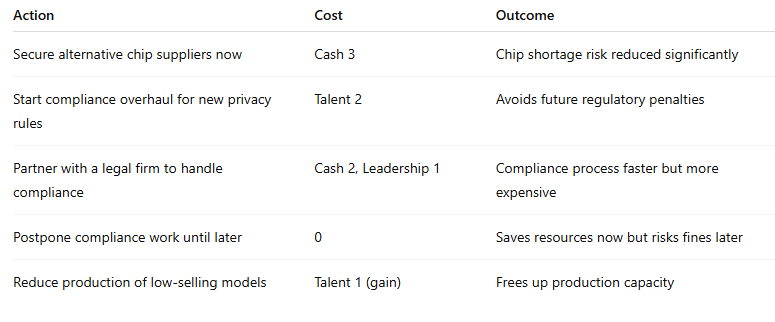
Round Three – Strategic Pivot:
New Information:
Two hospital networks pause orders until product updates are confirmed. AIWell partners with a global insurer to subsidize their devices.
Choose up to 2 actions:
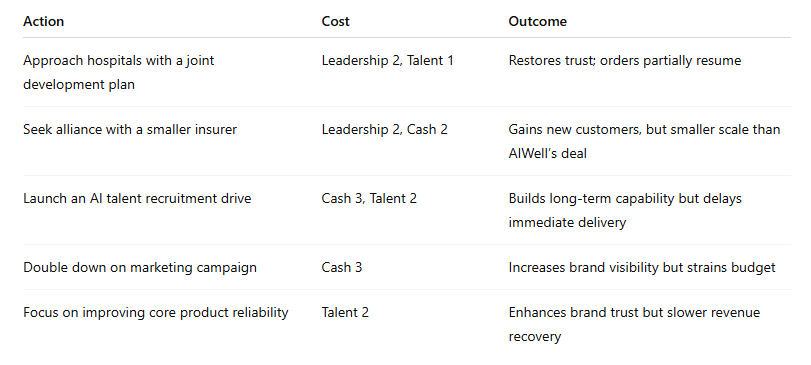
Scoring at the End:
1. Financial Stability: Remaining cash + revenue-impacting actions taken.
2. Strategic Positioning: Long-term moves like R&D, partnerships, AI talent.
3. Cultural Alignment: Actions that maintain trust, employee morale, and customer loyalty.
Highest score: Balanced investment across all three areas.
Lowest score: Over-investment in one area at the expense of others.

Strategic Tools for Simulation Response
The simulation is designed as a proving ground for the core frameworks introduced throughout the program. Each tool enables participants to structure ambiguous information, surface trade-offs, and justify decisions under severe time constraints.
SWOT Under Pressure:
The first impulse in a crisis is often to act before thinking; the simulation counters this tendency by requiring a rapid yet disciplined reassessment of PulseWave’s competitive position. Teams revisit internal strengths—such as a robust distribution network, long-standing B2B healthcare contracts, and a trusted clinical brand—and weigh them against weaknesses like limited AI expertise, underfunded R&D, and a sluggish e-commerce channel. They then map external opportunities (e.g., potential regulatory incentives for medical-grade wearables, growing consumer trust in PulseWave’s data-privacy record) against threats such as price erosion, accelerated IP theft, or aggressive insurer backing for AIWell. Because the SWOT is compiled under a strict time limit, participants practice distinguishing signal from noise, focusing on the few factors most likely to influence near-term decisions and long-term viability.
Scenario Sprint:
Disruption rarely unfolds along a single trajectory. To avoid locking into one assumption set, teams conduct a “scenario sprint”—a compressed version of full scenario planning. Three divergent narratives frame the exercise:
1. Rapid Scaling: AIWell quickly secures reimbursements through major insurers, capturing mass-market adoption.
2. Privacy Backlash: Data-security concerns stall AIWell’s momentum, opening space for trust-centric competitors.
3. Open-Source Shock: A third entrant releases a free software platform, pushing device prices toward commodity levels.
Teams outline early-warning indicators for each scenario—such as insurer press releases, regulatory inquiries, or developer-community traction—then draft flexible strategic responses: hedged R&D bets, partnership contingencies, or phased marketing spends triggered by specific signals. The sprint reinforces futures thinking while preserving the speed demanded by the simulation clock.
RACI Realignment for Crisis Execution:
Clear decision rights become critical when new information arrives by the minute. Early in the exercise, teams construct (and may revise) a rapid RACI map that assigns who is Responsible, Accountable, Consulted, and Informed for pivotal moves: adjusting price strategy, negotiating supplier terms, approving emergency spend, and issuing public statements. By forcing explicit ownership, the tool mitigates bottlenecks and prevents duplication. As successive disruption rounds introduce chip shortages, regulatory wrinkles, or public-relations flare-ups, teams revisit the RACI to ensure accountability matches evolving priorities—illustrating how agile governance sustains momentum amid chaos.
Balanced Scorecard Pivot:
Performance measurement must evolve as strategy pivots. Teams quickly revise their Balanced Scorecard to reflect what matters most in a destabilized environment:
• Financial Perspective: Weekly burn rate and projected break-even horizon replace annual EBITDA targets.
• Customer Perspective: Real-time retention, Net Promoter Score shifts, and digital-engagement spikes take precedence over static market-share goals.
• Internal-Process Perspective: Prototype-to-market cycle time and supply-chain risk indices override routine throughput metrics.
• Learning & Growth Perspective: Hours devoted to AI upskilling, data-science hiring velocity, and cross-functional collaboration scores supersede generic training completion rates.
By tying each adjusted KPI back to the overarching vision—delivering trustworthy, clinically valuable wearables—teams ensure that short-term firefighting does not erode long-term identity.
Together, these four tools create an integrated decision architecture for the simulation: SWOT clarifies current position, the scenario sprint illuminates possible futures, RACI realignment secures fast execution, and the Balanced Scorecard pivot tracks progress without losing sight of purpose. Used iteratively across timed rounds, they transform reactive instincts into disciplined, strategy-driven action.

Strategic Behavior Under Disruption
Frameworks guide analysis, but in a live disruption the difference between success and failure often comes down to leadership habits and team dynamics. The simulation therefore places as much emphasis on how decisions are made as on what decisions are chosen. Participants experience firsthand the behavioural disciplines that turn abstract strategy into decisive, coordinated action.
Leading Through Ambiguity:
Disruptive events arrive wrapped in incomplete data, conflicting signals, and intense time pressure. Effective leaders do not wait for perfect clarity; instead, they anchor decisions to core values and overarching purpose, using these as a compass when external reference points are blurred. They openly acknowledge uncertainty, frame it as a shared challenge, and articulate a provisional path forward—making it clear that course-corrections are expected as new facts emerge. Short-term losses or setbacks are reframed within a longer strategic narrative, preserving morale and stakeholder trust. Crucially, leaders model a test-and-learn mindset: they set hypotheses, act on the best available information, measure early results, and iterate rapidly. This combination of decisiveness and humility converts ambiguity from paralyser to catalyst.
Balancing Risk and Speed:
In fast-moving markets, the greater danger can be hesitation rather than error. The simulation forces teams to weigh the costs of delay against the risks of premature action. Strategic poise requires continually calibrating three balancing acts:
• Speed versus precision – deciding when a “good-enough” data set justifies a move, and when additional analysis truly adds value.
• Control versus delegation – determining which calls must stay central to maintain coherence, and which can be pushed to functional experts for faster execution.
• Innovation versus brand risk – gauging whether bold pivots (price cuts, partnership gambits, minimum-viable products) amplify long-term positioning or erode hard-won trust.
High-impact teams surface these tensions explicitly, debate them openly, and document the rationale behind each trade-off. Doing so creates a learning record that can be revisited in the debrief—and replicated in real crises.
Team Dynamics:
Disruption magnifies interpersonal patterns: strong collaboration accelerates problem-solving, while hidden friction compounds stress. The simulation therefore serves as a mirror, revealing how power, communication, and bias play out under pressure. Key reflection points include:
• Participation balance – Do particular voices dominate while others retreat? Inclusive teams harness wider insight and challenge group-think.
• Decision style – Is authority exercised autocratically for speed, or does the team strive for rapid consensus? Each style has merits; the critical factor is self-awareness of default tendencies and their situational fit.
• Cognitive diversity – Are options broadened by sourcing varied perspectives, or narrowed by confirmation bias? Teams that actively solicit dissent and test assumptions typically reach more resilient conclusions.
By observing these dynamics in real time—and discussing them candidly in the debrief—participants gain practical insight into the relational side of strategic execution, ensuring that technical acumen is matched by collaborative effectiveness when disruption strikes.

Simulation Debrief: Reflection and Feedback
The debriefing phase transforms a high-pressure simulation into a high-impact learning experience. It provides the structured space necessary for participants to step back, analyze their decisions, and extract insight not only from what went well but also from what was overlooked. This phase shifts the focus from results to reasoning—making it clear that the true value lies not in whether a fictional company succeeded or failed, but in how teams thought, acted, and collaborated under real-world constraints.
Reviewing Decision Rationale:
Participants begin the debrief by retracing the logic behind their strategic decisions. This includes:
• Why certain initiatives were prioritized over others
• How limited resources were allocated
• Which trade-offs were accepted and which were avoided
• Whether short-term actions were balanced with long-term implications
By articulating the reasoning process, teams uncover unspoken assumptions, reveal inconsistencies, and highlight moments of clarity or doubt that shaped the outcome. These reflections help internalize strategic thinking patterns that can be applied beyond the simulation context.
Identifying Successes and Blind Spots:
Teams examine both the effective moves they made and the missed opportunities or misjudgments that weakened their position. This includes:
• Recognizing when they were too reactive or too slow to pivot
• Acknowledging where biases may have narrowed their perspective
• Celebrating quick wins, innovative solutions, or moments of strong alignment
These insights clarify how complex factors such as emotional response, role dynamics, and external framing can subtly influence strategic performance.
Tool Application Under Pressure:
The debrief assesses how well each strategic framework was applied in practice:
• Was the SWOT analysis used meaningfully, or treated as a checklist?
• Did the team build robust scenarios or default to linear assumptions?
• Were Balanced Scorecard adjustments aligned with the emerging challenge?
• How effectively did they integrate scenario planning into iterative decisions?
This allows participants to deepen their understanding of each tool, distinguishing between theoretical knowledge and applied skill.
Communication and Group Dynamics:
A crucial element of the debrief focuses on how the team functioned interpersonally. Facilitators guide participants to reflect on:
• Communication clarity and listening behaviors
• Decision-making style: consensus-driven, hierarchical, or fragmented
• Role clarity and contribution balance
• Moments of tension, alignment, or role conflict
These insights strengthen team self-awareness, improve collaboration habits, and prepare leaders to build cohesion in high-stakes environments.
Facilitator Feedback:
Expert facilitators provide structured input on individual and team performance across several dimensions:
• Strategic logic – Was there a clear line from vision to choices to action?
• Framework integration – Were tools used rigorously, flexibly, and in context?
• Leadership behaviors – How did team members show initiative, adapt, or influence others?
• Internal alignment – Did the team stay aligned on goals and approach under stress?
Facilitator observations often surface blind spots or latent strengths that participants may not recognize on their own. Constructive feedback is delivered with a developmental focus, encouraging participants to view the simulation as a launchpad for future growth.
Closing the Loop:
Finally, participants are guided to extract key personal takeaways—not just about strategic content, but about how they think and lead. Teams may complete feedback surveys, draft improvement commitments, or participate in a group reflection exercise. By converting action into insight and insight into future intention, the debrief ensures that the simulation’s lessons endure beyond the exercise—fortifying the strategic reflexes needed to lead in disruption.

Case Study: Cisco Systems
Cisco Systems, a global leader in networking equipment, implemented a company-wide simulation program during a period of extreme market volatility in the early 2000s. Facing disruptive competition from agile startups and rapidly shifting customer demands, Cisco invested in scenario-based planning and enterprise-wide simulation training.
Executives and mid-level leaders participated in simulations that introduced hypothetical but realistic crises—like cloud computing entrants, supply chain interruptions, and government regulation of hardware components. The simulations forced teams to reconfigure strategies in real-time, identify resource gaps, and create backup plans.
The result was not just better preparedness but a cultural shift toward adaptive strategy. Cisco credited simulation exercises with:
• Accelerating its cloud strategy
• Diversifying its software offerings
• Shortening strategic planning cycles
This case highlights the power of simulation in preparing large organizations to think and act strategically under real-world stress conditions.

Exercise 1.10: Strategic Playback Reflection

Course Manual 11: Getting It Done
A compelling strategy can spark ambition, set direction, and inspire transformation—but without the discipline of execution, it remains a theoretical exercise. Execution is where strategic intent is tested in the real world, and where its success or failure becomes evident. The disconnect between vision and outcome rarely stems from a flawed idea; more often, it results from the organization’s inability to operationalize that idea effectively.
This gap between strategy and execution is not just a procedural failure—it is a systemic one. It reflects breakdowns in planning precision, leadership alignment, resource allocation, and accountability structures. A strategic plan may capture competitive positioning, growth aspirations, and market foresight, but unless these are decomposed into actionable tasks with clear ownership, measurable milestones, and robust governance, they are unlikely to gain traction.
Execution is the point at which organizational constraints—budgetary limitations, talent gaps, entrenched behaviors, and siloed thinking—meet the demands of coordinated change. It demands more than operational efficiency; it requires the ability to adapt plans in real time, integrate feedback quickly, and maintain alignment across all levels of the business. High-performing organizations excel not just because of the quality of their strategies, but because of their ability to deploy those strategies with focus, consistency, and agility.
This course manual explores what it takes to build an execution system that converts strategic ambition into tangible outcomes. It examines the operational infrastructure needed to support large-scale initiatives, the mechanisms for ensuring continuous alignment, and the leadership behaviors that reinforce accountability and follow-through. In particular, it emphasizes the need for clear goals, flexible planning, adaptive resource deployment, and the cultural norms that reward completion and learning—not just idea generation.
By understanding execution not as a final step, but as an ongoing, iterative process, organizations can create feedback loops that continuously refine both strategy and delivery. This manual provides frameworks and real-world practices to help teams bridge the gap between strategy and action, ensuring that their plans do not gather dust, but instead drive measurable, lasting impact.

From Strategic Choice to Actionable Agenda
The transition from high-level strategic thinking to concrete execution requires a disciplined process of translation. Strategies—however compelling—only become effective when they are unpacked into actionable agendas that specify what needs to be done, by whom, and by when. This step bridges the conceptual and the operational, ensuring that strategic intentions do not remain abstract but are reflected in the actual work of the organization.
Decomposition of Strategic Aims:
The first task in turning strategy into execution is to break down broad enterprise-level goals into a hierarchy of actionable components. This begins by identifying key strategic priorities and translating them into a cascading structure of deliverables—typically categorized into programs, projects, and specific tasks.
Enterprise objectives such as “enhance digital competitiveness” or “become a sustainability leader” are inherently directional and must be rendered operational. For instance, a goal to “expand digital market share” can be decomposed into a set of measurable initiatives such as launching two mobile applications within the next 12 months, migrating 70% of customer interactions to digital channels, or achieving 15% of total revenue through e-commerce by the end of the fiscal year. This decomposition makes the strategy not only clear but actionable and accountable.
Each initiative must have a defined owner, a timeline, and interlocking metrics that track progress. Ambiguity is the enemy of execution; clarity in roles, responsibilities, and deliverables ensures that workstreams can proceed without misalignment or duplication.
Critical Path Identification:
After breaking down the strategy, it is essential to determine which parts of the plan carry the greatest influence over successful execution. This is the process of identifying the critical path—the sequence of initiatives or activities that directly affect the timing and viability of the entire strategic plan.
By mapping interdependencies between functions and initiatives, organizations can expose where execution is likely to slow down, encounter bottlenecks, or fail due to lack of coordination. For example, launching a new product might rely on both the completion of R&D prototypes and the approval of regulatory compliance—a delay in either can stall the broader strategy.
Prioritization at this stage involves identifying initiatives with high system-wide leverage. These are efforts that, once completed, unlock capacity or enable progress elsewhere in the system. For instance, digitizing a supply chain might remove manual bottlenecks, improve data accuracy, and speed up product development cycles—all of which have ripple effects on other parts of the business.
By recognizing and sequencing these keystone efforts, organizations can reduce execution risk and maximize return on strategic energy.
Sequencing for Momentum:
A well-sequenced execution plan not only manages dependencies but also builds momentum. Early-stage wins—quick, visible victories that demonstrate strategic traction—play a critical role in mobilizing commitment, energizing teams, and validating the broader direction.
Staging early successes can be a tactical decision, particularly in complex transformations where skepticism or fatigue might otherwise undermine progress. For instance, automating a back-office process that cuts costs and shortens cycle times can offer an early proof point that validates broader digitization efforts.
On the other hand, initiatives that carry significant technical, regulatory, or organizational risk should be timed carefully. These higher-risk efforts are best pursued once foundational capabilities—such as new systems, talent, or partnerships—are in place. This reduces the chance of failure and ensures that setbacks, if they occur, are localized rather than derailing the entire strategy.
Sequencing also takes into account resource allocation. By avoiding overload or initiative congestion—where too many changes compete for limited attention and capacity—organizations can maintain focus and increase the likelihood of successful delivery.
Ultimately, the shift from strategic choice to actionable agenda is about intentional design. It is about ensuring that every line of effort contributes meaningfully to the overarching strategy, that progress is measured and visible, and that the path forward is not just logical, but executable. With careful decomposition, critical path thinking, and thoughtful sequencing, strategic plans become living agendas—ready to drive measurable change in the real world.

Designing Execution-Ready Plans
After translating strategic intent into a structured agenda, organizations must ensure that every initiative is not only clearly defined but also realistically executable. This step requires a deliberate planning architecture that balances detail with flexibility, verifies resource alignment, and anticipates failure points before they surface. Poor execution often stems not from bad ideas, but from underdeveloped plans that overlook practical realities. Designing execution-ready plans mitigates this risk by embedding rigor, agility, and foresight into every stage of implementation.
Work-Package Architecture:
At the heart of an execution-ready plan lies the work package—a self-contained segment of strategic work with defined boundaries. Effective execution planning begins by clearly defining the scope, deliverables, success criteria, and resource envelope for each work package. This clarity ensures that project teams are not operating with vague mandates or open-ended timelines.
For example, a strategic objective to “increase regional market penetration” may be broken down into work packages such as local customer research, regional product customization, channel partner onboarding, and targeted marketing rollouts. Each package must specify what constitutes success—be it the completion of a pilot, attainment of a customer conversion rate, or realization of a financial target—and allocate the resources (budget, personnel, tools) required to achieve it.
Rolling-wave planning is especially useful in this context. It involves planning in cycles: tasks scheduled for the immediate 90-day period are detailed with clarity and precision, while tasks further into the future are outlined at a higher level. This approach accommodates change, allowing for plan refinement as new information emerges and market conditions shift. It avoids front-loading effort into over-engineering plans that may need to evolve anyway, and instead emphasizes structured adaptability.
Resource Verification:
One of the most common causes of execution failure is the misalignment between ambitions and available resources. Even the most well-designed initiatives falter when funding is insufficient, critical talent is unavailable, or enabling technologies are still under development. This disconnect creates execution drag—where projects stall, miss milestones, or become vulnerable to scope erosion.
To prevent this, a disciplined resource verification process is essential. Prior to green-lighting any workstream, execution teams must align capital budgets, confirm the availability of required skills and personnel, and assess the readiness of enabling infrastructure such as IT systems, vendor contracts, or physical assets.
This verification should not be a one-time event. Instead, projects benefit from go/no-go checkpoints—predefined decision gates tied to resource thresholds. For instance, an initiative to expand into a new geographic region might only proceed if specific headcount targets are met or if regulatory approvals are secured by a certain date. If these thresholds are not met, the initiative is paused or re-scoped.
These checkpoints act as friction points—forcing a deliberate pause for reflection before irreversible investments are made. They protect against the common pitfall of pursuing “half-funded” initiatives, which often result in sunk costs without delivering full strategic value.
Risk Anticipation:
Even the most carefully planned strategies face execution risk. Unexpected changes in market dynamics, internal resistance, supplier issues, or technical failures can derail timelines and compromise outcomes. Rather than treat risk reactively, effective execution planning builds in proactive risk anticipation from the outset.
One powerful technique is the pre-mortem analysis. Unlike a traditional risk assessment that predicts what might go wrong, a pre-mortem assumes the initiative has already failed and asks: What were the most likely causes? This inversion prompts sharper thinking and helps teams surface hidden vulnerabilities, such as untested assumptions, overreliance on specific stakeholders, or process weaknesses.
Once these risks are identified, organizations can develop mitigation playbooks—predefined response plans that include trigger conditions (early warning signs), escalation paths (who needs to be informed and when), and designated crisis roles. These playbooks ensure that if disruption occurs, the organization is not caught unprepared. Instead of improvising under pressure, teams execute an already rehearsed and agreed-upon plan.
This proactive approach to risk management can be broken down into five interconnected stages, as shown in the graphic. Risk Identification and Assessment establishes a clear understanding of potential threats and their potential impact. Preventive Measures and Mitigation Strategies outline the steps to reduce the likelihood or severity of those risks. Regular Monitoring and Review ensures that risks are continually tracked, and strategies are adjusted as conditions evolve. Integration of Technology and Data Analytics enhances decision-making by providing timely insights and predictive capabilities. Finally, Crisis Preparedness and Scenario Planning equips organizations to respond swiftly and effectively if high-impact risks materialize. Together, these steps create a structured and adaptive framework that strengthens resilience and safeguards strategic execution.
Importantly, this risk readiness extends to both technical and human dimensions. Cultural resistance, leadership turnover, or loss of key champions can be as damaging as technical issues. By anticipating a broad range of possible disruptions and embedding response capabilities into the execution architecture, organizations enhance their resilience and increase the odds of successful delivery.
In summary, execution-ready planning is not about locking every detail in place. It’s about preparing for action with sufficient clarity, capacity, and foresight to adapt while staying on course. With structured work packages, verified resources, and anticipated risk responses, organizations can confidently move from planning to doing—knowing that they are equipped not just to start, but to sustain and complete strategic initiatives.

Operational Feasibility: Capabilities, Processes, and Systems
Even the most strategically sound plans can falter if the organization lacks the operational infrastructure to support them. Execution is not only about intent and prioritization—it depends on the hard realities of whether the company has the capabilities, processes, and systems required to bring strategic objectives to life. This section outlines the core components of operational feasibility, emphasizing the need to audit internal readiness, align operating models, and ensure integrated systems that support both control and agility.
Capability Audit:
Strategic ambitions are realized through capabilities—the organizational muscles that deliver outcomes. These include both core capabilities, such as product innovation, customer relationship management, and brand positioning, and enabling capabilities, such as supply chain agility, regulatory compliance, data analytics, and cybersecurity.
An execution-ready strategy begins with a capability audit, which compares current capabilities against those required to deliver on each major initiative. This audit exposes both strengths that can be leveraged and gaps that must be addressed. For example, a digital transformation strategy may reveal a shortfall in cloud engineering talent or insufficient change management expertise.
Once gaps are identified, leadership must determine how to close them. Options typically include:
• Build: Develop capability internally through recruitment, training, or upskilling.
• Buy: Acquire companies or talent with the necessary skills.
• Partner: Form alliances or joint ventures to access external capabilities while maintaining strategic focus.
• Automate: Use technology to replace manual processes or enhance capacity.
The choice depends on strategic priorities, resource constraints, urgency, and long-term control requirements. For instance, building internal expertise offers more control and alignment with culture but takes time, whereas partnerships or automation may offer faster implementation at the cost of complexity or dependency.
A well-structured capability audit avoids misalignment between ambition and execution reality—ensuring that plans are grounded in what the organization can reliably deliver.
Process Alignment:
Capabilities are only as effective as the processes through which they are applied. Execution demands not just skills, but also operating models that support strategic goals. This requires organizations to redesign key workflows to match new strategic priorities.
For instance, if a company shifts from product-centric to customer-centric strategy, legacy processes built around production efficiency may need to be replaced with agile, cross-functional workflows that prioritize customer feedback, iteration, and rapid prototyping. Traditional stage-gate processes may give way to agile sprints, allowing teams to move faster and incorporate learning continuously.
Beyond redesign, processes must be standardized and documented to support scale and consistency. Well-articulated Standard Operating Procedures (SOPs) translate strategic intent into repeatable daily behavior—making it easier for teams across functions and geographies to align their efforts. SOPs also help embed new capabilities into everyday routines, reduce variability, and support performance monitoring.
When process alignment is neglected, organizations face friction, duplication, and rework that erode execution speed and quality. Conversely, when workflows are aligned with strategy, operational decisions flow more smoothly, and cross-functional coordination improves.
The SOP graphic breaks down the concept of a Standard Operating Procedure into its three core elements. Standard refers to the regulations, documentation, and quality benchmarks that set consistent expectations. Operating relates to the development, implementation, and ongoing processes that ensure those standards are applied effectively in day-to-day operations. Procedure covers the strategic guidance, step-by-step instructions, and workflows that translate high-level goals into consistent action. Together, these elements form a structured approach that not only supports strategic alignment but also ensures repeatability, efficiency, and quality across all functions.
Systems Integration:
In a fragmented systems environment, decision-making slows, errors multiply, and performance monitoring becomes unreliable. Systems integration—the ability of data platforms, financial systems, and operational dashboards to communicate seamlessly—is essential to execution feasibility.
Integrated systems create a single source of truth across the organization. This allows for consistent reporting, timely visibility into progress, and faster decision-making. For instance, linking supply chain data with financial forecasting enables better inventory management, cost control, and customer delivery metrics—all critical in high-speed execution environments.
Beyond integration, systems must support scenario-based forecasting and planning. The ability to model different market conditions—such as demand shifts, raw material shortages, or policy changes—helps teams anticipate challenges and adjust course before disruptions occur. Embedding simulation tools into performance dashboards equips decision-makers with the foresight needed to pivot strategically.
Moreover, real-time data availability enhances accountability. When KPIs are visible to all relevant stakeholders, governance becomes distributed, and intervention can happen closer to the front line. This visibility also fosters alignment—ensuring that everyone is working from the same assumptions, targets, and timelines.
In conclusion, operational feasibility is not an afterthought—it is a strategic discipline in its own right. A strong plan of execution relies on three foundational pillars:
• Audited and aligned capabilities that match initiative demands,
• Reengineered processes that embed strategy into the flow of work,
• Fully integrated systems that enable data-driven action and resilience.
Together, these elements ensure that strategy is not just conceptualized at the top, but executed flawlessly across the enterprise. The following sections will explore how to monitor this execution over time and course-correct when necessary.

Governance, Monitoring, and Control
A sound execution plan requires more than project management—it demands a governance framework that sustains momentum, encourages agility, and ensures alignment with strategic intent. Governance, in this context, refers to the structures, tools, and routines that allow leadership to oversee execution without creating unnecessary bureaucracy. Monitoring provides visibility into progress and bottlenecks, while control mechanisms enable timely course correction. This section explores how to operationalize governance through OKRs, integrated dashboards, and decision-making protocols that drive both discipline and responsiveness.
Objectives and Key Results (OKRs):
The OKR framework (Objectives and Key Results) is increasingly favored by organizations seeking to bridge strategic vision with daily operations. Unlike traditional performance plans, which often track isolated metrics, OKRs emphasize alignment and focus.
Each Objective represents a clearly defined, qualitative ambition—something meaningful that reflects a strategic priority. For instance, “Improve customer retention” or “Accelerate digital innovation.” These are not tasks but directional goals meant to rally teams around shared purpose.
Each objective is then supported by three to four Key Results—quantitative measures that define what success looks like. These might include “reduce customer churn from 10% to 6%” or “launch two new digital features by Q3.” Key results are ambitious yet realistic, creating a transparent scoreboard for performance.
To remain dynamic, OKRs are typically set on a quarterly cycle, allowing teams to respond to shifts in external conditions or internal progress. Monthly business reviews serve as checkpoints to discuss progress, identify obstacles, and recalibrate key results if necessary. This frequency helps maintain focus without creating excessive overhead.
Integrated Dashboards:
Visibility drives action. Execution cannot be managed in silos or spreadsheets—it requires integrated dashboards that offer a comprehensive and real-time picture of organizational health.
These dashboards consolidate metrics across key dimensions:
• Financial (e.g., gross margin, cost-to-serve)
• Operational (e.g., throughput time, error rates)
• Customer (e.g., Net Promoter Score, retention rate)
• Learning and Growth (e.g., training completion, innovation velocity)
A well-designed dashboard presents both leading indicators and lagging indicators. Leading indicators, such as pipeline velocity or internal quality defect rates, offer early warning signals. They help teams detect execution risks before they manifest in bottom-line results. Lagging indicators—like quarterly revenue or EBITDA margin—validate the impact of execution after the fact.
Importantly, dashboards must be live and accessible across functions. Decision-makers at all levels should be able to pull data as needed, rather than relying on static reports. Advanced dashboards may include predictive analytics and scenario modeling, allowing teams to simulate the impact of changes in demand, resource availability, or market conditions.
In high-performing organizations, dashboards are reviewed in regular rhythm—whether weekly for tactical operations or monthly for strategic steering. This frequency transforms data into action and embeds performance conversations into the organizational cadence.
Decision Rights and Routines:
Clarity of decision-making authority is fundamental to execution. Without it, teams stall waiting for approval, duplicate efforts, or make misaligned decisions that erode strategic focus.
The RACI model (Responsible, Accountable, Consulted, Informed) provides a simple yet powerful framework for defining decision rights across initiatives:
• Responsible: Those who execute the work
• Accountable: The single person ultimately answerable for the outcome
• Consulted: Stakeholders who offer input before decisions
• Informed: Parties who are kept updated after decisions are made
For each major initiative, a published RACI chart eliminates ambiguity and fosters ownership. These charts are living documents, updated as scopes evolve or team structures shift.
In parallel, organizations must establish governance routines that balance oversight with autonomy:
• Weekly stand-ups (15–30 minutes): Focus on tactical progress, blockers, and next steps
• Monthly steering committees: Monitor initiative performance, reallocate resources, and adjust priorities
• Quarterly portfolio reviews: Evaluate the full slate of strategic initiatives for alignment, ROI, and risk exposure
This cadence creates rhythm without micromanagement. It ensures that leadership stays informed and empowered to intervene when necessary—without disempowering teams on the ground.
To maximize effectiveness, these routines are often supplemented with playbooks and escalation paths, enabling consistent handling of common execution risks and faster decision-making in moments of ambiguity or tension.
In summary, execution governance is not a control mechanism imposed from above—it is a collaborative system that empowers, aligns, and enables. By combining dynamic OKRs, transparent dashboards, and disciplined decision routines, organizations build the architecture that turns strategy into sustained action. The next section will examine how to adapt this architecture over time to remain responsive in a changing environment.

Adaptive Management and Continuous Improvement
Execution plans seldom unfold exactly as envisioned; market dynamics, operational surprises, and human variables introduce constant flux. Adaptive management is the discipline of detecting those shifts early, learning from them rapidly, and course-correcting without losing sight of strategic intent. It transforms static plans into living systems that evolve through continuous feedback, iterative cycles, and institutional learning.
Feedback Loops:
Effective adaptation begins with fast, bidirectional feedback between the frontline and decision-makers. When insights travel upward quickly—and when guidance travels downward with equal speed—organizations gain the agility to refine tactics before small issues escalate.
Frontline Insight Mechanisms:
• Digital suggestion boards, mobile pulse surveys, and chat-based feedback channels give frontline teams a voice in real time.
• Structured after-action reviews (AARs) follow key milestones or incidents, capturing what worked, what failed, and why. These reviews focus on facts and lessons—not blame—creating psychological safety for honest reflection.
Lightweight Experimentation:
• A/B tests, limited-scope pilots, and minimum-viable-feature releases serve as controlled probes into new markets or processes.
• Results are measured against predefined success metrics and shared openly, validating assumptions before committing large budgets or global rollouts.
The combination of rapid insight capture and small-scale experimentation ensures that course corrections are evidence-based rather than intuition-driven.
Iteration Cycles:
Adaptive organizations operate on a “plan–do–learn–adapt” spiral rather than a linear plan-and-execute model. They bake iteration into their cadence:
• Micro-Adjustments Weekly: Teams implement minor corrections—reallocating resources, tweaking customer messaging, resolving process bottlenecks—during weekly stand-ups or Kanban reviews. These changes are quick, reversible, and data-informed.
• Strategic Pivots Quarterly: Larger directional shifts—entering an adjacent market, rewriting a product roadmap—are examined every quarter, often during OKR resets or portfolio reviews. This guards against knee-jerk overreactions while preserving responsiveness.
• Reversible vs. Irreversible Decisions: Reversible decisions (pricing tests, feature toggles) warrant speed and high tolerance for failure. Irreversible moves (major capital investments, brand repositioning) deserve deeper analysis. Distinguishing between the two allows organizations to maintain velocity without incurring existential risk.
By normalizing frequent iterations, organizations build resilience; mistakes become sources of data, not causes for delay or blame.
Knowledge Capture:
Learning loses value if it remains local. Systematic knowledge capture ensures that insights scale across functions, projects, and time:
• Living Repositories: Execution playbooks, internal wikis, and searchable databases house AAR summaries, SOP updates, and “tribal knowledge” gleaned from experiments. Version control and tagging keep content current and discoverable.
• Retrospective Rotation: Rotating team members through retrospective sessions exposes them to diverse projects and challenges, accelerating cross-pollination of best practices. Lessons migrate organically as people move between teams.
• Communities of Practice: Voluntary forums—virtual or in-person—enable practitioners (e.g., product managers, supply-chain analysts) to exchange stories, templates, and benchmarks. These networks keep tacit knowledge flowing even when formal projects conclude.
By institutionalizing learning, organizations avoid reinventing solutions and steadily raise their execution maturity. Each cycle of plan–do–learn–adapt becomes quicker and more informed, compounding strategic advantage over time.
Adaptive management turns execution into a dynamic capability: one that senses change early, responds intelligently, and embeds learning so the entire organization levels up. The next section explores the cultural and leadership behaviors that reinforce—and sometimes impede—this continuous-improvement ethos.

Cultural and Leadership Drivers of Execution
Systems, dashboards, and playbooks create the scaffolding for execution, but it is culture—reinforced by daily leadership behavior—that animates the structure and keeps it resilient under pressure. An organization’s ability to deliver consistently on strategy hinges on shared norms about ownership, learning, and follow-through. Three cultural pillars, shaped directly by leadership conduct, are especially decisive: accountability, psychological safety paired with performance challenge, and leader standard work.
Accountability Culture:
A strong execution culture treats commitments as promises, not aspirations. Leaders embed this norm by aligning incentives with both results and execution discipline. Sales or cost targets alone encourage short-term gains, but when scorecards also reward early risk identification, cross-functional cooperation, and adherence to process controls, people learn that how objectives are achieved matters as much as whether they are achieved.
• Dual-Metric Incentives: Bonuses and recognition link outcome KPIs (e.g., revenue, margin, on-time launch) with leading indicators of sound execution (e.g., forecast accuracy, risk log updates, mitigations activated on time).
• Public Recognition Rituals: Town-hall spotlights or internal newsletters celebrate teams that meet milestones and openly share lessons from near-misses. This normalizes transparency and reinforces the expectation that commitments are visible, measurable, and owned.
When accountability is collective and reputational, peer pressure supplements formal controls, creating a self-regulating engine that sustains execution momentum.
Psychological Safety and Challenge:
Execution thrives where people feel safe to surface problems early—and responsible for solving them quickly. Psychological safety removes the fear of blame, while a culture of challenge ensures standards remain uncompromising.
• Candid Escalation Channels: Digital “stop-the-line” buttons, open door hours, or anonymous hotlines allow frontline employees to flag quality slips or timeline risks without bureaucratic hurdles.
• Speak-Up, Deliver-Up Standard: Teams are encouraged to raise issues as soon as they appear, but are also expected to present preliminary solutions or mitigation ideas. The norm becomes: “Alert early, arrive prepared.”
• Failure Framing: Post-mortems focus on systemic causes, not individual fault, converting errors into process improvements. Repeated avoidance of known risks, however, triggers performance coaching—signalling that safety is not immunity from accountability.
This duality—safety plus stretch—cultivates a climate where rigor and learning coexist, accelerating cycle times without sacrificing quality.
Leader Standard Work:
Leaders set the cultural tone through what they repeatedly do, not just what they declare. Leader standard work codifies visible, routine behaviors that model execution discipline and remove barriers for teams.
• Gemba Walks and Reality Checks: Senior executives spend scheduled time “at the gemba”—the production floor, dev hub, service desk—observing workflows, asking clarifying questions, and reinforcing SOPs. These visits signal respect for frontline expertise and keep leadership grounded in operational realities.
• Personal OKR Visibility: Executives publish their own quarterly objectives and key results on the same dashboards used by teams, demonstrating that accountability is bidirectional.
• Rapid Blocker Removal: When teams escalate obstacles, leaders respond within predefined turnaround times—authorising resources, realigning priorities, or brokering cross-unit cooperation. Speedy unblock actions show that leadership’s role is to enable execution, not merely audit it.
Over time, consistent leader standard work embeds a predictable rhythm: objectives set, progress monitored, blockers cleared, learning captured. This rhythm becomes muscle memory across the organization, tightening the link between strategy, culture, and day-to-day activity.
A culture of accountable, candid, and leader-enabled execution transforms frameworks and processes into sustained performance. By coupling structural rigor with human enablers, organizations ensure that strategies are not just launched but lived—delivering measurable impact in a reliable, repeatable way.

Case Study: Zara – Fast Fashion, Fast Execution
Zara, the flagship brand of Inditex, revolutionized apparel retail by compressing concept-to-shelf lead times from industry averages of six months to as little as three weeks. The company’s strategy hinges on ultra-responsive design, tight production runs, and data-driven replenishment. Execution excellence turns this strategy into profit.
Execution Mechanics:
• Integrated Design and Production: Designers, buyers, and production planners share real-time data from store POS systems. This proximity allows immediate iteration of styles in response to emerging trends.
• Just-in-Time Manufacturing: Short, frequent runs in near-shore factories maintain freshness while limiting inventory risk.
• Tightly Coupled Logistics: Centralized distribution in Spain ships twice each week to all global stores, standardizing delivery windows.
• Feedback-Driven Merchandising: Store managers report daily which items customers try but do not purchase, feeding micro-adjustments in design.
Strategic Payoff:
Zara’s execution engine yields enviable inventory turns, minimal markdowns, and a constant sense of newness that keeps customers returning. The case illustrates how relentless alignment of processes, data flows, and cultural norms converts strategic vision (“democratize runway fashion quickly”) into consistent market advantage.

Exercise 1.11: Execution Health-Check

Course Manual 12 : Your Personal Strategic Edge
Strategic thinking, once considered the domain of corporate executives and boardroom planners, is now essential for individual advancement in an increasingly dynamic and competitive environment. The modern professional landscape is defined by rapid change—technological shifts, evolving customer expectations, globalization, and disruptive innovation constantly reshape the terrain. In such an environment, the capacity to think strategically at a personal level becomes a key differentiator. It empowers individuals not only to respond to external shifts but to proactively shape their own pathways forward.
Unlike reactive planning, which focuses on immediate problems and short-term fixes, strategic thinking cultivates foresight and intentionality. It encourages the continuous alignment of one’s personal and professional development with broader market realities. Individuals who adopt a strategic mindset are better equipped to recognize emerging opportunities, reposition themselves during transitions, and build resilience in the face of uncertainty. They frame their ambitions with clarity, evaluate their capabilities with discipline, and structure their actions in a way that creates long-term leverage.
At its core, personal strategic thinking is about being purpose-driven rather than task-driven. It involves making choices not just because they are available, but because they support a defined trajectory—one that is aligned with both internal values and external relevance. Whether pursuing career advancement, launching a venture, or seeking deeper professional impact, individuals with strategic awareness operate differently. They are deliberate in building relationships, intentional about acquiring new skills, and selective about where they devote time and energy.
This course manual is designed to help cultivate that mindset. It begins with tools for assessing one’s current position—clarifying strengths, surfacing blind spots, and identifying strategic gaps. It then explores how to construct a personal vision and define a set of guiding values that act as a compass during times of change. From there, it provides methods for developing a balanced portfolio of capabilities, nurturing high-value networks, and building a personal brand that aligns with strategic goals. Finally, it addresses how to maintain momentum through disciplined execution, regular feedback, and the ability to pivot without losing direction.
The objective is not just to think strategically but to live strategically—embedding foresight, purpose, and adaptability into everyday decisions. As industries evolve and competition intensifies, this kind of thinking becomes more than an edge; it becomes a foundation for long-term relevance and meaningful success.

Self-Assessment: Mapping Current Position
Strategic growth begins with clarity. Before defining new goals or setting ambitious trajectories, individuals must understand their current position with honesty and precision. This requires a structured diagnostic of personal assets, limitations, and environmental context. Self-assessment is not about self-judgment—it is about gathering the insight necessary to make informed, future-facing decisions. When approached strategically, it reveals how present capacities align with emerging demands and where intentional development is required.
Personal SWOT Analysis:
A personal SWOT (Strengths, Weaknesses, Opportunities, Threats) offers a foundational framework for self-assessment. Unlike casual self-reflection, a SWOT analysis encourages individuals to separate internal attributes from external conditions:
• Strengths may include recognized expertise, industry credibility, emotional intelligence, adaptability, or resilience. These are the assets that can be leveraged to create value and establish differentiation in a crowded field.
• Weaknesses reflect blind spots or constraints that limit strategic mobility. These might include gaps in digital proficiency, underdeveloped leadership capabilities, or ingrained habits that limit learning and collaboration.
• Opportunities represent external openings—new technologies, market shifts, policy changes, or societal trends—that create space for new value creation or professional repositioning.
• Threats are external risks that may erode relevance, such as automation of core tasks, industry consolidation, changing consumer expectations, or economic uncertainty.
Conducting this exercise with input from mentors, colleagues, or feedback instruments increases objectivity and depth. Patterns that emerge often point to both latent potential and under-addressed vulnerabilities.
Value-Creation Audit:
In a strategic context, success is less about job titles and more about value creation. A personal value-creation audit examines the real-world impact an individual generates through their actions, decisions, and contributions. This audit focuses on three core questions:
1. Where is value currently created? Consider the domains where personal effort produces measurable outcomes—client satisfaction, operational efficiency, innovation, knowledge sharing, or cultural cohesion.
2. How is that value delivered? Through technical skills? Strategic thinking? Relationship-building? Crisis management? Identifying the mode of contribution reveals how unique strengths translate into outcomes.
3. Who recognizes this value? Employers, peers, clients, communities, or professional networks? Strategic positioning improves when one’s value is not only created but also visible and acknowledged by key stakeholders.
Auditing value in this way allows individuals to distinguish between being busy and being impactful. It also uncovers areas where effort may be high but recognition or outcomes remain low, pointing to possible misalignment between personal investments and external perceptions.
Strategic Relevance Check:
Strategic growth requires alignment with the broader direction of societal, economic, and technological trends. A relevance check helps identify whether one’s current skillset, mindset, and positioning are future-ready. This involves scanning the macro environment for shifts that redefine what it means to be effective:
• Digital Fluency – Comfort with digital tools, platforms, and systems is no longer optional. Whether in marketing, healthcare, finance, or education, digital literacy underpins modern strategic execution.
• Data Literacy – The ability to interpret, challenge, and leverage data is increasingly tied to decision-making quality across all sectors.
• Sustainability Awareness – Environmental, social, and governance (ESG) considerations are now core to corporate strategy, and individuals who understand this landscape will have an edge in mission-driven and forward-thinking organizations.
• Cross-Cultural Competence – As teams and markets globalize, the ability to collaborate across geographies, time zones, and cultural norms becomes critical.
This strategic relevance scan is not about chasing every trend, but rather identifying which macro-forces matter most to personal ambition—and which skills and experiences must be developed to stay in alignment.
Taken together, the self-assessment phase transforms introspection into strategic intelligence. It builds the situational awareness required to create a personal development plan that is both grounded and aspirational—anchored in today’s reality while designed for tomorrow’s opportunity.

Framing a Personal Vision and North Star
Strategic growth requires more than a list of goals; it needs a clear, compelling direction that gives meaning to daily choices and sustains motivation through uncertainty. A personal vision functions as an internal GPS, orienting actions toward a future that is both inspiring and measurable. By coupling that vision with an explicit sense of purpose and a set of guiding values, individuals establish a decision filter that helps them say “yes” to opportunities that advance their trajectory—and just as importantly, “no” to those that distract or dilute focus.
Purpose Statement:
A strong purpose statement reflects your personal “why”—the deeper reason you exist, the contribution you want to make, and how the world or others are better off because of your actions. It should capture both personal meaning and outward impact in a single, clear sentence.
1. Identify Core Passions and Strengths: Reflect on the activities, causes, or values that bring you energy and fulfilment, alongside areas where you consistently perform well.
2. Clarify Who You Serve: Consider the people, communities, or causes that matter most to you. This could be your workplace, an industry, or society at large.
3. Define the Change You Create: Frame your purpose as the positive difference you make in the lives of others. This is your “why”—the lasting benefit you aim to deliver.
Example: “Inspire and guide teams to unlock their potential so they can create solutions that improve lives and strengthen communities.”
A well-crafted purpose statement serves as a guiding compass for decisions, actions, and priorities. It communicates not just what you do, but why it matters—anchoring your identity in a meaningful contribution that aligns with your values.
Long-Horizon Outcomes:
Purpose paints the why; long-horizon outcomes describe the what and where over a three- to five-year window. They translate aspiration into tangible milestones that can be tracked, celebrated, or recalibrated.
• Role Targets: Define positions or arenas—principal engineer, social-impact founder, regional VP—that would maximize purpose expression.
• Contribution Metrics: Specify outcomes such as “launch two ESG-focused product lines,” “mentor 20 women in STEM,” or “publish a peer-reviewed paper.”
• Impact Indicators: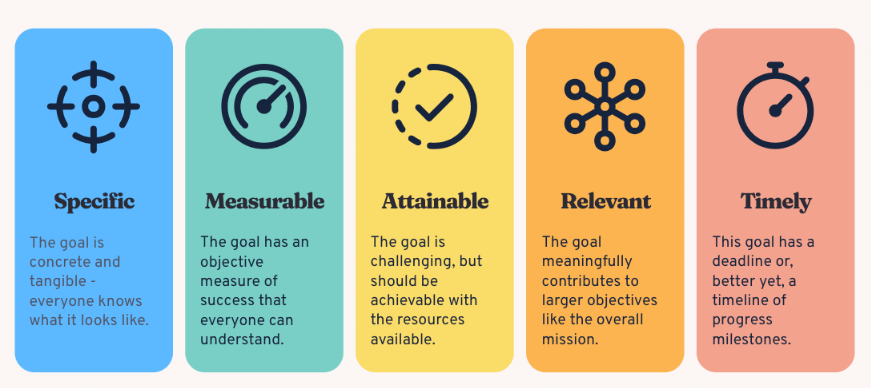
Guiding Values:
Values are the guardrails that protect integrity as you pursue ambitious goals. They act as the final veto when tempting opportunities threaten brand consistency or personal ethics.
1. Extract Core Non-Negotiables: Review peak career moments—when you felt most proud—and crisis moments—when you felt most compromised. Common themes indicate foundational values (e.g., fairness, intellectual honesty, craftsmanship).
2. Define Behavioral Tests: Translate abstract values into observable actions: Integrity – “I disclose conflicts of interest before negotiations”; Service mindset – “I dedicate 10 percent of annual hours to pro-bono consulting.”
3. Stress-Test Values in Edge Cases: Consider scenarios such as aggressive growth targets, lucrative offers from questionable firms, or high-visibility shortcuts. Clarify in advance which compromises are off-limits.
Well-articulated values filter opportunities at speed. They reduce cognitive load when faced with ambiguous choices and signal consistency to mentors, peers, and future collaborators.
Together, purpose, long-horizon outcomes, and guiding values form a personal North Star—a concise narrative that directs development efforts, attracts aligned stakeholders, and sustains resilience when short-term circumstances fluctuate. Subsequent sections will translate this North Star into a strategic skill portfolio, reputation-building tactics, and execution rhythms that compound progress over time.

Strategic Skill Portfolio Development
Personal strategic growth is not simply about accumulating knowledge—it is about making targeted investments in capabilities that enhance adaptability, signal relevance, and expand leadership potential. Just as organizations build portfolios of core and adjacent competencies to remain competitive, individuals benefit from approaching skill development through a deliberate and evolving framework. This section introduces a model that supports continuous upskilling through experiential learning, relationship-based development, and structured capability acceleration.
Core-to-Edge Model:
Strategic individuals cultivate both depth and range by investing in what can be described as a Core-to-Edge skill framework.
• Core Skills represent foundational strengths—the technical, functional, or domain-specific capabilities that form the bedrock of current credibility. For a marketing professional, this may include digital analytics and brand management; for a software engineer, it could be full-stack development and DevOps.
• Edge Skills are the differentiators that extend value beyond conventional boundaries. These may include interdisciplinary knowledge, emerging methodologies, or human-centric competencies. Examples include a data scientist learning storytelling to improve communication with stakeholders, or a finance leader embracing design thinking to co-create with operational teams.
Together, core and edge skills form a strategic profile that is both anchored in expertise and adaptable to evolving contexts.
The key is to periodically audit both domains: ensuring core strengths remain sharp and relevant, while deliberately adding one or two edge capabilities that increase flexibility and market value.
70–20–10 Learning Allocation:
Sustained skill development is most effective when time and effort are distributed across multiple modes of learning. The 70–20–10 model offers a pragmatic allocation:
• 70% Experiential (Stretch Assignments): The majority of growth occurs through doing. This includes taking on stretch projects that push current capabilities, assuming interim roles, piloting new initiatives, or navigating ambiguity in live environments. These experiences simulate real consequences and accelerate both technical mastery and leadership agility.
• 20% Developmental (Mentorship and Coaching): Feedback-rich relationships deepen insight and provide exposure to alternative approaches. This portion includes reverse mentoring, peer exchanges, and structured coaching conversations. Whether formal or informal, these interactions help surface blind spots and catalyze behavior change.
• 10% Formal (Courses and Credentials): Formal learning plays a targeted but important role, especially for foundational theory, frameworks, and certification requirements. This includes online micro-credentials, industry workshops, executive education, or self-paced content. Used wisely, these tools fill specific gaps and validate progress.
Applying this ratio ensures that skill-building remains dynamic, integrated with daily work, and focused on outcomes rather than passive knowledge consumption.
Capability Sprints:
Rather than pursuing diffuse development goals, individuals can adopt Capability Sprints—90-day cycles focused on mastering one high-leverage skill at a time.
Each sprint follows three key principles:
1. Clear Focus: Choose a single capability aligned with strategic intent—such as “negotiation,” “Python for automation,” or “public speaking.” Ensure the choice reflects either a core deepening need or an edge expansion opportunity.
2. Defined Deliverables: Anchor the sprint in tangible outputs: build a portfolio case study, earn a certification, deliver an internal training, or publish an article. These milestones provide structure, motivation, and a public marker of progress.
3. Midpoint and Final Reflection: At weeks 6 and 12, conduct self-assessments or gather feedback to evaluate improvement, solidify learning, and refine future sprint planning. This reinforces iteration and turns sprinting into a repeatable practice.
Used continuously, capability sprints create a rhythm of growth. They also combat the stagnation that often follows sporadic or unstructured development efforts.
Together, the Core-to-Edge model, 70–20–10 allocation, and capability sprints create a compound development engine. They encourage deliberate skill stacking, embed learning in context, and foster a mindset of continuous adaptability—attributes essential for those seeking to lead, influence, and differentiate in fast-evolving environments.
Next, the manual turns to personal brand building, exploring how strategically curated capabilities are communicated, signaled, and recognized in broader professional ecosystems.

Strategic Networking and Relationship Capital
In an increasingly interconnected professional landscape, success rarely hinges on individual brilliance alone. Influence, access, and impact often stem from the strength and quality of one’s relationships. Strategic thinkers recognize that relationship capital—the trust, goodwill, and shared knowledge embedded in one’s network—is a critical multiplier of opportunity. Whether seeking new roles, exploring ideas, or navigating complex challenges, well-tended networks act as amplifiers and accelerators.
Strategic networking goes beyond superficial contact-building. It involves deliberate mapping, reciprocal contribution, and thoughtful cultivation of both advisory and advocacy relationships. The goal is to create an ecosystem that both supports growth and expands influence across contexts.
Ecosystem Mapping:
Effective network development begins with clarity. Ecosystem mapping is the process of identifying, categorizing, and evaluating the relationships that currently shape one’s strategic environment.
This mapping exercise typically includes several key clusters:
• Industry Peers – Individuals operating at similar career levels within the same sector or function. These relationships foster benchmarking, shared learning, and informal mentoring.
• Domain Experts – Specialists whose insights provide technical or conceptual depth. They are valuable for navigating complexity or anticipating changes in areas such as data science, regulation, or sustainability.
• Thought-Leaders and Influencers – Public voices who shape discourse within or across industries. Following and engaging with them helps maintain relevance and broadens strategic horizon scanning.
• Cross-Sector Connectors – Individuals who bridge different fields, offering fresh perspectives and potential for hybrid innovation. These may include entrepreneurs, policy experts, or creatives.
Once identified, the next step is to assess the strength of each tie: strong (frequent, trust-based), moderate (occasional, collaborative), or weak (loose, transactional). Weak ties, while often underestimated, can be a powerful source of novel information and opportunity when nurtured strategically.
Give-to-Get Principle:
Relationship capital grows through reciprocity. A strategic approach to networking begins with value contribution—the principle of offering before asking.
This can take many forms:
• Insights – Sharing timely articles, trend analysis, or personal reflections tailored to the contact’s interest.
• Introductions – Connecting peers who may benefit from knowing each other, especially across industries or roles.
• Problem-Solving – Offering input on a challenge or co-developing solutions, particularly when there is no immediate return.
By becoming a net contributor to one’s network, trust deepens, goodwill accrues, and reputational capital compounds. This positions the individual as a hub of value, not merely a node of contact. Strategic givers also tend to attract like-minded collaborators, creating higher-quality and more resilient networks over time.
Mentor–Sponsor Distinction:
Within a network, two particularly influential roles are often conflated but are strategically distinct: mentors and sponsors.
• Mentors offer guidance. They help individuals navigate decisions, reflect on experiences, and build clarity around personal goals. Mentoring relationships often grow organically and focus on development.
• Sponsors, by contrast, use their influence to actively advocate for opportunities. They speak on behalf of individuals in rooms they may not yet have access to—during promotion discussions, high-profile assignments, or external nominations.
Strategic individuals cultivate both relationships, ensuring that they span diverse perspectives, organizational functions, and hierarchical levels. While mentors help one think differently, sponsors help one move differently—unlocking platforms that would otherwise remain inaccessible.
It is also important to reciprocate sponsorship and mentoring when possible. Over time, those who give support are more likely to receive it in return, building a virtuous cycle of mutual advancement.
Together, ecosystem mapping, value-first engagement, and purposeful relationship cultivation enable the transformation of networks into strategic assets. Relationship capital is not merely a career lubricant—it is an amplifier of learning, innovation, and visibility. As the manual progresses to examine strategic signaling and personal brand positioning, these networks become critical conduits through which one’s value is recognized, multiplied, and mobilized.

Personal Branding and Thought Leadership
A strategic skill portfolio and strong network create potential; personal branding and thought leadership convert that potential into visible market value. By shaping perceptions, attracting opportunities, and influencing conversations, a well-crafted personal brand positions an individual as a trusted authority rather than a commodity player. Thought leadership extends this impact: it moves a professional from reacting to trends to actively defining them. Together, branding and thought leadership make capability and credibility unmistakable to employers, clients, and collaborators.
Narrative Architecture:
A powerful brand starts with a coherent storyline that weaves together past achievements, present focus, and future intention. This narrative should:
1. Highlight Signature Moments – Identify pivotal experiences that showcase distinctive strengths or values (e.g., leading a turnaround, launching a social-impact initiative).
2. Connect to Current Focus – Bridge those experiences to what you do today, establishing continuity and relevance.
3. Project Forward – Articulate the direction you are heading and the value you aim to create in the next three to five years.
Consistency across touchpoints fortifies authenticity. The language on résumés, LinkedIn profiles, conference bios, and public speaking engagements should reinforce the same core message—adapted for audience and platform, but unmistakably yours. Use a concise headline or positioning statement (e.g., “Translating complex data into ethical, revenue-driving decisions”) to anchor every introduction.
A well-structured narrative does more than inform; it evokes trust by clarifying identity and purpose, making it easier for others to champion your cause, refer opportunities, and recall your expertise.
Content Leverage:
Thought leadership transforms domain insight into shareable value. Publishing ideas demonstrates competence, clarifies thinking, and attracts like-minded peers. A strategic content plan addresses three dimensions:
• Topic Selection – Focus on pain points that intersect market demand with personal conviction. For instance, a cybersecurity specialist might publish on data-privacy strategy for small enterprises—an area rich with need and aligned to expertise.
• Medium Diversity – Articles establish depth, podcasts foster conversation, short-form posts sustain visibility, and open-source contributions (code, templates, datasets) build community goodwill. Repurpose long content into micro-pieces to increase reach without diluting focus.
• Cadence and Quality – Aim for regularity (monthly substantive pieces, weekly insights) and maintain high editorial standards. Original data, case examples, and actionable frameworks outperform generic commentary.
Each publication serves dual goals: inform the audience and reinforce your narrative architecture. Over time, a body of work becomes a portfolio that signals expertise unequivocally.
Signal Amplification:
Visibility in curated arenas magnifies reputation. Strategic amplification means showing up where your target stakeholders convene—and doing so in ways that echo your brand values.
• Panels & Keynotes – Speaking on niche or emerging topics positions you as a go-to voice. Prepare case-rich stories and actionable takeaways to convert one-time exposure into ongoing interest.
• Hackathons & Labs – Active participation (not just attendance) in problem-solving events demonstrates capability under pressure and collaboration skill—traits highly valued by innovation-driven organizations.
• Advisory & Volunteer Boards – Serving on boards tied to your strategic vision (for example, a sustainability committee if your purpose is green innovation) offers leadership proof points and multiplies high-quality connections.
Tracking results—such as new inquiries, follower growth, or collaboration requests—helps refine where and how to invest visibility efforts. The objective is targeted resonance, not indiscriminate fame.
Through disciplined narrative design, purposeful content creation, and strategic visibility, personal branding and thought leadership elevate an individual from participant to shaper of industry dialogue. These practices compound the effects of earlier sections—capability development and relationship building—by ensuring the market sees, trusts, and values the strategic professional you are deliberately becoming.

Opportunity Scanning and Option Creation
Strategic advantage at the individual level often stems from foresight—the ability to detect emerging trends before they go mainstream and to position oneself accordingly. This skill of “opportunity scanning” transforms uncertainty into possibility. Rather than passively waiting for career changes to unfold, strategic individuals actively curate inputs, test hypotheses, and build flexible paths forward. They behave less like employees on a linear track and more like portfolio managers—experimenting with low-risk ventures, exploring parallel paths, and scaling up only when conviction is earned.
By scanning weak signals, developing option-rich portfolios, and timing moves with discipline, individuals gain the agility to pivot confidently, hedge against disruption, and align with evolving markets.
Weak-Signal Radar:
The earliest signs of opportunity rarely come through formal announcements. Instead, they emerge in anomalies—inconsistencies between what is happening and what was expected. These weak signals can be scattered across sources like startup pitches, policy proposals, early academic papers, niche communities, or speculative investments.
Building a personal information radar involves curating a tailored “information diet” that blends:
• Specialist Newsletters – Subscribe to voices in frontier areas (e.g., synthetic biology, circular economy, decentralized finance).
• Industry Analyst Briefings – Use reports to spot technology adoption curves, talent gaps, or regulatory inflection points.
• Academic and Think-Tank Papers – Monitor emerging disciplines and long-range policy scenarios.
• Online Communities and Conferences – Lurk or engage in professional forums or events where experimentation is discussed before it’s formalized.
The goal is not prediction, but pattern recognition: identifying recurring anomalies that signal shifts in demand, skill relevance, or stakeholder priorities. Keeping a “signal log” (a simple journal or spreadsheet of odd trends and emerging topics) builds this sensitivity over time.
Option Portfolio:
Once weak signals suggest potential directions, the next step is creating options—low-commitment initiatives that can evolve into larger plays if the trend matures. Strategic individuals don’t just watch the future unfold; they prototype their involvement in it.
Examples of personal options include:
• Side Projects – Build a prototype, write a whitepaper, or conduct a pilot in an adjacent space.
• Advisory or Board Roles – Join early-stage ventures or nonprofit boards to build experience in emerging fields.
• Micro-Ventures – Launch low-capital experiments (e.g., a niche podcast, training module, or data product).
• Certifications and Fellowships – Enroll in part-time programs that act as a credentialed foothold in new domains.
Each of these actions keeps multiple pathways open while maintaining manageable opportunity cost. They serve as “real options”: small bets that buy access to a potentially valuable future, without requiring full commitment upfront.
This approach also allows individuals to test:
• Market interest – Is there traction or demand for this capability or perspective?
• Personal fit – Does this direction energize, align with values, and suit long-term goals?
By building a diversified option portfolio, professionals reduce overreliance on any one employer, skillset, or sector—and increase the chance of catching the next wave before it crests.
Timing Framework
Strategic individuals not only scan and explore—they also time their moves using disciplined decision-making. The principle of real-option thinking provides a useful lens:
• Invest small to keep the door open – A three-month side project, weekend course, or part-time collaboration buys optionality without requiring a full pivot.
• Double down when conditions shift – If a signal strengthens (e.g., new regulations, rising client demand, VC funding surge), scale the investment—seek visibility, reallocate time, or change job roles.
• Exit quickly if the thesis breaks – Not all bets succeed. A planned “sunset clause” on efforts ensures energy isn’t wasted chasing fading ideas. Letting go of low-potential directions preserves resources for better-aligned options.
Timing also involves emotional readiness. Being too early may lead to burnout or irrelevance; being too late may mean playing catch-up. Strategic individuals use structured reflection—monthly check-ins, mentor feedback, light journaling—to assess when to pause, pivot, or proceed.
Opportunity scanning and option creation enable individuals to be not just reactive professionals but proactive architects of their careers. With a radar tuned to faint signals, a portfolio of small but strategic ventures, and a framework for acting (or exiting) decisively, they sidestep stagnation and position themselves at the edge of what’s next. These practices—repeated and refined—build enduring adaptability in an uncertain world.

Execution Discipline: Personal OKRs and Kanban
Strategic clarity is only as effective as the discipline that supports its execution. Ambition without action becomes inertia. This is why even the most well-articulated vision and meticulously planned growth pathways require structured follow-through mechanisms to be realized. Just as organizations rely on execution systems to bridge the gap between strategy and outcomes, individuals benefit from lightweight, personal systems that convert insight into consistent progress.
Two particularly effective tools—Objectives and Key Results (OKRs) and Kanban boards—create a rhythm of execution, focus attention on high-value efforts, and offer visibility into work patterns. When supported by a weekly reflection ritual, these tools build a personal operating system that fosters momentum, agility, and learning.
Quarterly OKRs:
OKRs are a goal-setting framework that supports strategic alignment by separating what is to be achieved (the objective) from how progress will be measured (the key results). At the personal level, they anchor everyday tasks in broader ambition, ensuring that action ladders up to long-term vision.
Objectives should be qualitative, inspirational, and directional—for example:
• “Accelerate my presence as a thought leader in data ethics.”
• “Strengthen my cross-functional influence within the organization.”
• “Deepen technical fluency in sustainable product design.”
For each objective, define 3–4 key results that are specific and measurable. These might include:
• “Publish two LinkedIn articles on data privacy by the end of the quarter.”
• “Complete 30 hours of hands-on sustainability training.”
• “Deliver one cross-departmental presentation or workshop.”
Key results can be framed around:
• Learning metrics – Hours invested, certifications completed, books read
• Output milestones – Deliverables produced, presentations given, feedback received
• Outcome indicators – Audience growth, quality scores, strategic impact
By committing to quarterly OKRs, individuals avoid the trap of vague aspiration and instead create time-bound, transparent accountability that supports focused development.
Weekly Kanban:
While OKRs operate at the strategic level, Kanban boards manage execution at the tactical level. Originally developed in manufacturing and now widely used in project management, Kanban is a visual workflow tool that supports clarity, flow, and momentum.
A personal Kanban board typically has three columns:
• To-Do – Tasks identified for the upcoming week or sprint
• Doing – Tasks currently in active progress
• Done – Completed tasks for review and reinforcement
Key principles of effective personal Kanban include:
• Limiting Work in Progress (WIP): Focus on a maximum of 2–3 active tasks at any one time. This reduces context switching and encourages deep work.
• Breaking down large goals: Instead of listing “write industry article,” break it into smaller chunks: research topic, draft outline, write intro, edit draft, publish.
• Color-coding or tagging: Use tags to denote task type (learning, networking, delivery) or priority level to guide daily decisions.
A physical board, digital app (e.g., Trello, Notion, ClickUp), or even a simple whiteboard or sticky notes can serve as a Kanban tool. The key is consistency—maintaining visibility over your workflow prevents drift, procrastination, and overwhelm.
Reflection Rhythm:
Planning and execution are incomplete without periodic reflection. Weekly retrospectives offer a structured moment to pause, evaluate, and recalibrate—ensuring continuous alignment between actions and objectives.
A simple 30-minute check-in can follow a three-part structure:
1. Celebrate Wins – What went well? Which tasks were completed, and what do they signify in terms of progress or learning?
2. Diagnose Blockers – Which tasks lingered in “Doing”? Were they over-scoped, dependent on others, or deprioritized? What does this reveal about current capacity, energy levels, or external friction?
3. Realign and Plan Ahead – Based on this week’s learnings, what should shift in the upcoming week’s to-do list? Are the current OKRs still relevant, or do they require adjustment?
Documenting these insights—even briefly—creates a feedback loop that sharpens self-awareness and enhances execution over time. It also provides a journal of progress that reinforces motivation and builds a record of momentum.
Together, Quarterly OKRs, Weekly Kanban, and a Reflection Rhythm form a personal execution system that brings structure to ambition without suffocating creativity. They offer just enough scaffolding to maintain focus, adapt rapidly, and build strategic resilience through daily practice. Over time, this operational discipline compounds—enabling individuals not only to dream boldly but also to deliver consistently.

Measurement and Course Correction
Execution discipline loses power if it runs on autopilot. Just as organizations require dashboards and steering committees to track strategic performance, individuals need systematic methods to gauge progress, test assumptions, and recalibrate direction. Effective measurement relies on multiple lenses that capture not only output but also learning, influence, and well-being—ensuring success is sustainable rather than pyrrhic. Course correction then transforms raw data into decision points: recommitting, adjusting, or, when warranted, pivoting toward more promising pathways.
Multi-Lens KPIs:
A single metric—promotion, revenue, or publication count—cannot reflect the full arc of personal strategic growth. A balanced portfolio of key performance indicators (KPIs) offers a more nuanced picture, reducing blind spots and promoting long-term resilience.
Four complementary lenses are especially instructive:
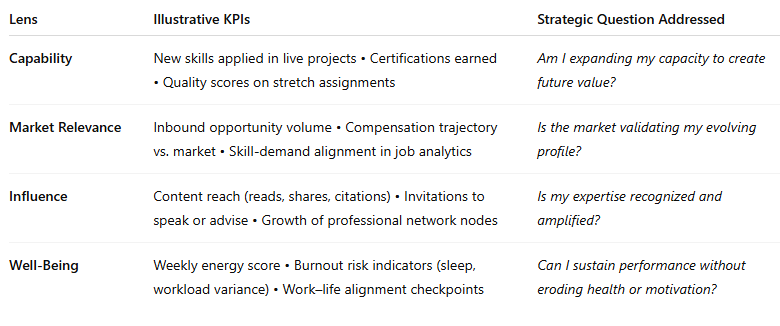
Data sources may include analytics dashboards (LinkedIn, newsletter), learning-management logs, compensation benchmarks, or wearable-tech metrics. By reviewing these indicators monthly, individuals spot early drift—capability stagnation, declining engagement, or rising fatigue—before it compounds.
Quarterly Strategy Review:
Every 90 days, a structured strategy review converts ongoing data into strategic insight. The cadence mirrors organizational OKR cycles and sustains momentum without over-managing.
1. Preparation:
• Collate KPI trends and compare against quarterly OKRs.
• Refresh the personal SWOT with new information from projects, feedback, or market news.
• Summarize major wins, setbacks, and emergent opportunities.
2. Dialogue:
• Invite a trusted peer, mentor, or sponsor to challenge assumptions and surface blind spots.
• Explore three questions: What is working? What is lagging? What has changed in the environment?
3. Realignment:
• Decide whether to maintain, stretch, or retire each objective.
• Update key results to reflect new realities—tighten targets if momentum is strong, recalibrate if barriers persist.
• Log rationale in a decision journal to maintain institutional memory and track learning over time.
A formal but lightweight review maintains strategic coherence and prevents quarter-to-quarter drift.
Pivot Triggers:
Sometimes adjustment is insufficient; strategic context or personal priorities shift so significantly that a pivot—a fundamental change in direction—is warranted. Defining pivot triggers in advance guards against both premature panic and inertia.
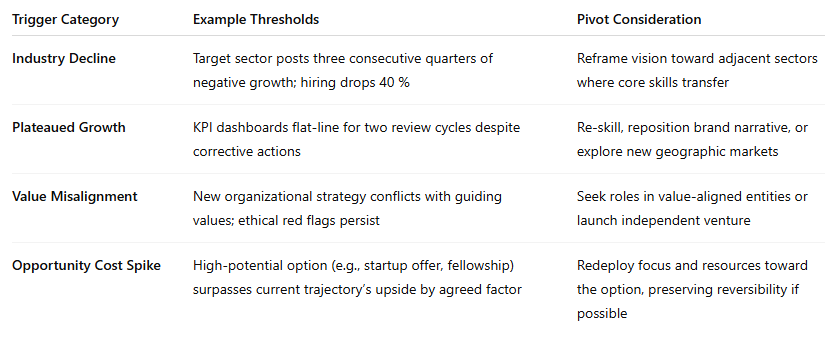
When a trigger threshold is met, initiate a pivot review: revisit purpose statement, reassess option portfolio, and draft a new set of exploratory OKRs. Applying real-option logic—“pause–probe–scale” rather than “burn the boats”—limits downside while enabling decisive movement toward better-aligned opportunities.
By combining multi-lens measurement, disciplined quarterly reviews, and predefined pivot triggers, individuals create a self-correcting navigation system. This infrastructure ensures that personal strategy remains alive—responsive to feedback, resilient to shock, and relentlessly tuned to the evolving landscape of aspiration and opportunity.

Case Study: Mary Barra- Engineering a Personal Strategic Trajectory
Mary Barra began her General Motors career at 18 as a co-op student on a Pontiac assembly line. Over three decades, she deliberately expanded her capability portfolio—earning an MBA, leading manufacturing, running HR—to gain cross-functional fluency. Barra cultivated sponsors who observed her operational rigor and customer-centric mindset. In 2014, she became GM’s first female CEO amid an ignition-switch crisis. Drawing on a personal vision to “earn customers for life,” she pursued aggressive electric-vehicle investment, shedding legacy business lines and forging tech partnerships. Barra’s path illustrates how sustained strategic thinking—skill breadth, network depth, and values consistency—can propel an individual from entry-level to industry-shaping leadership.

Exercise 1.12: Personal Strategy Canvas
Project Studies
Project Study (Part 1) – Customer Service
The Head of this Department is to provide a detailed report relating to the Strategy Matters process that has been implemented within their department, together with all key stakeholders, as a result of conducting this workshop, incorporating process: planning; development; implementation; management; and review. Your process should feature the following 12 parts:
01. What Mastering Strategy Is All About
02. Thinking Strategically
03. Benefits of a Strategic Approach
04. Strategic Enablers
05. The Cost of Bad Strategy
06. Case Study – Strategy in Action
07. Strategic Leadership in Practice
08. Core Strategic Tools Overview
09. Aligning Strategy with Vision and Values
10. Strategy Simulation Exercise – Market Disruption
11. Getting It Done
12. Your Personal Strategic Edge
Please include the results of the initial evaluation and assessment.
Project Study (Part 2) – E-Business
The Head of this Department is to provide a detailed report relating to the Strategy Matters process that has been implemented within their department, together with all key stakeholders, as a result of conducting this workshop, incorporating process: planning; development; implementation; management; and review. Your process should feature the following 12 parts:
01. What Mastering Strategy Is All About
02. Thinking Strategically
03. Benefits of a Strategic Approach
04. Strategic Enablers
05. The Cost of Bad Strategy
06. Case Study – Strategy in Action
07. Strategic Leadership in Practice
08. Core Strategic Tools Overview
09. Aligning Strategy with Vision and Values
10. Strategy Simulation Exercise – Market Disruption
11. Getting It Done
12. Your Personal Strategic Edge
Please include the results of the initial evaluation and assessment.
Project Study (Part 3) – Finance
The Head of this Department is to provide a detailed report relating to the Strategy Matters process that has been implemented within their department, together with all key stakeholders, as a result of conducting this workshop, incorporating process: planning; development; implementation; management; and review. Your process should feature the following 12 parts:
01. What Mastering Strategy Is All About
02. Thinking Strategically
03. Benefits of a Strategic Approach
04. Strategic Enablers
05. The Cost of Bad Strategy
06. Case Study – Strategy in Action
07. Strategic Leadership in Practice
08. Core Strategic Tools Overview
09. Aligning Strategy with Vision and Values
10. Strategy Simulation Exercise – Market Disruption
11. Getting It Done
12. Your Personal Strategic Edge
Please include the results of the initial evaluation and assessment.
Project Study (Part 4) – Globalization
The Head of this Department is to provide a detailed report relating to the Strategy Matters process that has been implemented within their department, together with all key stakeholders, as a result of conducting this workshop, incorporating process: planning; development; implementation; management; and review. Your process should feature the following 12 parts:
01. What Mastering Strategy Is All About
02. Thinking Strategically
03. Benefits of a Strategic Approach
04. Strategic Enablers
05. The Cost of Bad Strategy
06. Case Study – Strategy in Action
07. Strategic Leadership in Practice
08. Core Strategic Tools Overview
09. Aligning Strategy with Vision and Values
10. Strategy Simulation Exercise – Market Disruption
11. Getting It Done
12. Your Personal Strategic Edge
Please include the results of the initial evaluation and assessment.
Project Study (Part 5) – Human Resources
The Head of this Department is to provide a detailed report relating to the Strategy Matters process that has been implemented within their department, together with all key stakeholders, as a result of conducting this workshop, incorporating process: planning; development; implementation; management; and review. Your process should feature the following 12 parts:
01. What Mastering Strategy Is All About
02. Thinking Strategically
03. Benefits of a Strategic Approach
04. Strategic Enablers
05. The Cost of Bad Strategy
06. Case Study – Strategy in Action
07. Strategic Leadership in Practice
08. Core Strategic Tools Overview
09. Aligning Strategy with Vision and Values
10. Strategy Simulation Exercise – Market Disruption
11. Getting It Done
12. Your Personal Strategic Edge
Please include the results of the initial evaluation and assessment.
Project Study (Part 6) – Information Technology
The Head of this Department is to provide a detailed report relating to the Strategy Matters process that has been implemented within their department, together with all key stakeholders, as a result of conducting this workshop, incorporating process: planning; development; implementation; management; and review. Your process should feature the following 12 parts:
01. What Mastering Strategy Is All About
02. Thinking Strategically
03. Benefits of a Strategic Approach
04. Strategic Enablers
05. The Cost of Bad Strategy
06. Case Study – Strategy in Action
07. Strategic Leadership in Practice
08. Core Strategic Tools Overview
09. Aligning Strategy with Vision and Values
10. Strategy Simulation Exercise – Market Disruption
11. Getting It Done
12. Your Personal Strategic Edge
Please include the results of the initial evaluation and assessment.
Project Study (Part 7) – Legal
The Head of this Department is to provide a detailed report relating to the Strategy Matters process that has been implemented within their department, together with all key stakeholders, as a result of conducting this workshop, incorporating process: planning; development; implementation; management; and review. Your process should feature the following 12 parts:
01. What Mastering Strategy Is All About
02. Thinking Strategically
03. Benefits of a Strategic Approach
04. Strategic Enablers
05. The Cost of Bad Strategy
06. Case Study – Strategy in Action
07. Strategic Leadership in Practice
08. Core Strategic Tools Overview
09. Aligning Strategy with Vision and Values
10. Strategy Simulation Exercise – Market Disruption
11. Getting It Done
12. Your Personal Strategic Edge
Please include the results of the initial evaluation and assessment.
Project Study (Part 8) – Management
The Head of this Department is to provide a detailed report relating to the Strategy Matters process that has been implemented within their department, together with all key stakeholders, as a result of conducting this workshop, incorporating process: planning; development; implementation; management; and review. Your process should feature the following 12 parts:
01. What Mastering Strategy Is All About
02. Thinking Strategically
03. Benefits of a Strategic Approach
04. Strategic Enablers
05. The Cost of Bad Strategy
06. Case Study – Strategy in Action
07. Strategic Leadership in Practice
08. Core Strategic Tools Overview
09. Aligning Strategy with Vision and Values
10. Strategy Simulation Exercise – Market Disruption
11. Getting It Done
12. Your Personal Strategic Edge
Please include the results of the initial evaluation and assessment.
Project Study (Part 9) – Marketing
The Head of this Department is to provide a detailed report relating to the Strategy Matters process that has been implemented within their department, together with all key stakeholders, as a result of conducting this workshop, incorporating process: planning; development; implementation; management; and review. Your process should feature the following 12 parts:
01. What Mastering Strategy Is All About
02. Thinking Strategically
03. Benefits of a Strategic Approach
04. Strategic Enablers
05. The Cost of Bad Strategy
06. Case Study – Strategy in Action
07. Strategic Leadership in Practice
08. Core Strategic Tools Overview
09. Aligning Strategy with Vision and Values
10. Strategy Simulation Exercise – Market Disruption
11. Getting It Done
12. Your Personal Strategic Edge
Please include the results of the initial evaluation and assessment.

Project Study (Part 10) – Production
The Head of this Department is to provide a detailed report relating to the Strategy Matters process that has been implemented within their department, together with all key stakeholders, as a result of conducting this workshop, incorporating process: planning; development; implementation; management; and review. Your process should feature the following 12 parts:
01. What Mastering Strategy Is All About
02. Thinking Strategically
03. Benefits of a Strategic Approach
04. Strategic Enablers
05. The Cost of Bad Strategy
06. Case Study – Strategy in Action
07. Strategic Leadership in Practice
08. Core Strategic Tools Overview
09. Aligning Strategy with Vision and Values
10. Strategy Simulation Exercise – Market Disruption
11. Getting It Done
12. Your Personal Strategic Edge
Please include the results of the initial evaluation and assessment.

Project Study (Part 11) – Logistics
The Head of this Department is to provide a detailed report relating to the Strategy Matters process that has been implemented within their department, together with all key stakeholders, as a result of conducting this workshop, incorporating process: planning; development; implementation; management; and review. Your process should feature the following 12 parts:
01. What Mastering Strategy Is All About
02. Thinking Strategically
03. Benefits of a Strategic Approach
04. Strategic Enablers
05. The Cost of Bad Strategy
06. Case Study – Strategy in Action
07. Strategic Leadership in Practice
08. Core Strategic Tools Overview
09. Aligning Strategy with Vision and Values
10. Strategy Simulation Exercise – Market Disruption
11. Getting It Done
12. Your Personal Strategic Edge
Please include the results of the initial evaluation and assessment.

Project Study (Part 12) – Education
The Head of this Department is to provide a detailed report relating to the Strategy Matters process that has been implemented within their department, together with all key stakeholders, as a result of conducting this workshop, incorporating process: planning; development; implementation; management; and review. Your process should feature the following 12 parts:
01. What Mastering Strategy Is All About
02. Thinking Strategically
03. Benefits of a Strategic Approach
04. Strategic Enablers
05. The Cost of Bad Strategy
06. Case Study – Strategy in Action
07. Strategic Leadership in Practice
08. Core Strategic Tools Overview
09. Aligning Strategy with Vision and Values
10. Strategy Simulation Exercise – Market Disruption
11. Getting It Done
12. Your Personal Strategic Edge
Please include the results of the initial evaluation and assessment.
Program Benefits
Management
- Shared Vision
- Strategic Direction
- Leadership Effectiveness
- Engaged Employees
- Preferred Employer
- Cultural Alignment
- Informed Decision-Making
- Greater Accountability
- Change Management
- Effective Collaboration
Finance
- Risk Mitigation
- Greater Predictability
- Value Creation
- Cost Control
- Benchmark Performance
- Performance Improvement
- Return On Investment
- Shareholder Value
- Capital Allocation
- Investor Confidence
Marketing
- Brand Clarity
- Informed Decision-Making
- Market Positioning
- Competitive Advantage
- Sales Support
- Improved Coordination
- Greater Agility
- Customer Experience
- Value Proposition
- Goal Alignment
Client Telephone Conference (CTC)
If you have any questions or if you would like to arrange a Client Telephone Conference (CTC) to discuss this particular Unique Consulting Service Proposition (UCSP) in more detail, please CLICK HERE.
